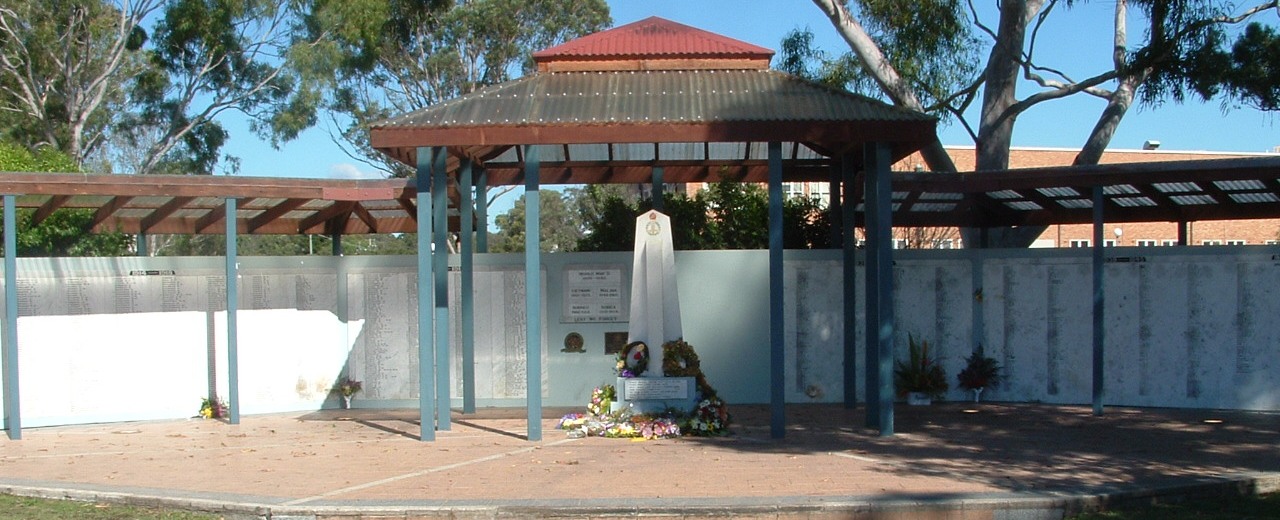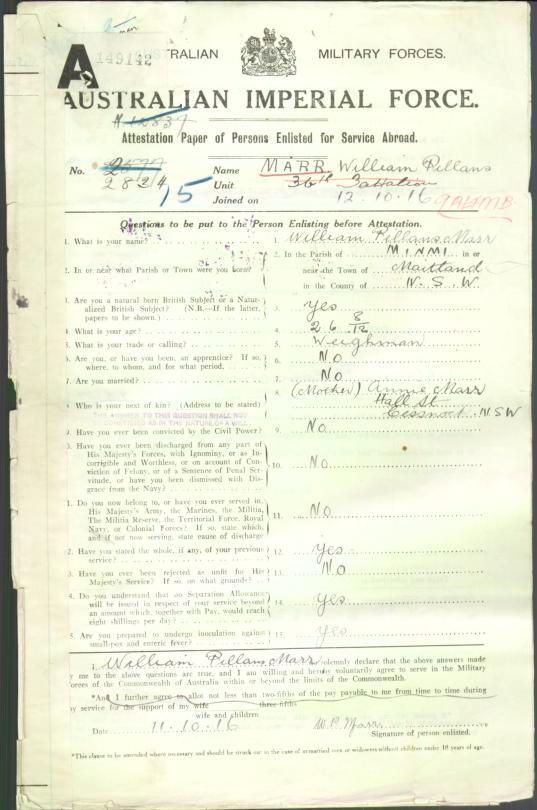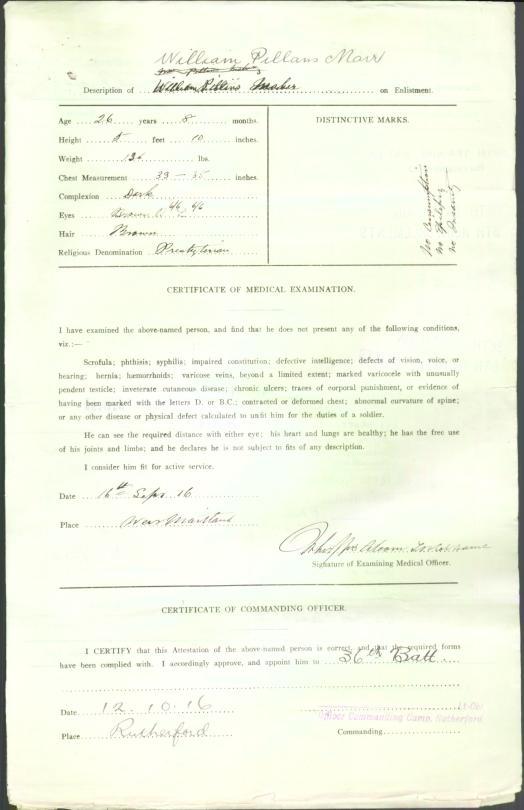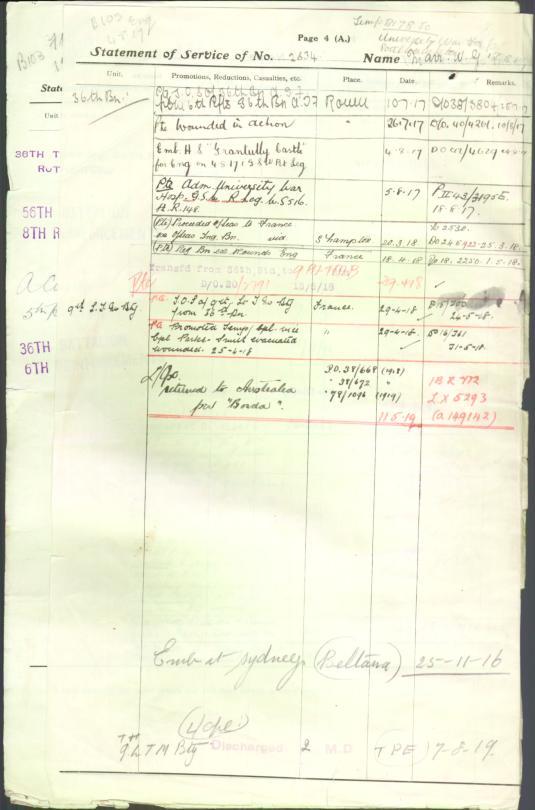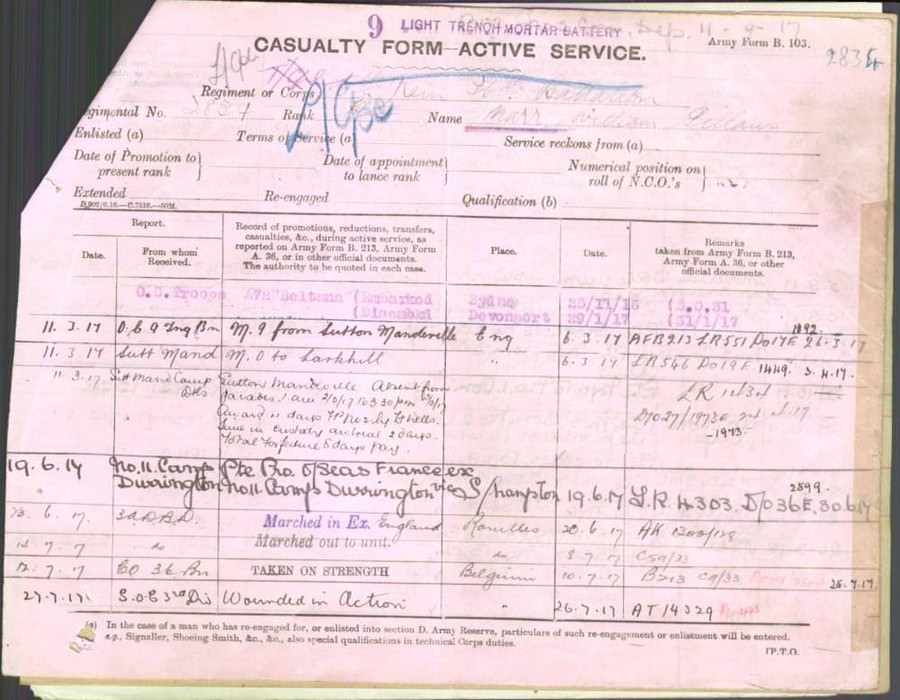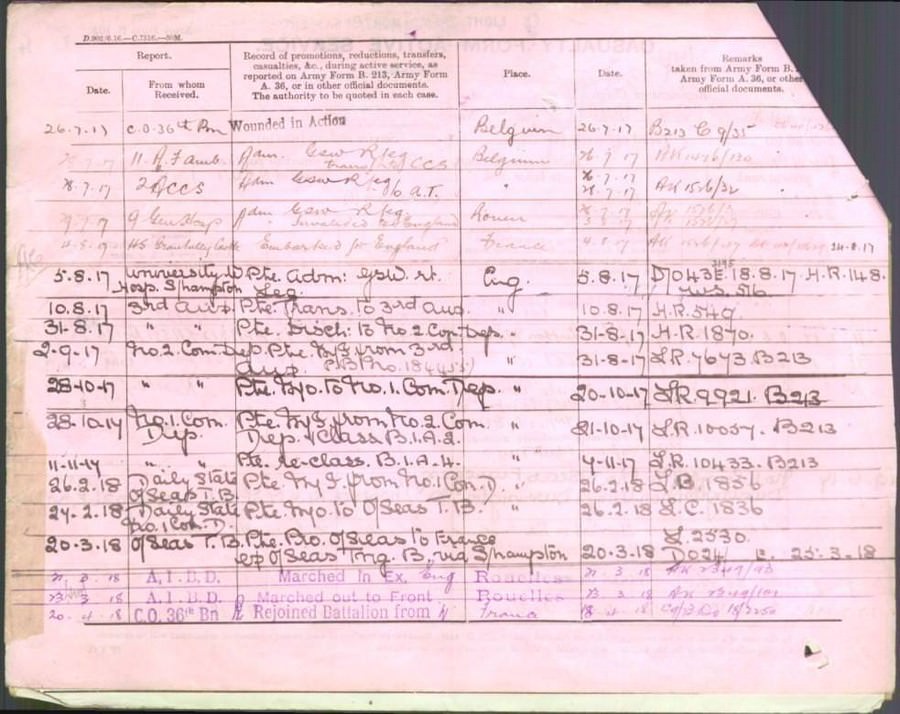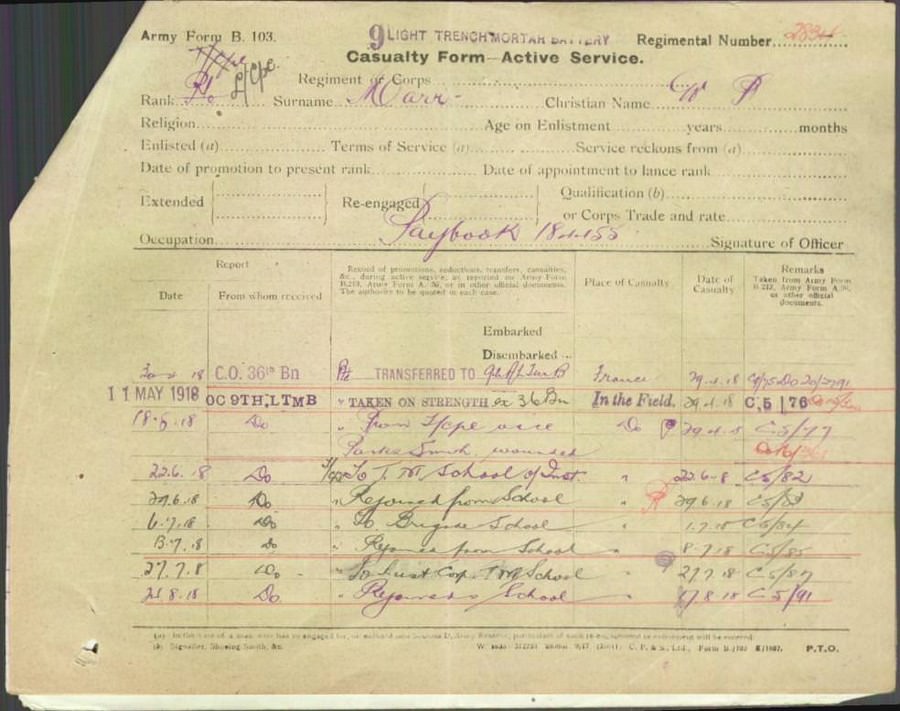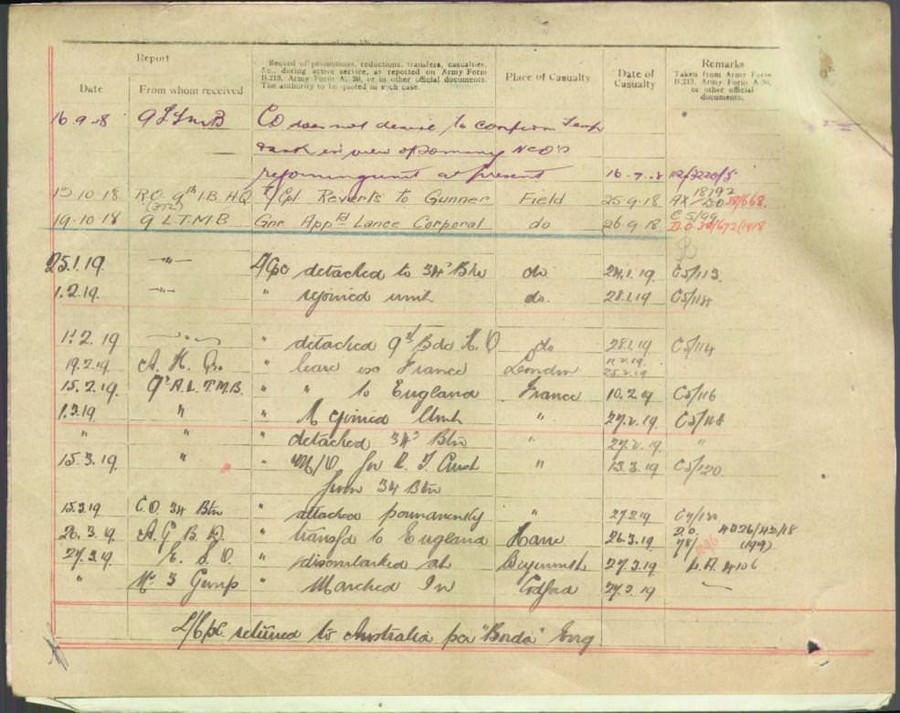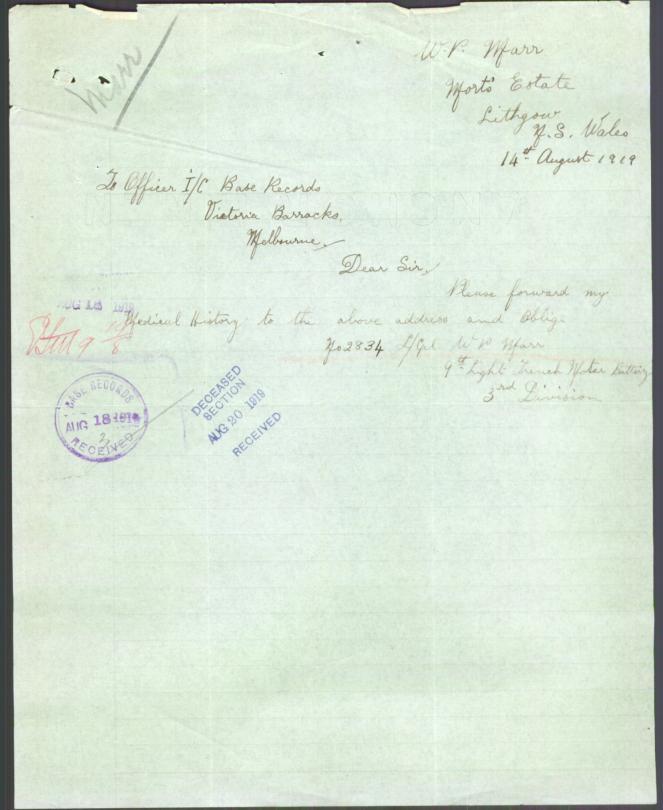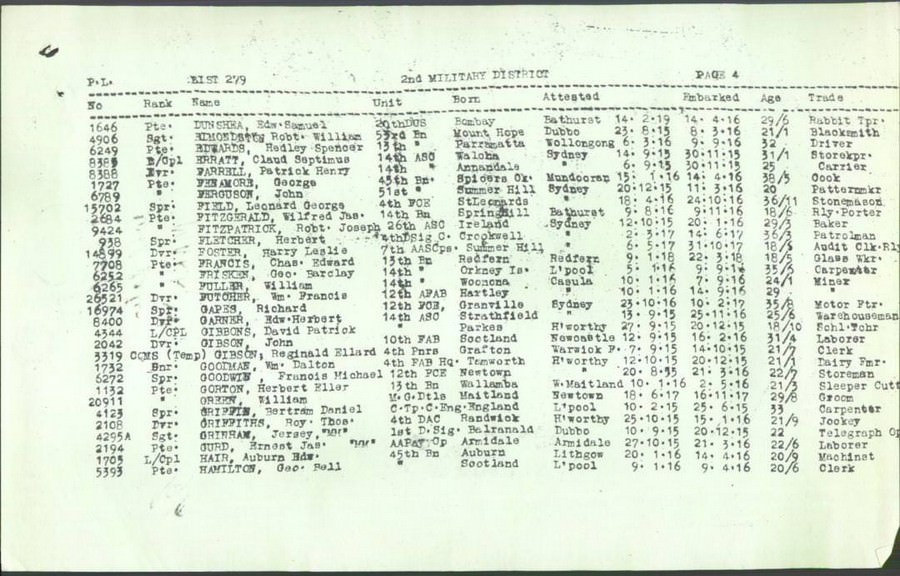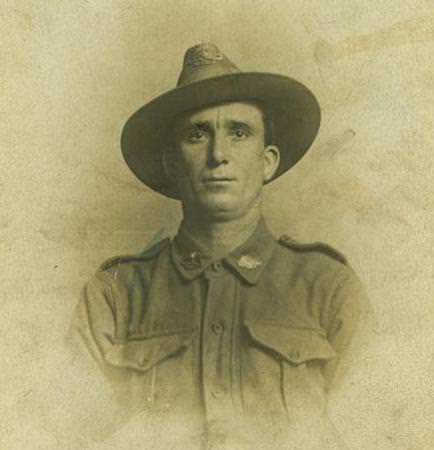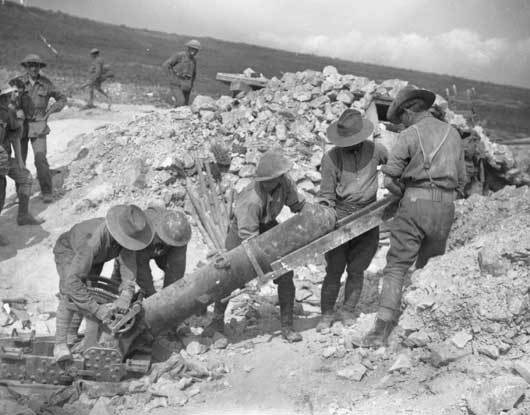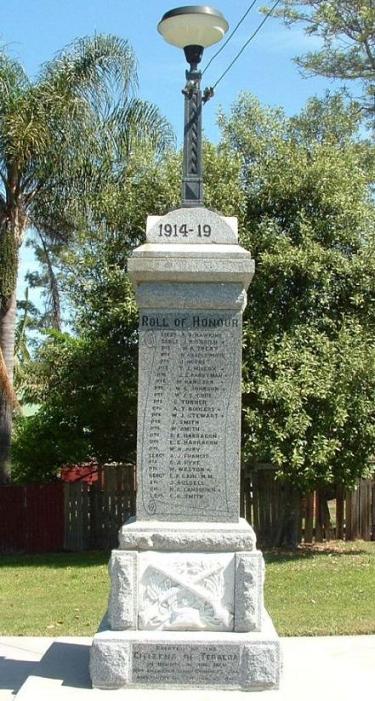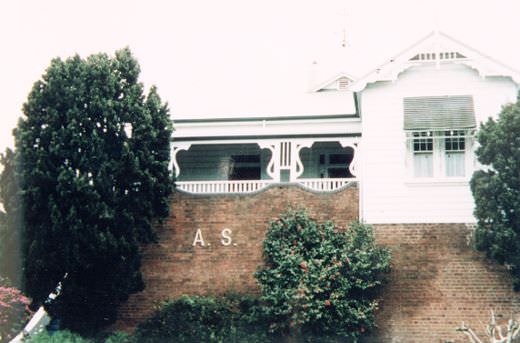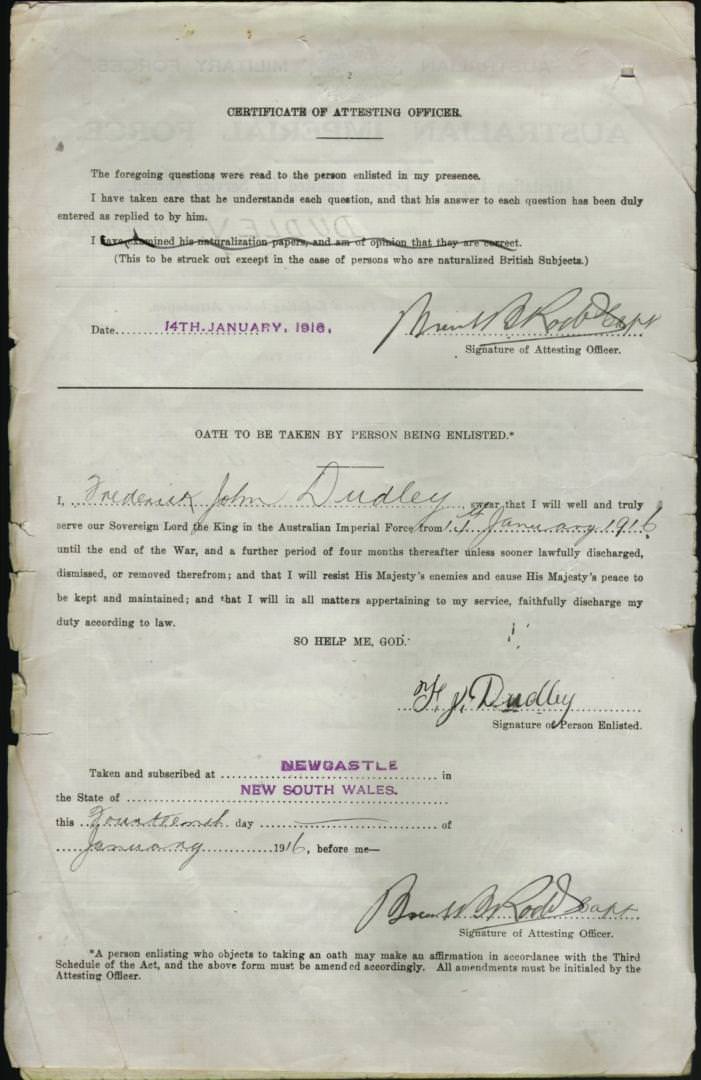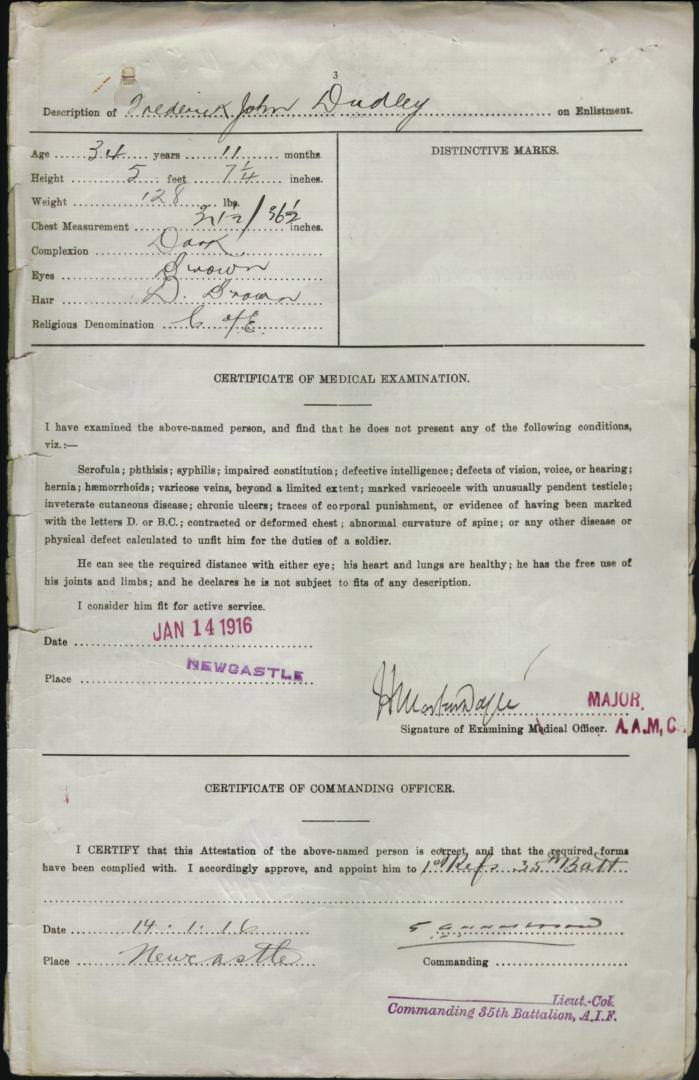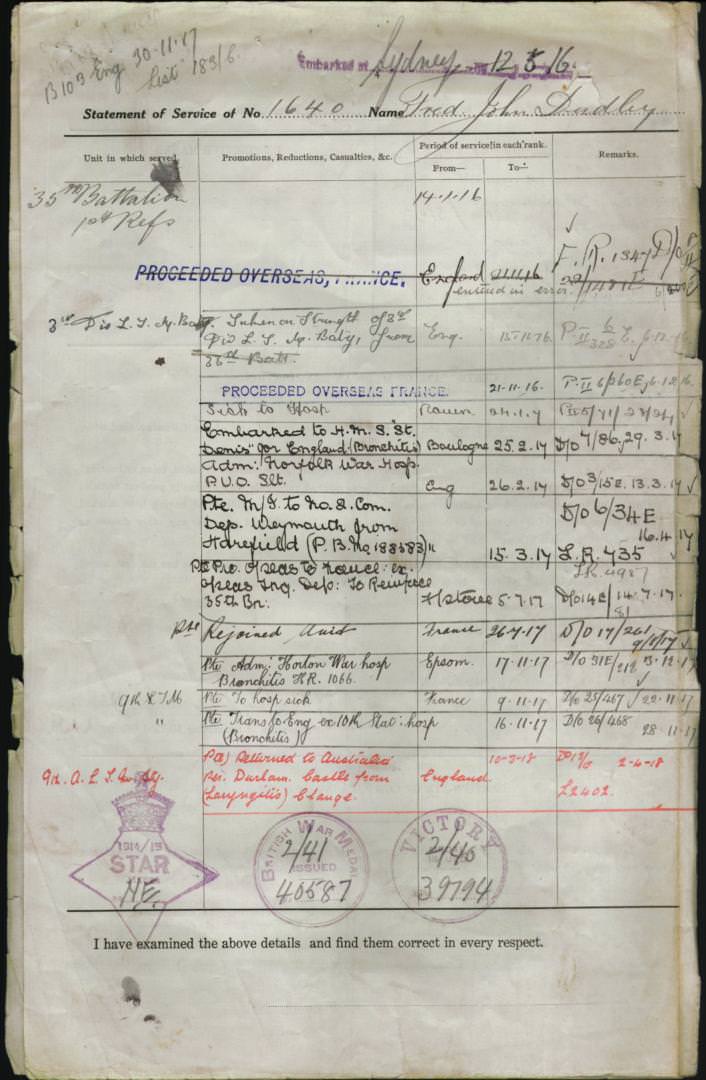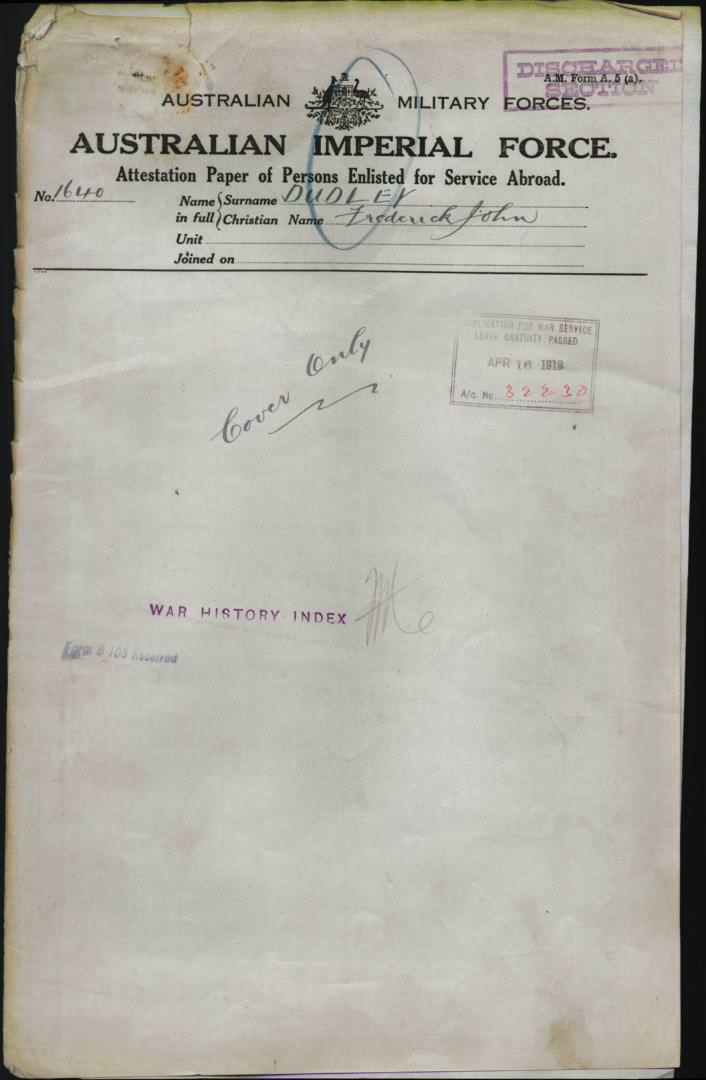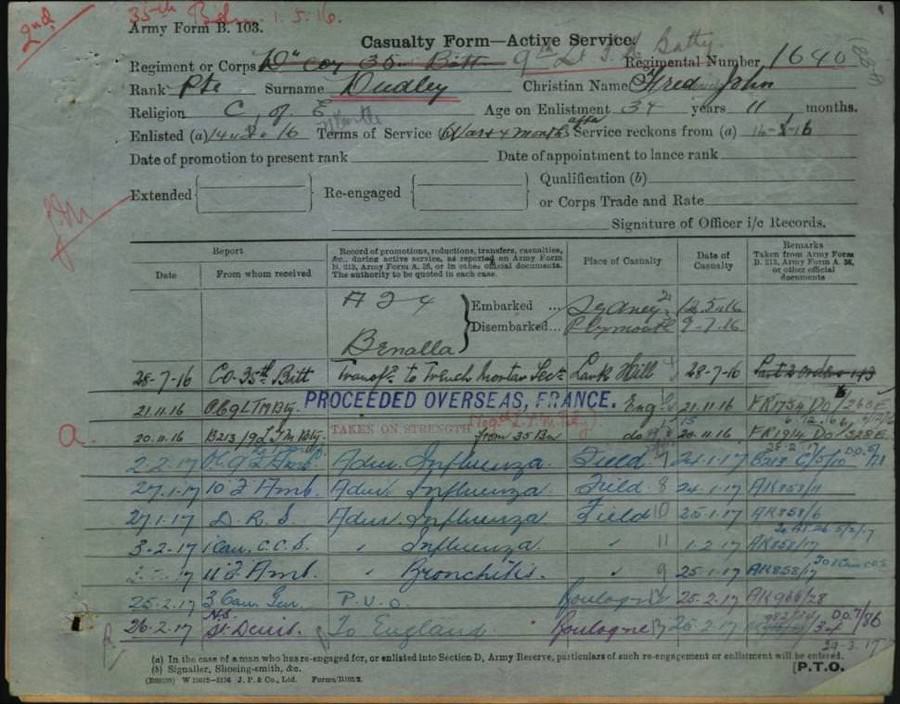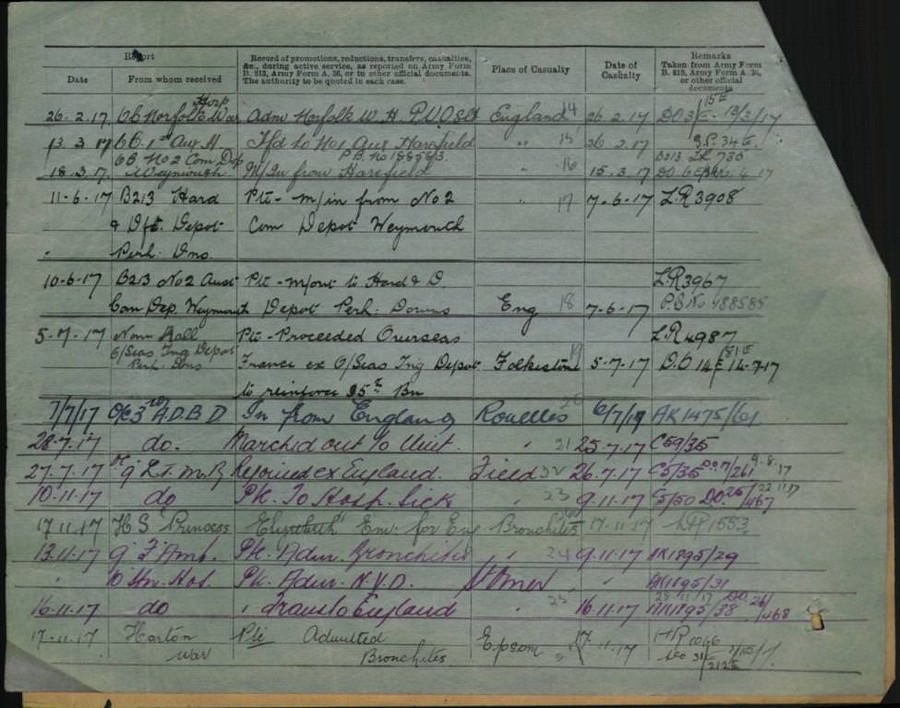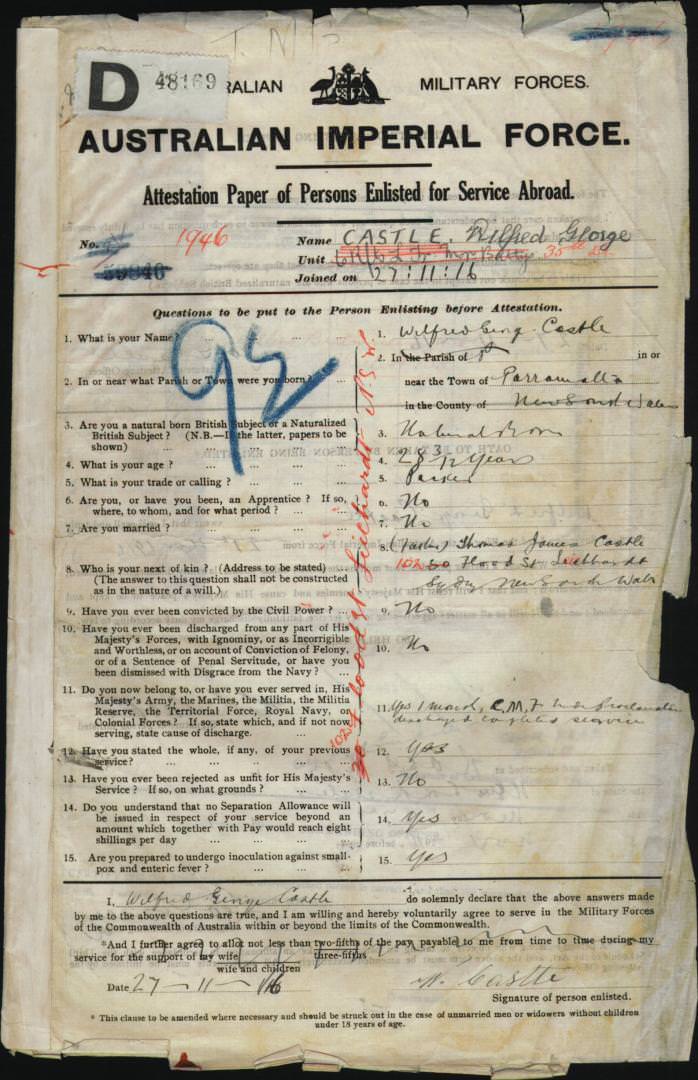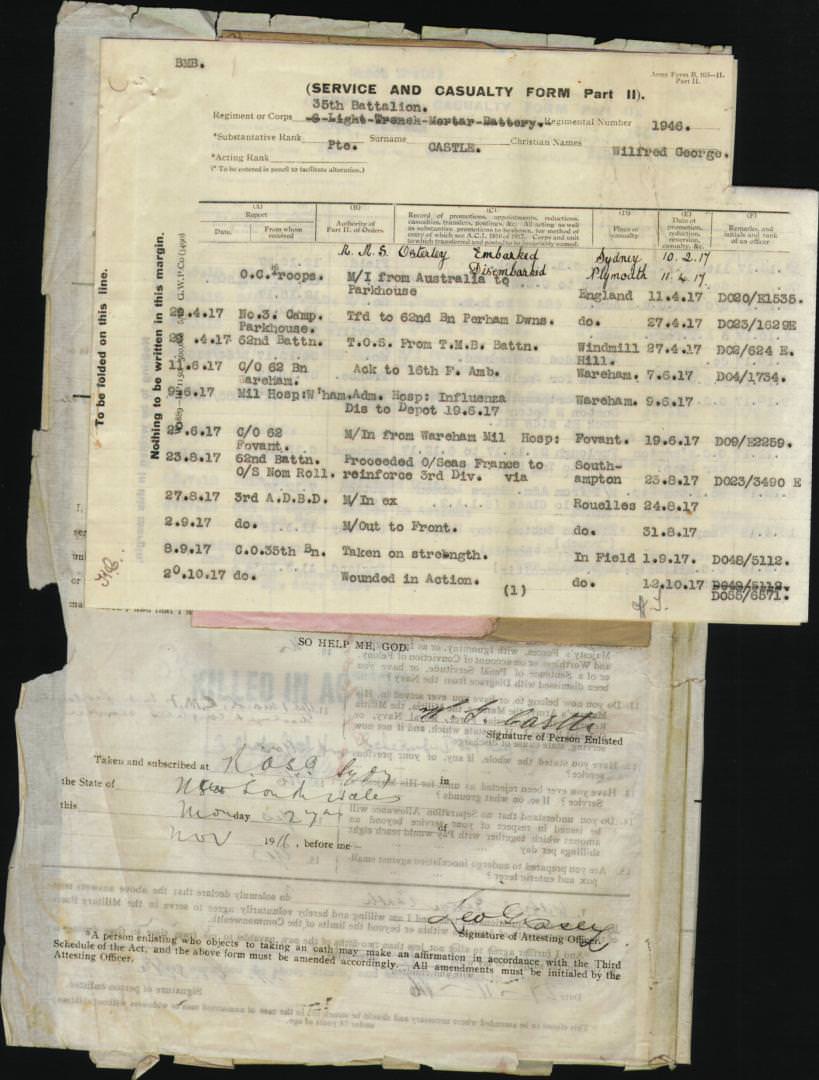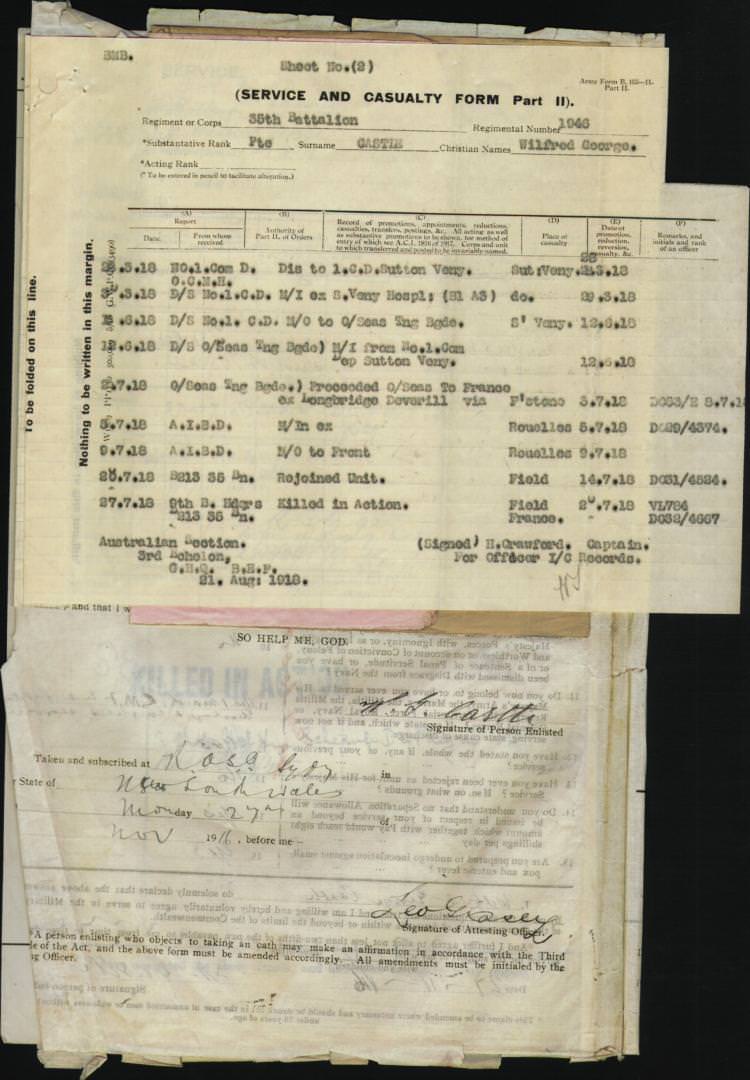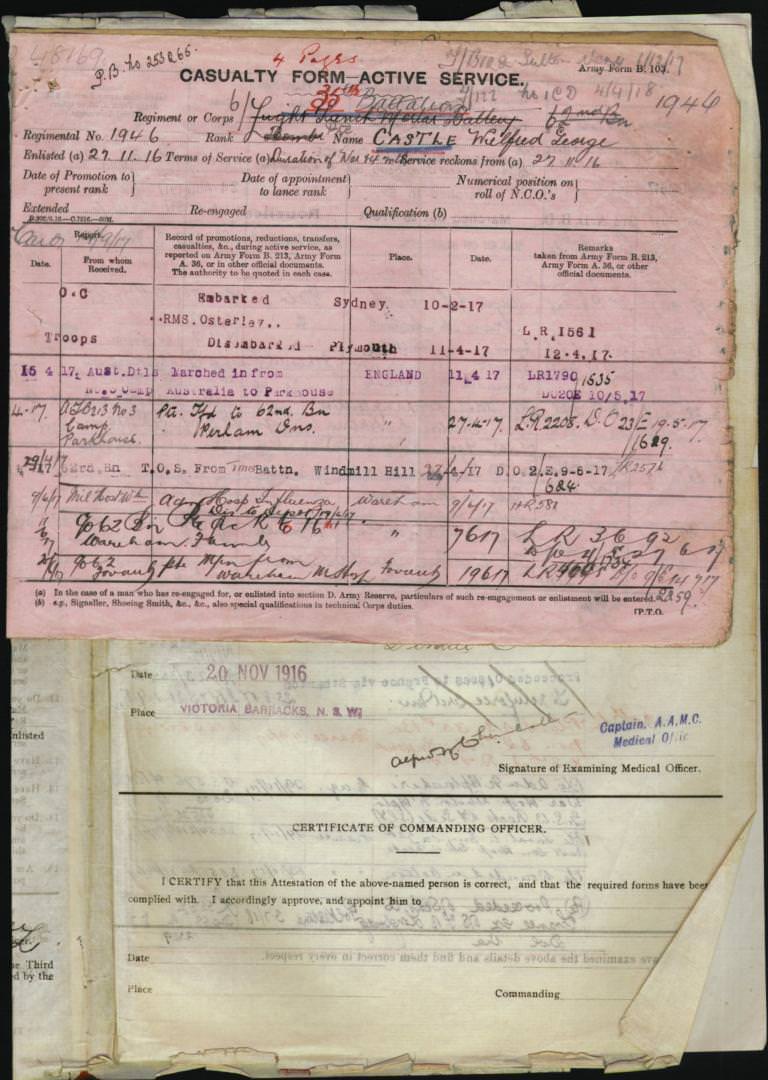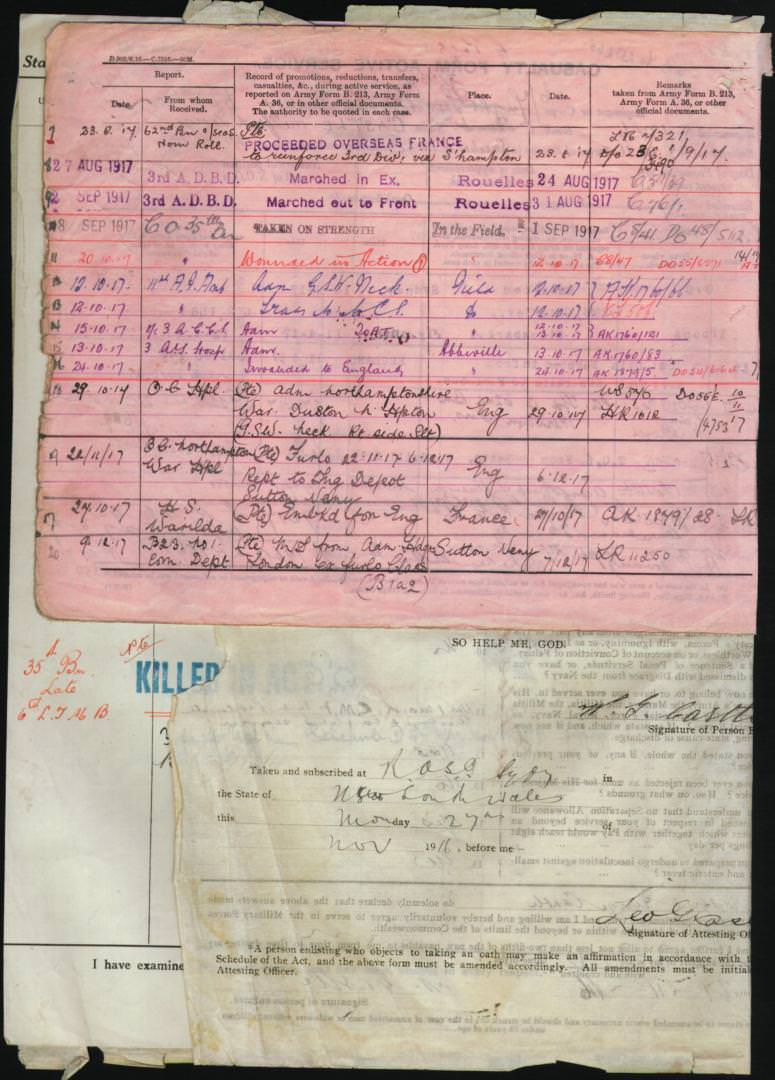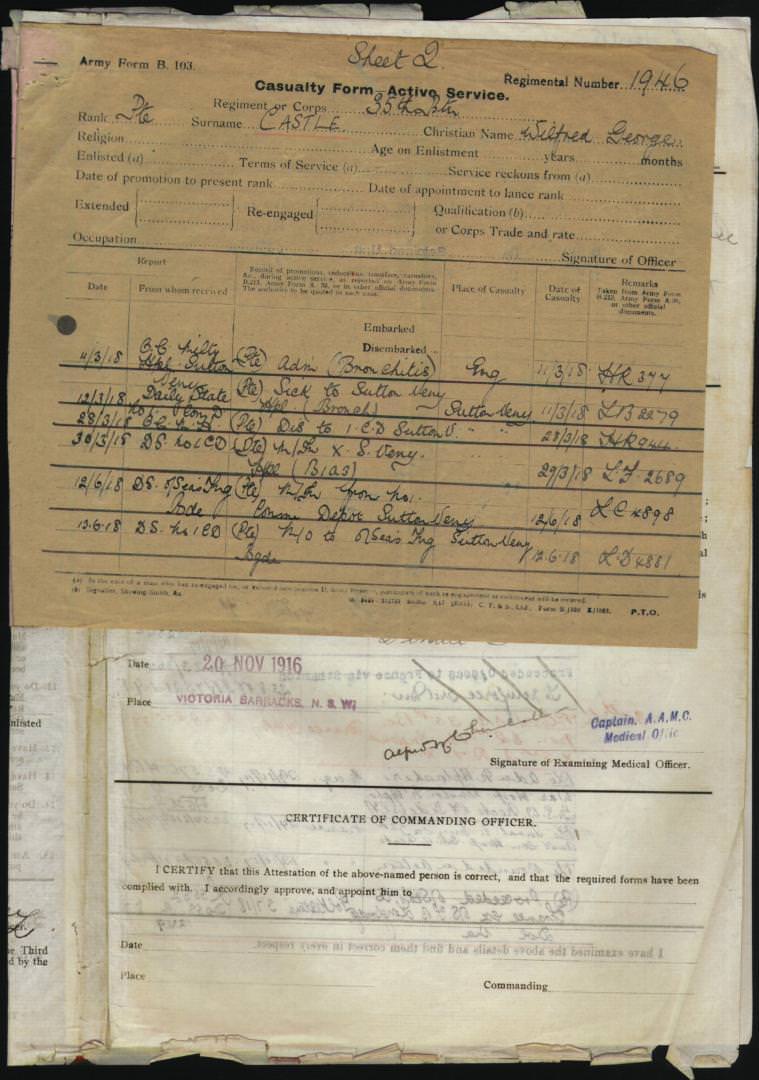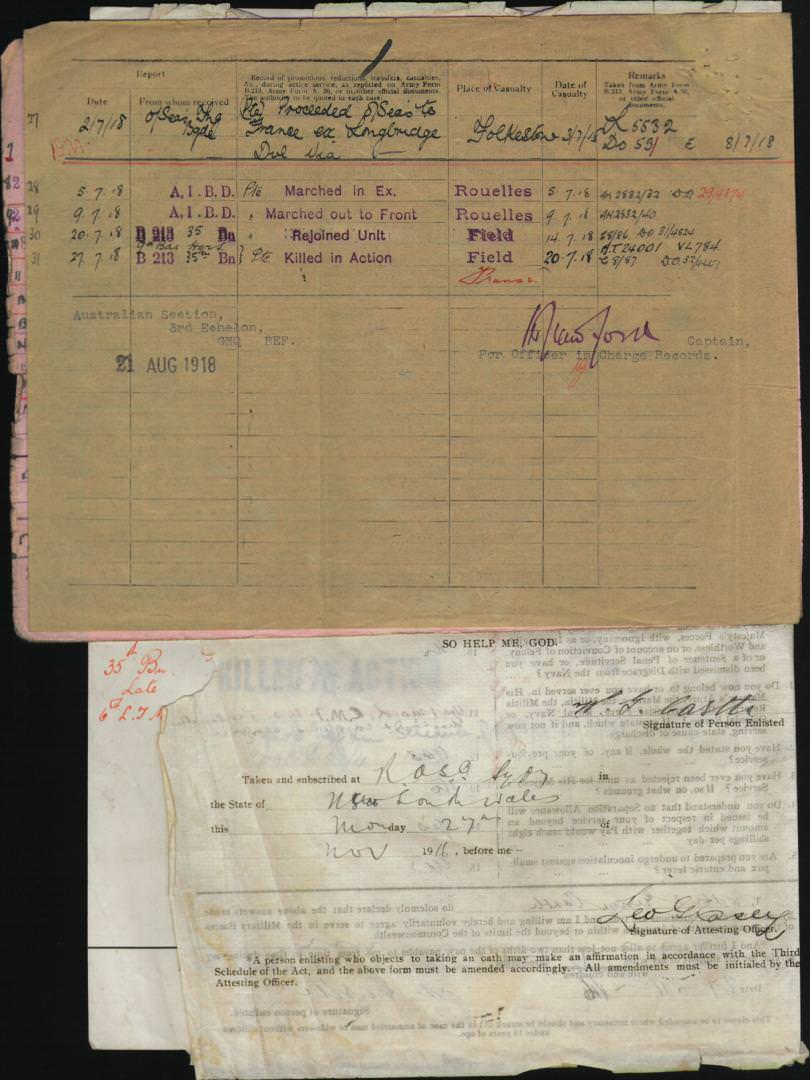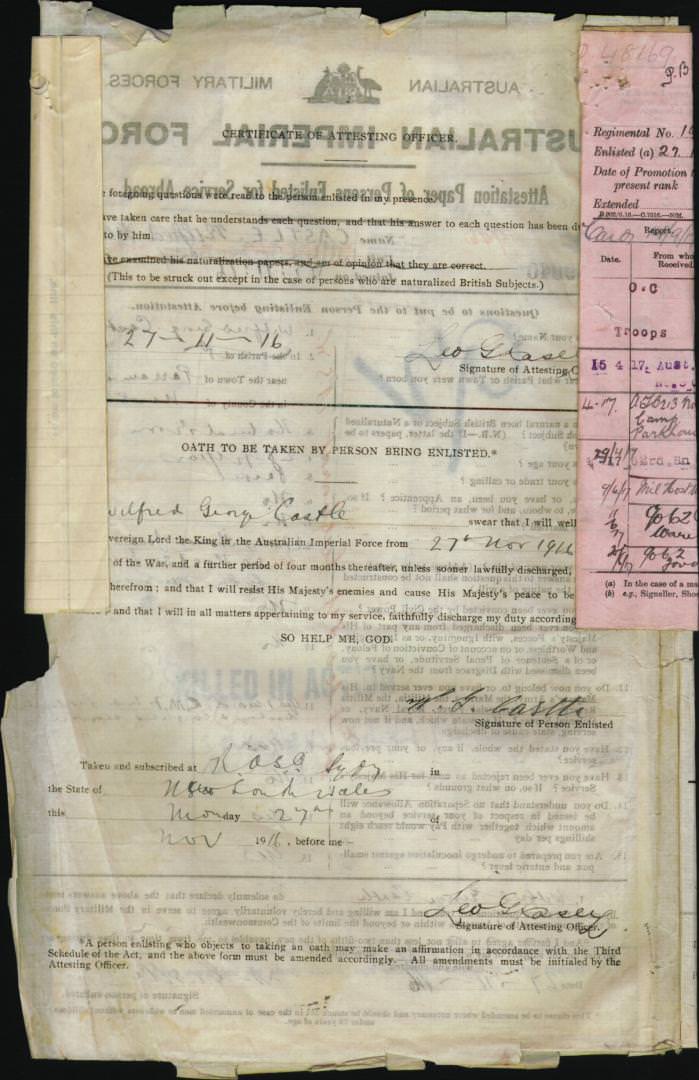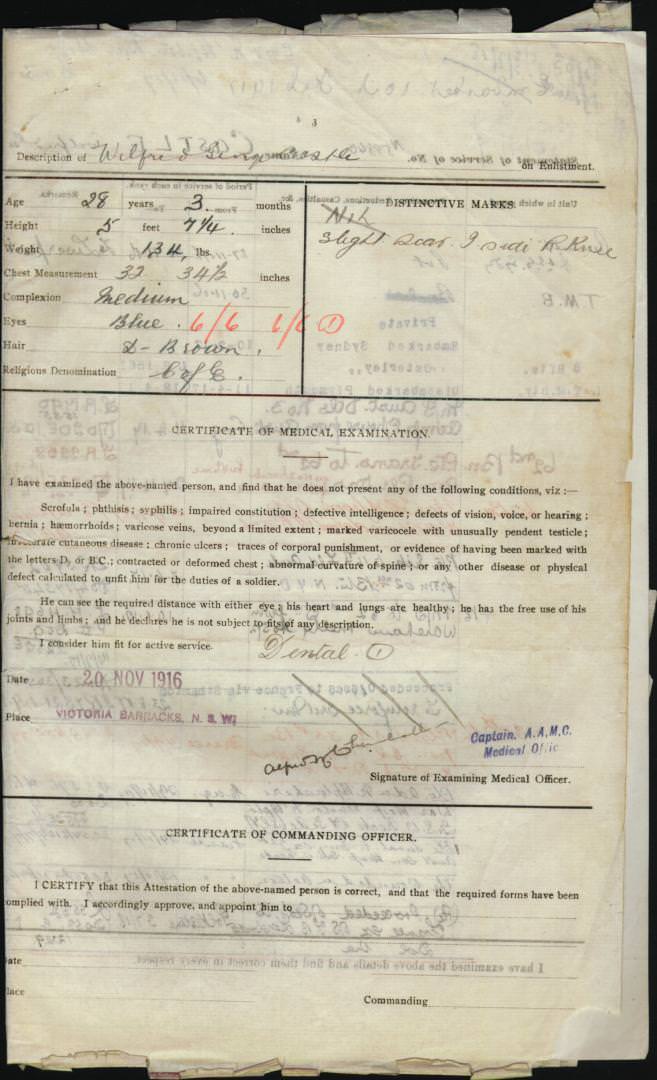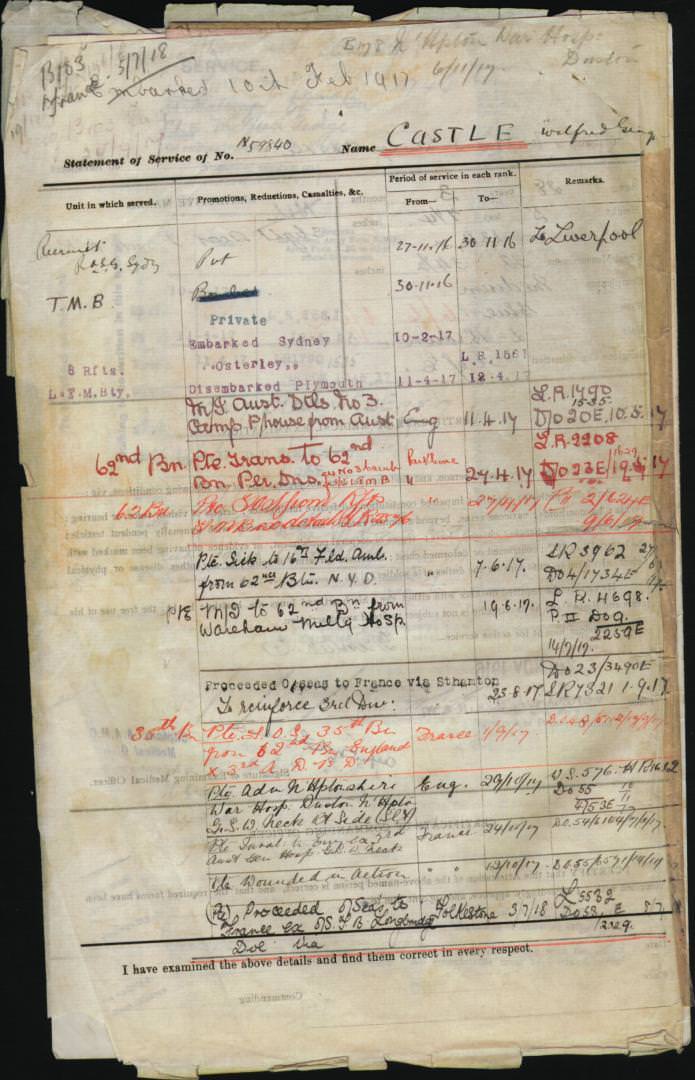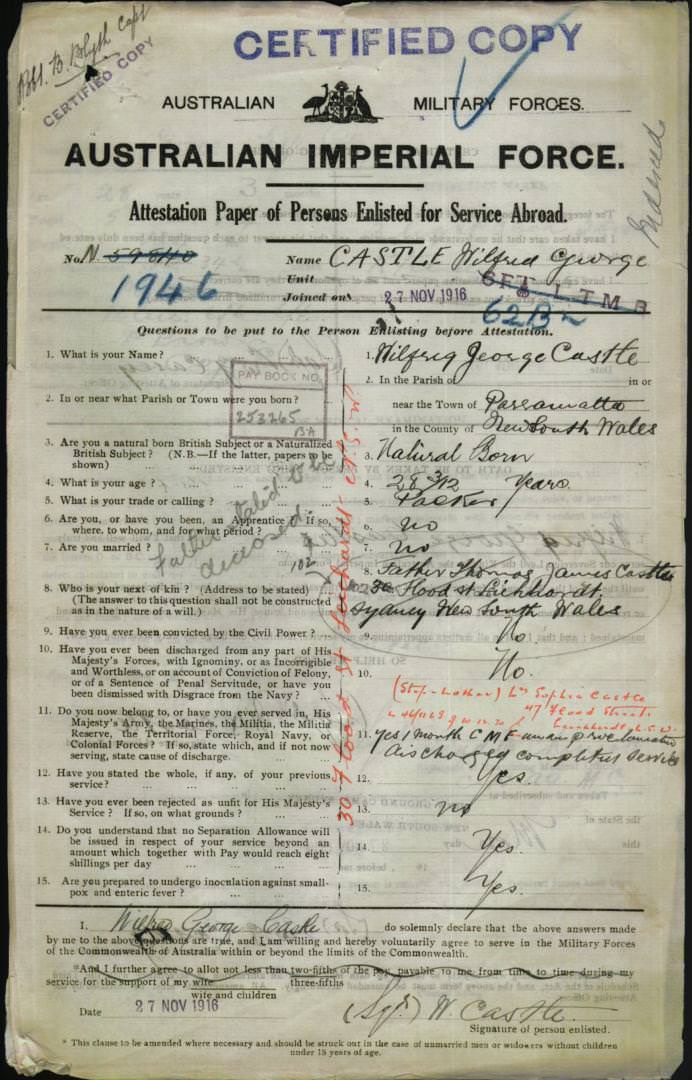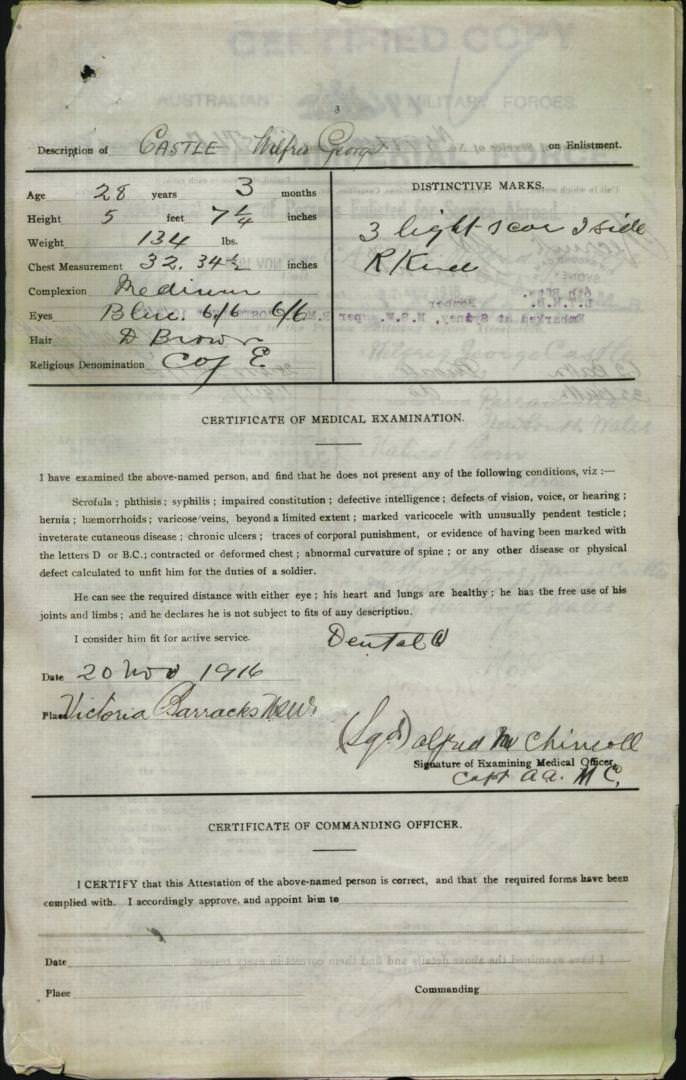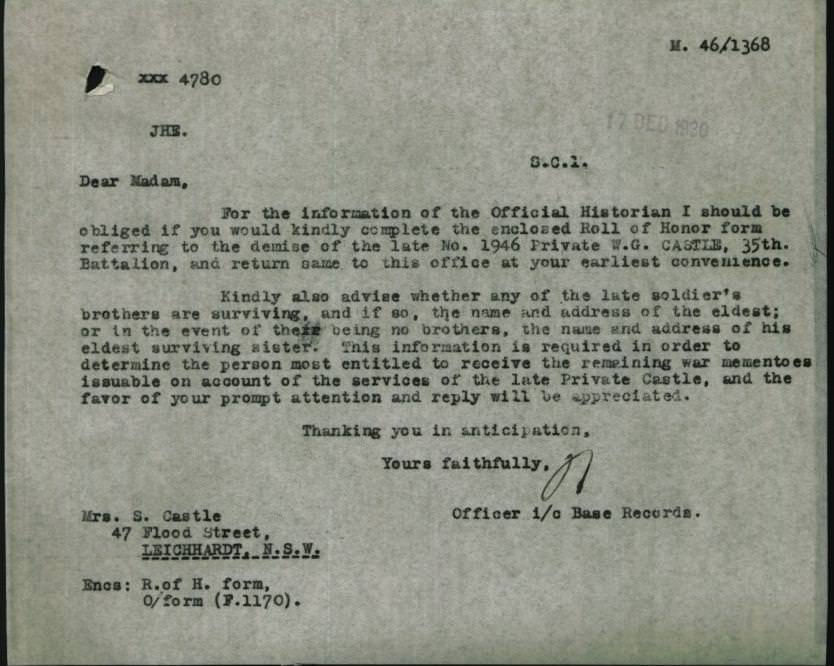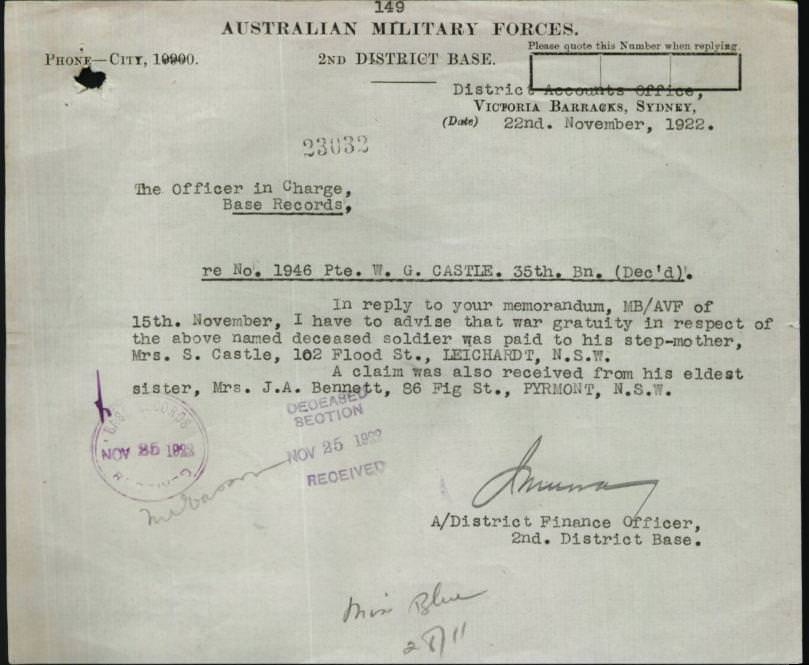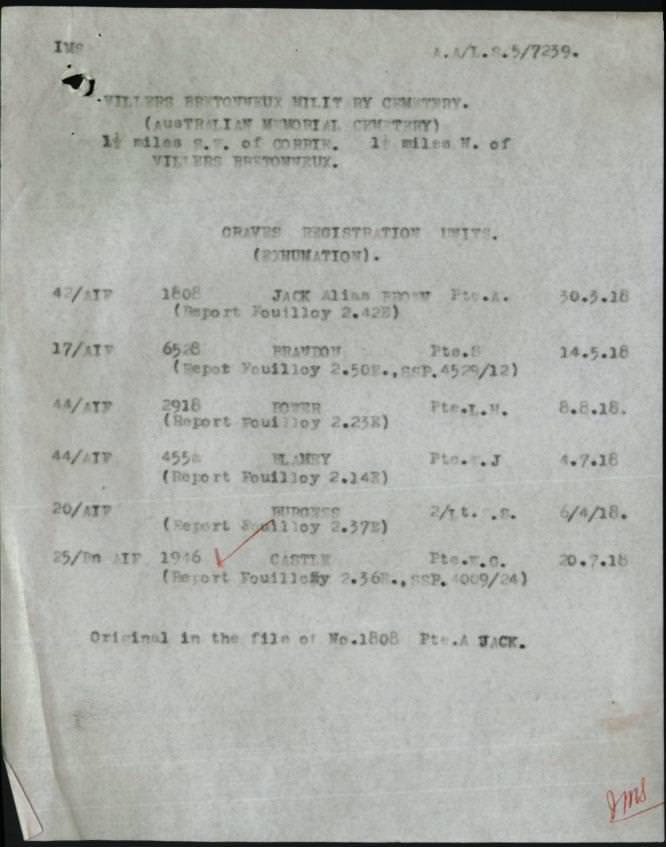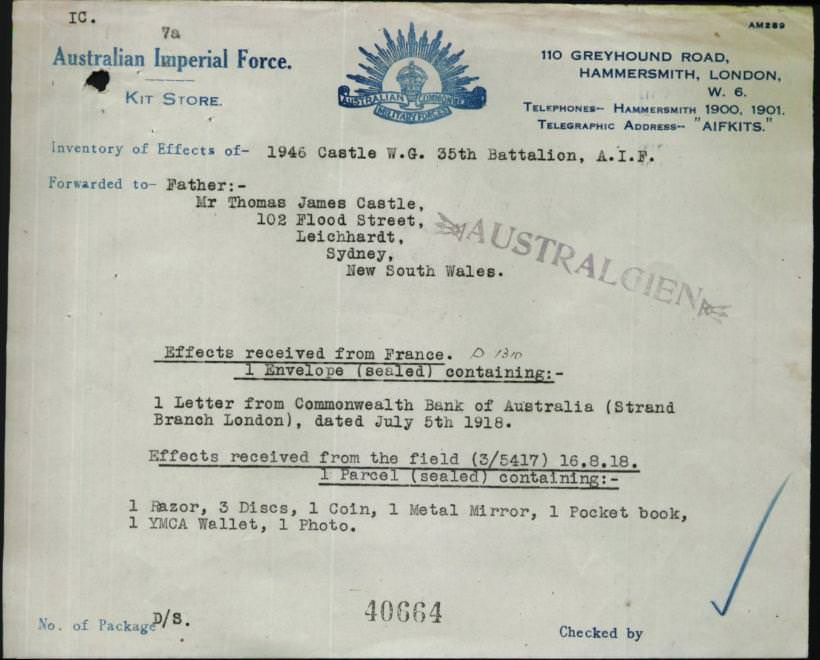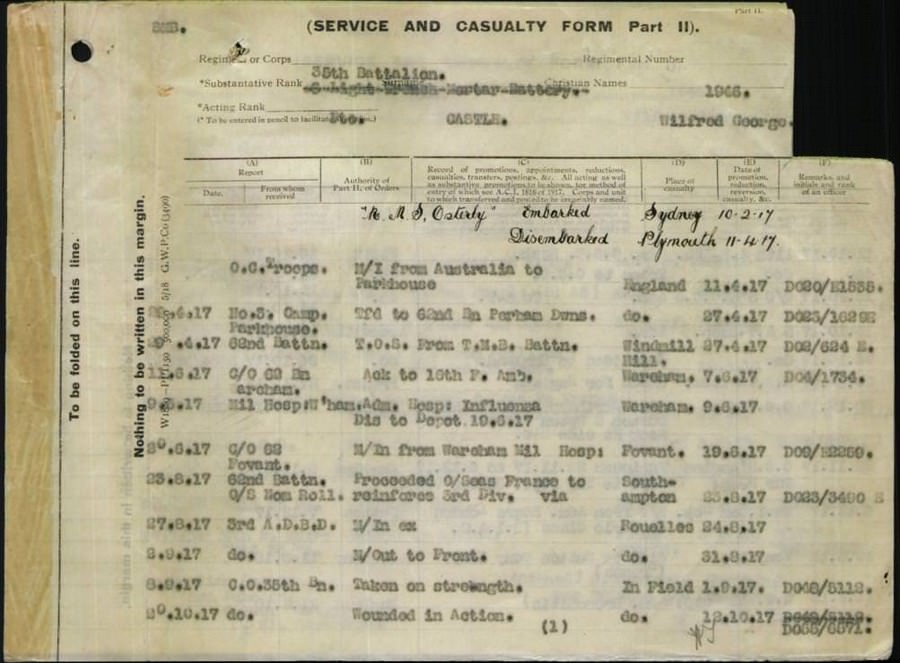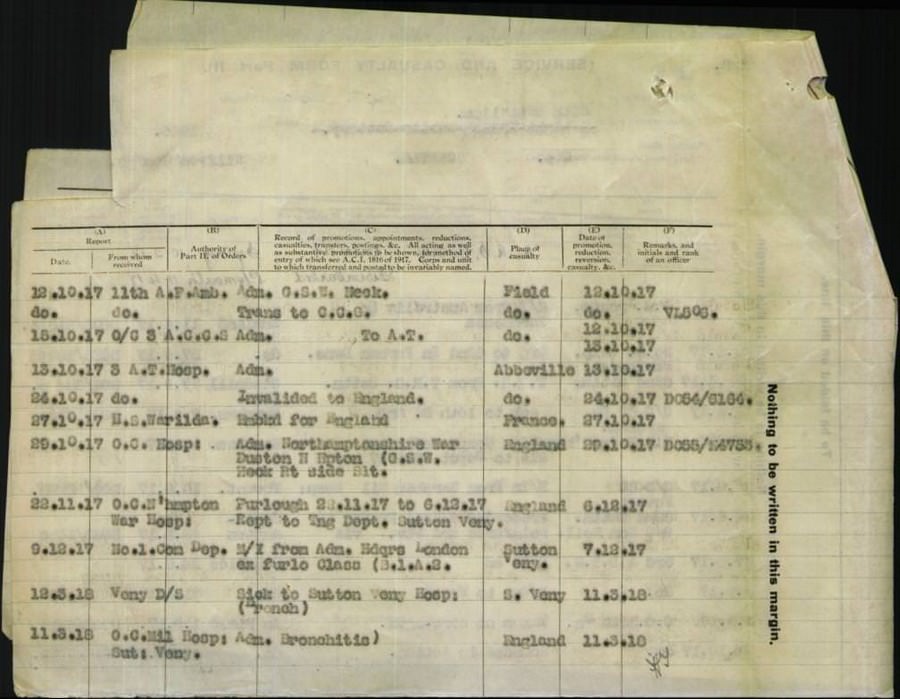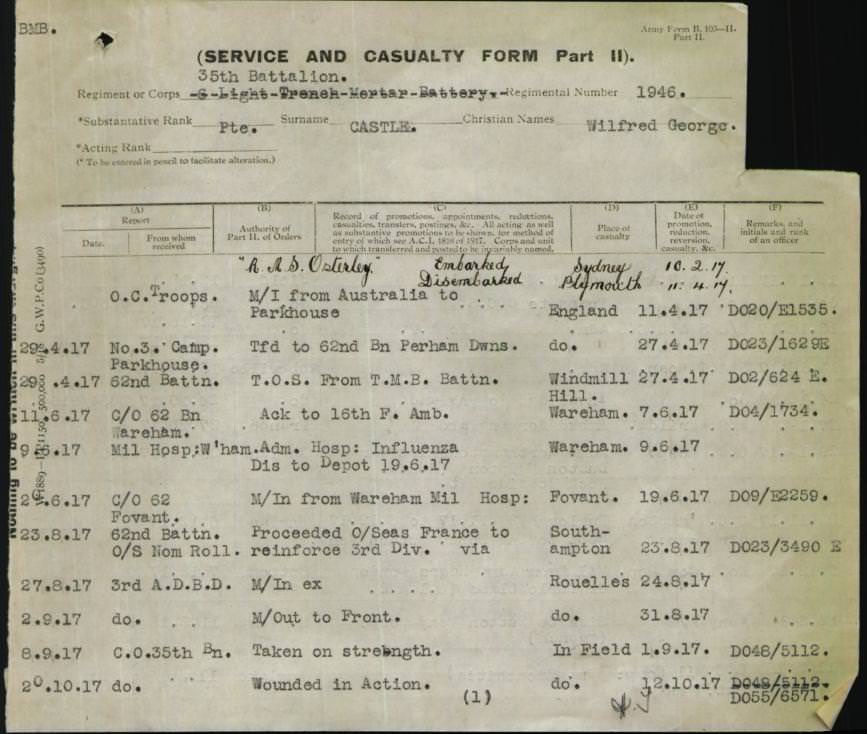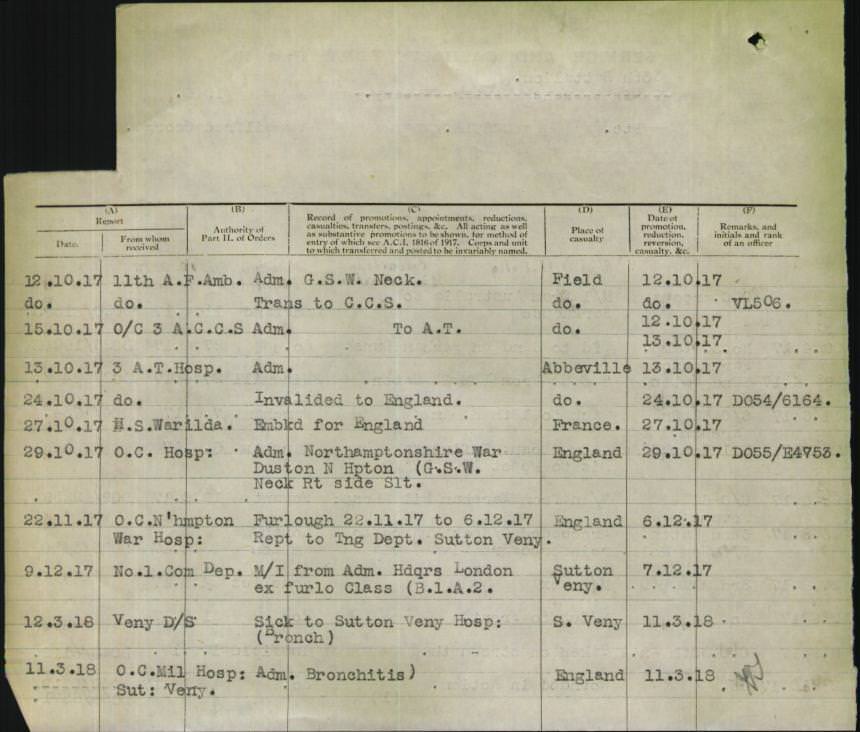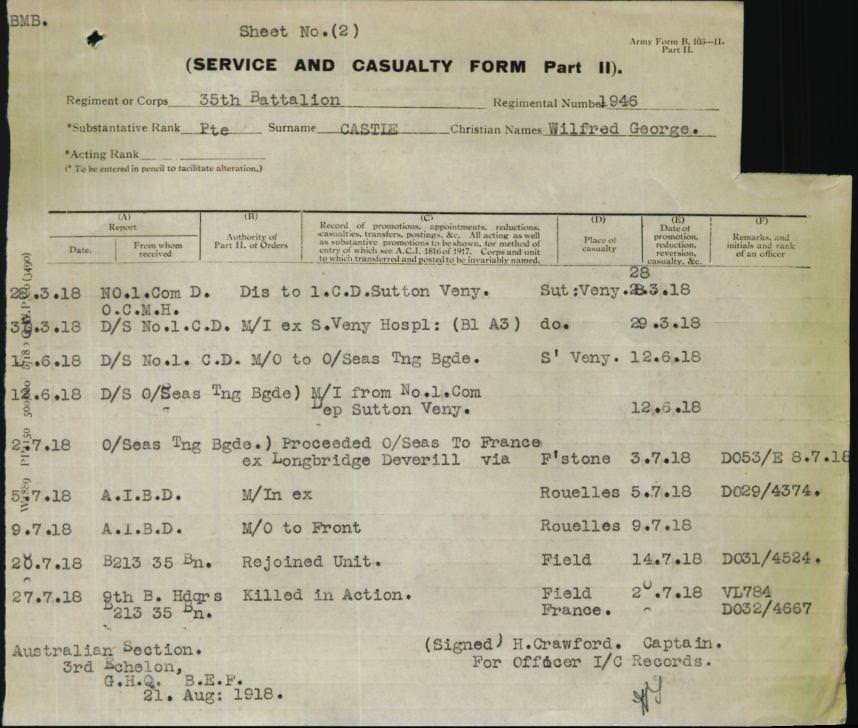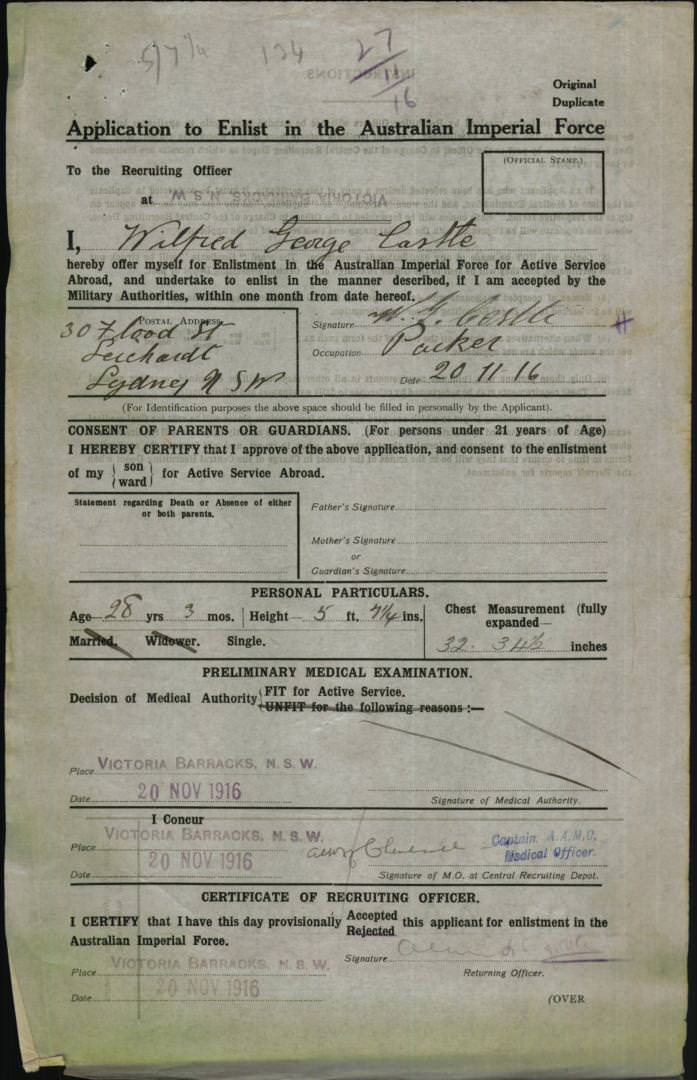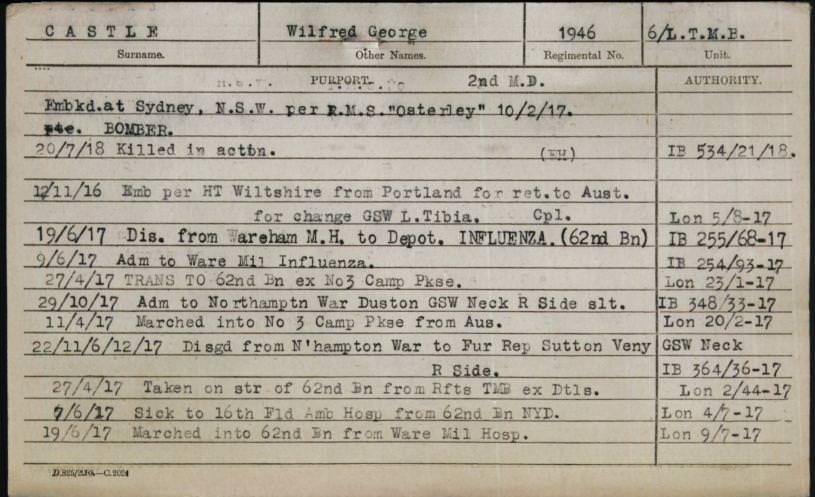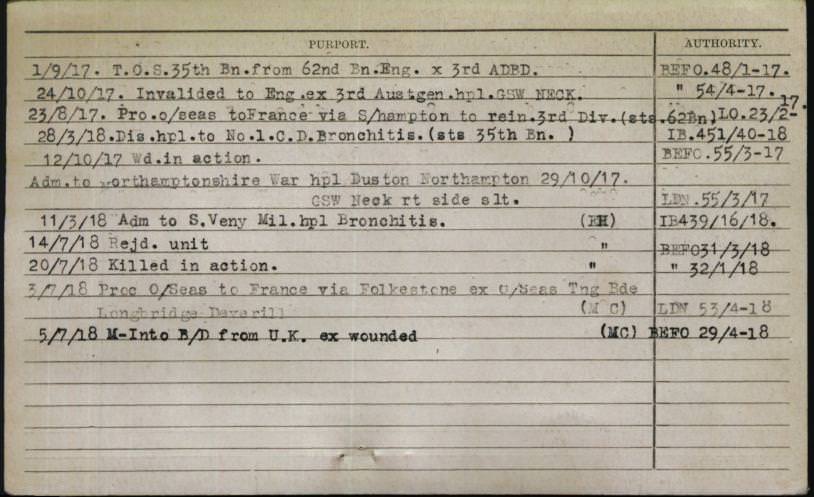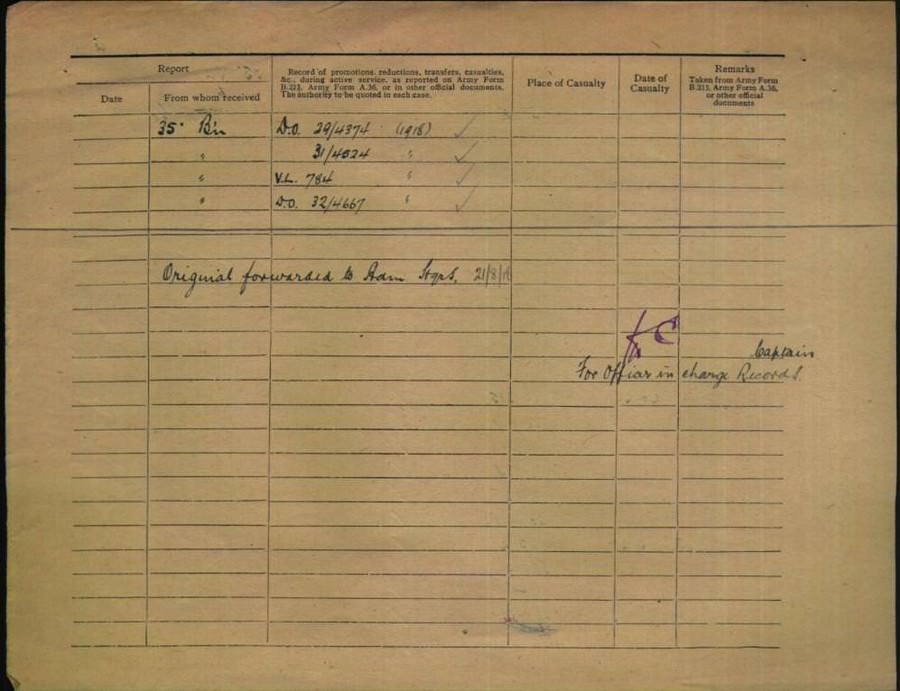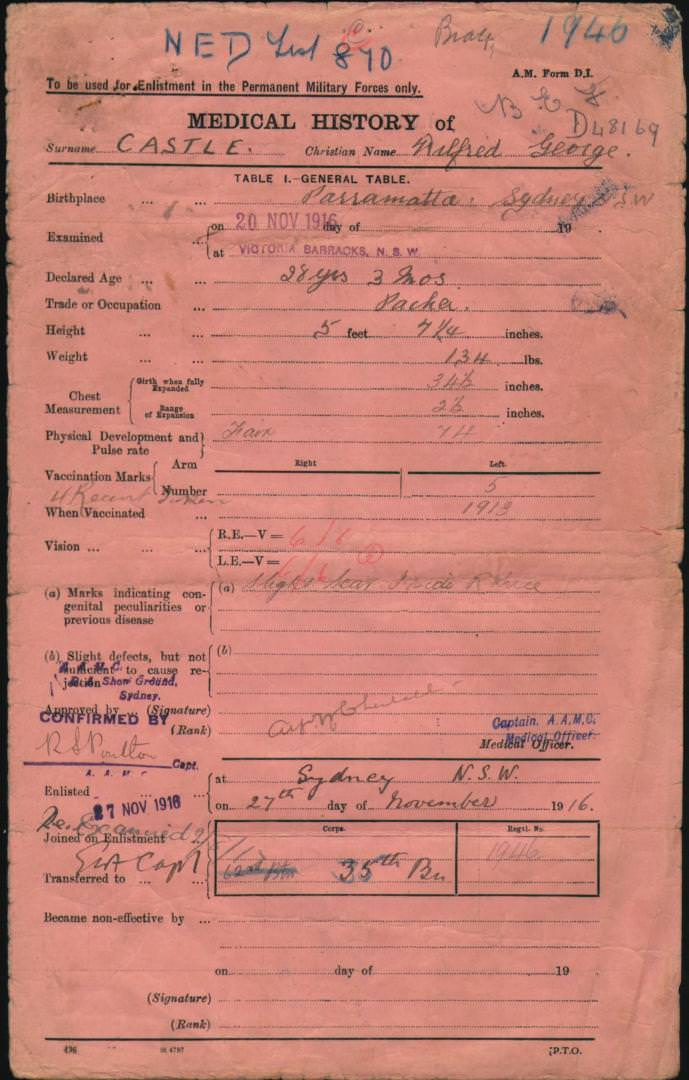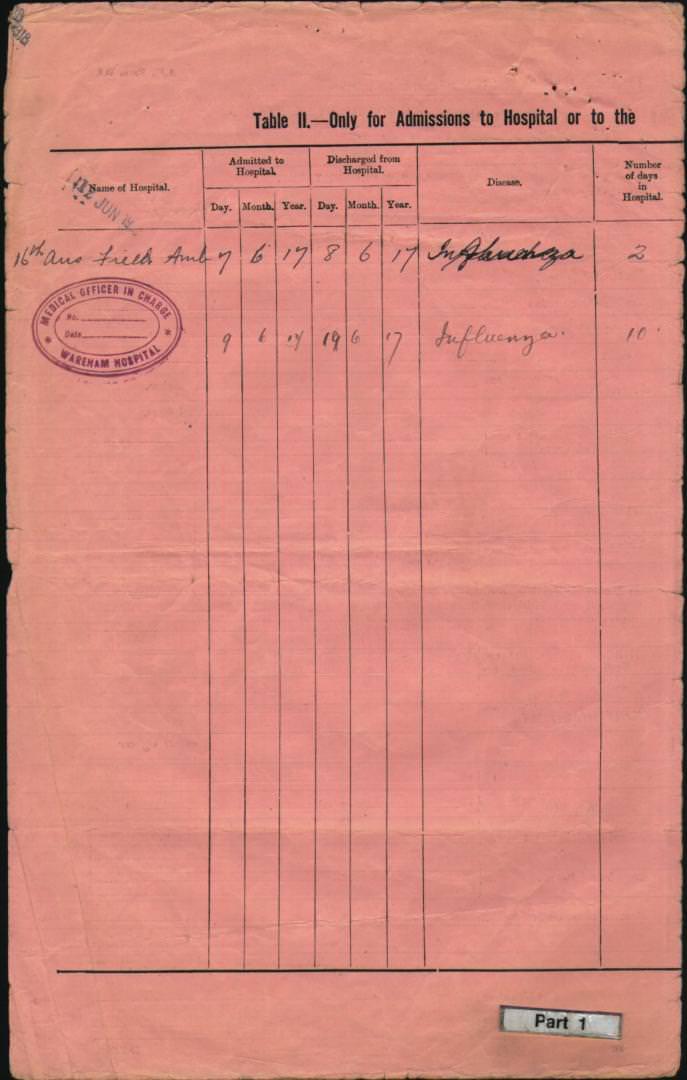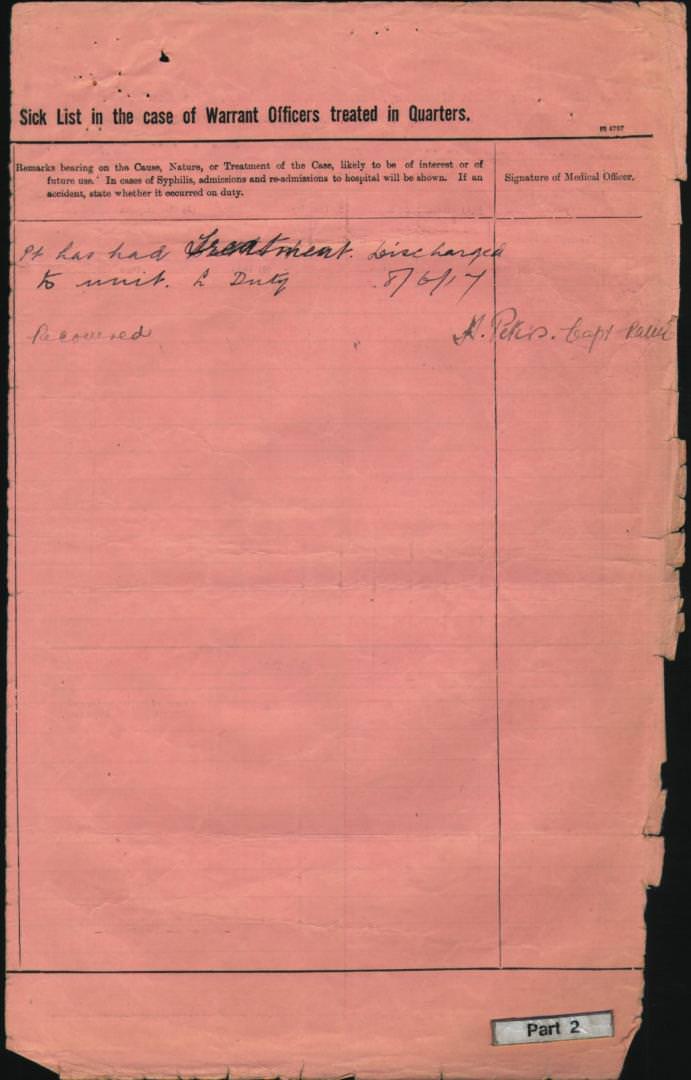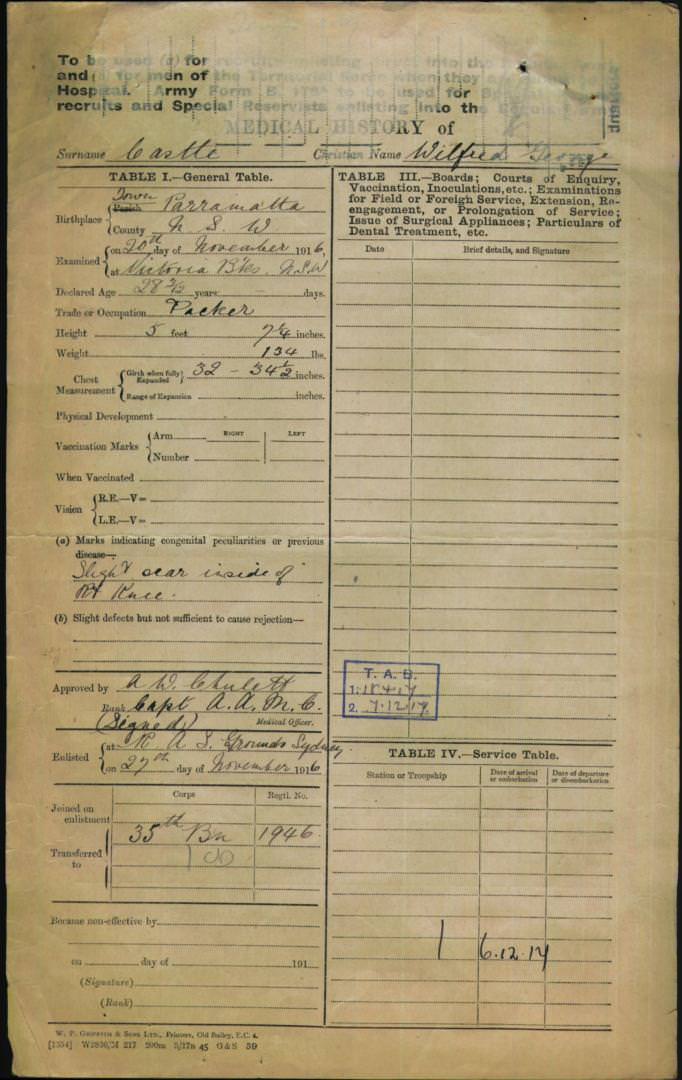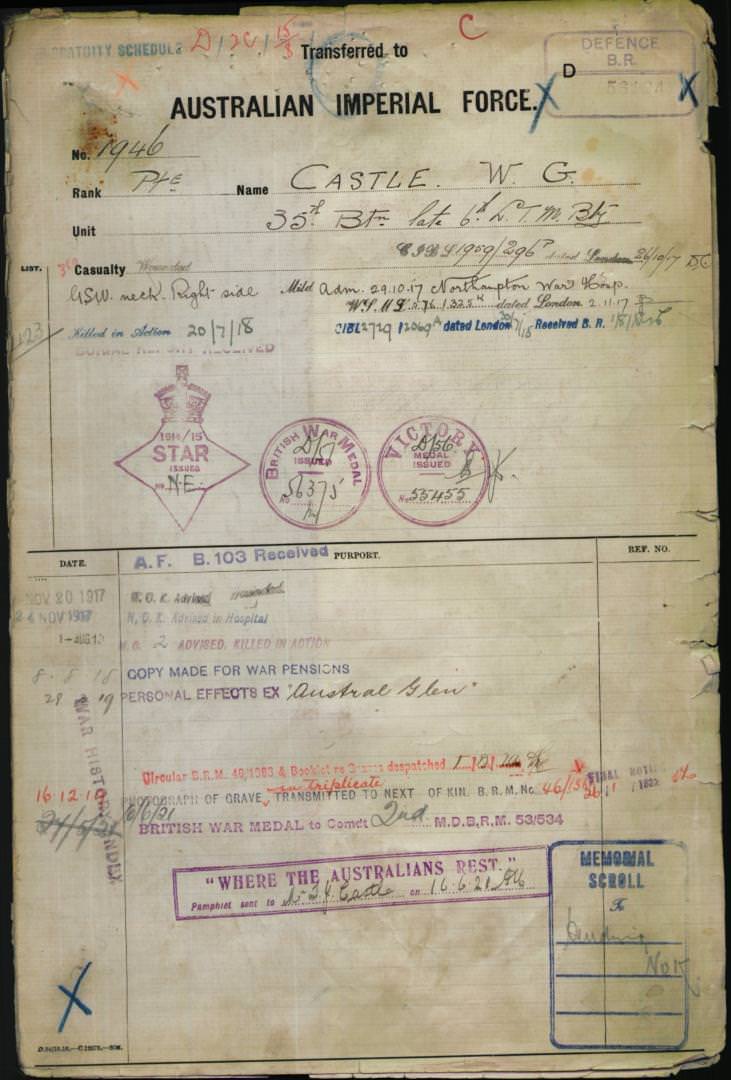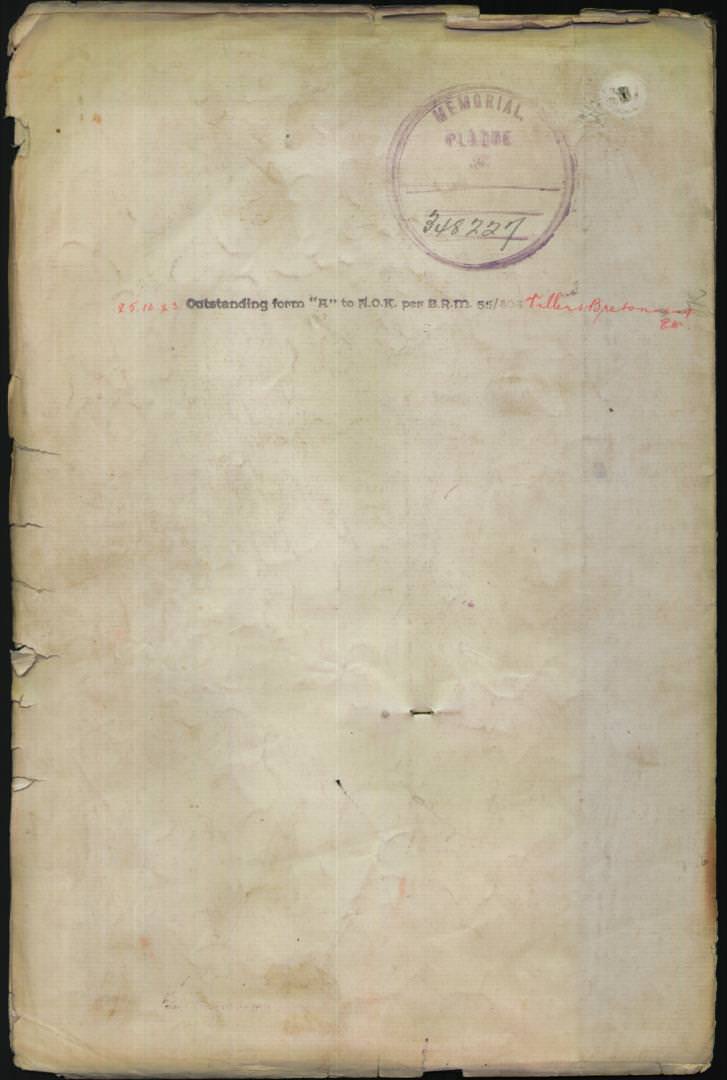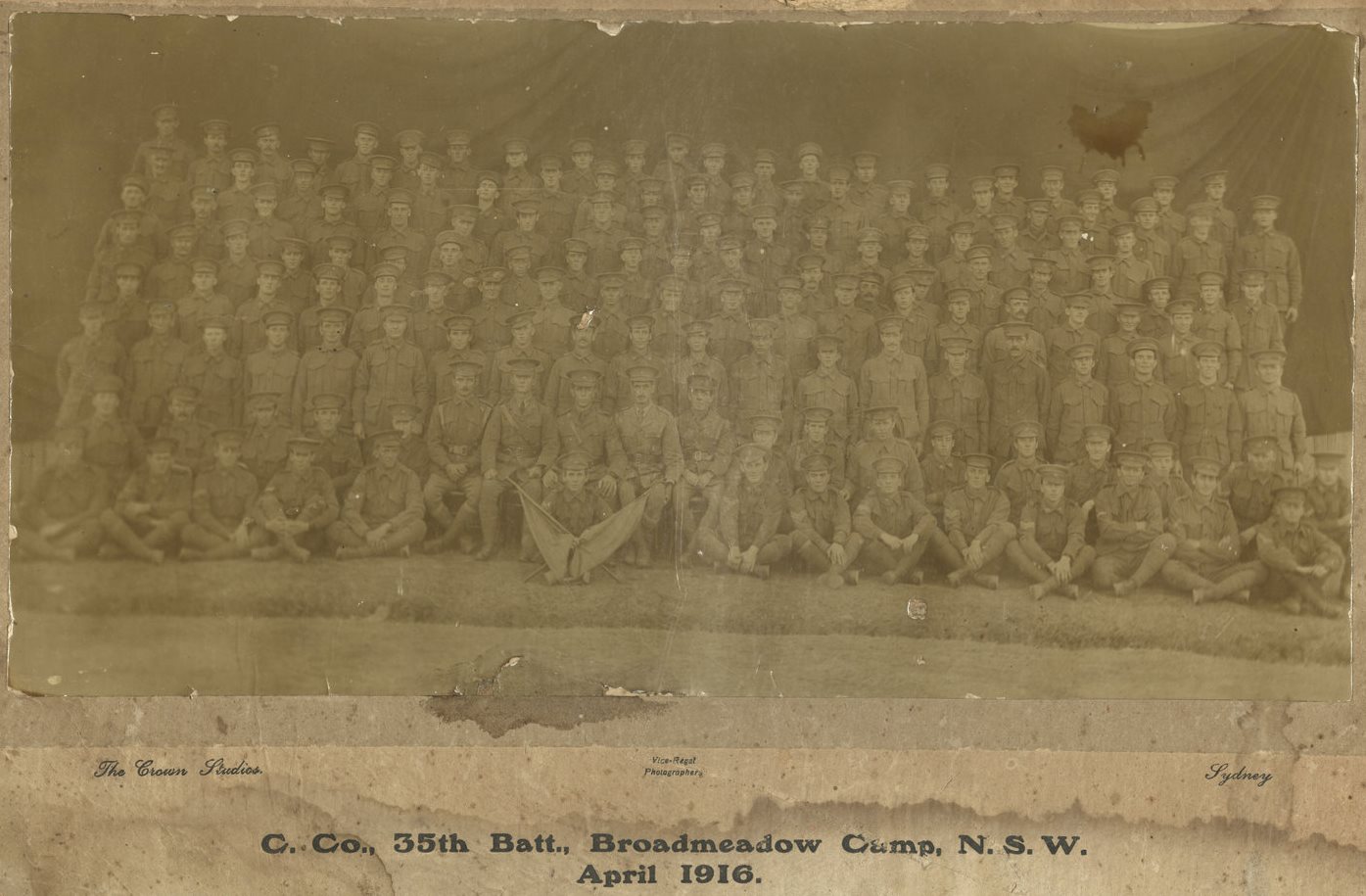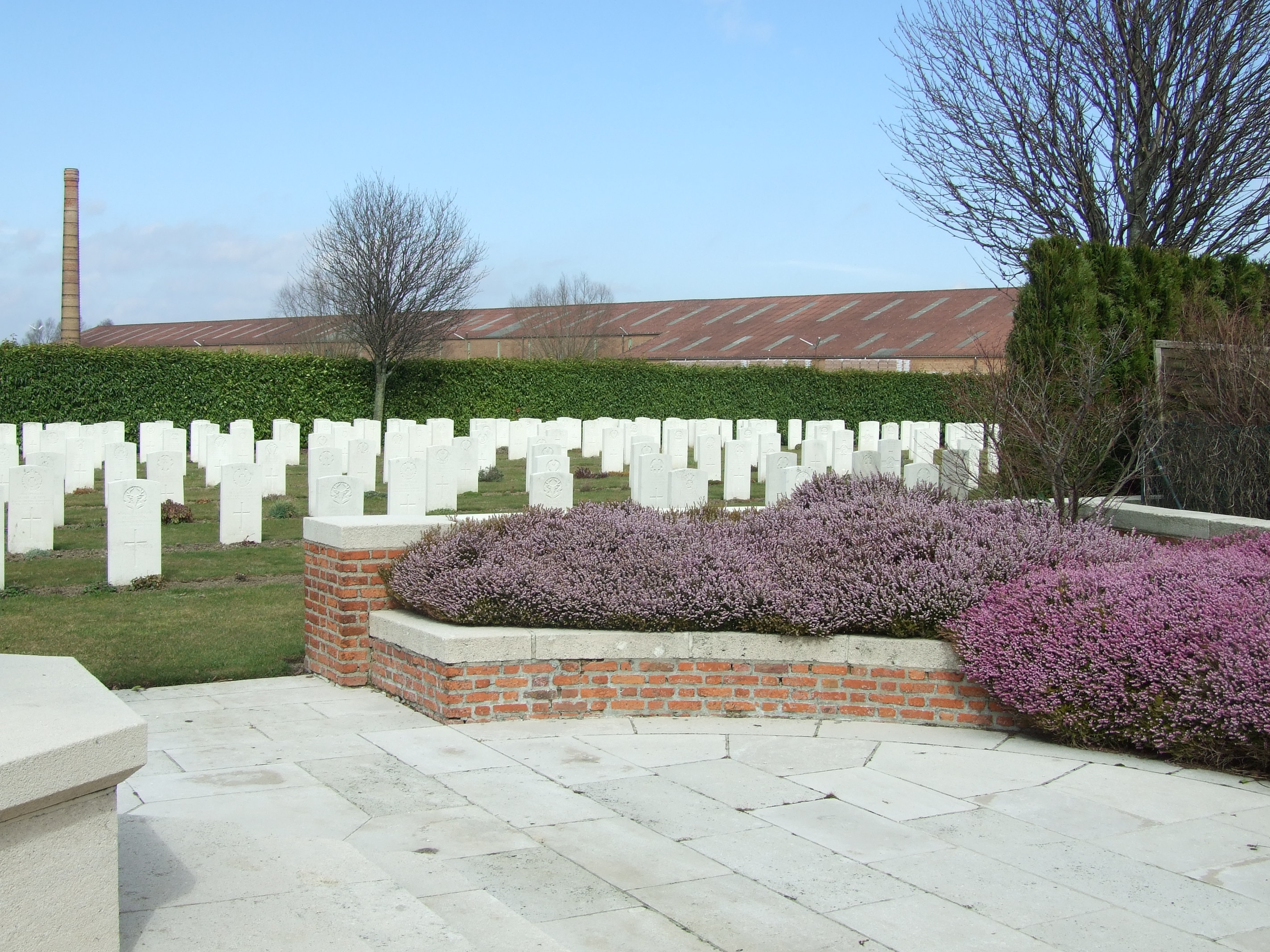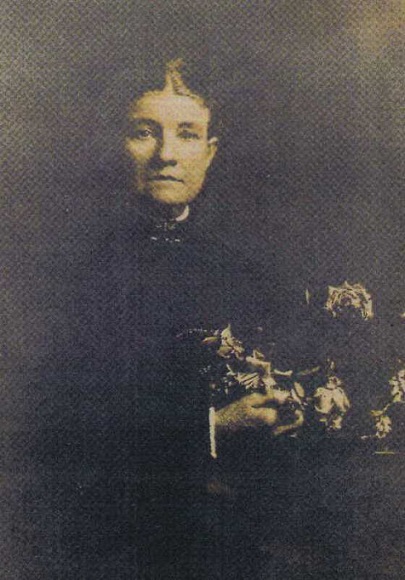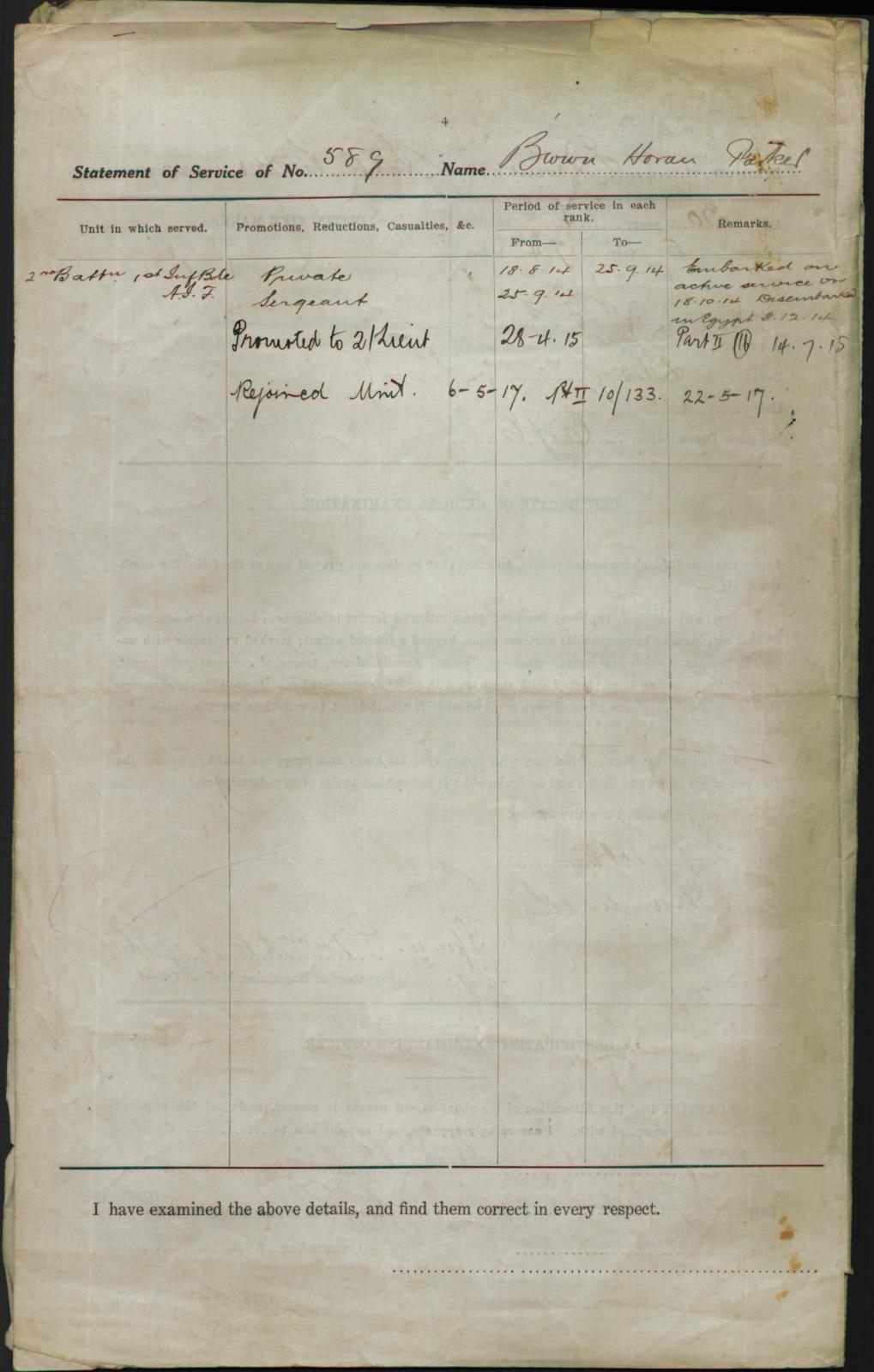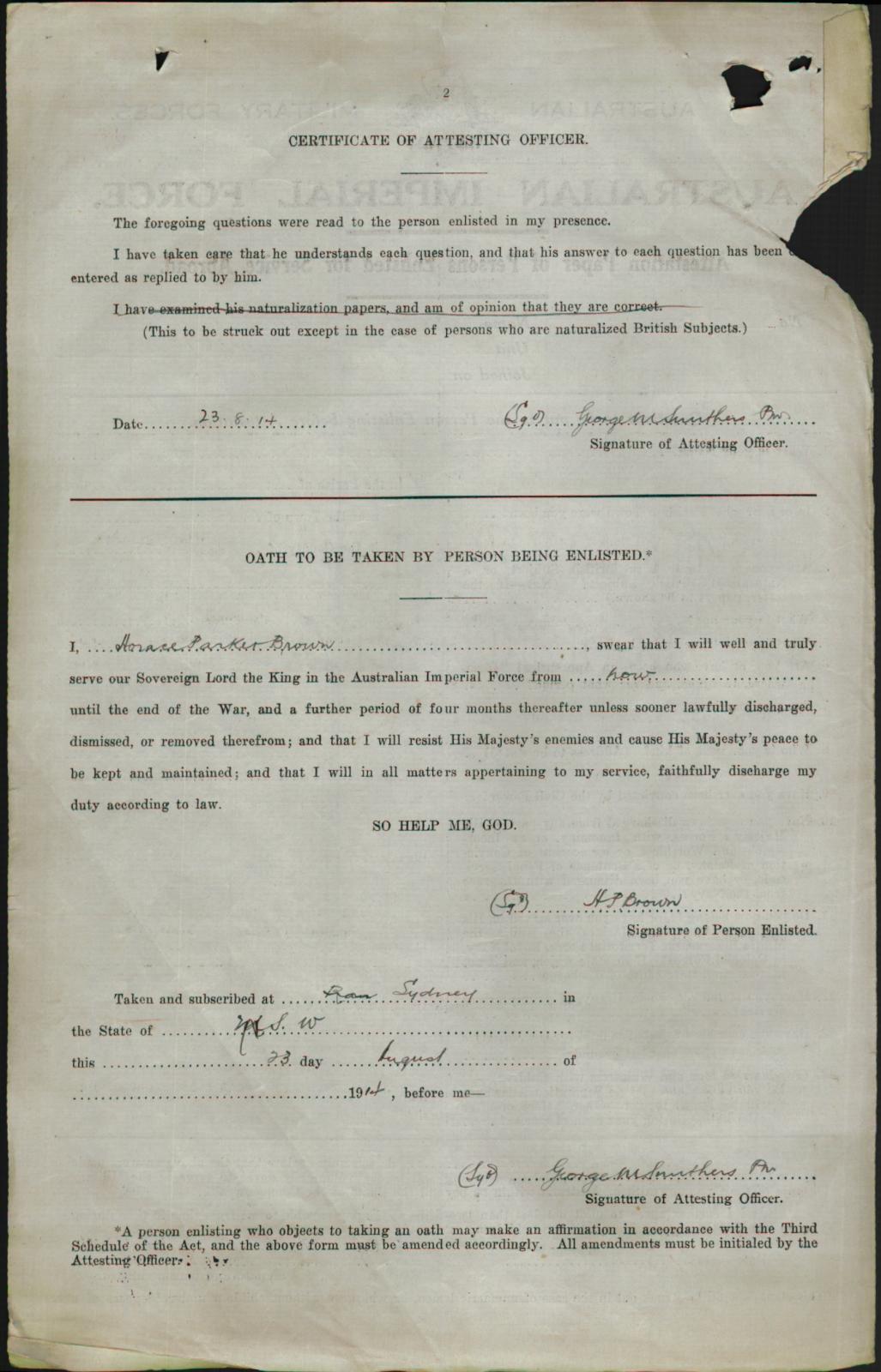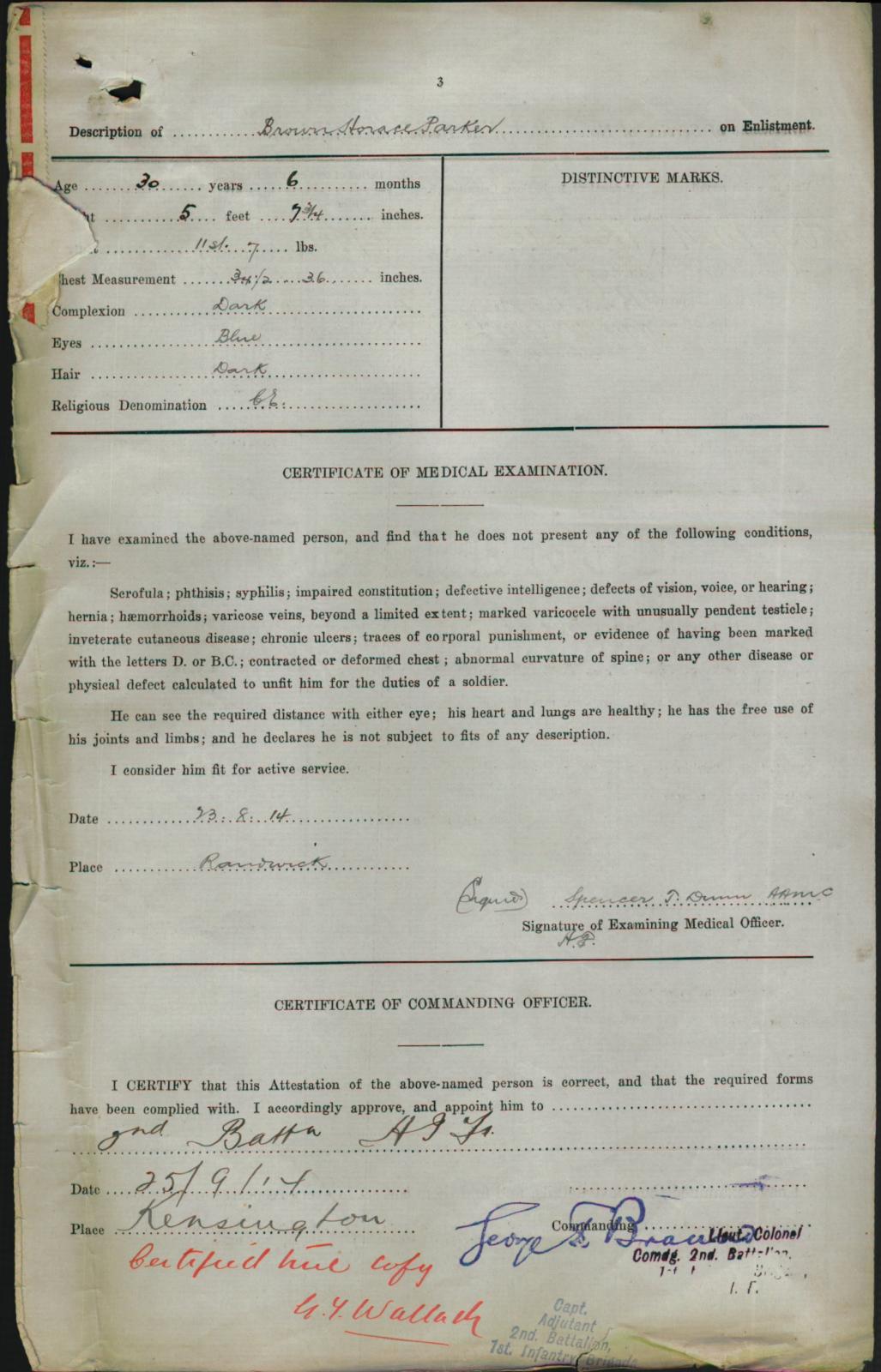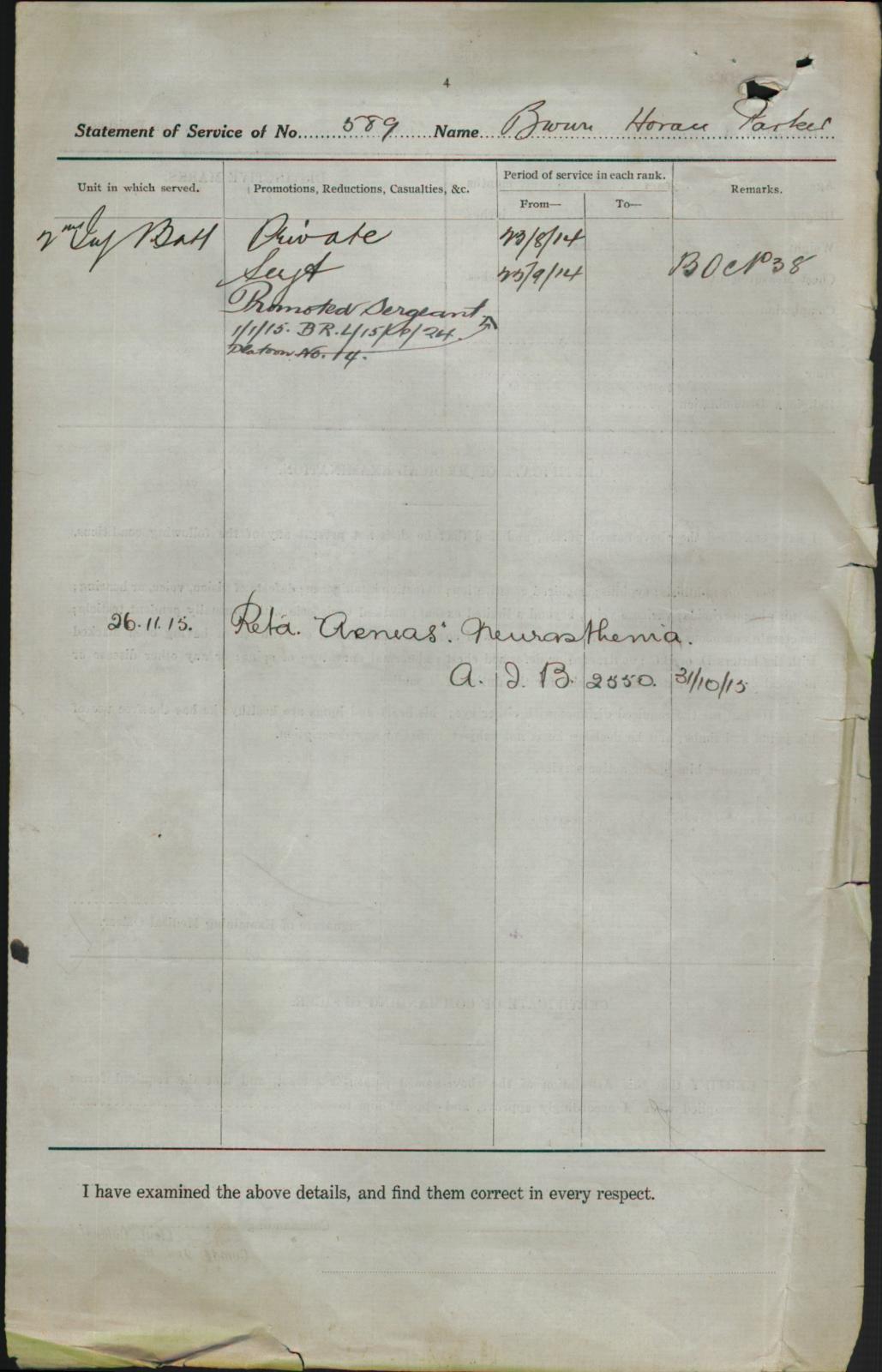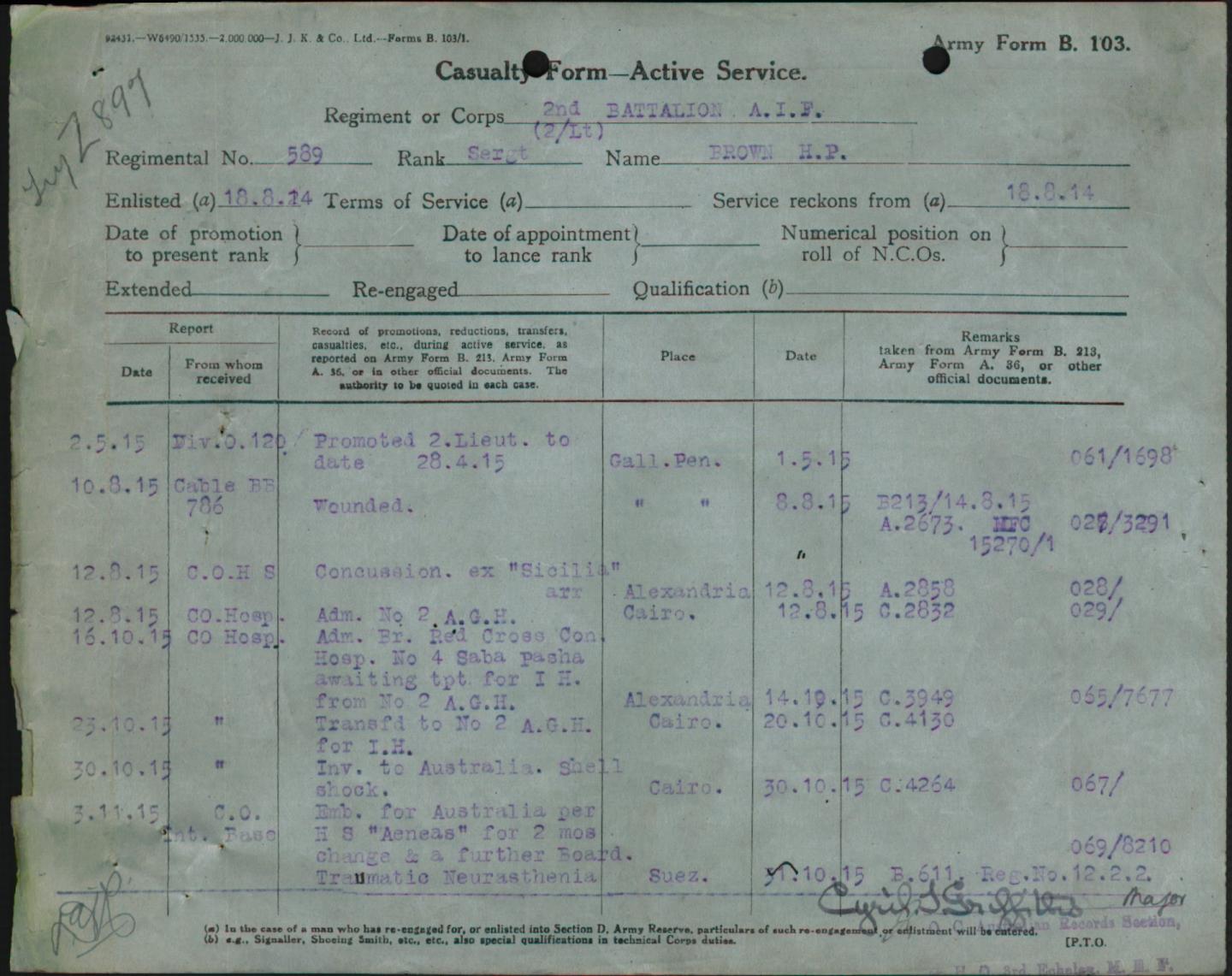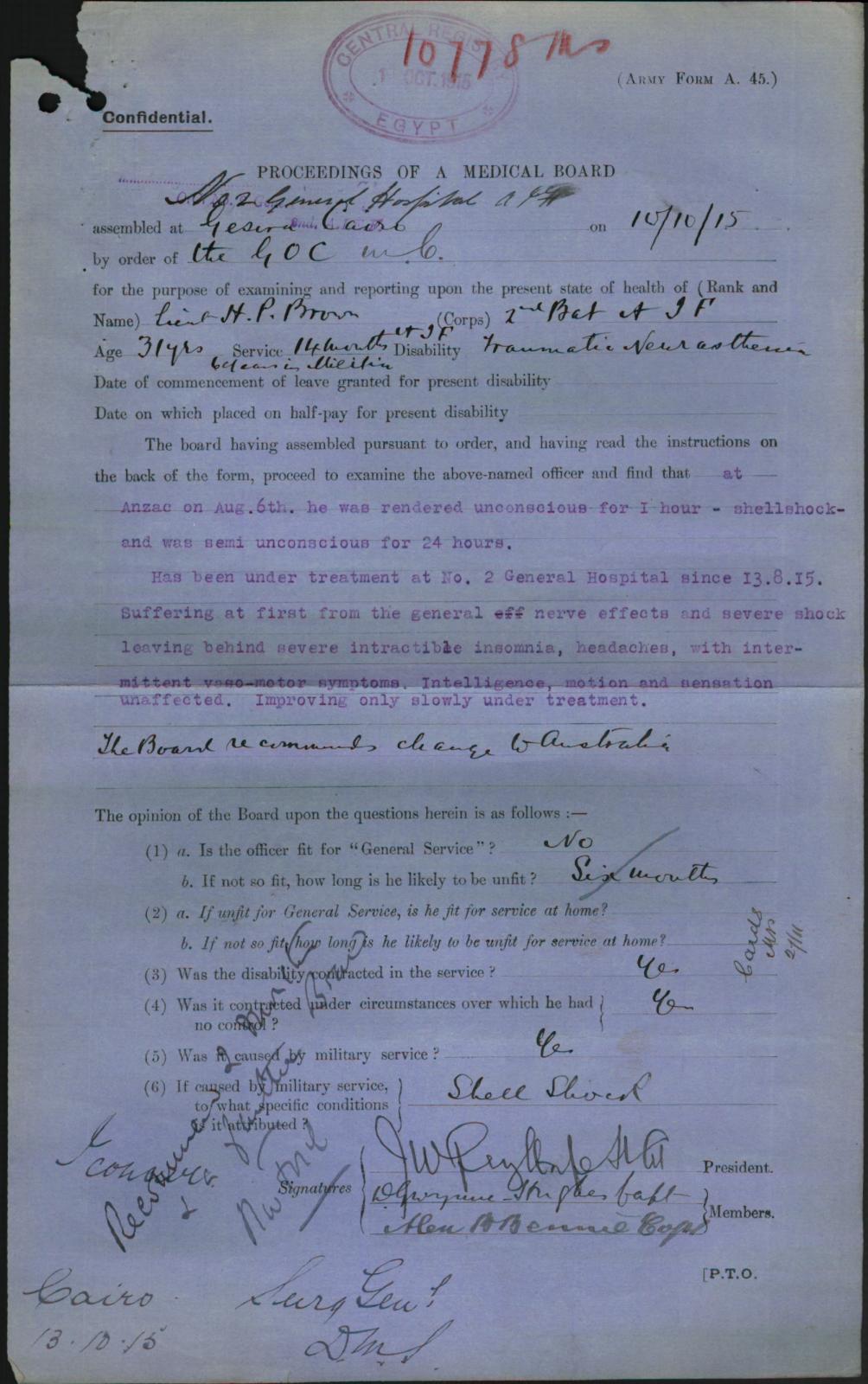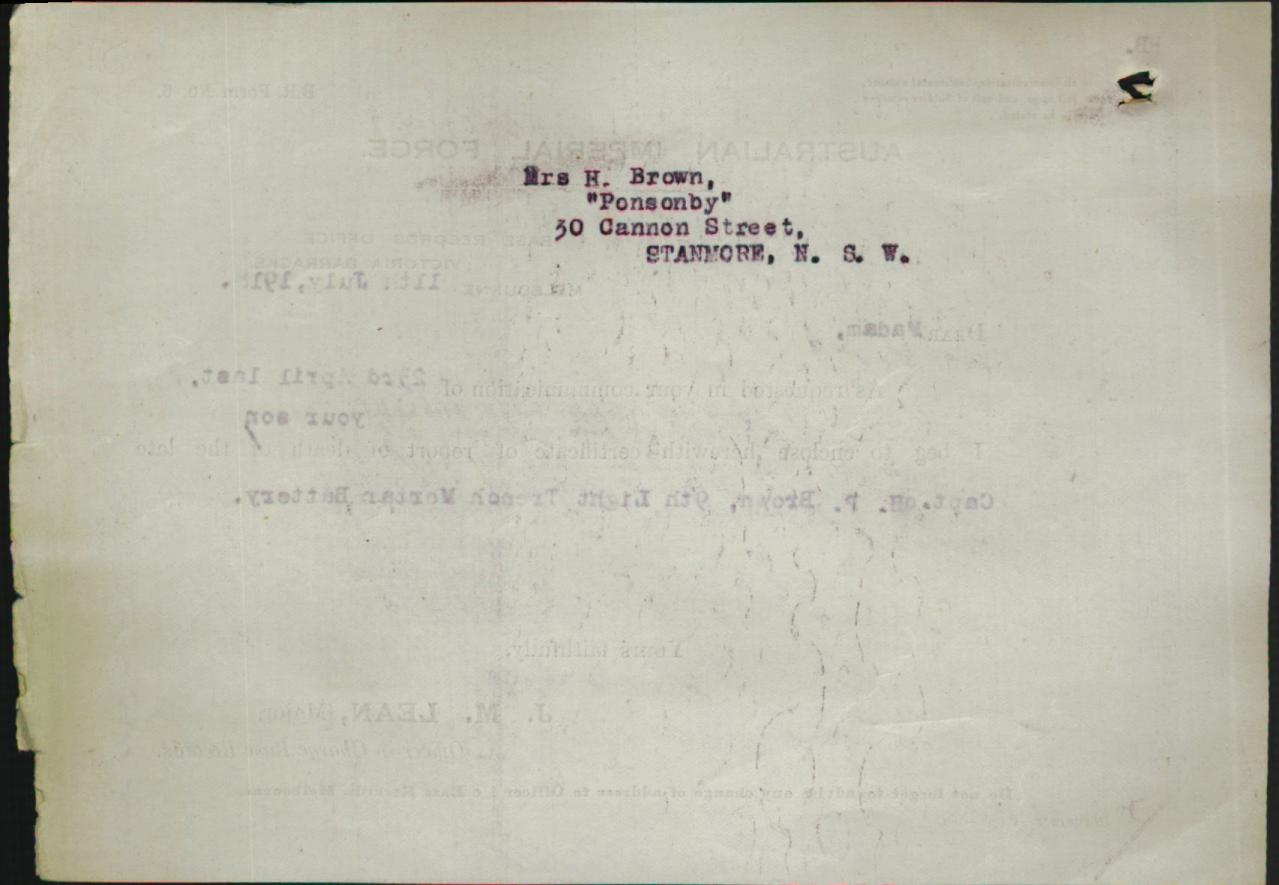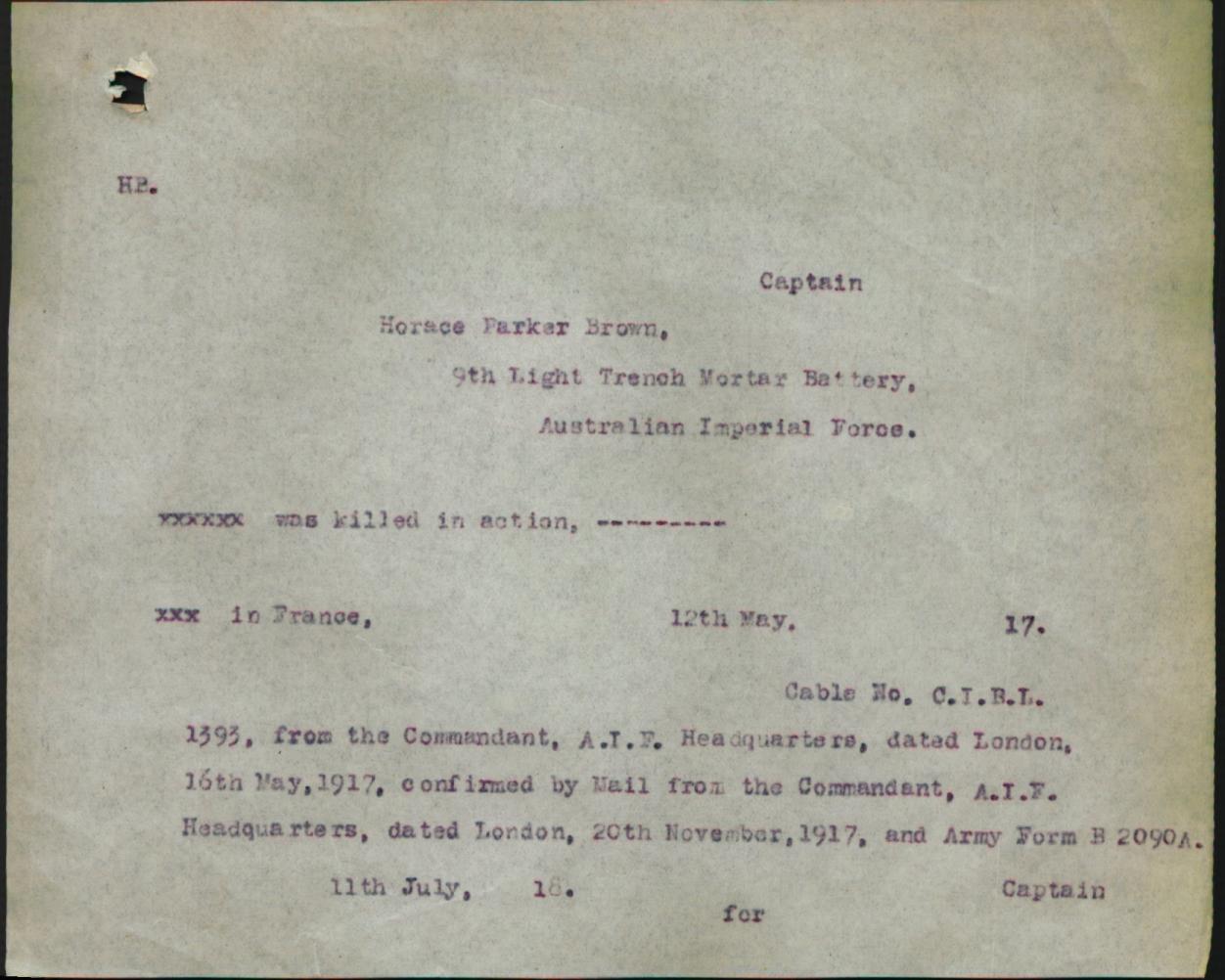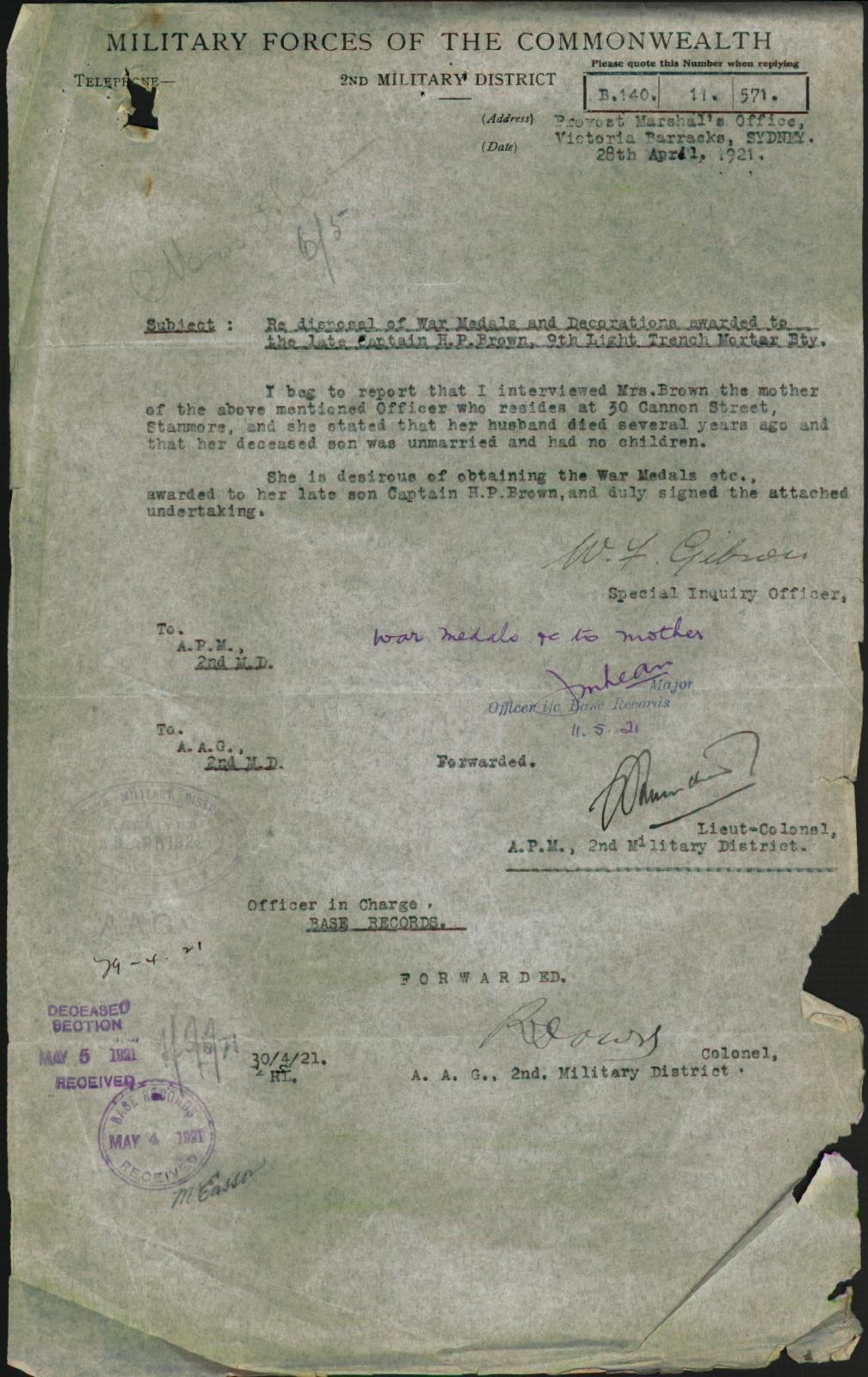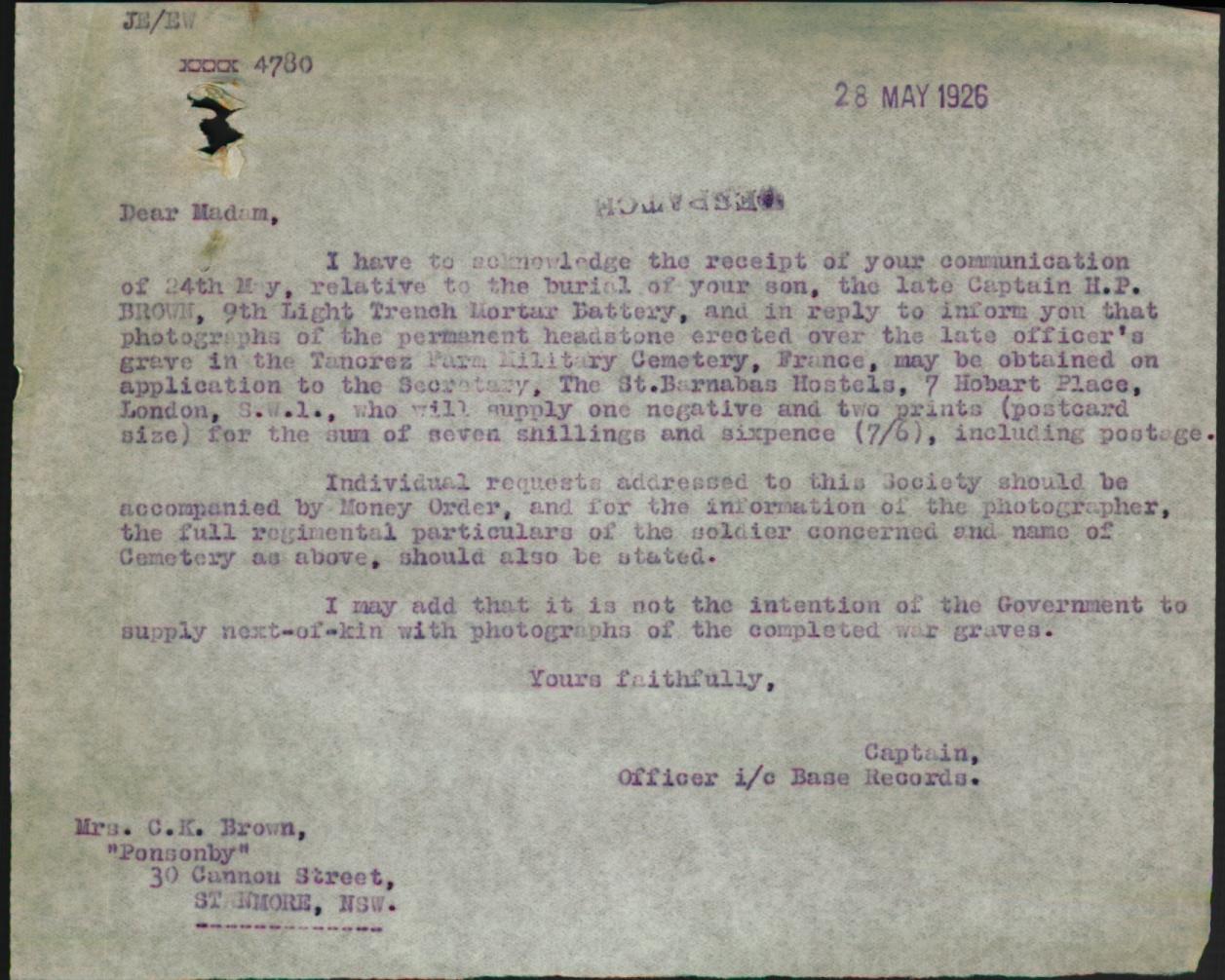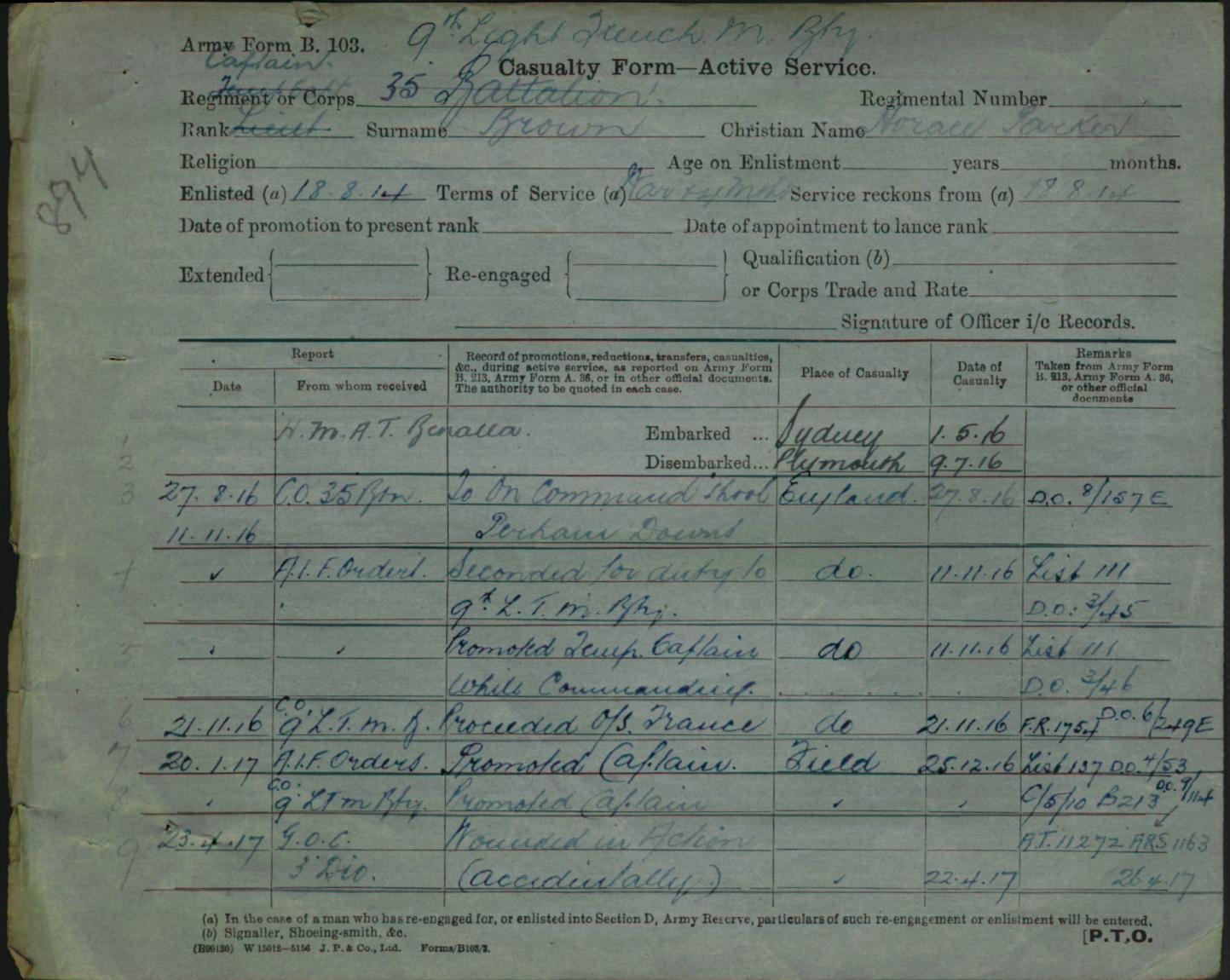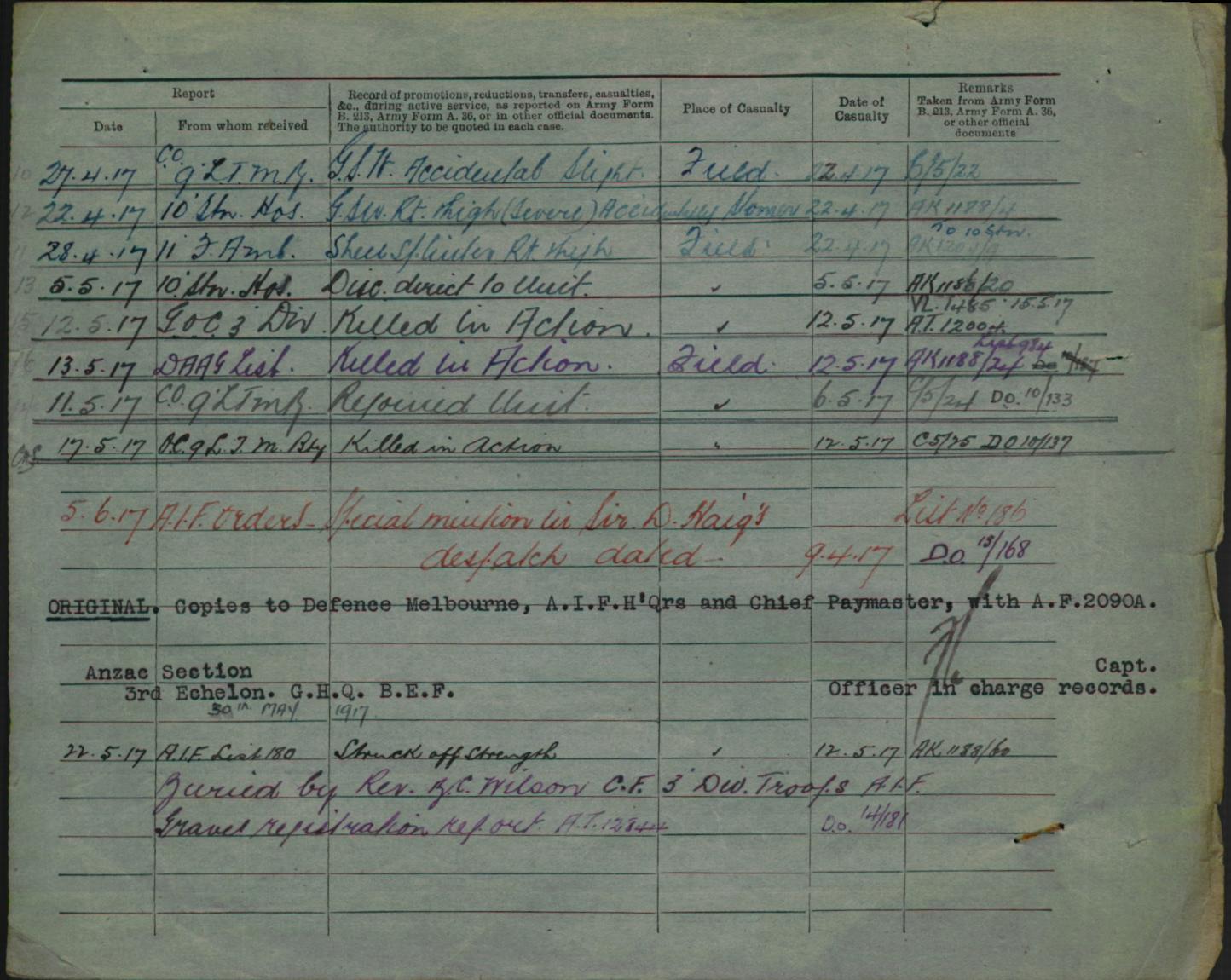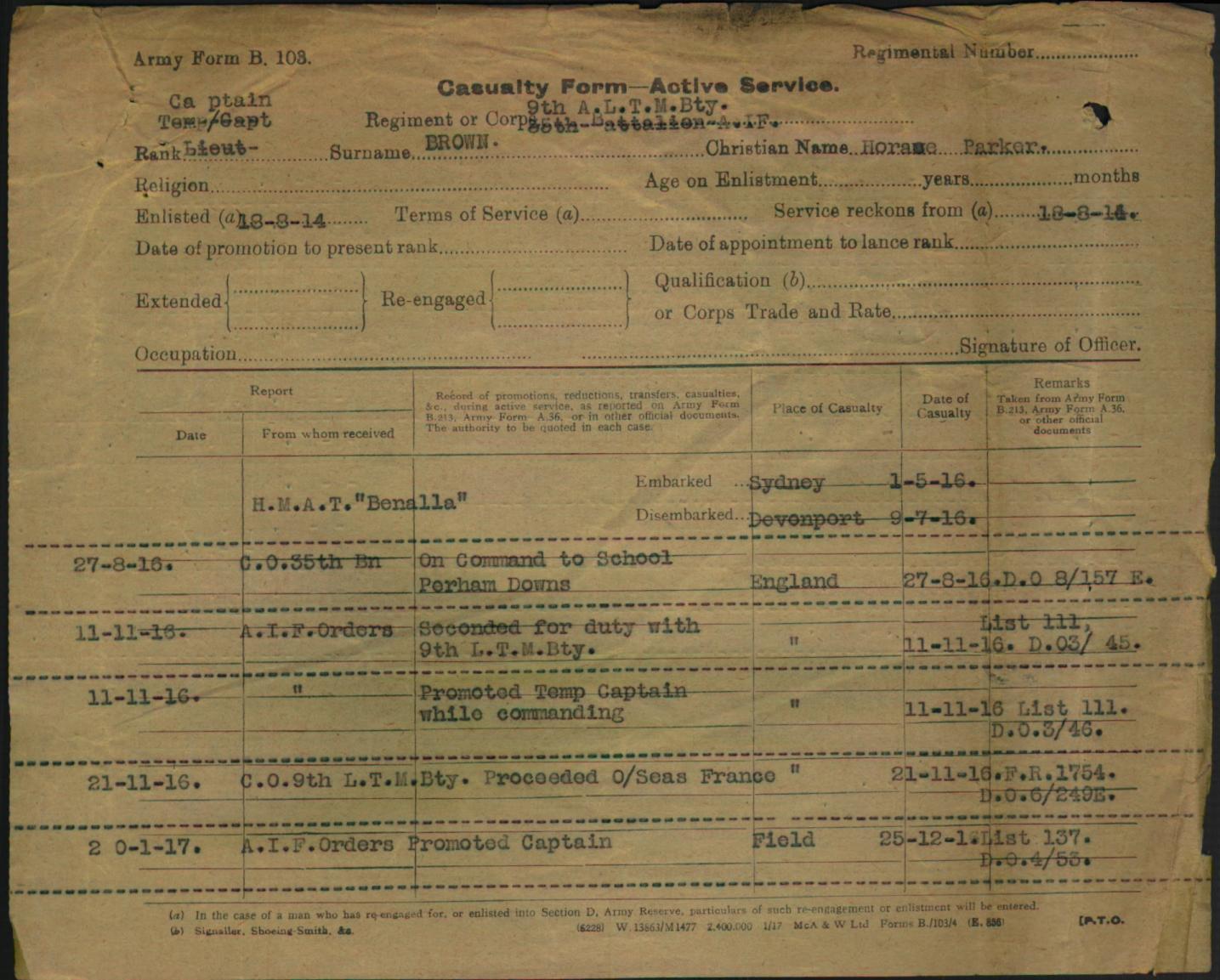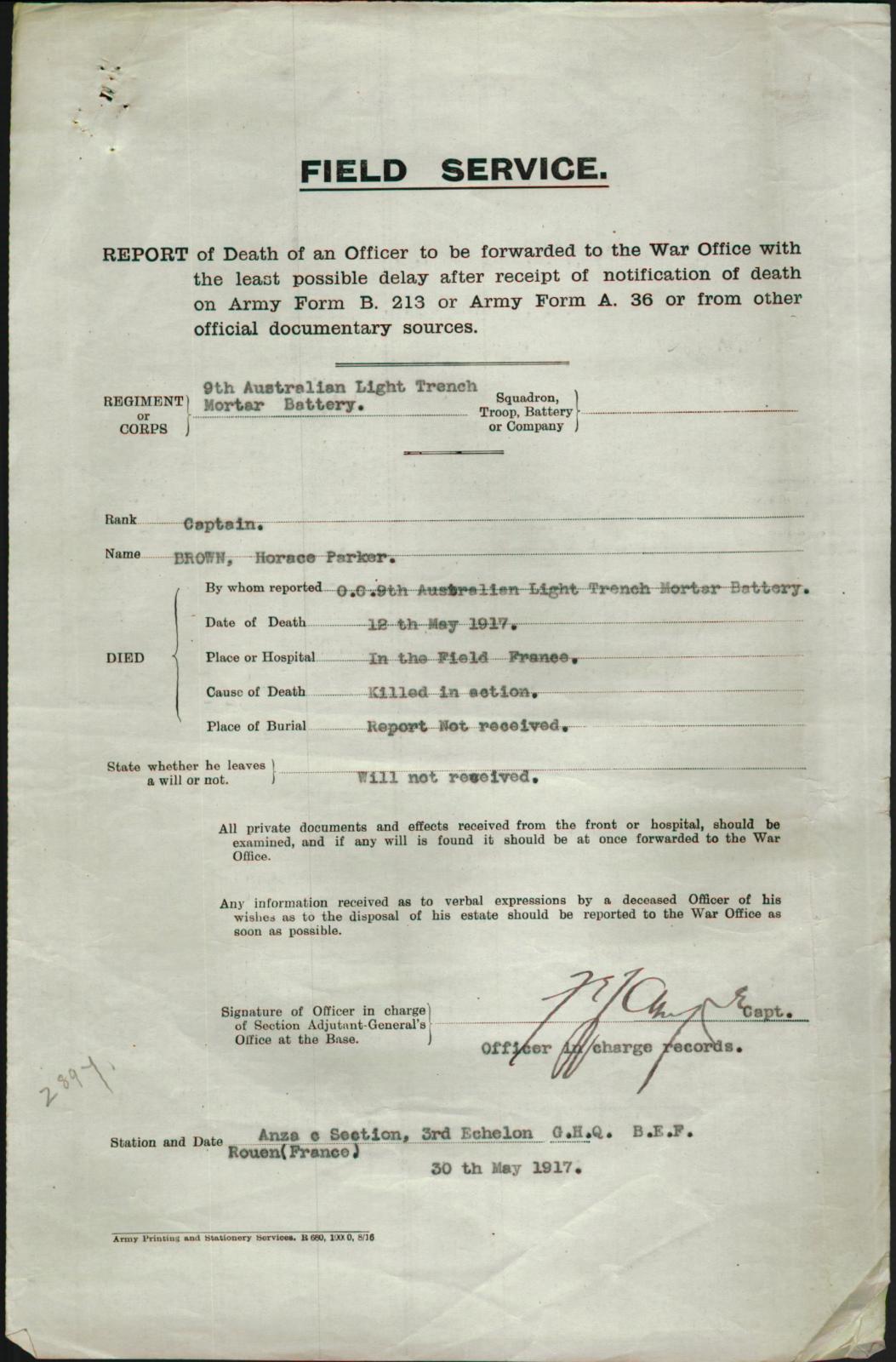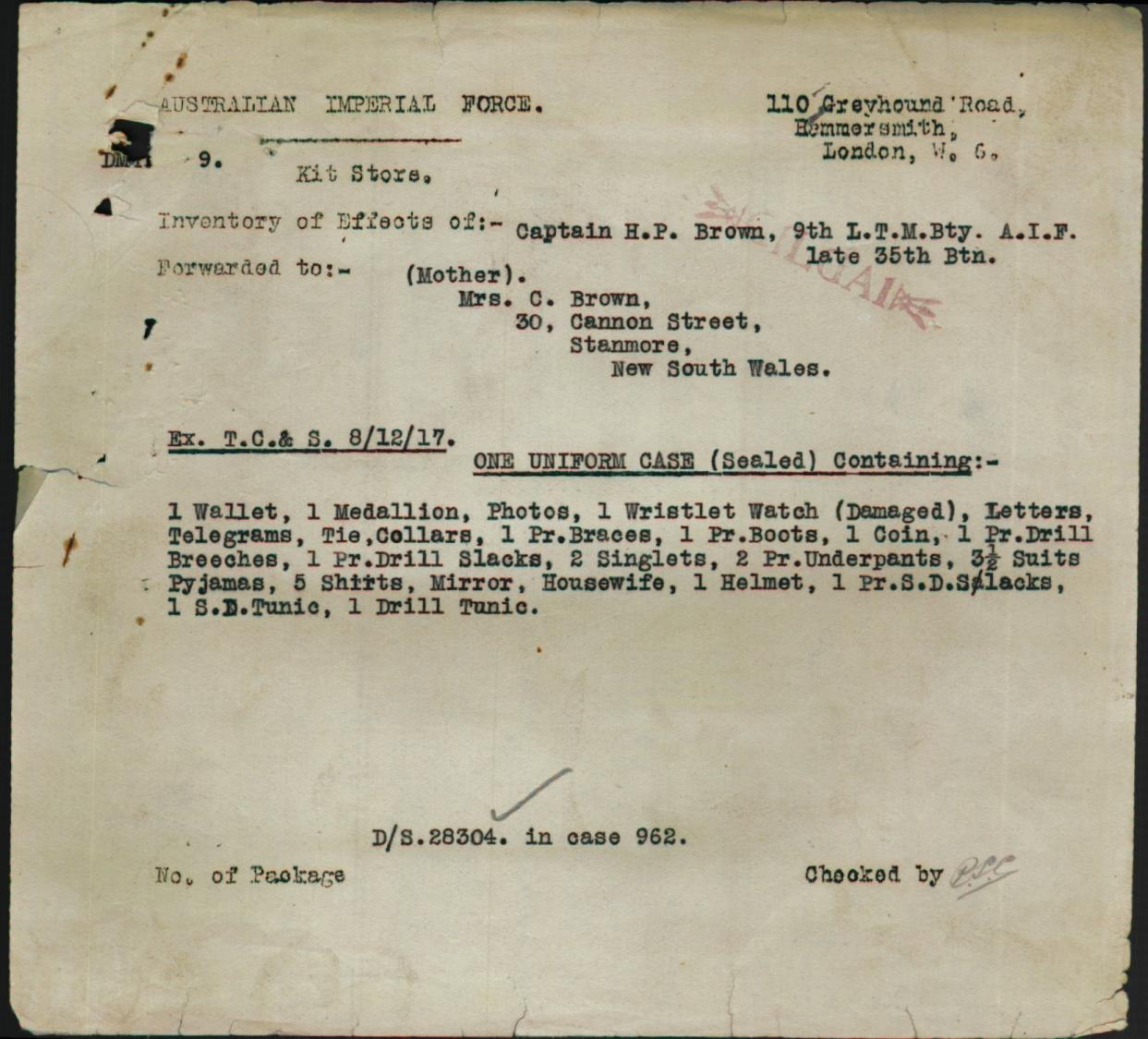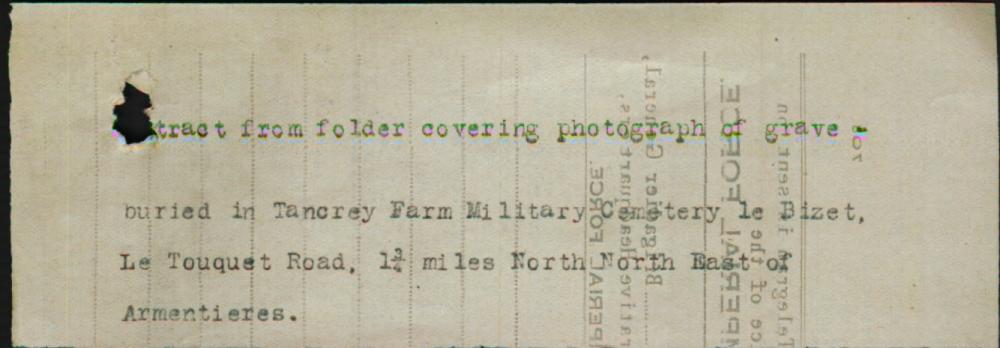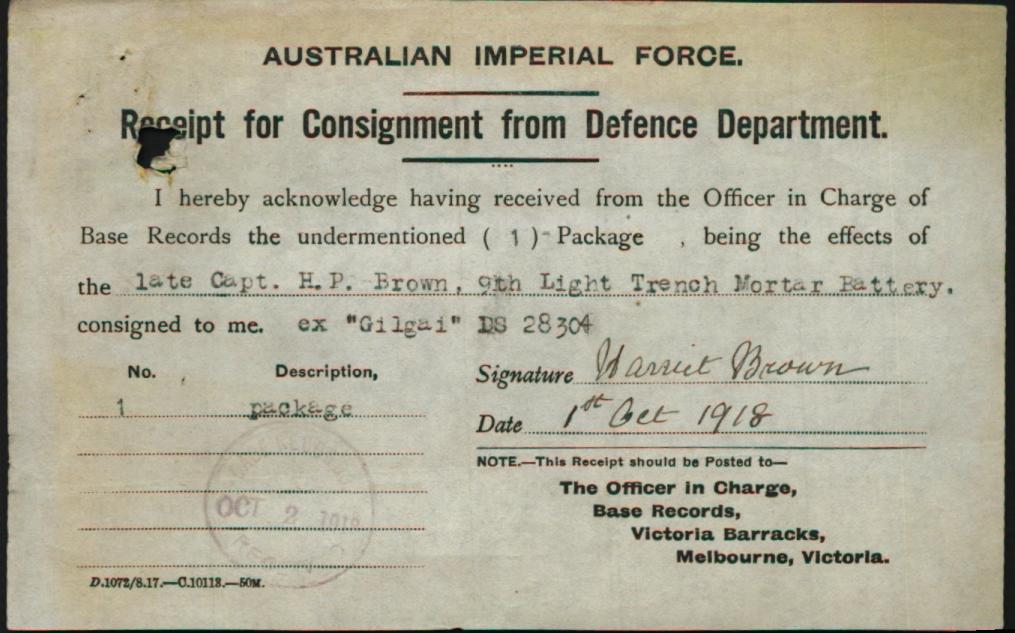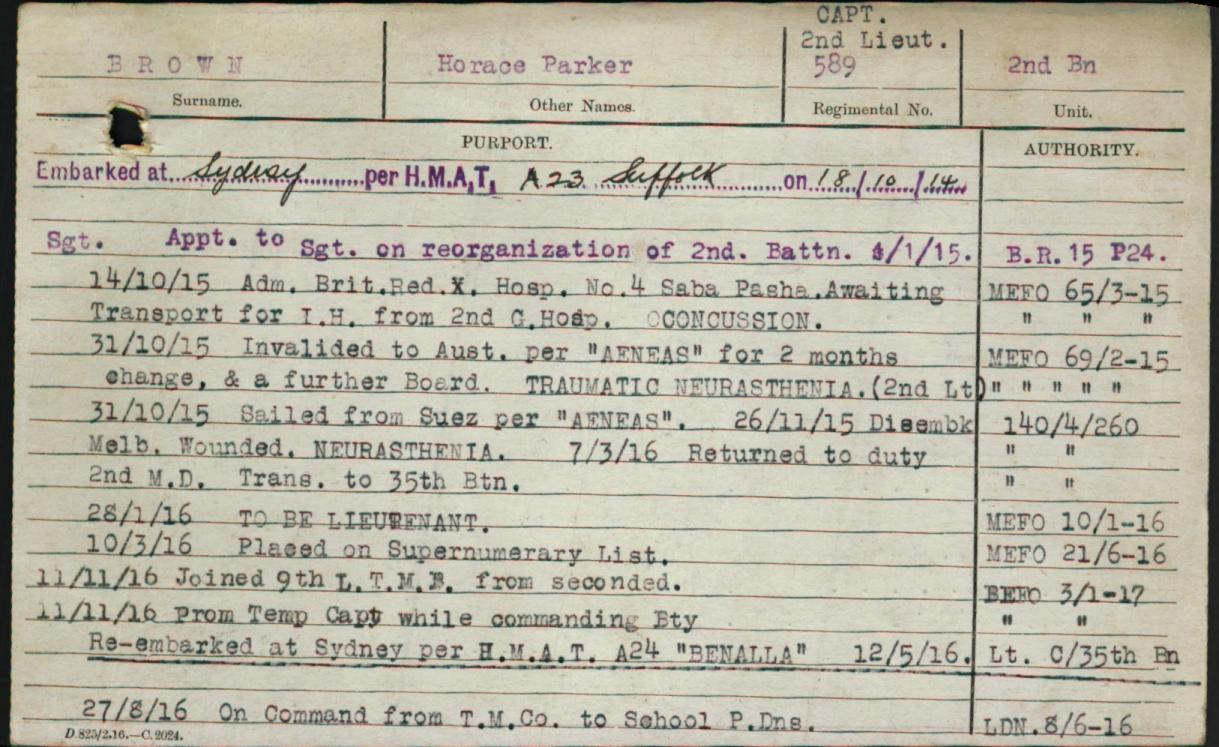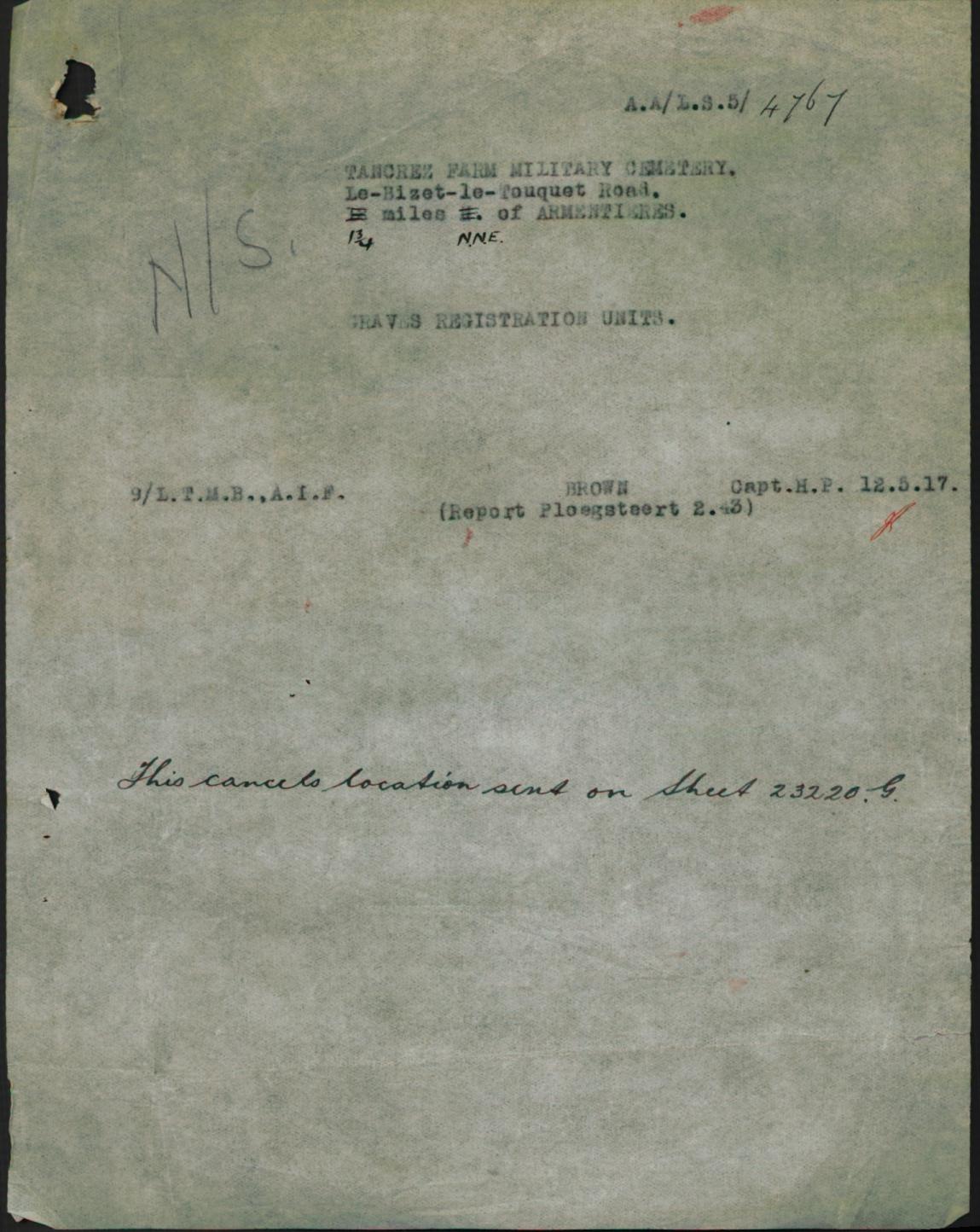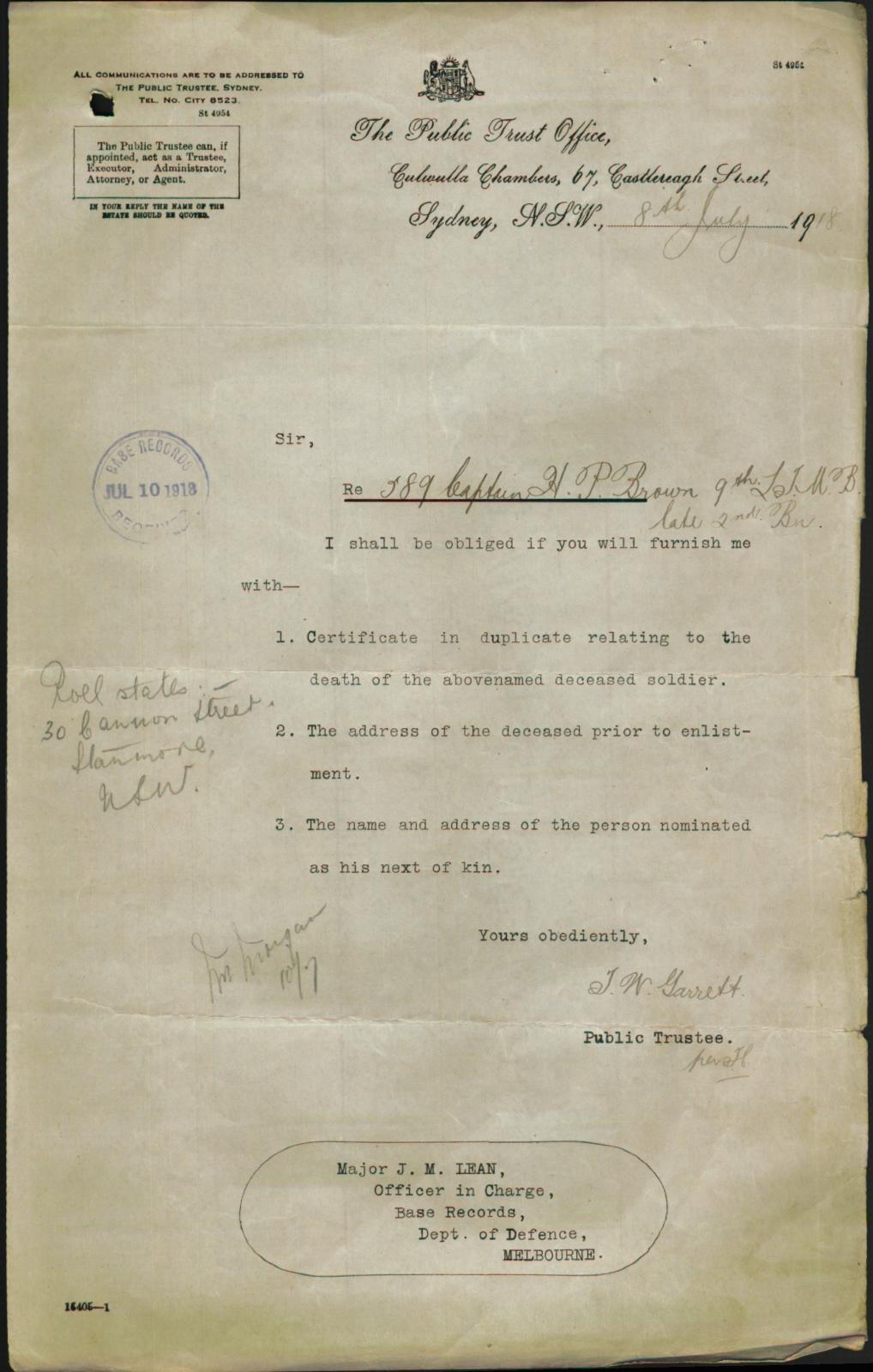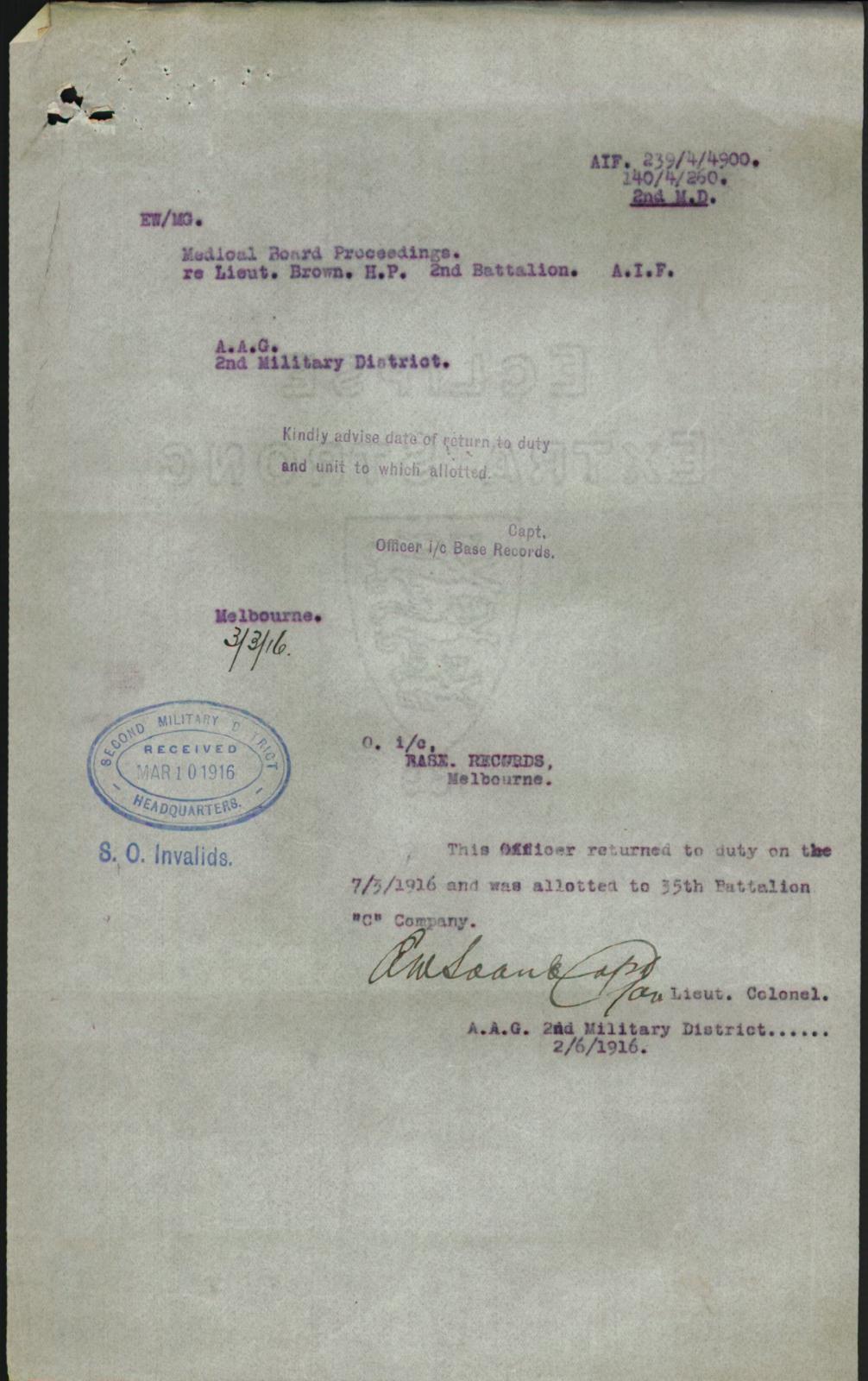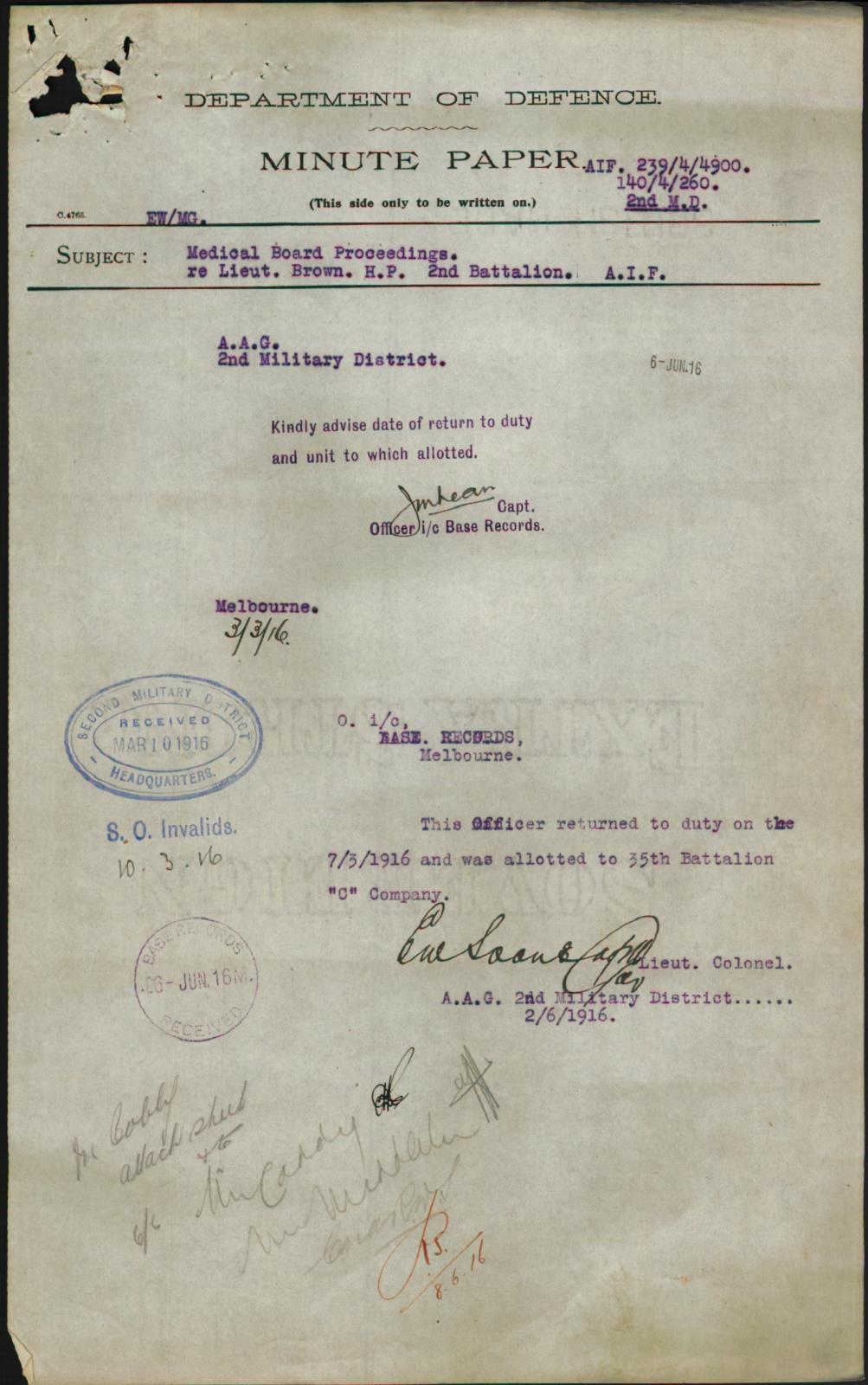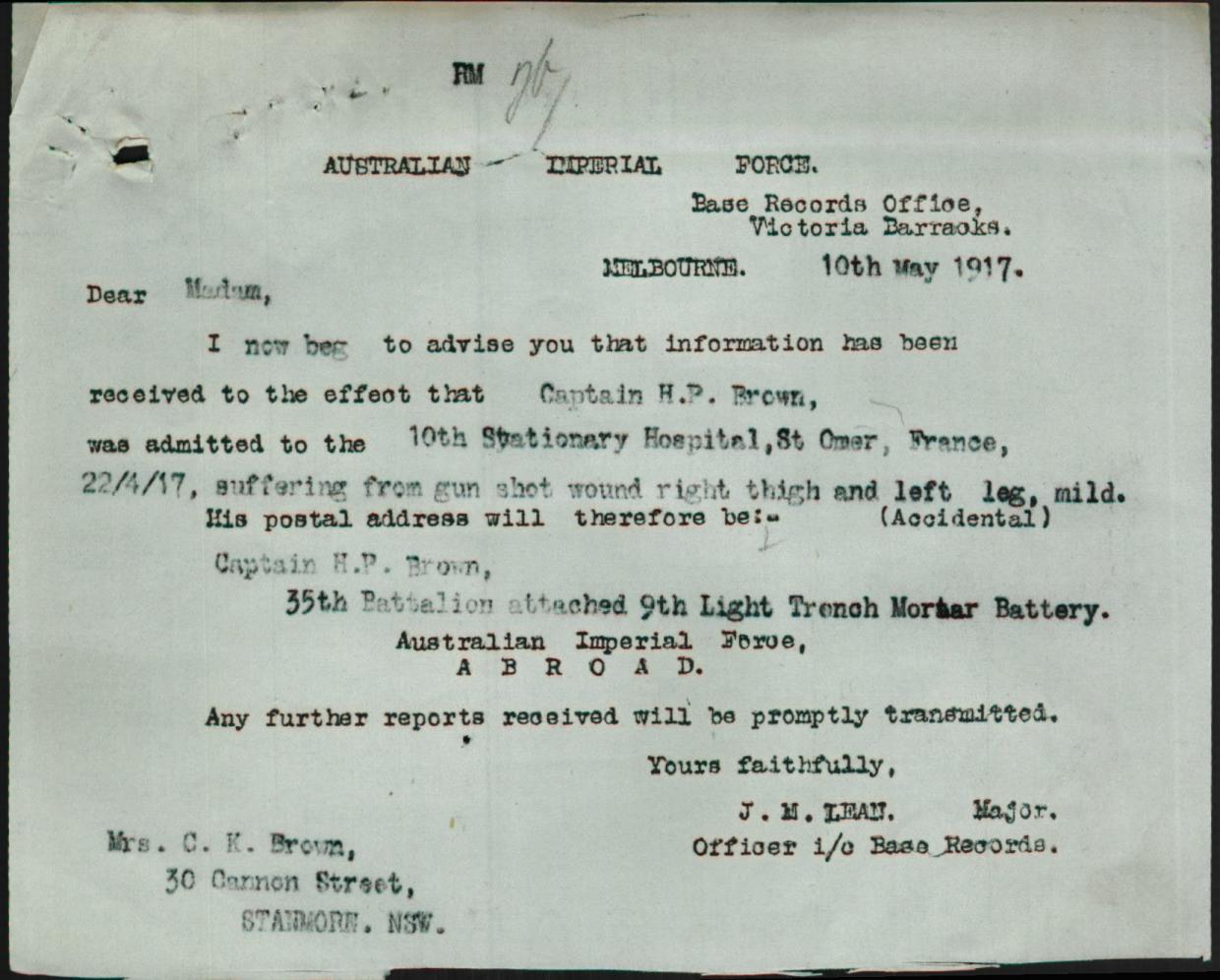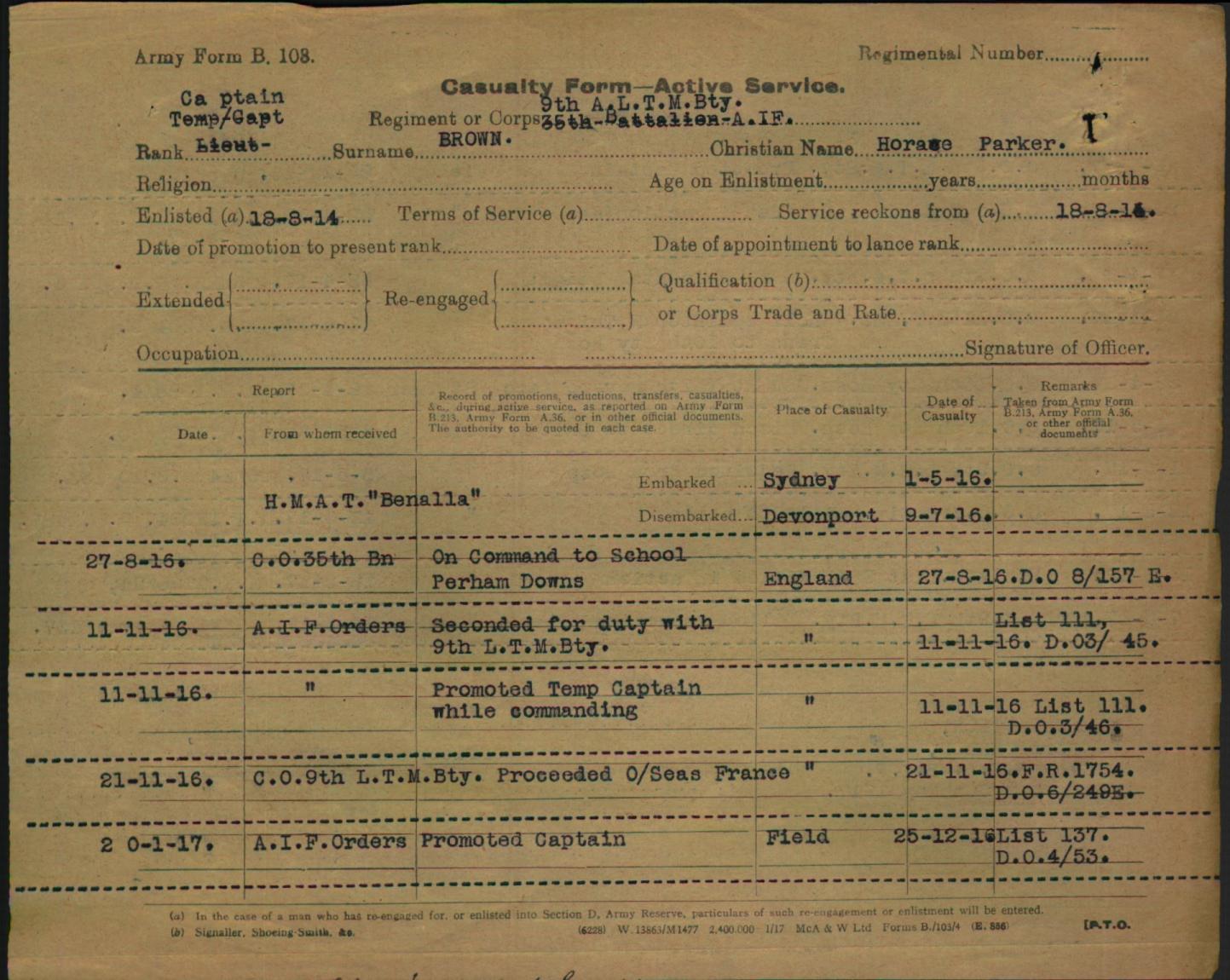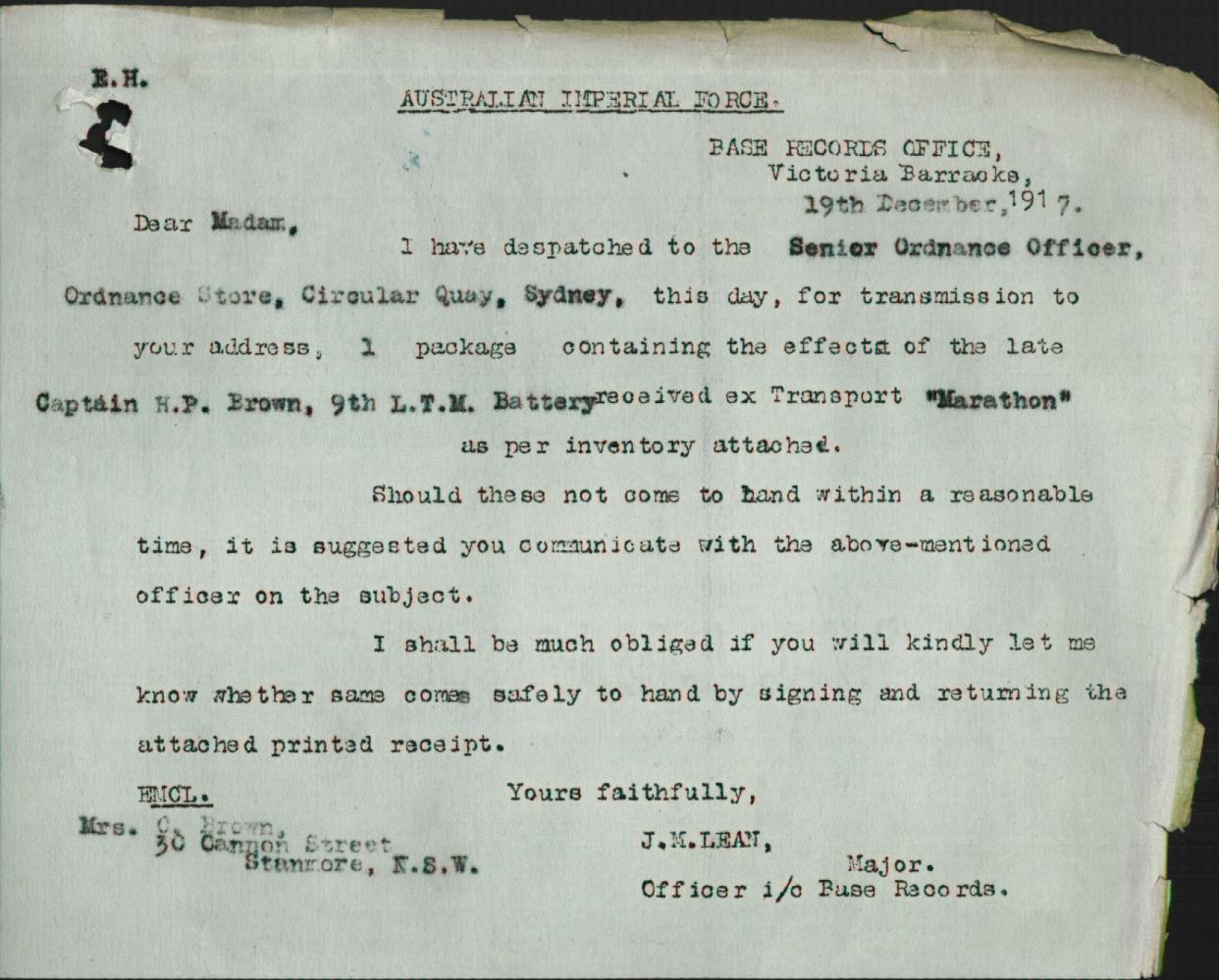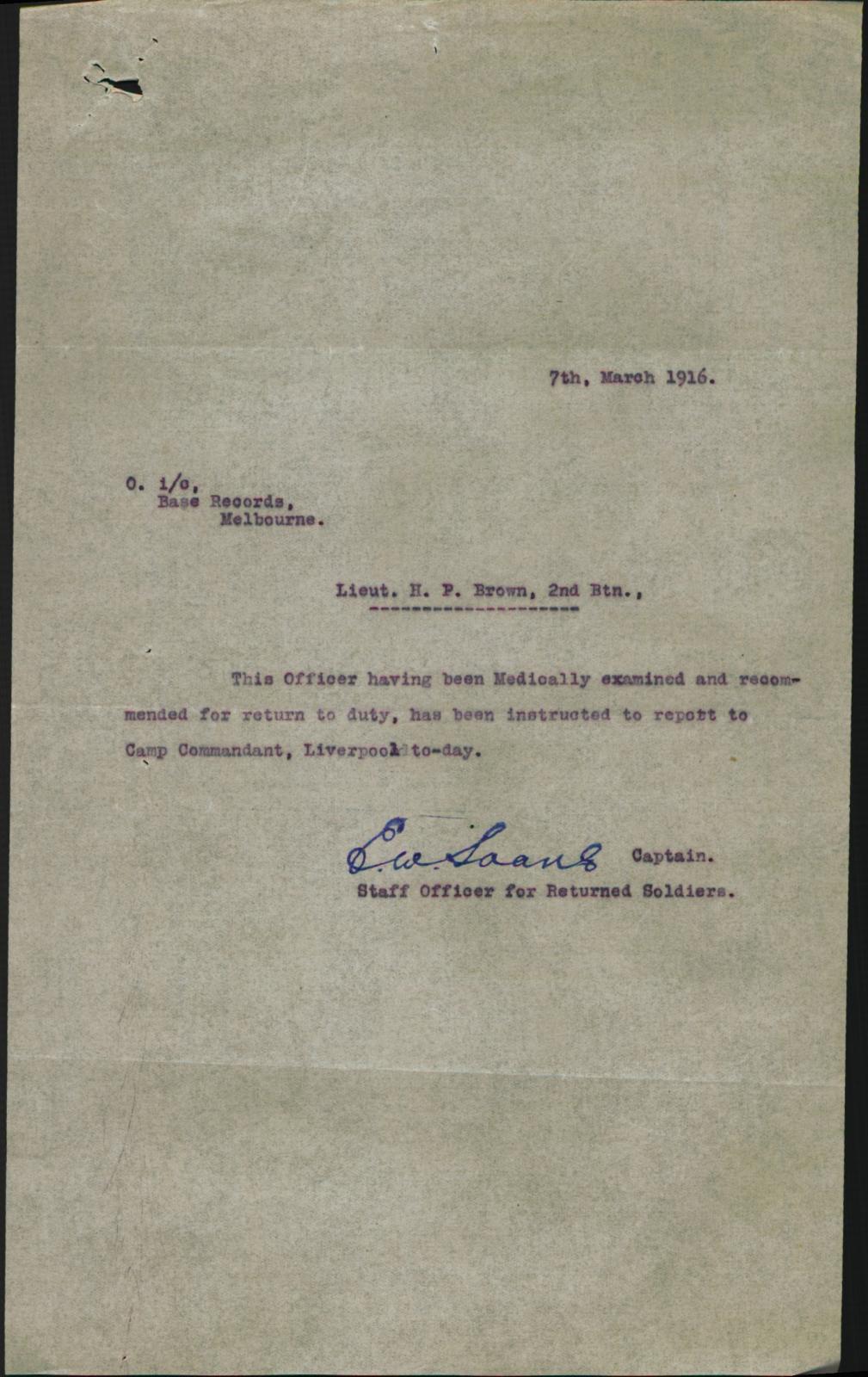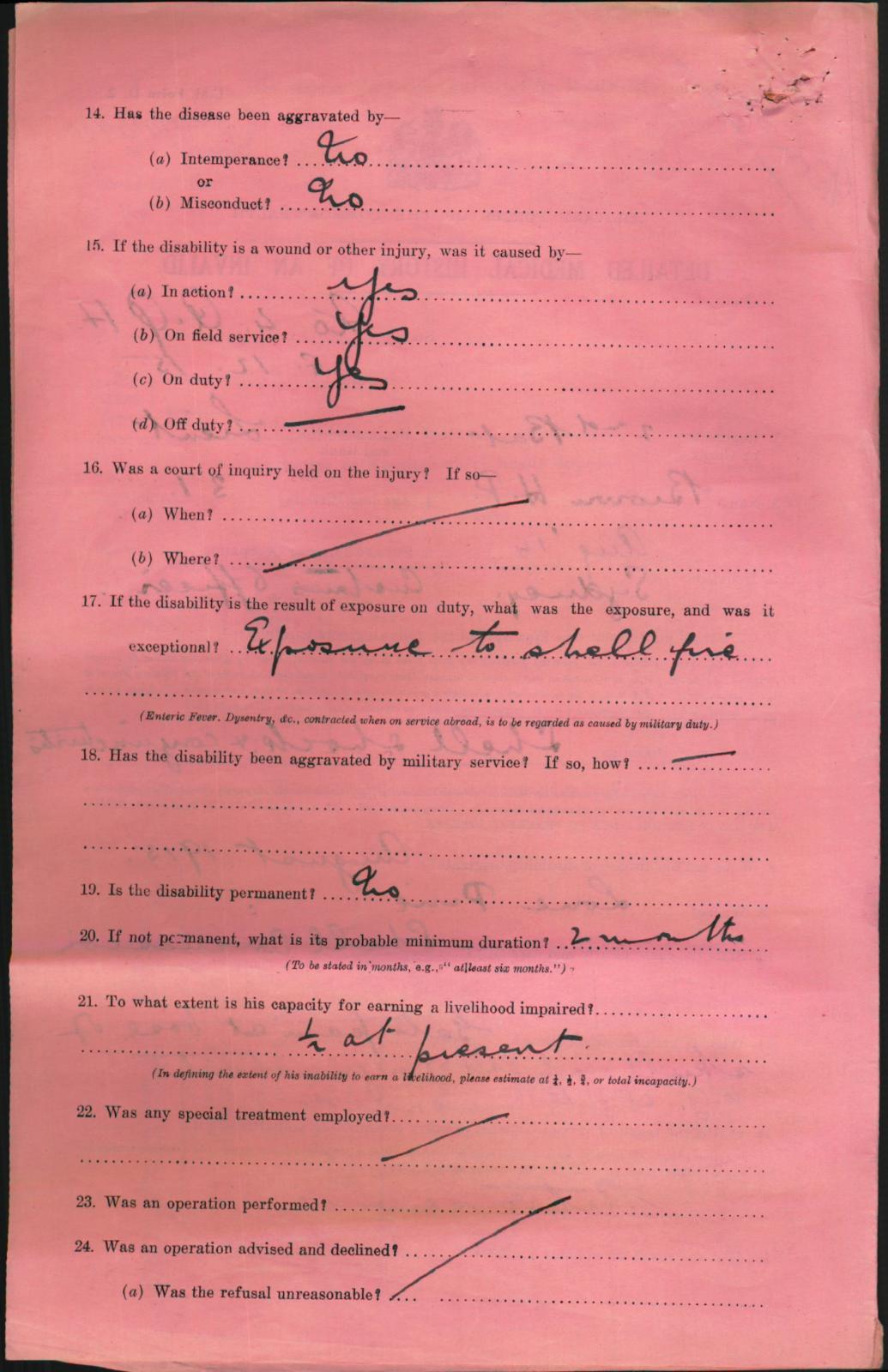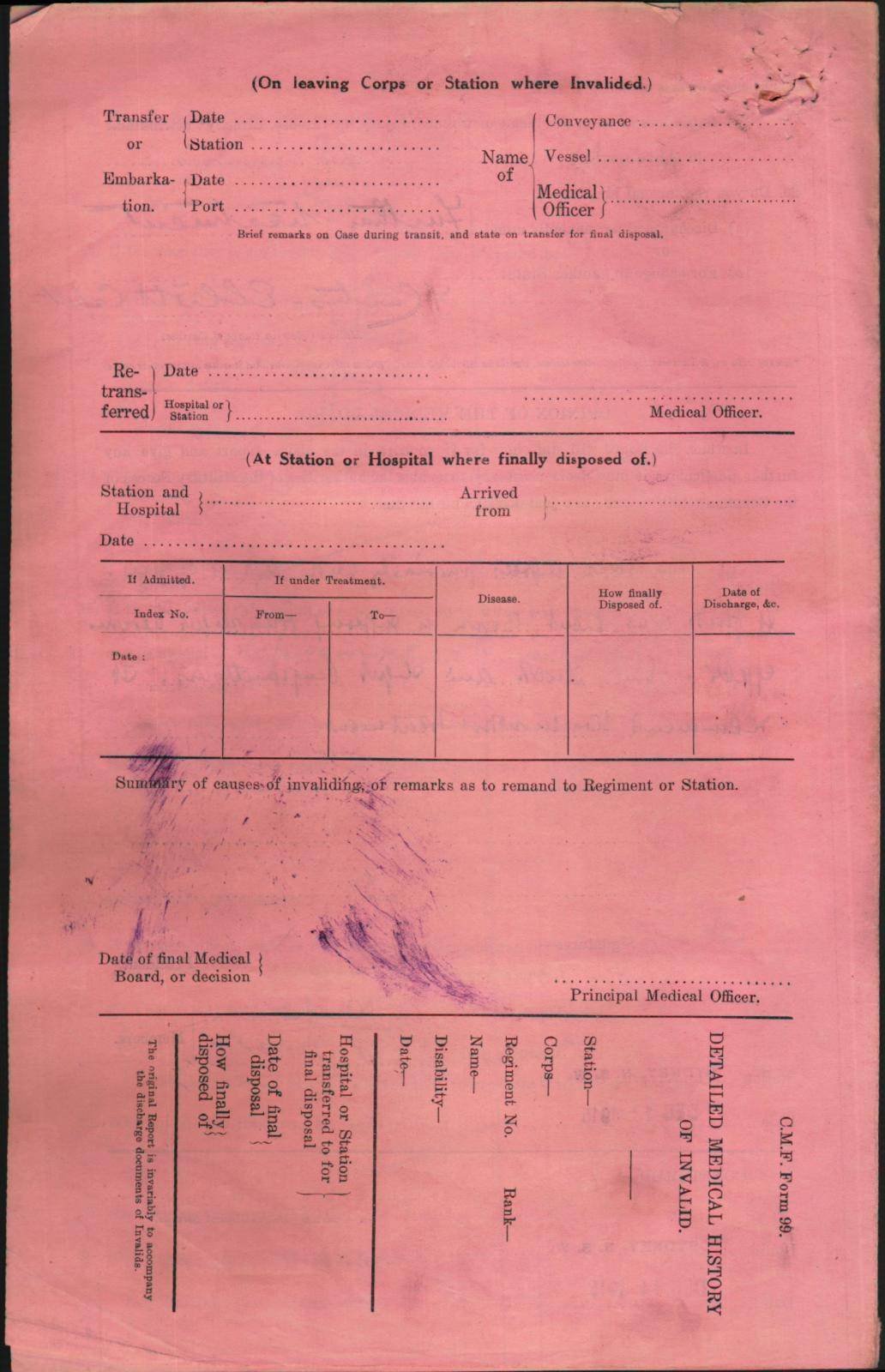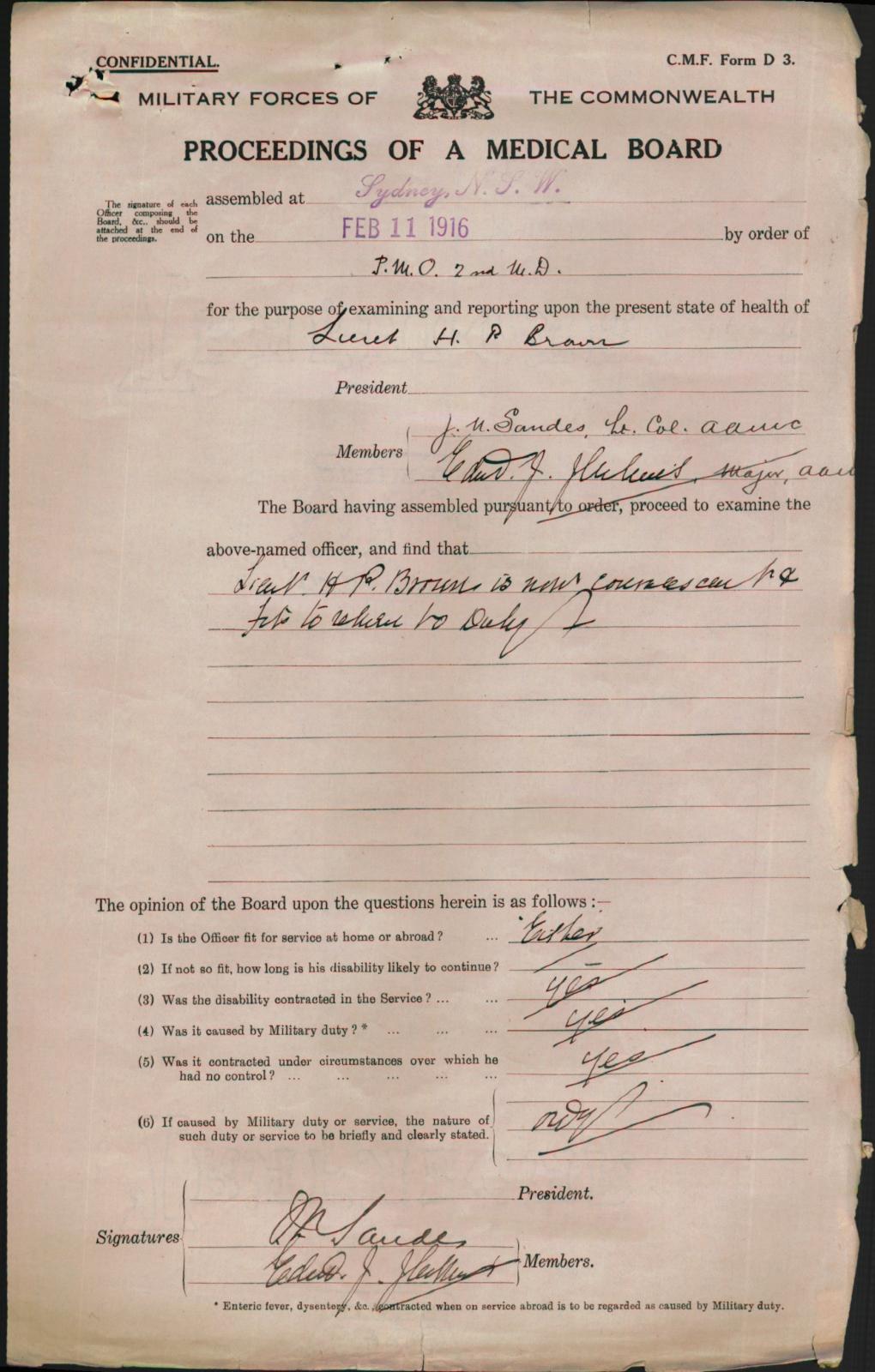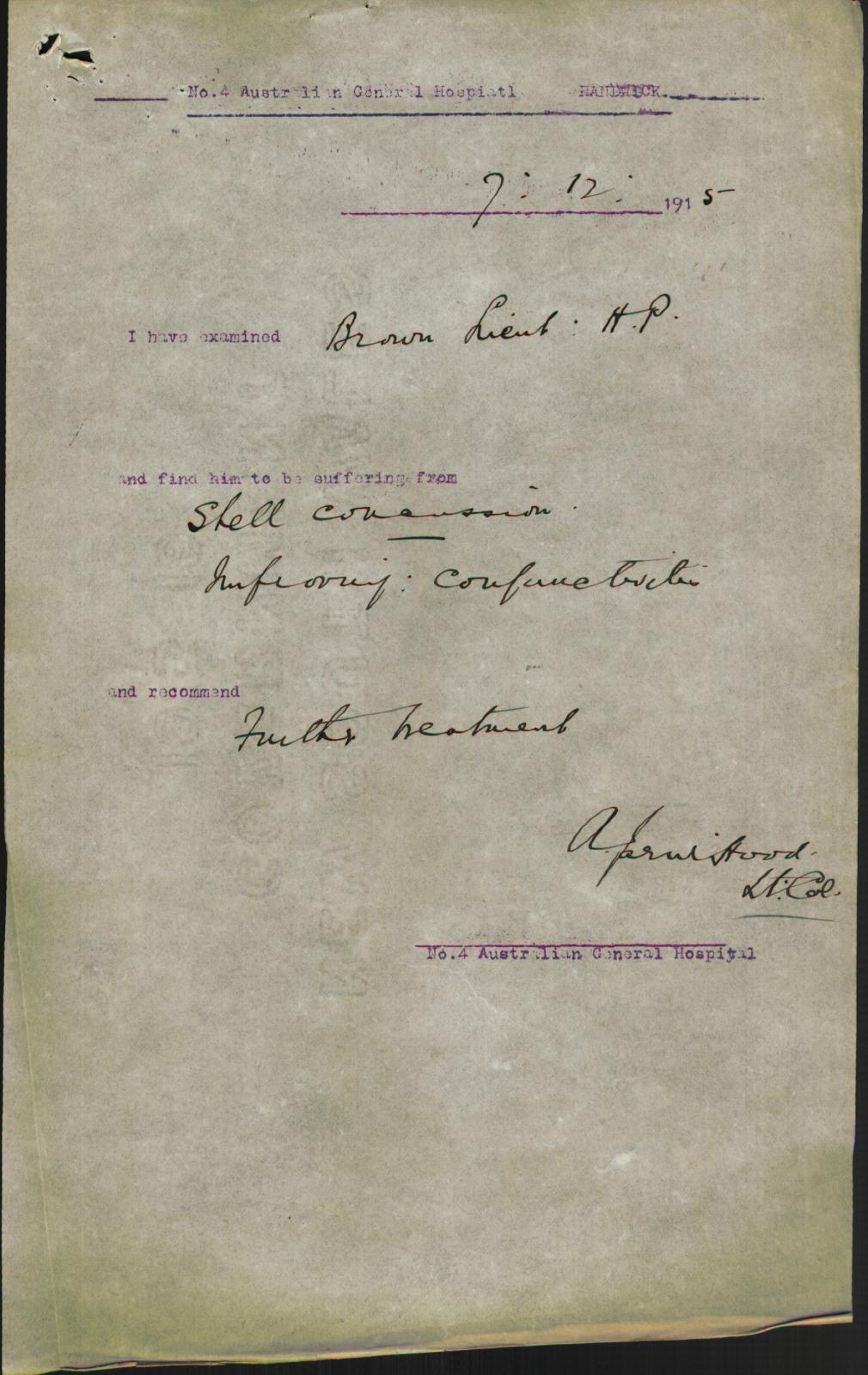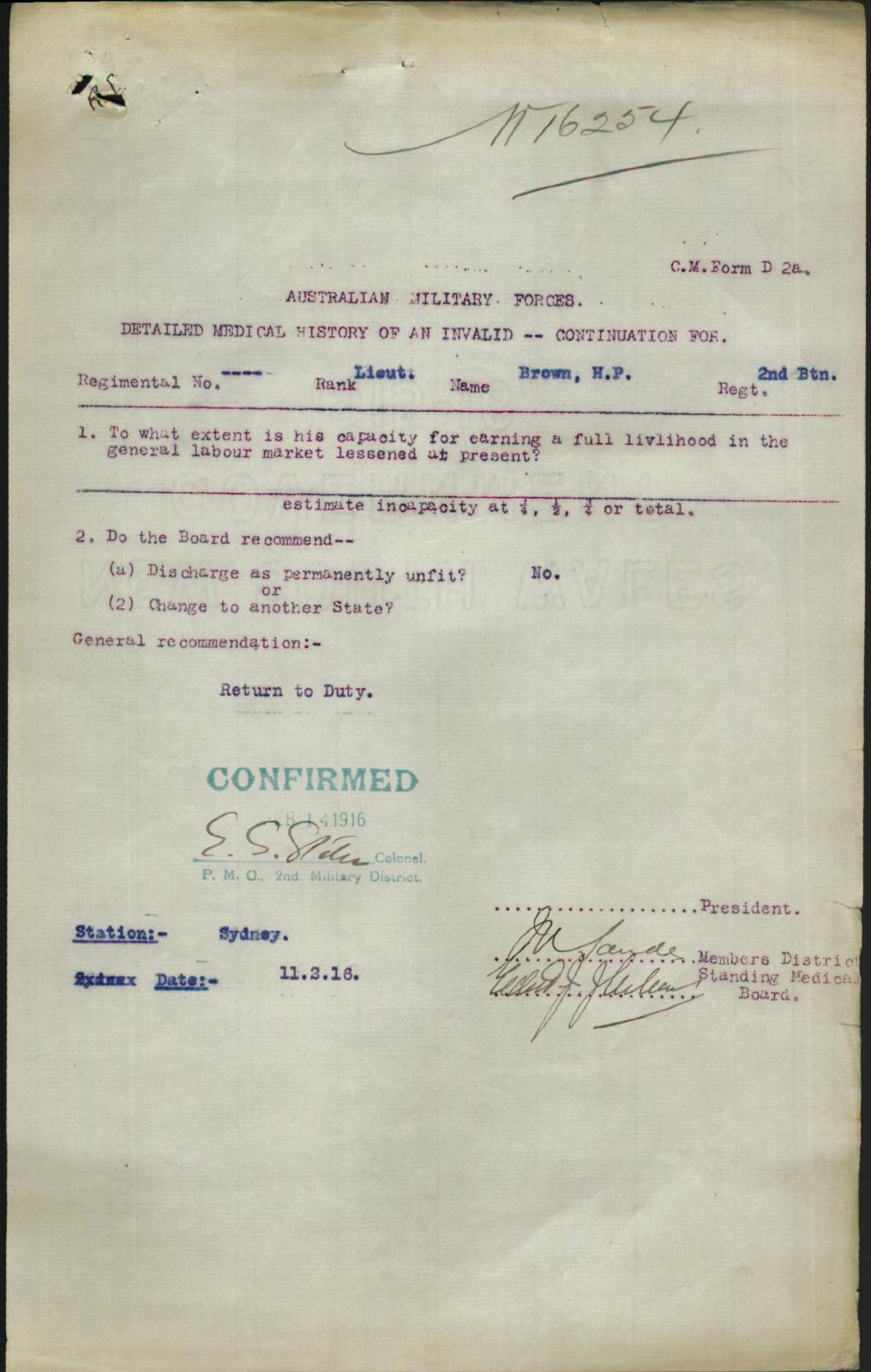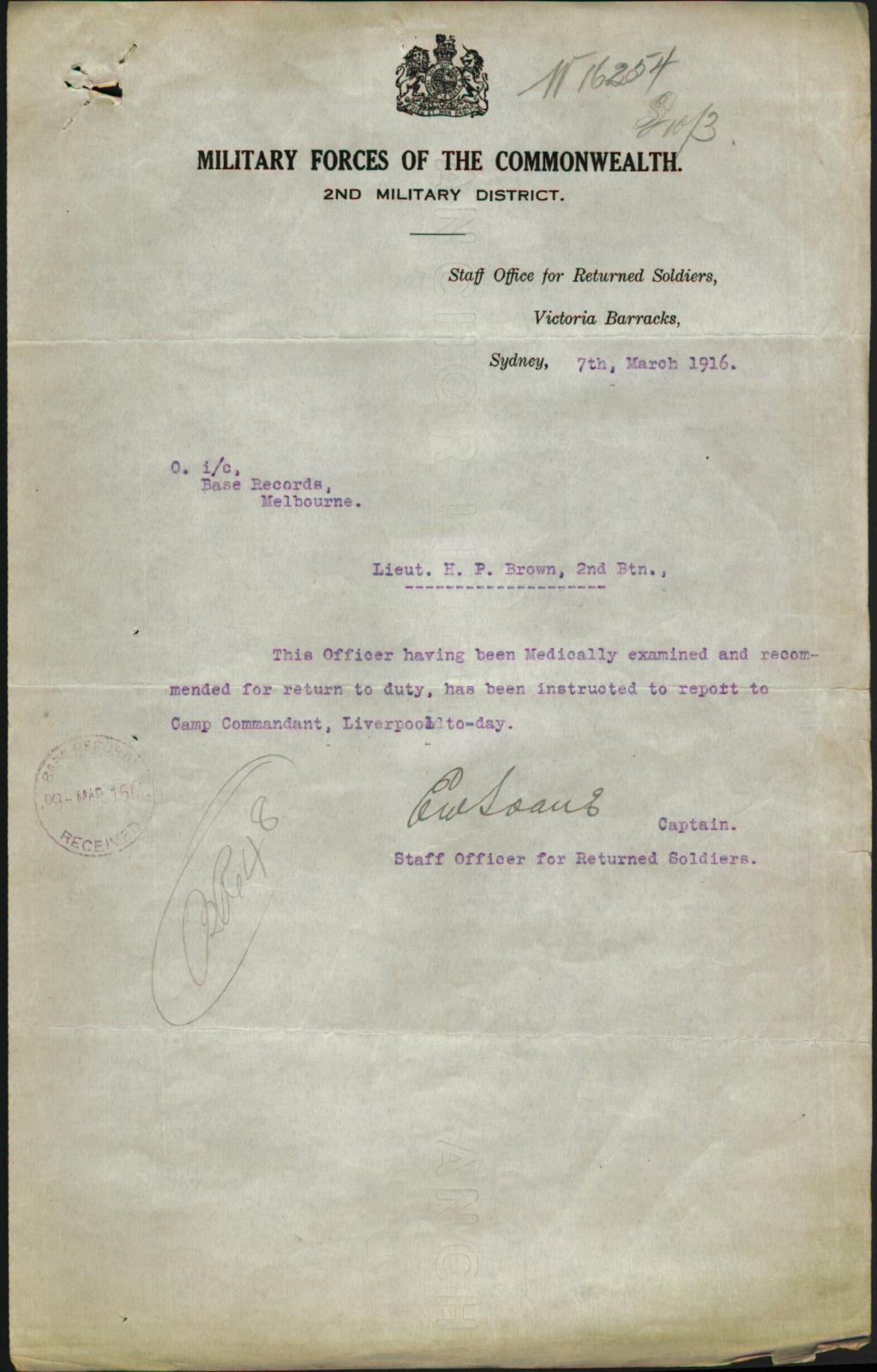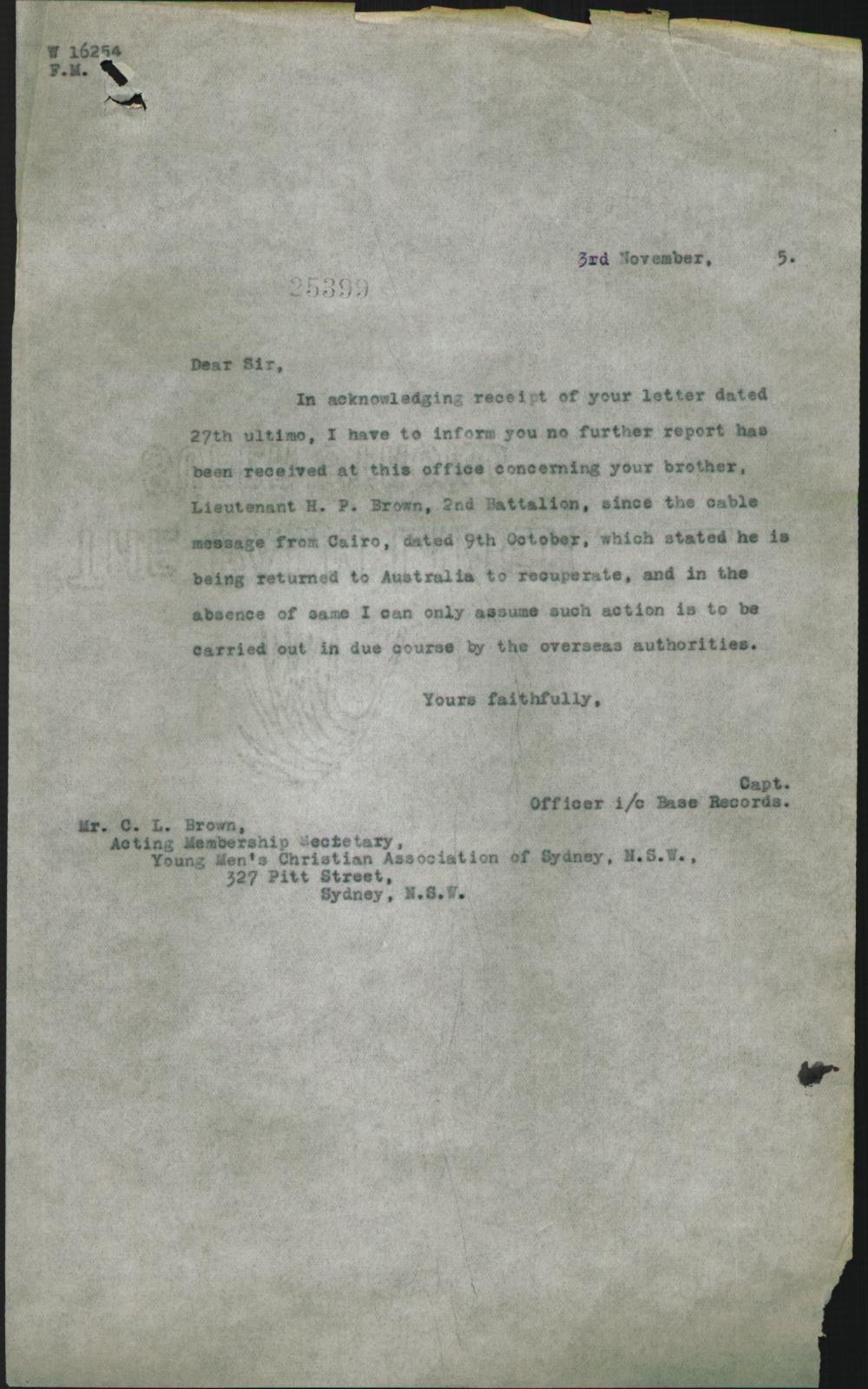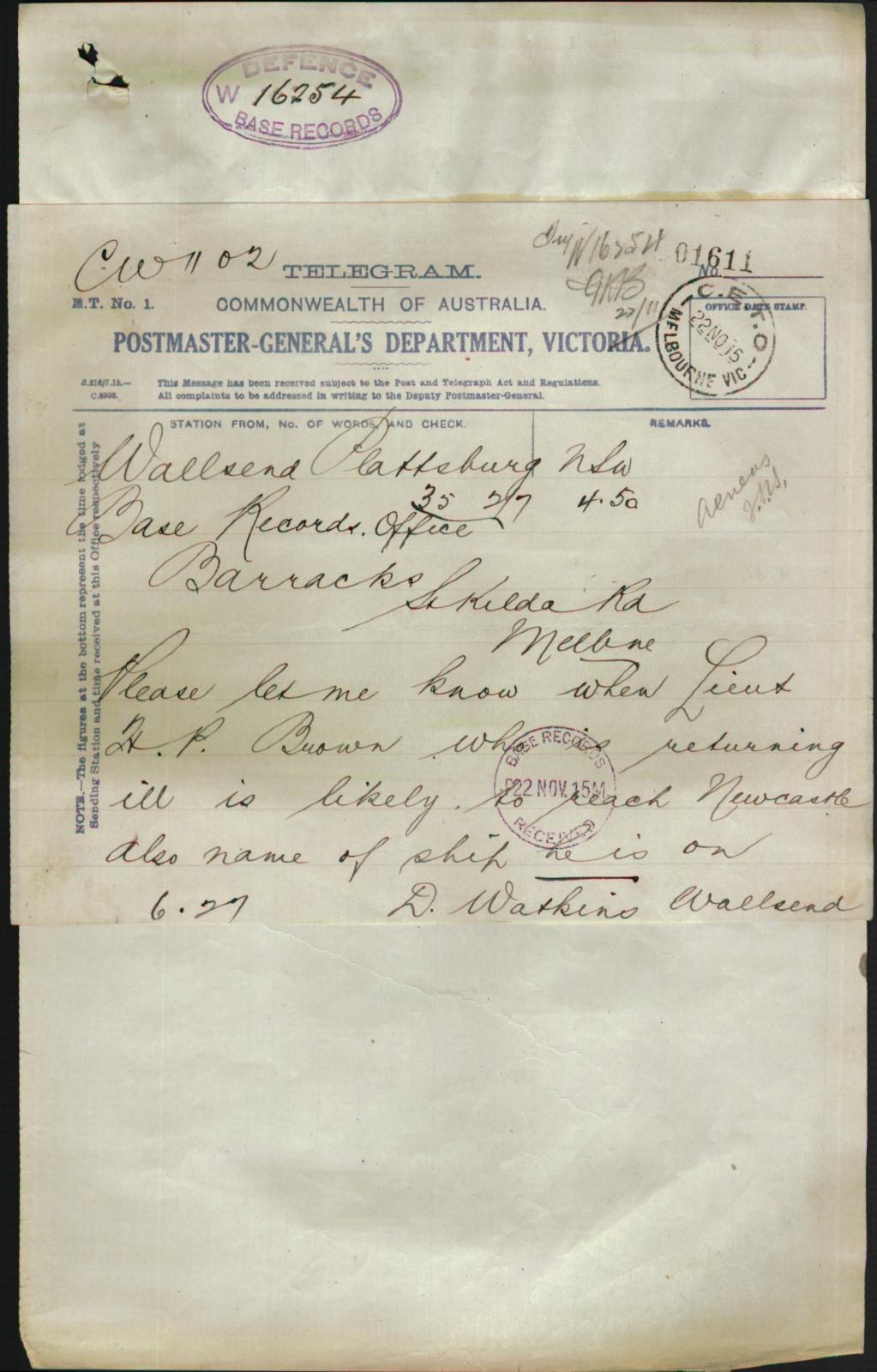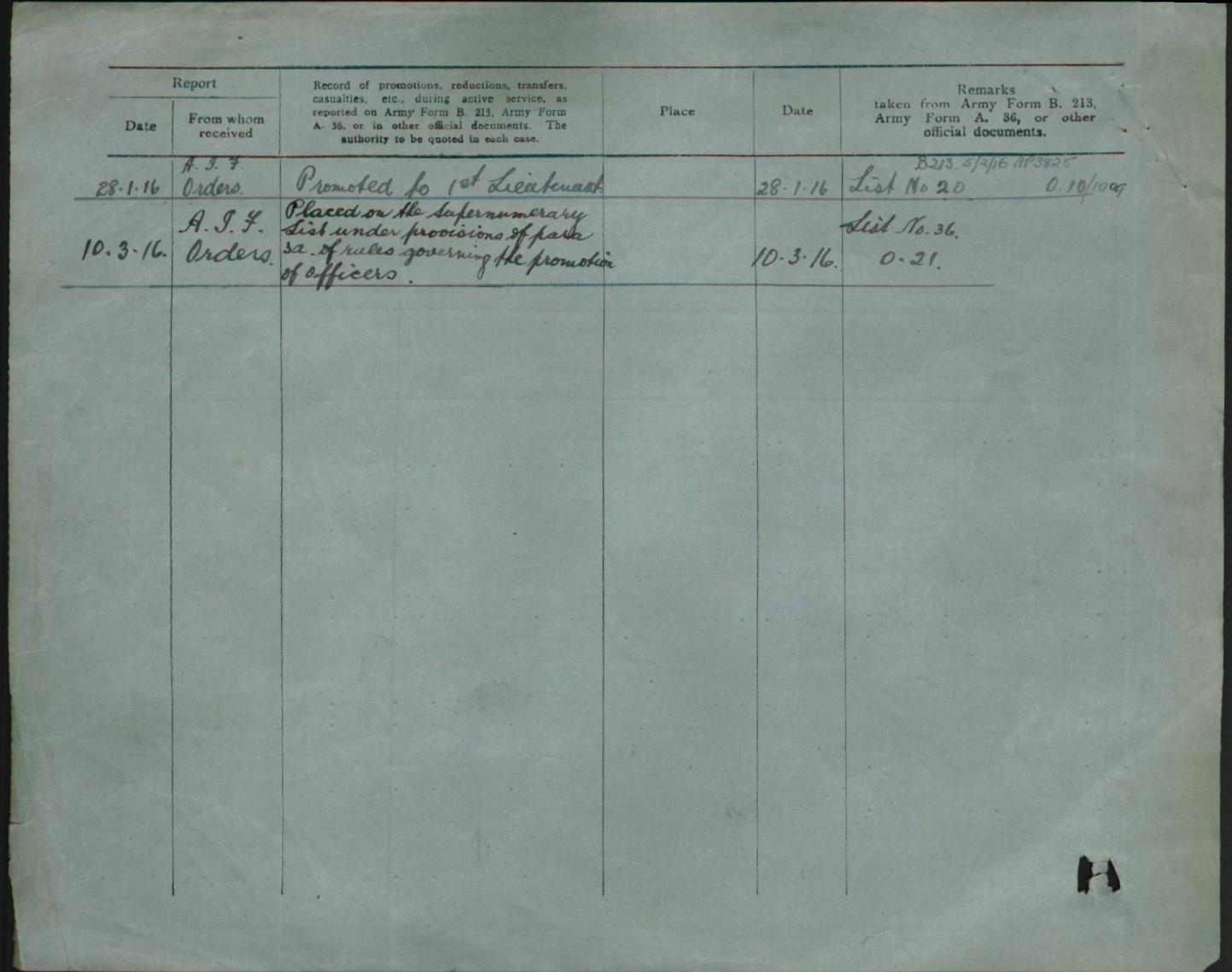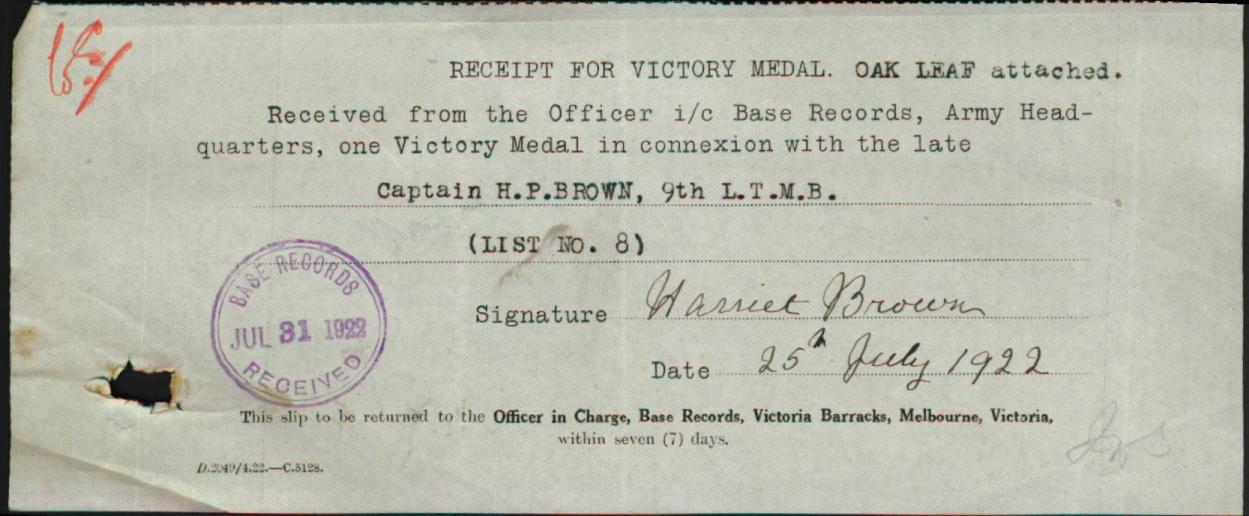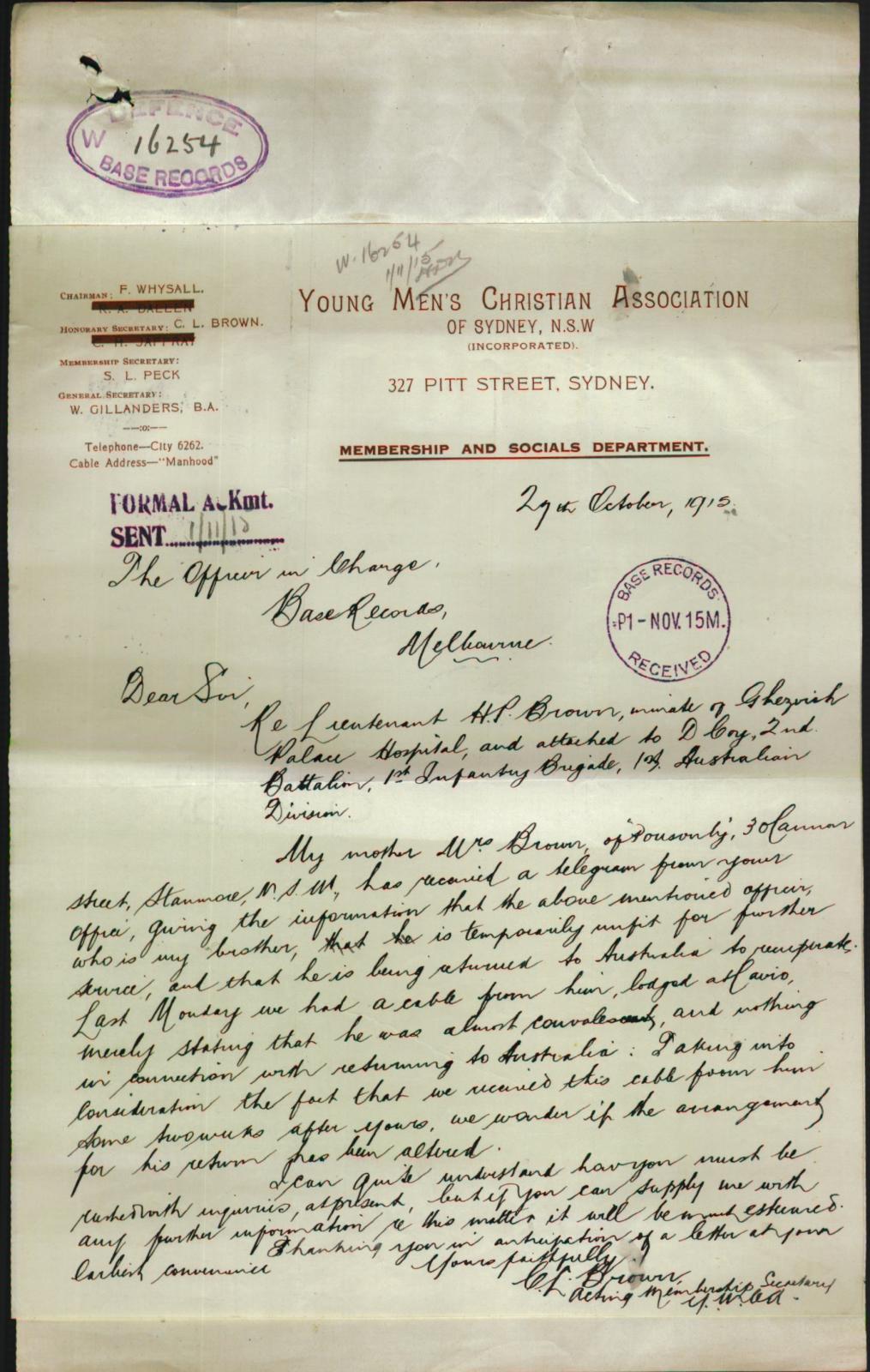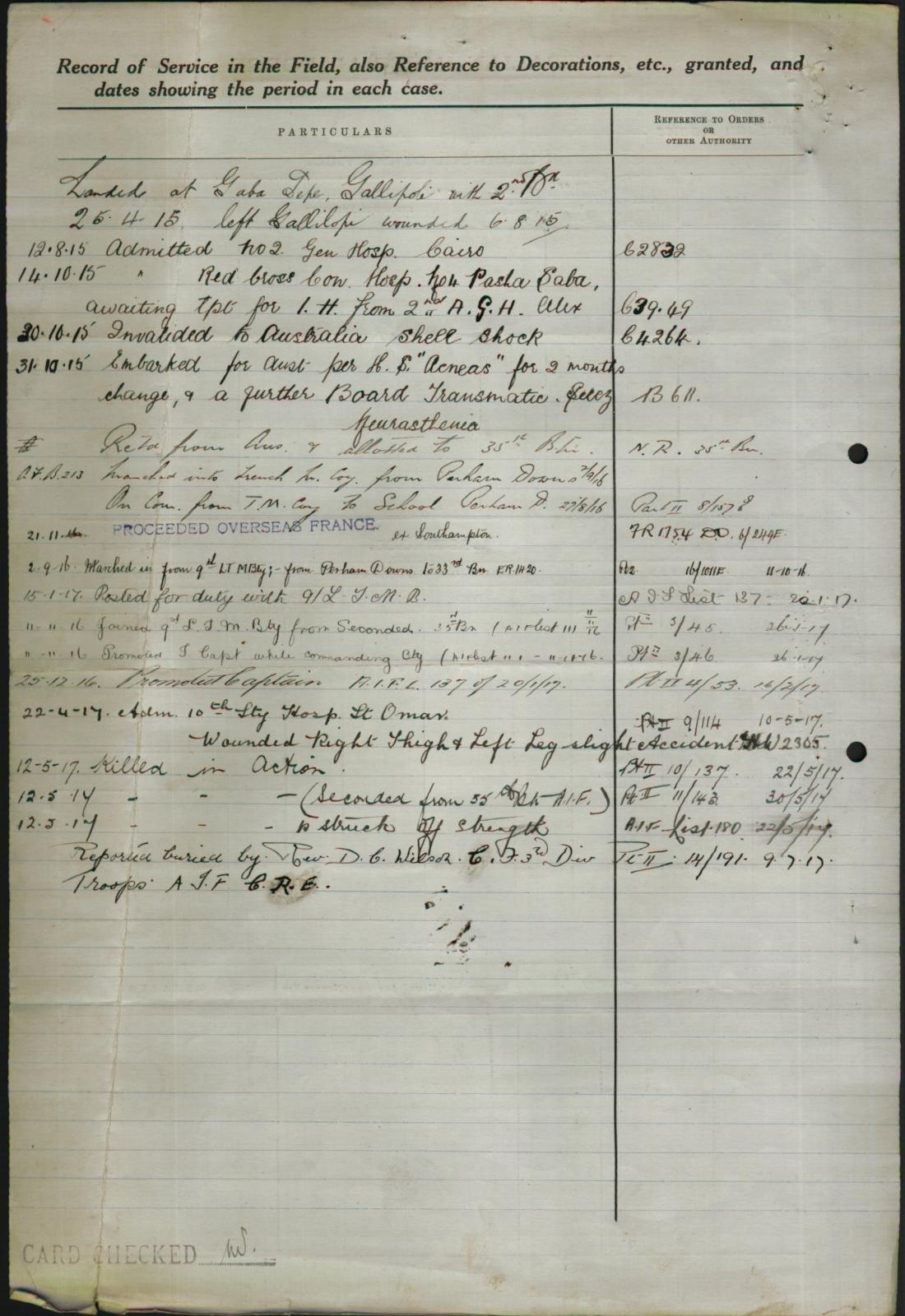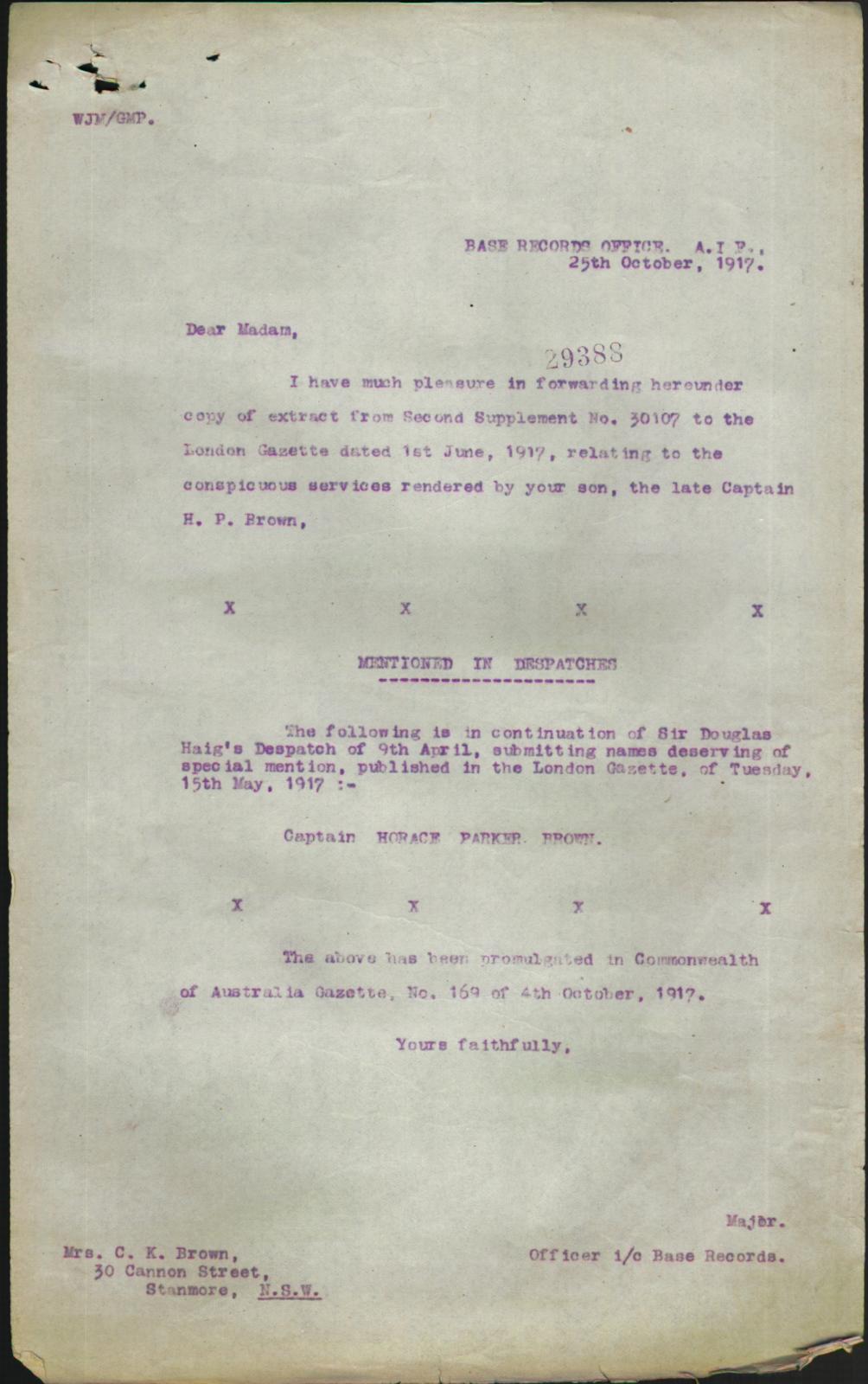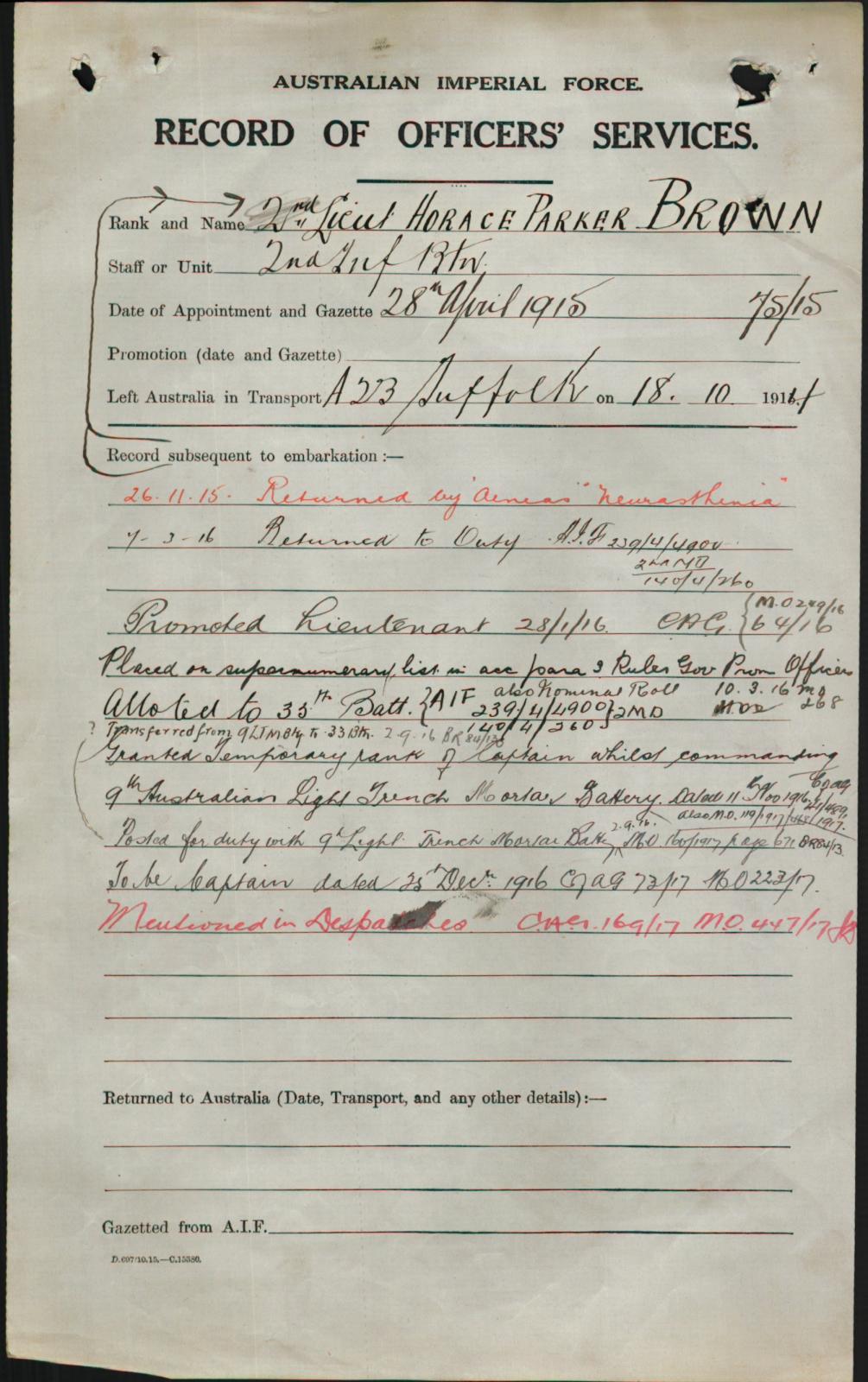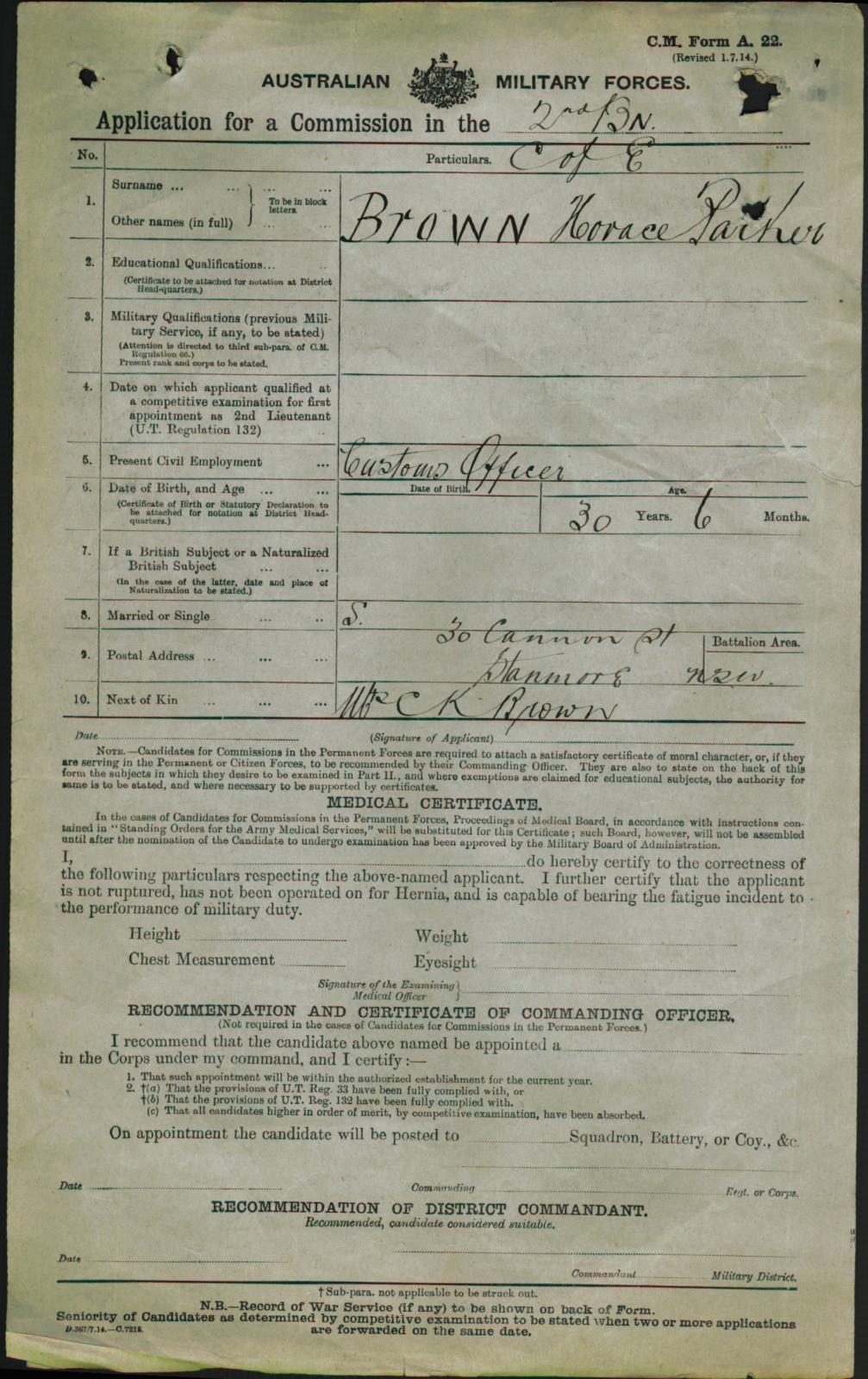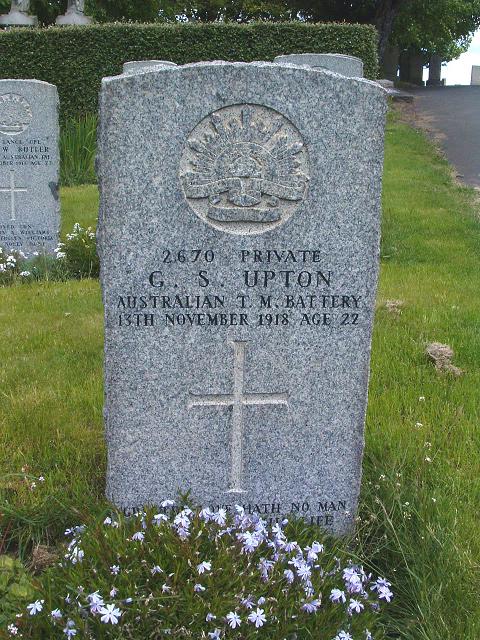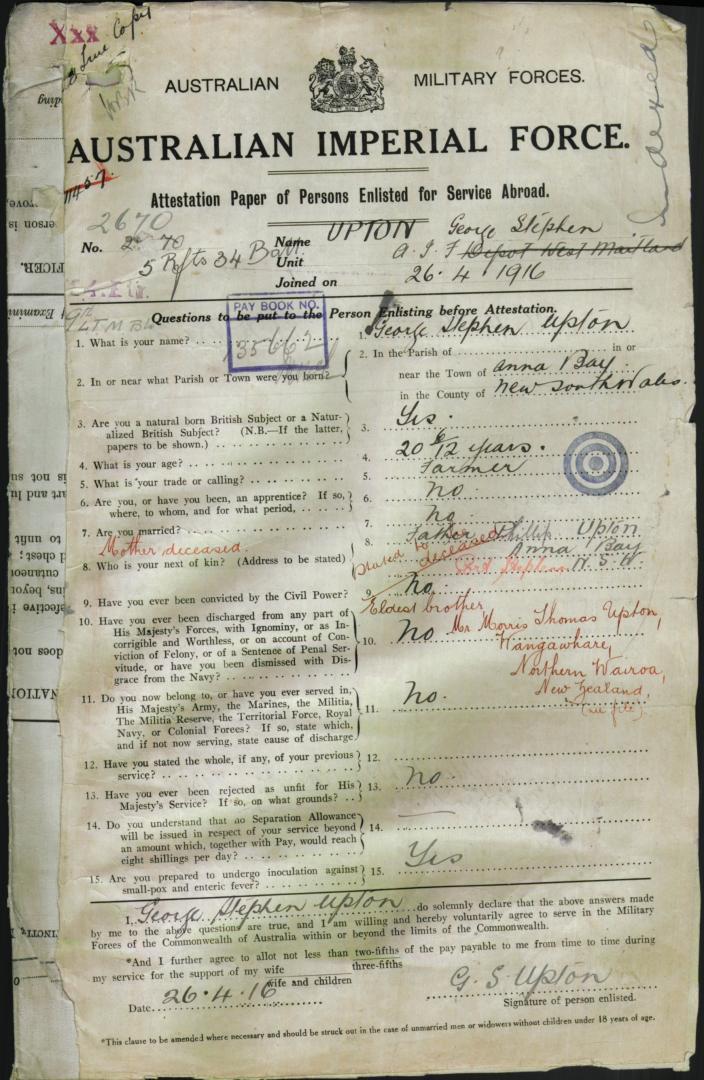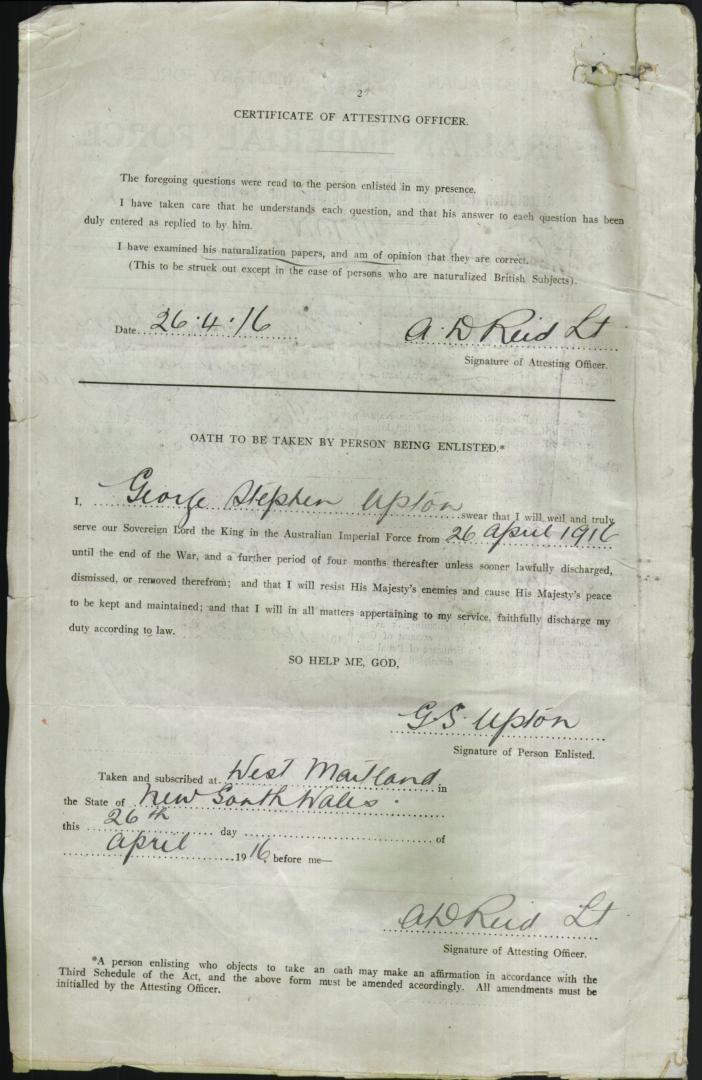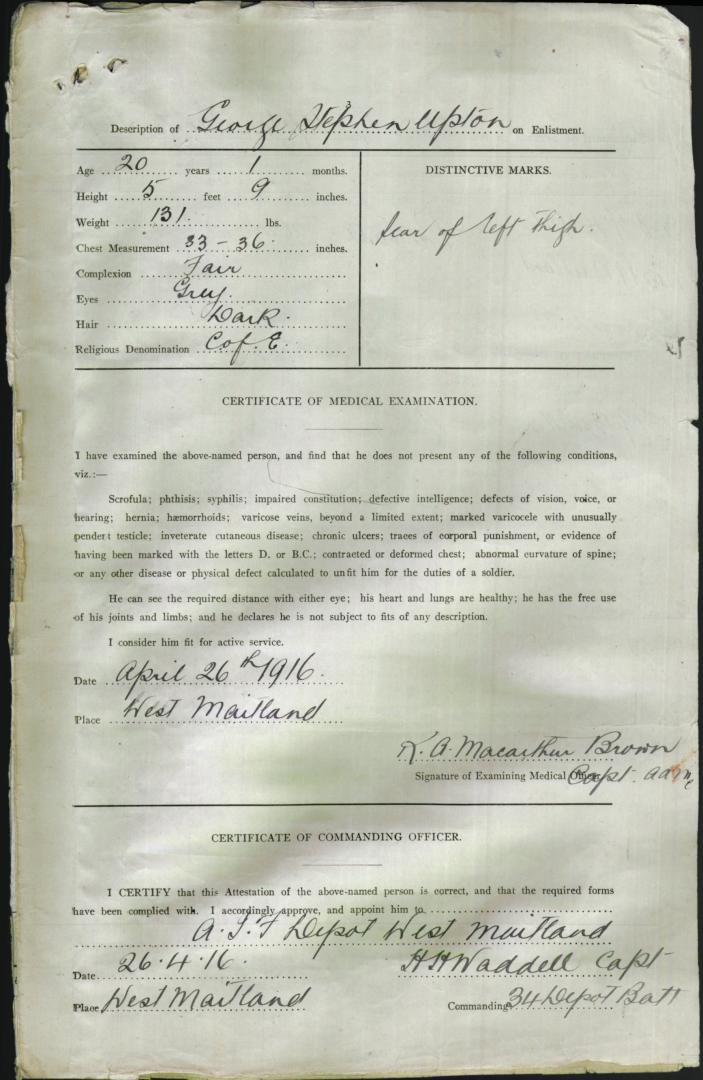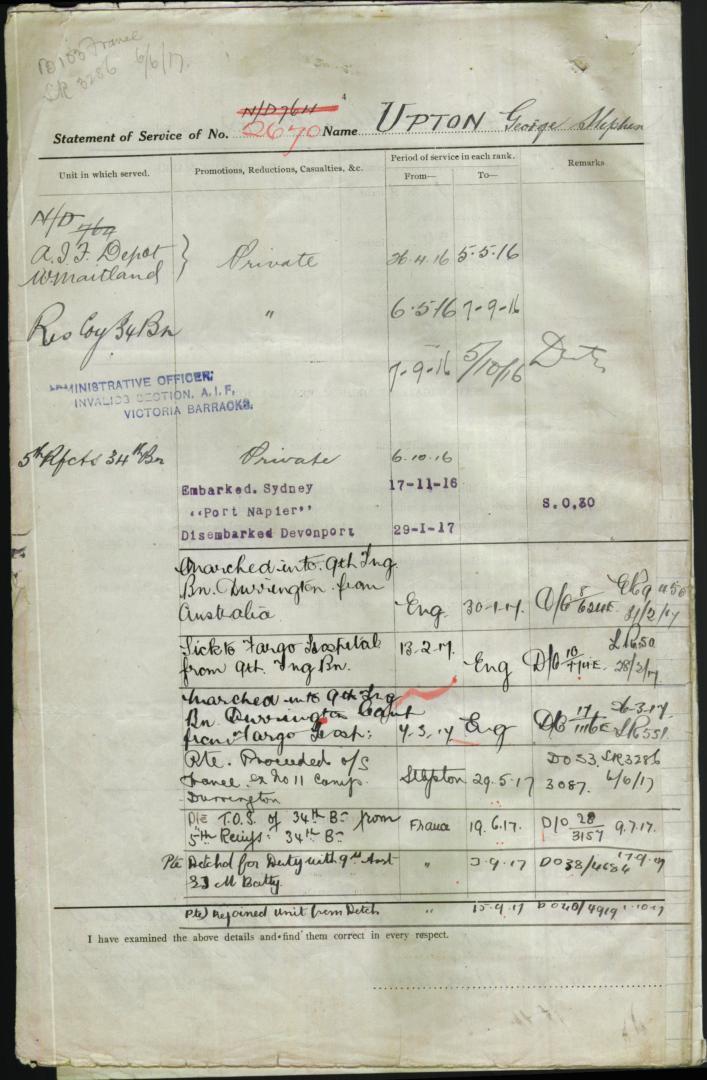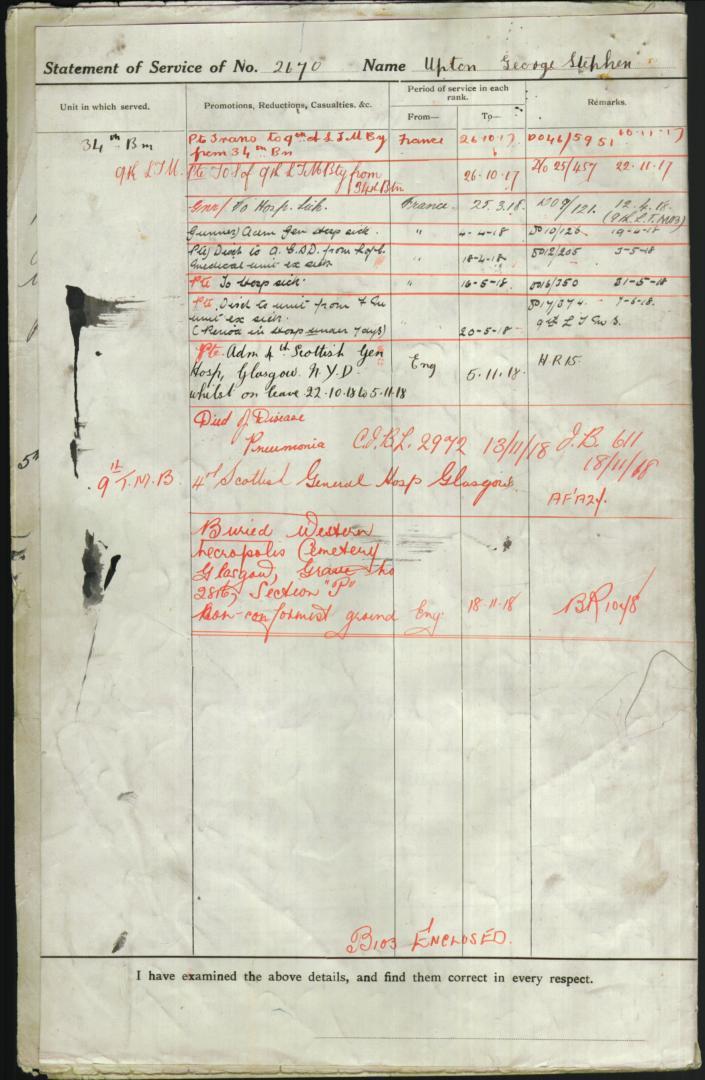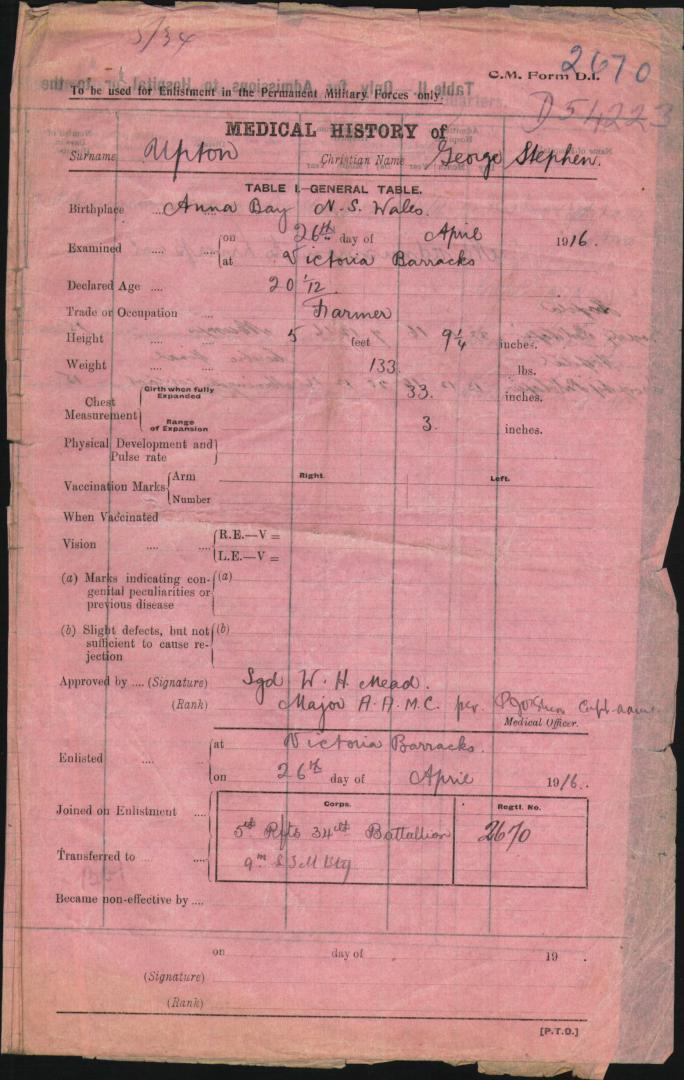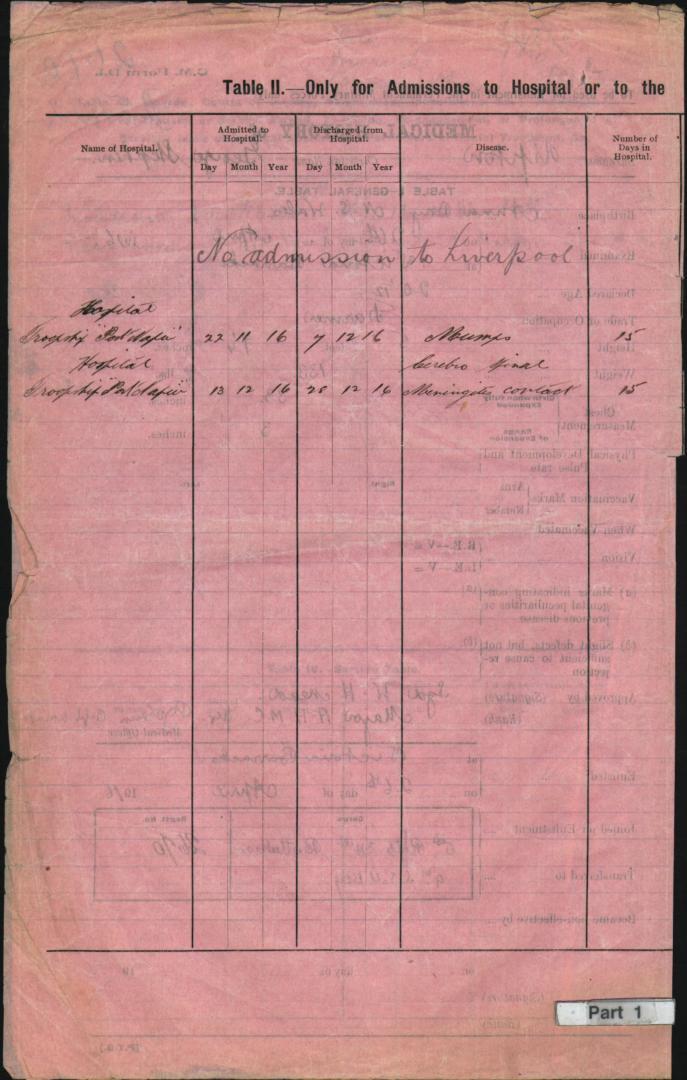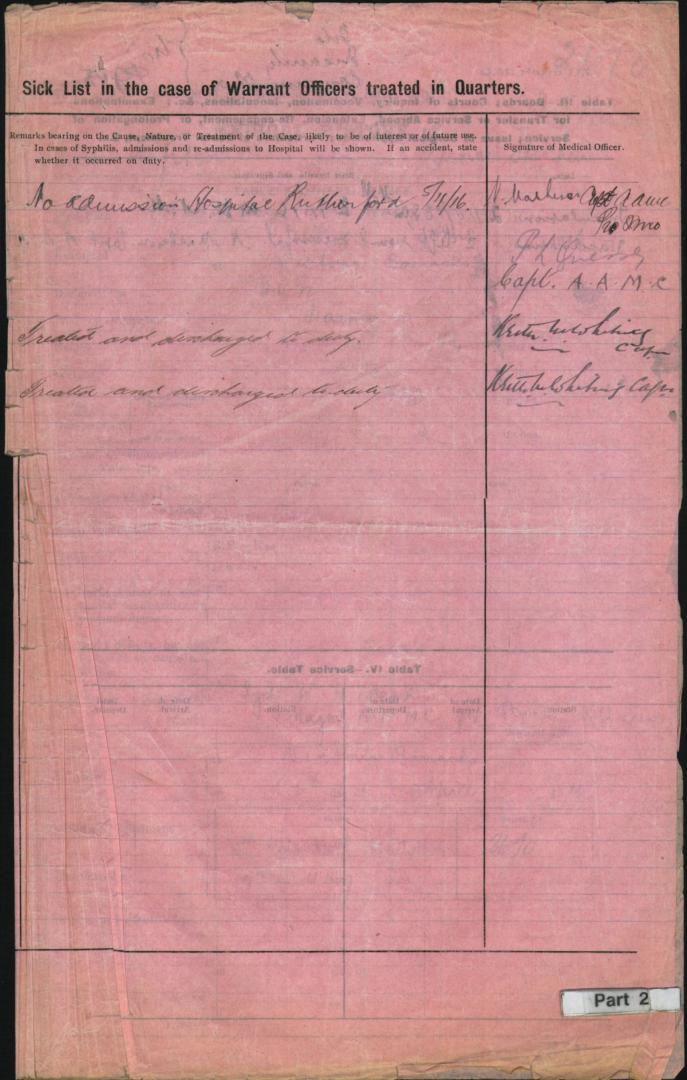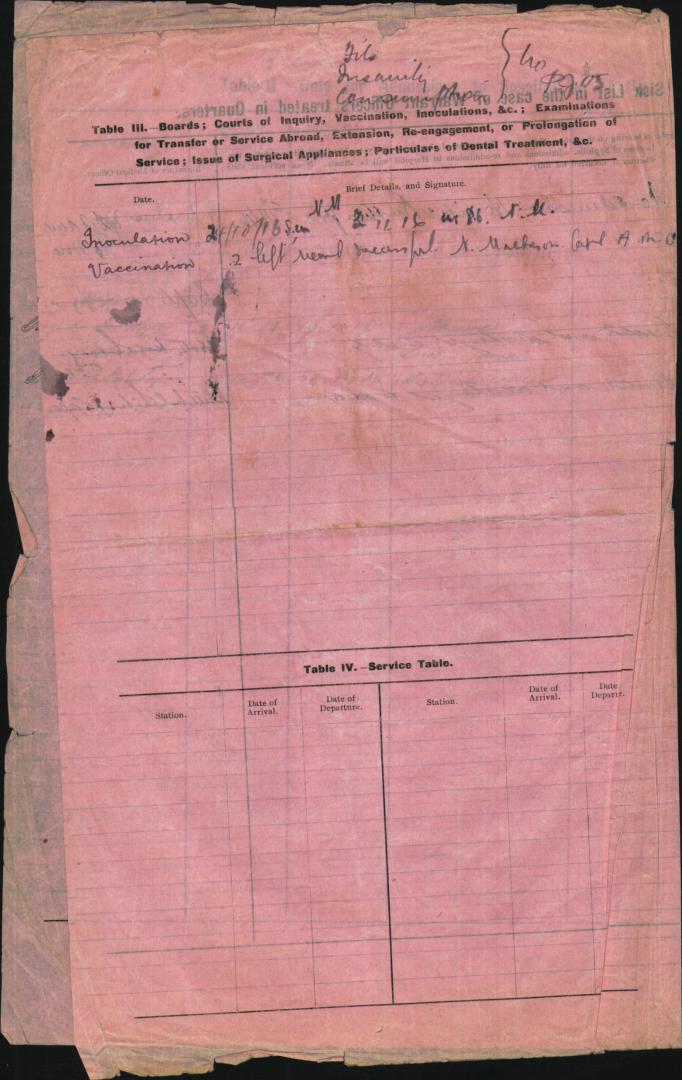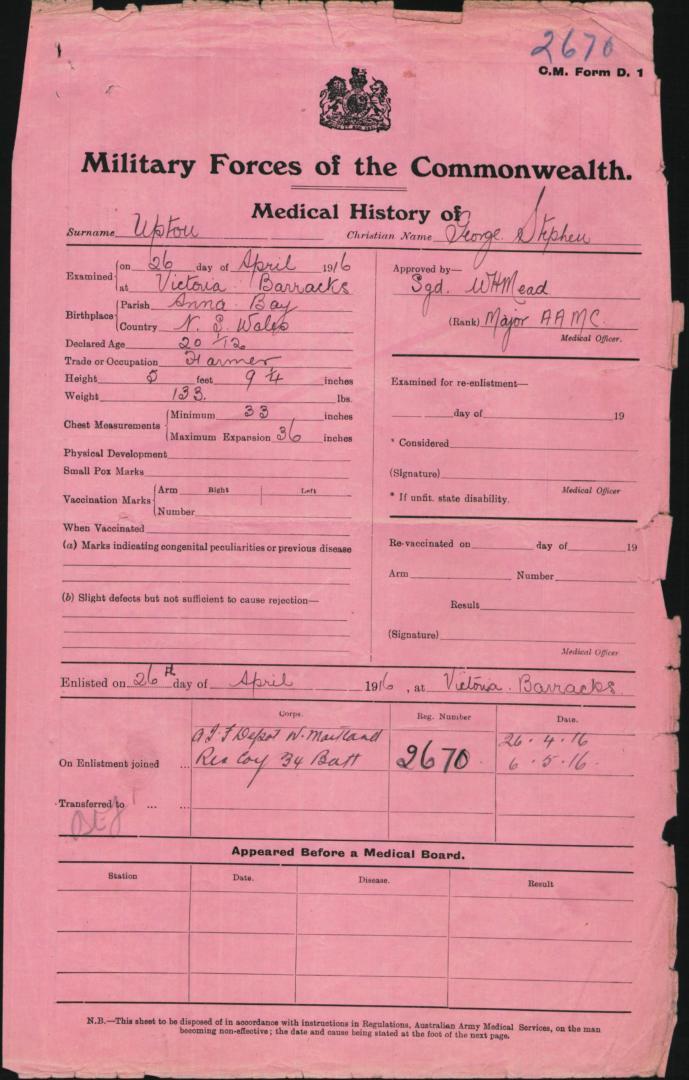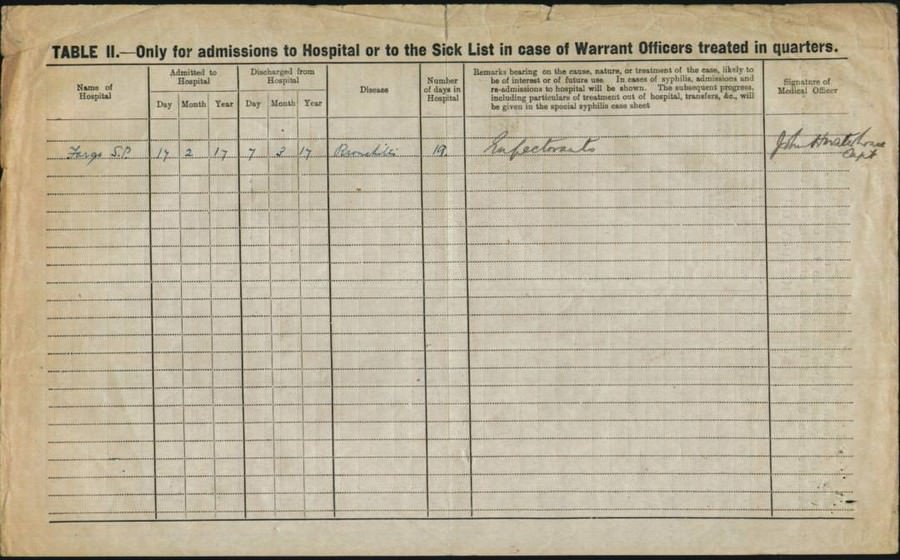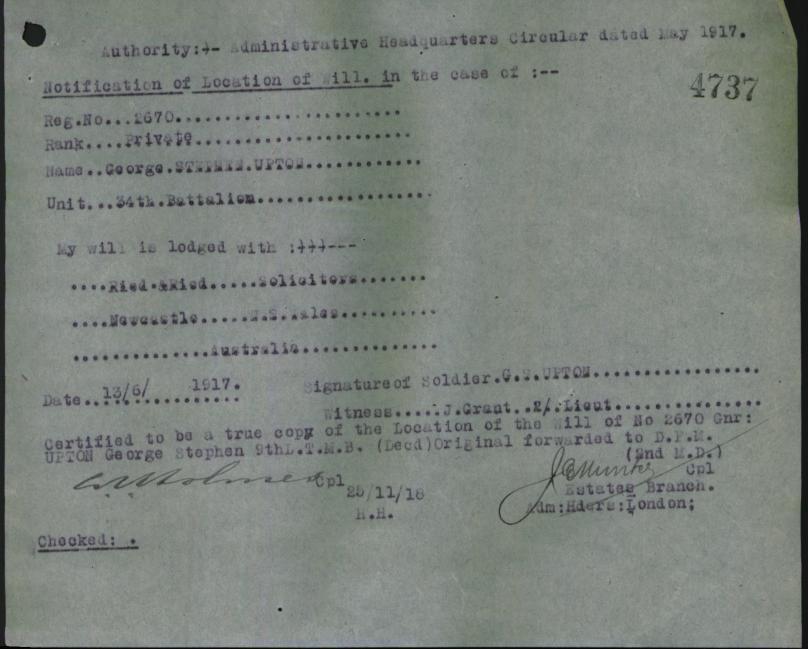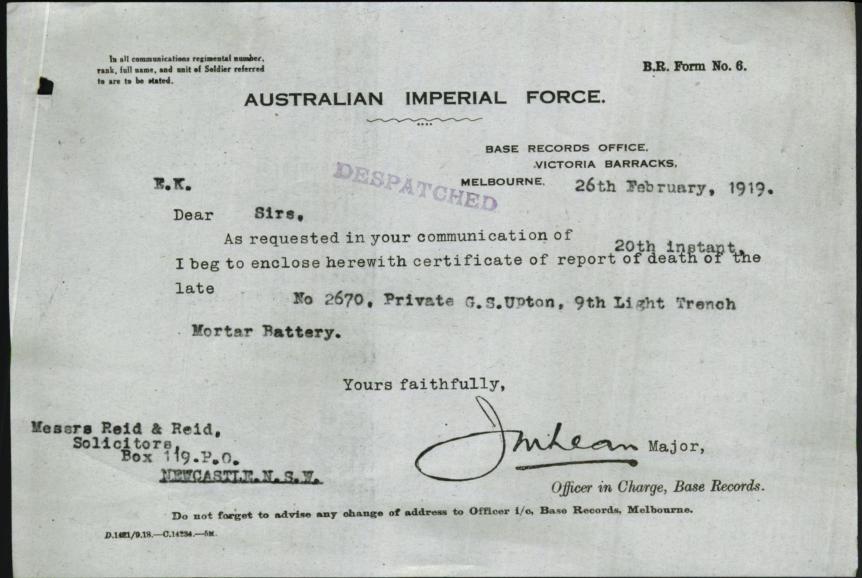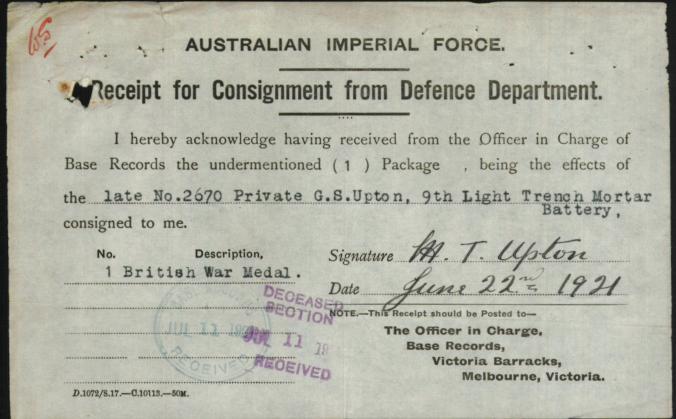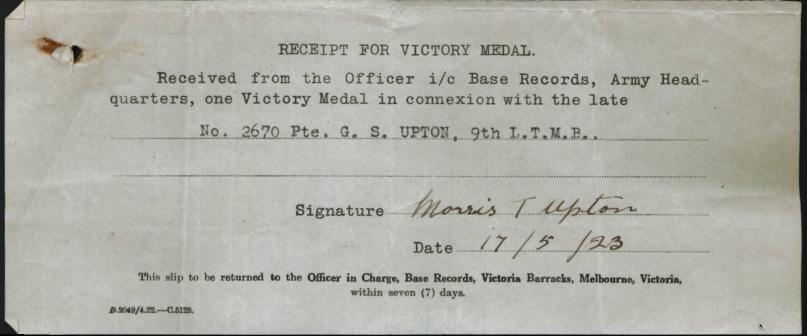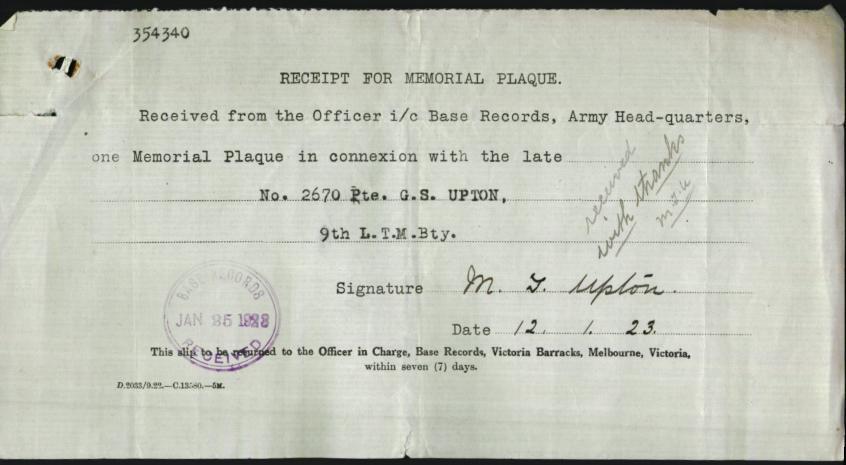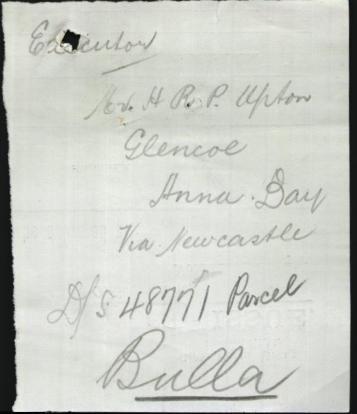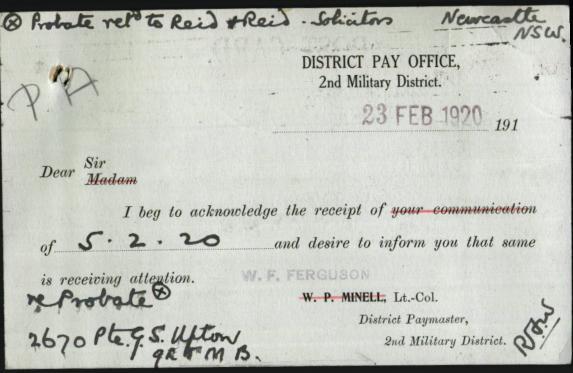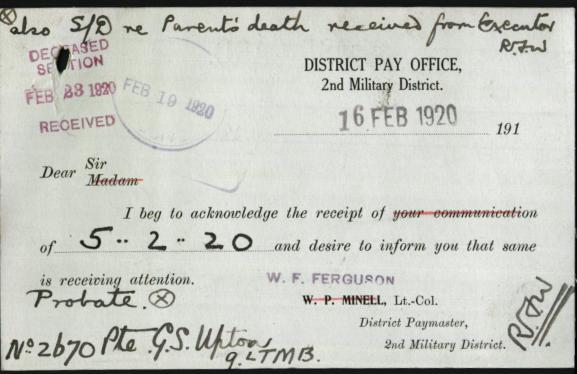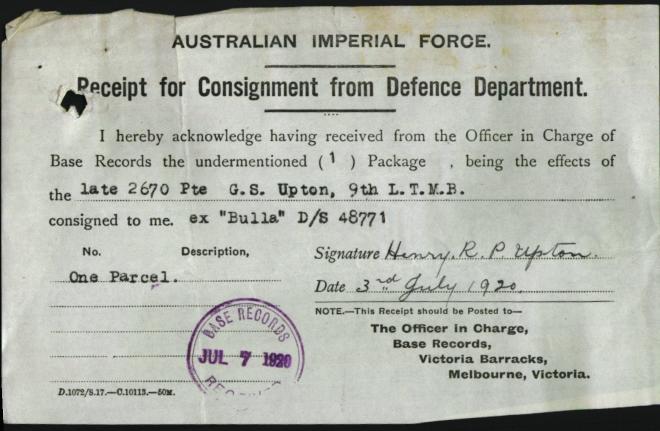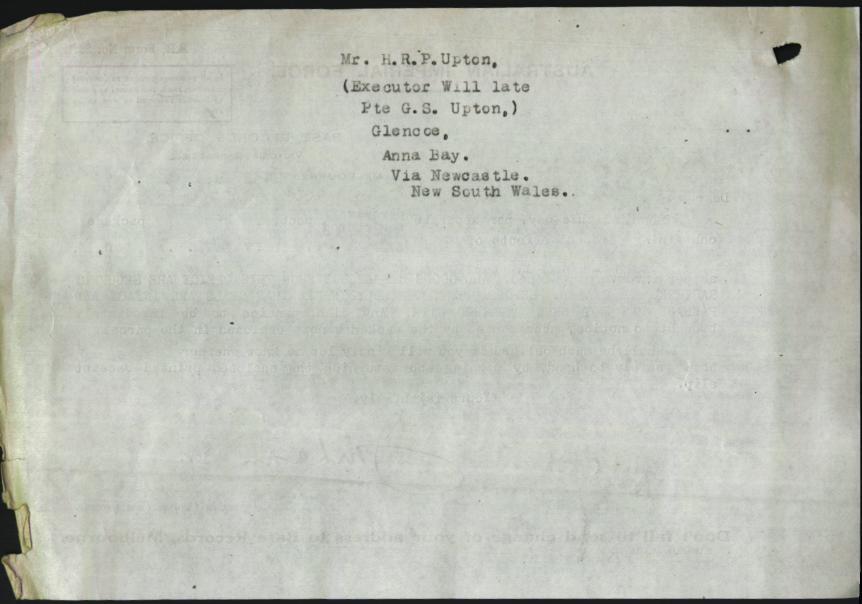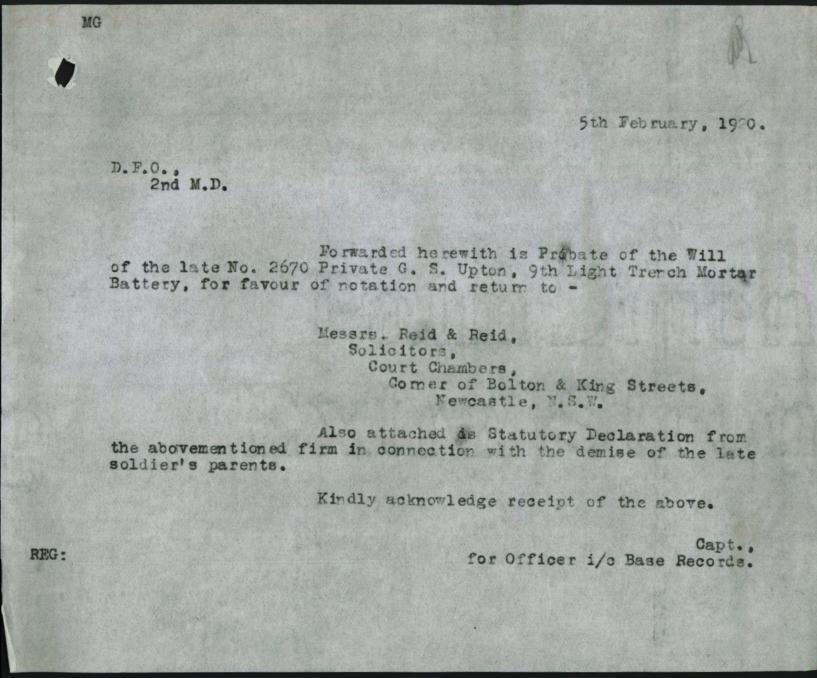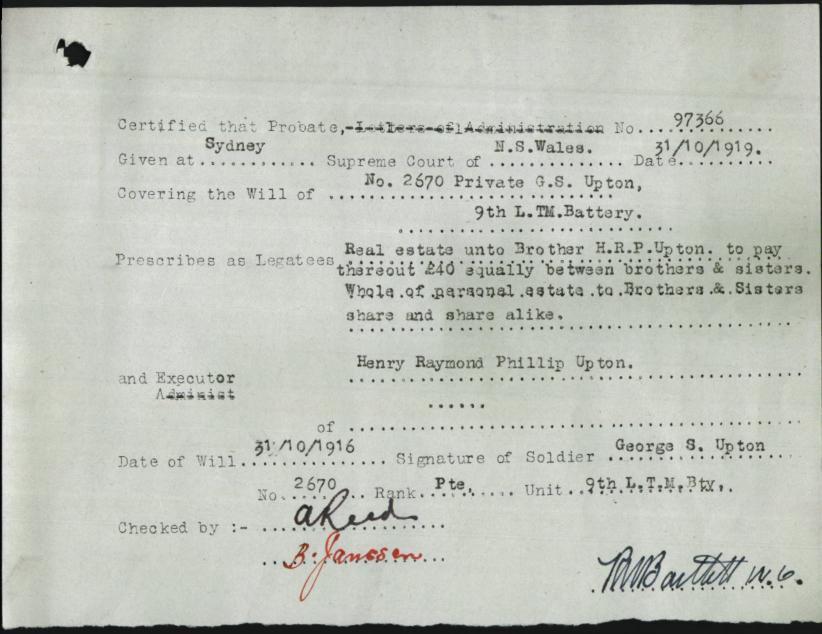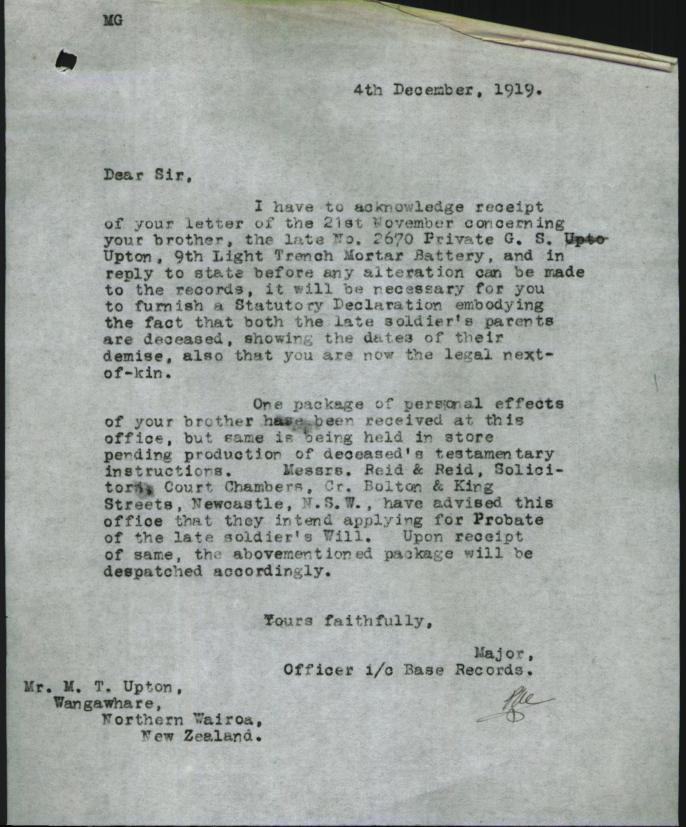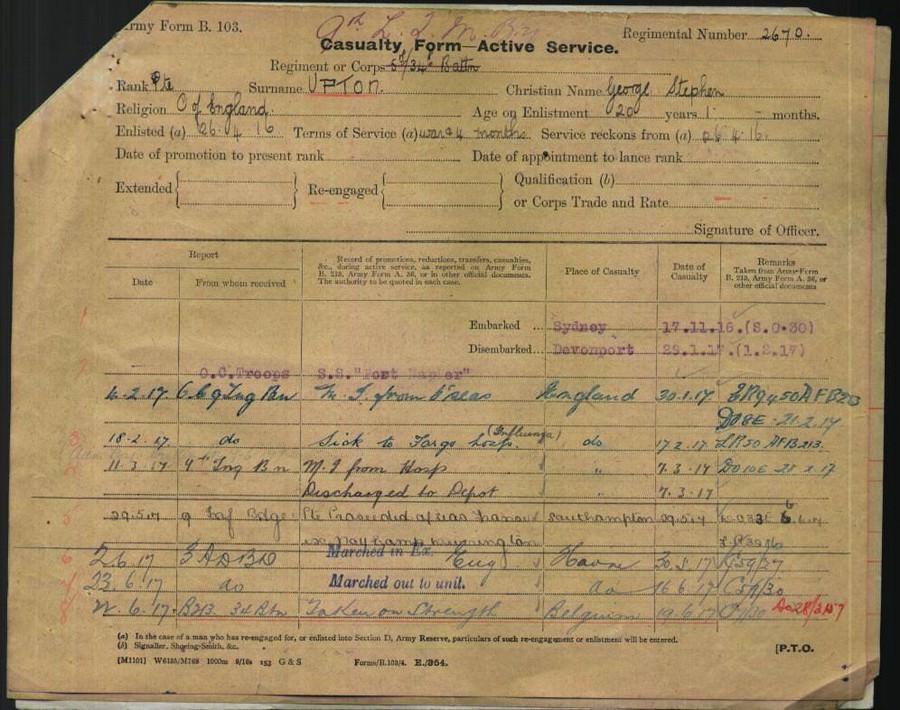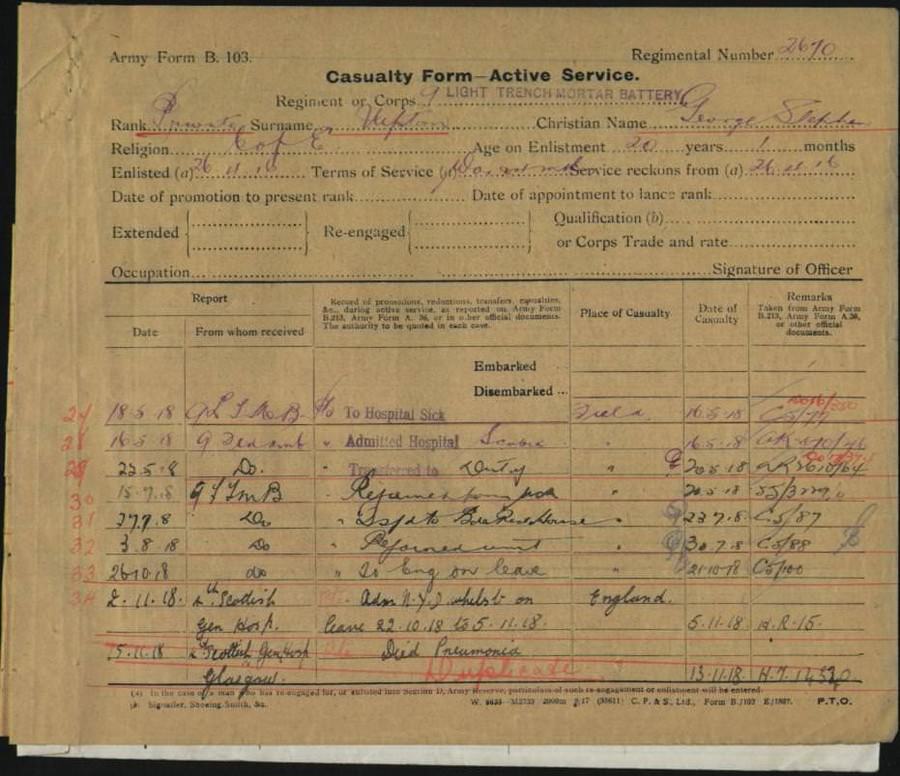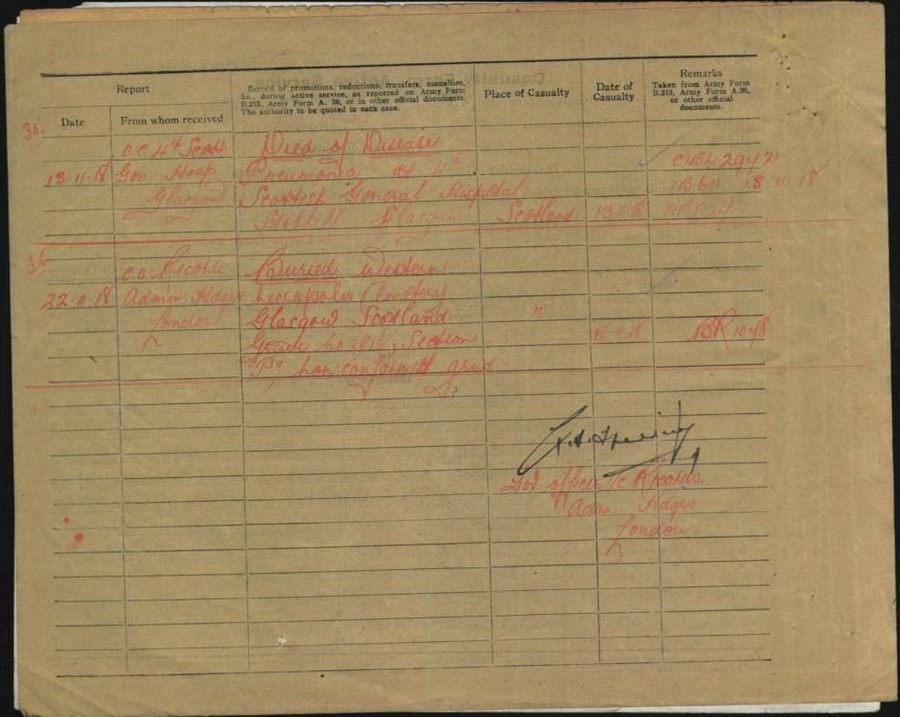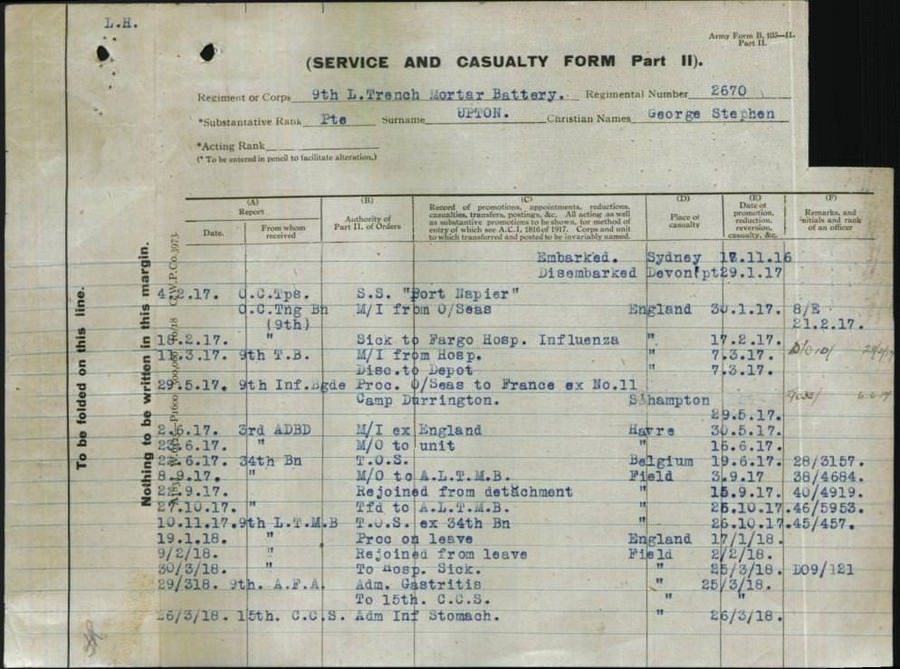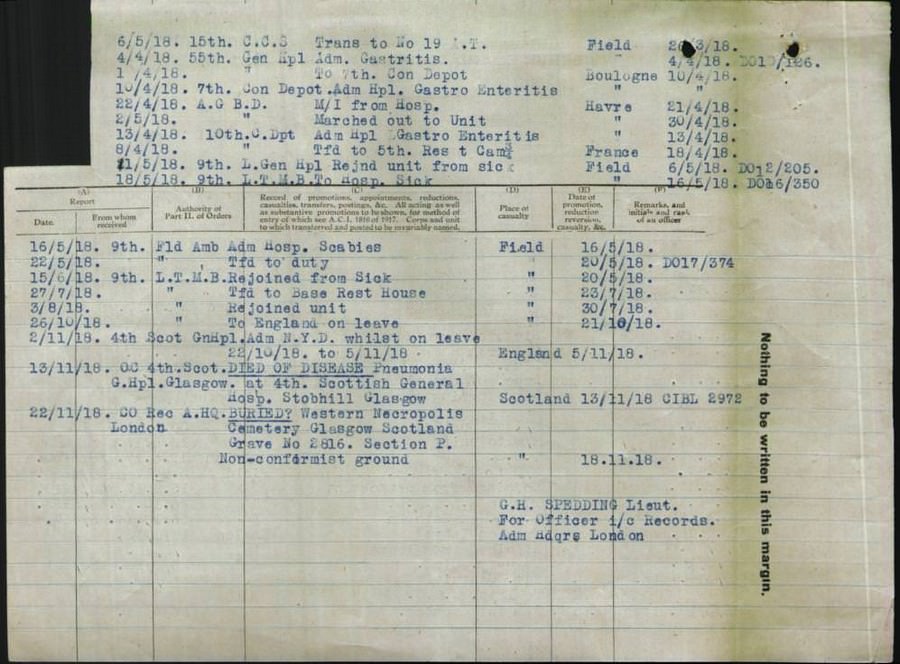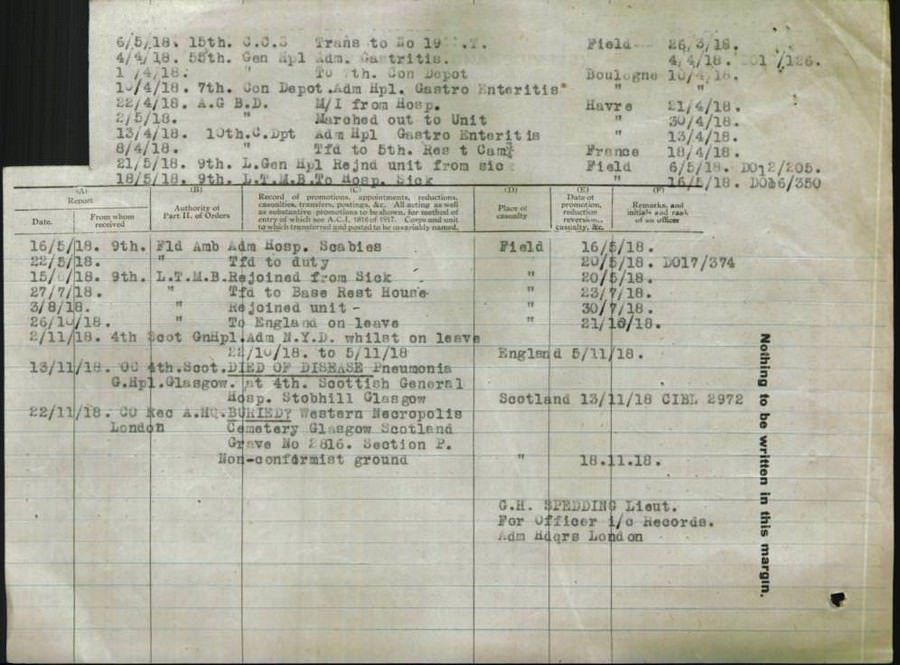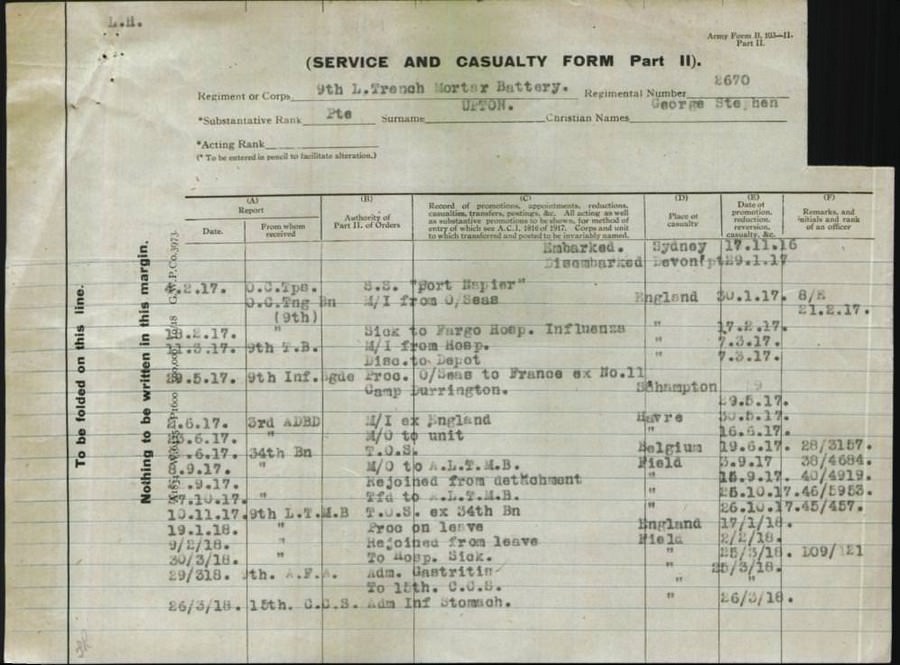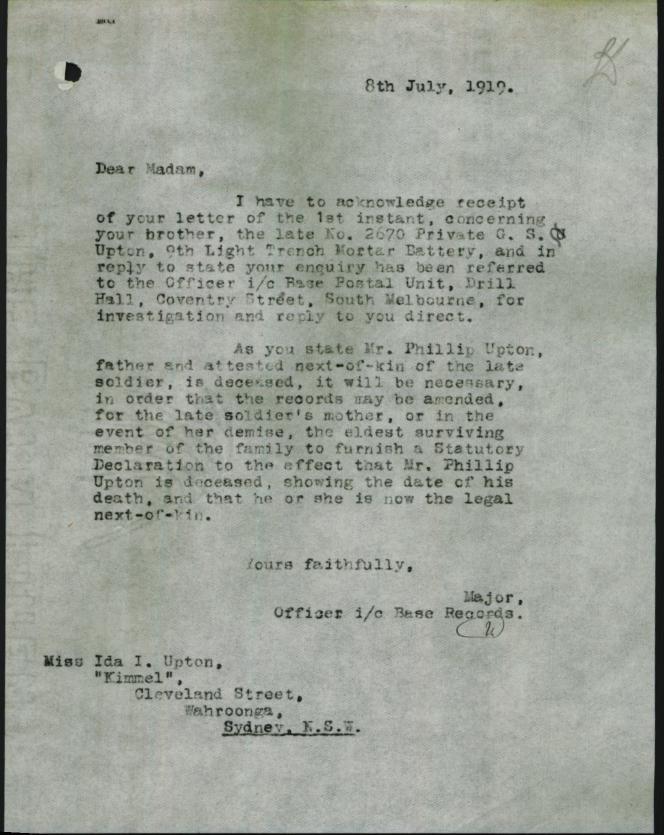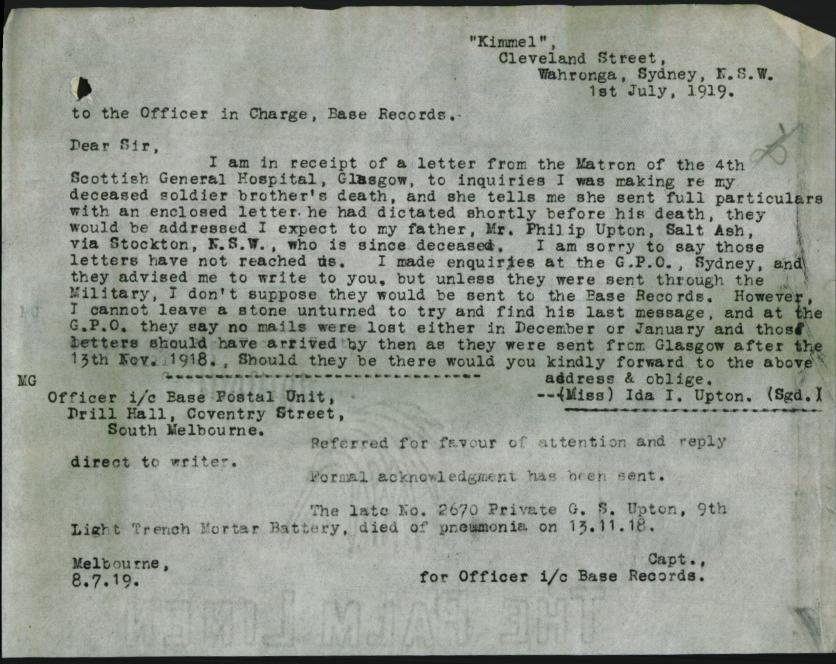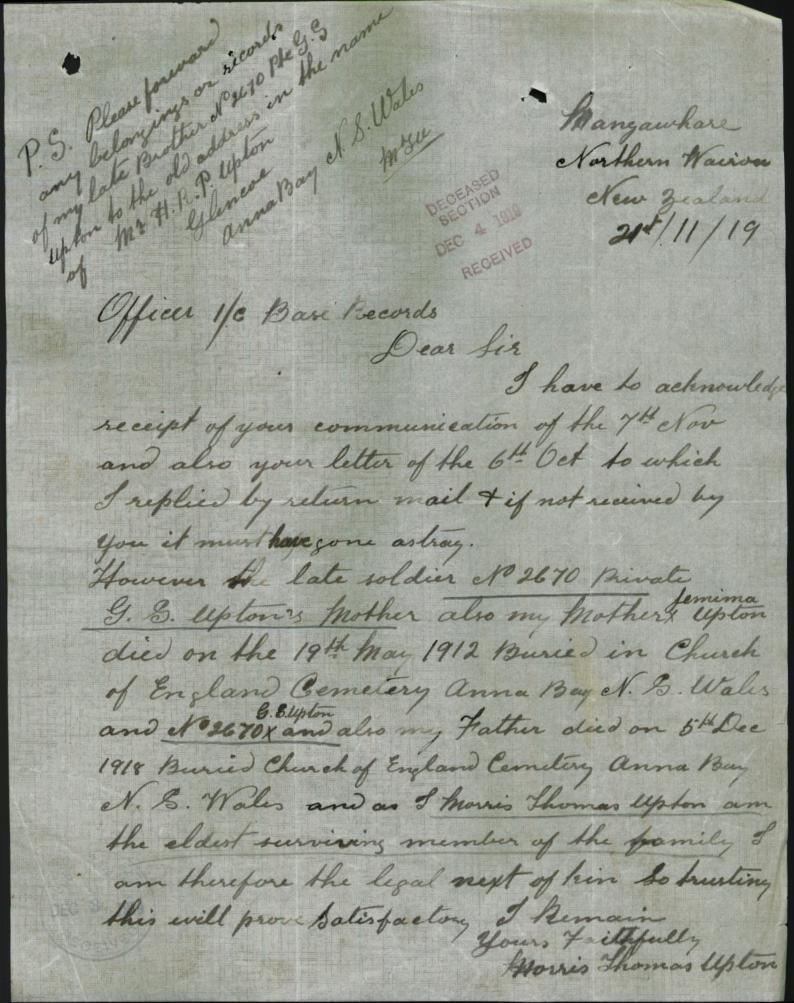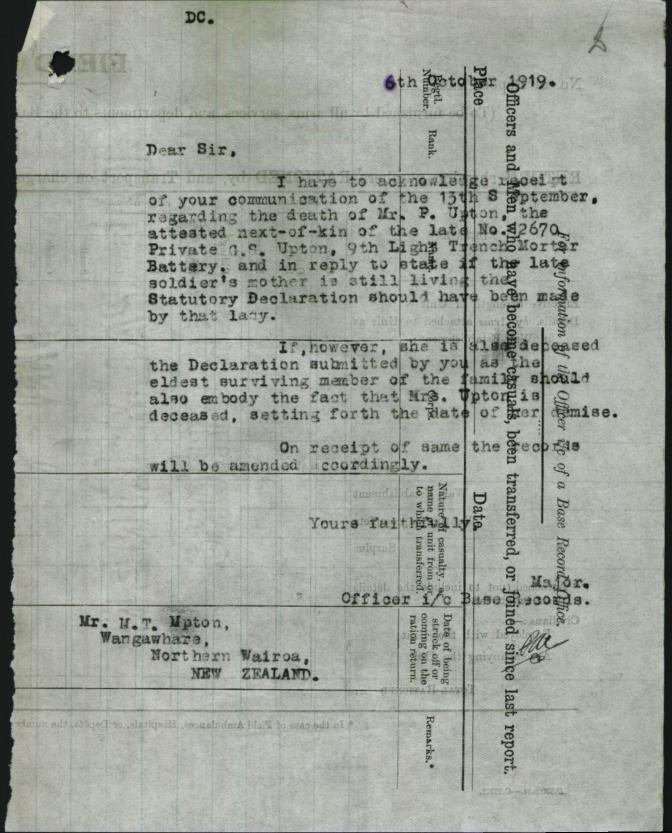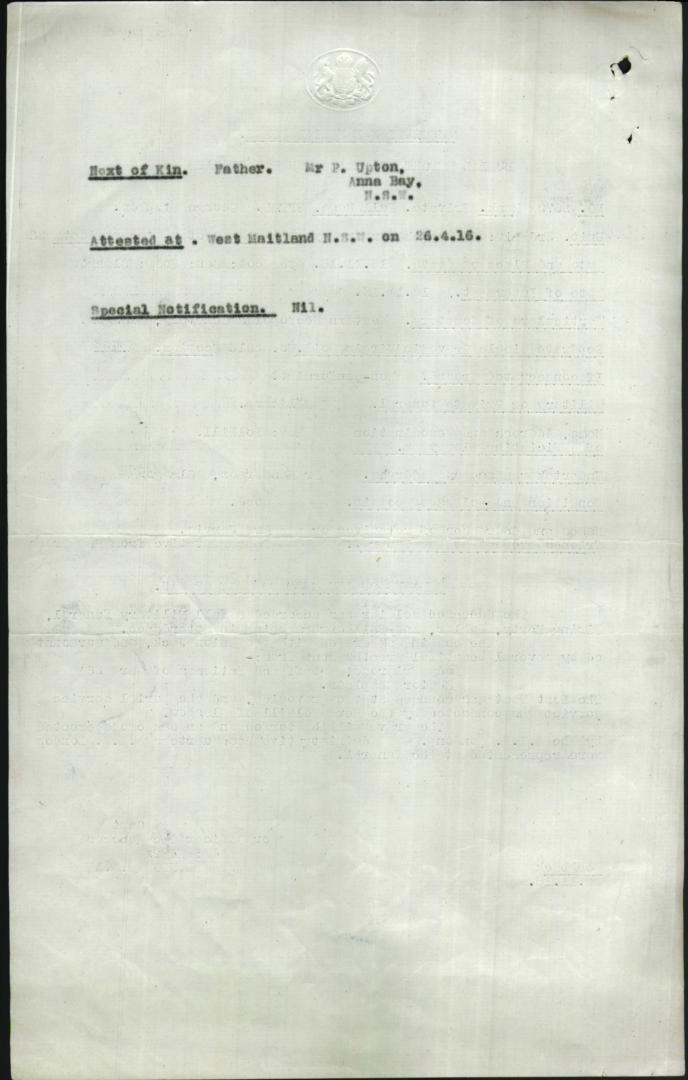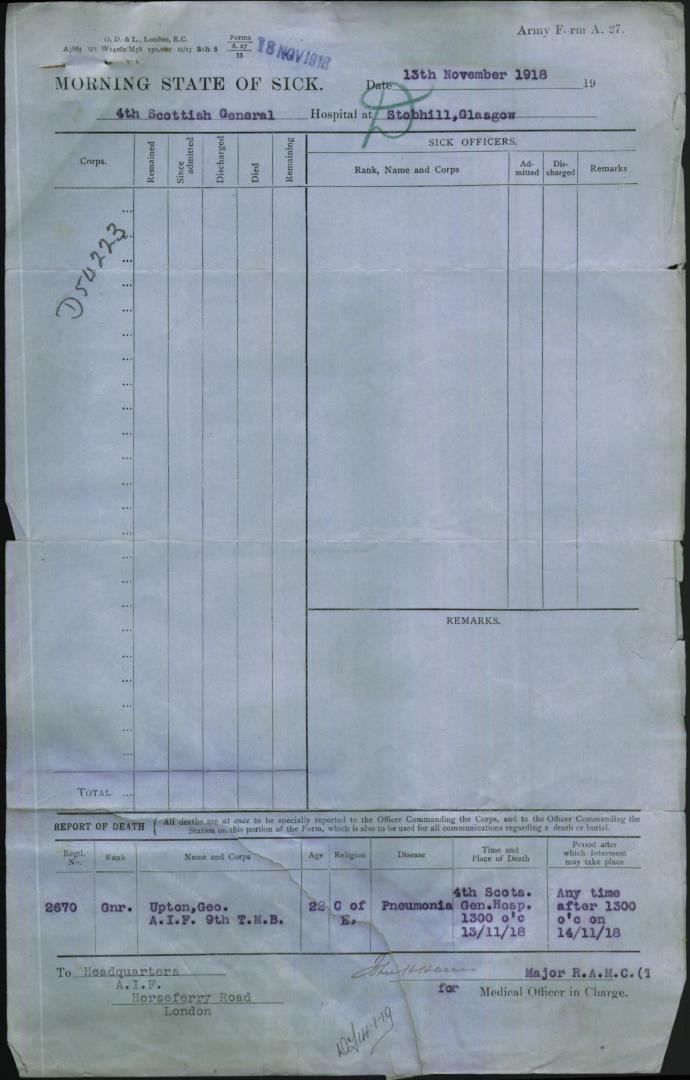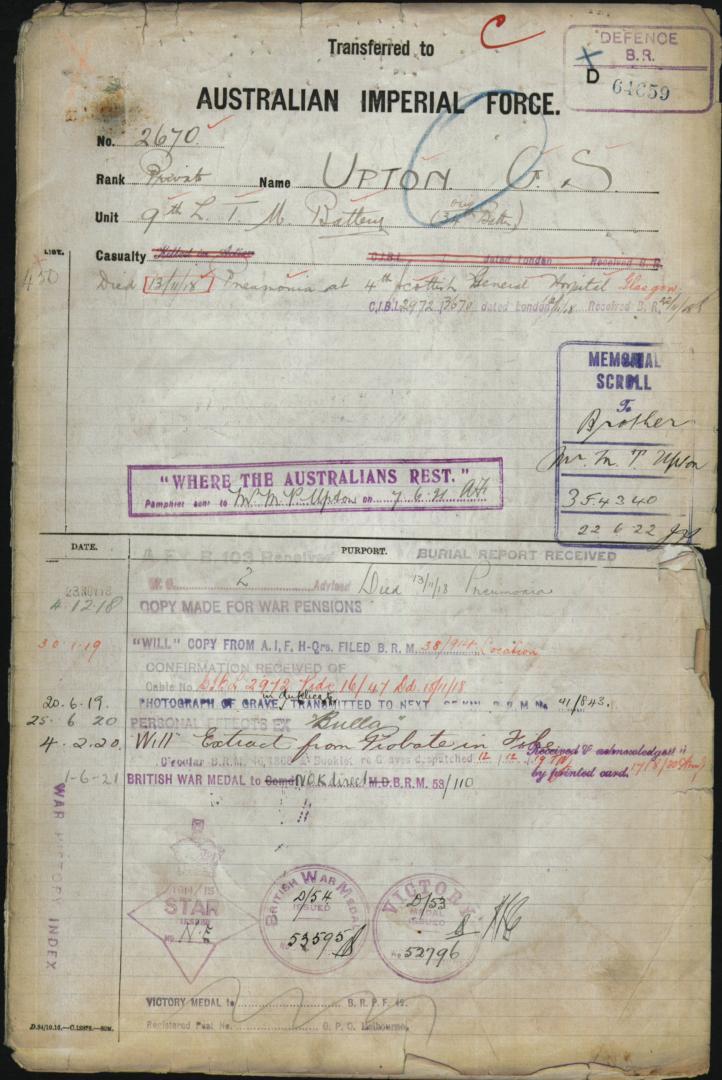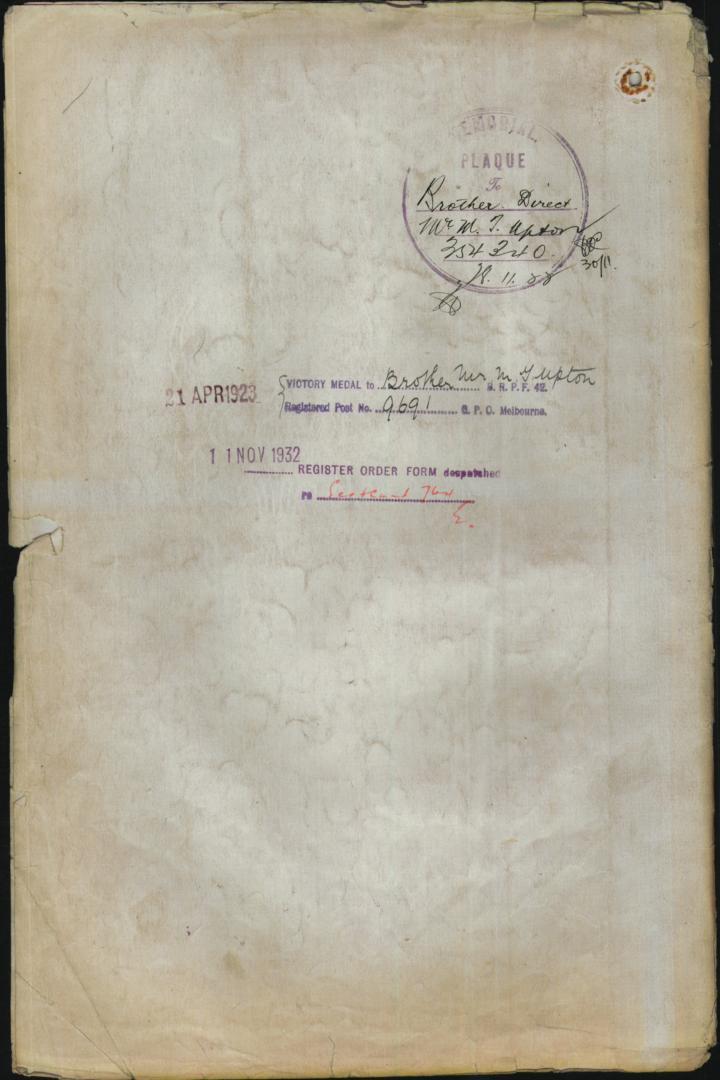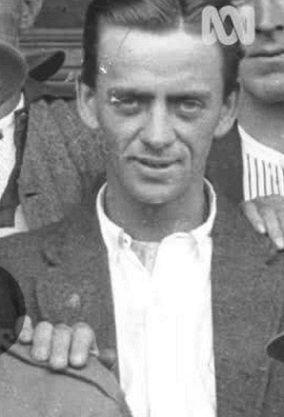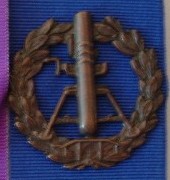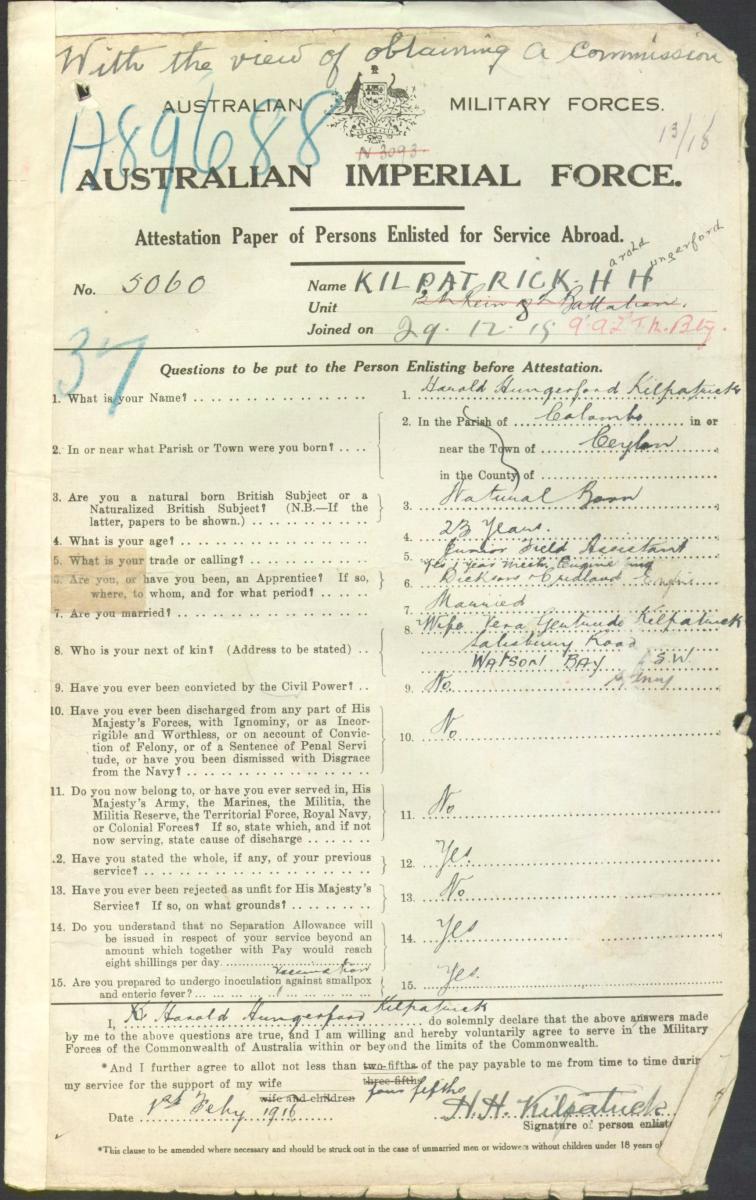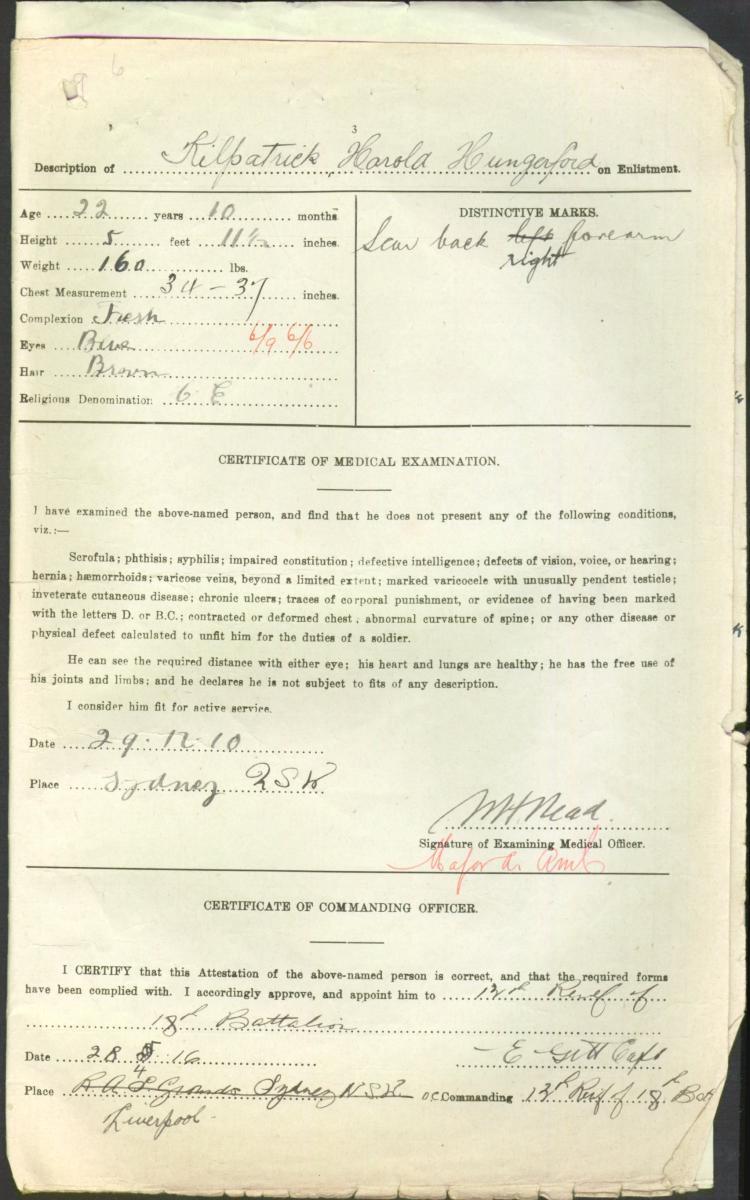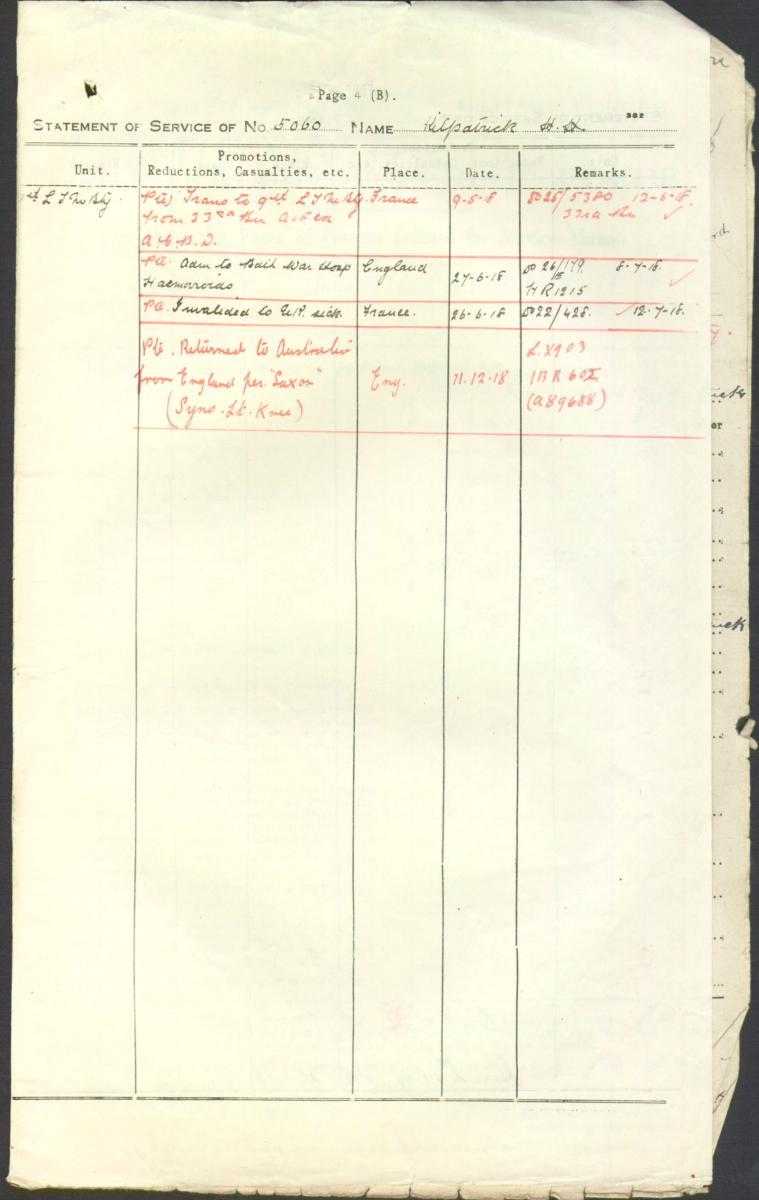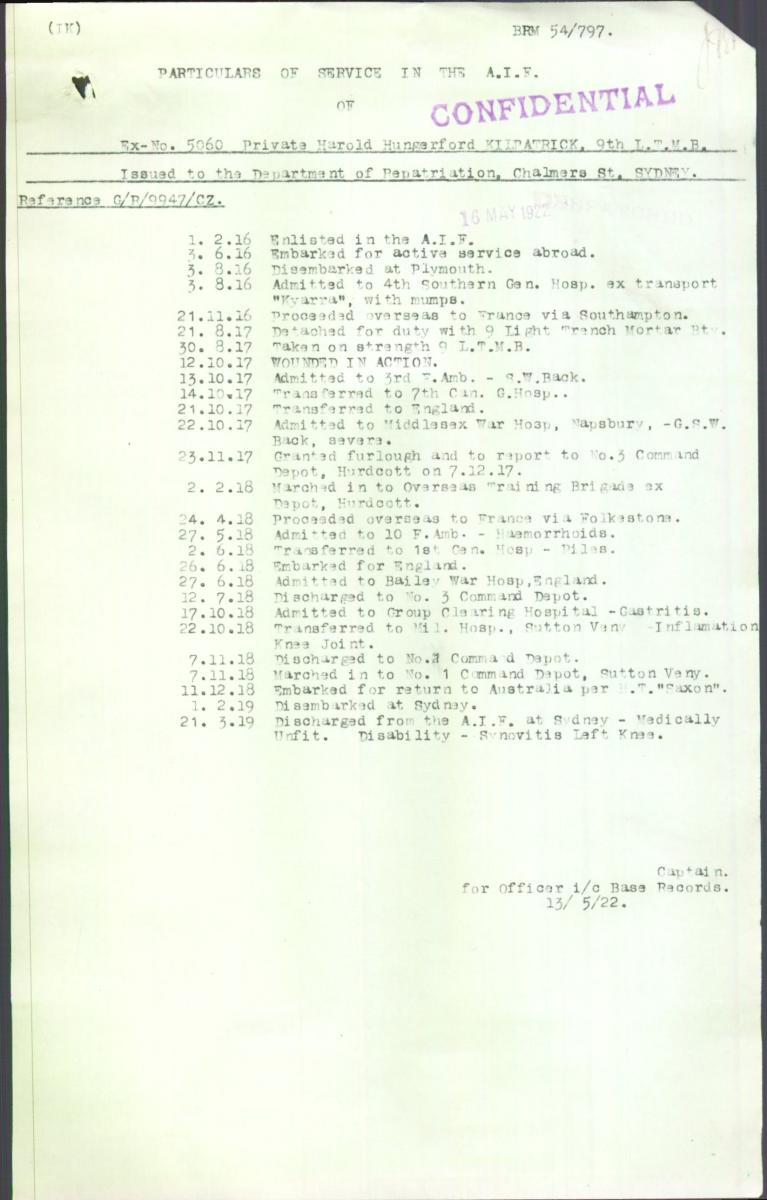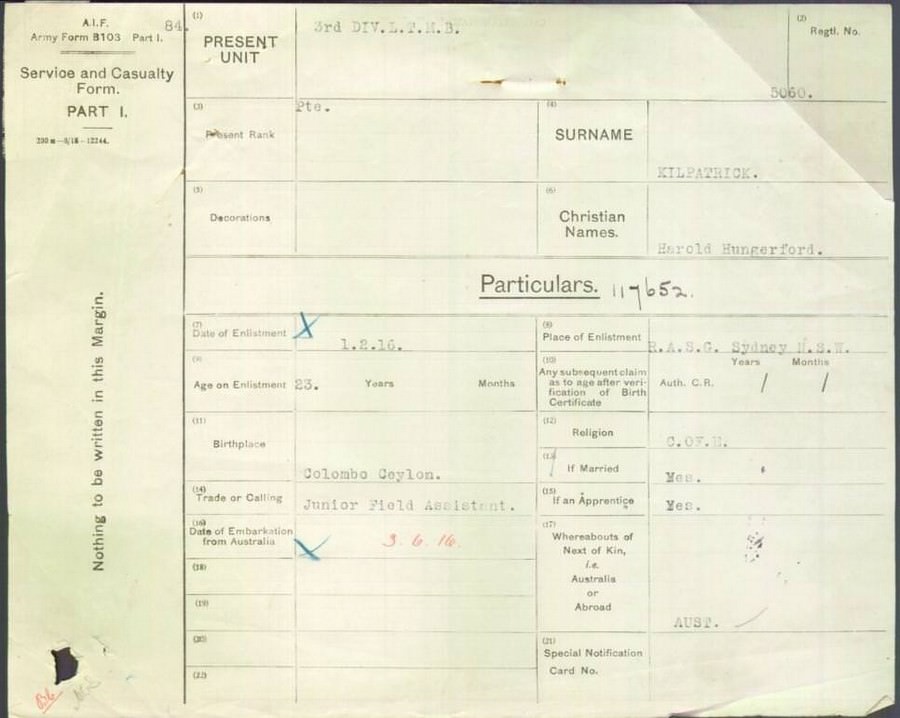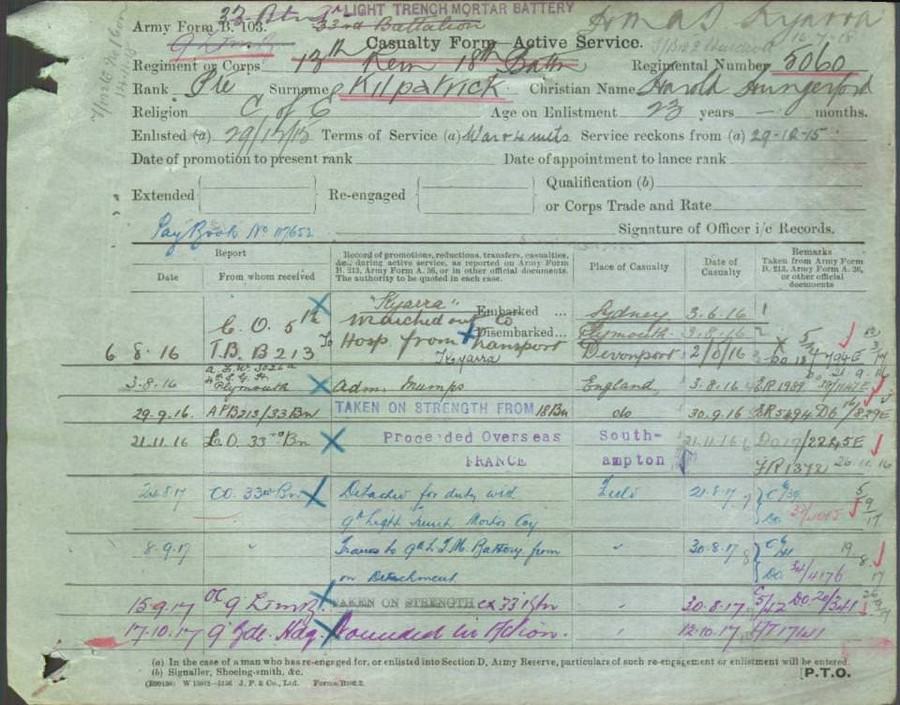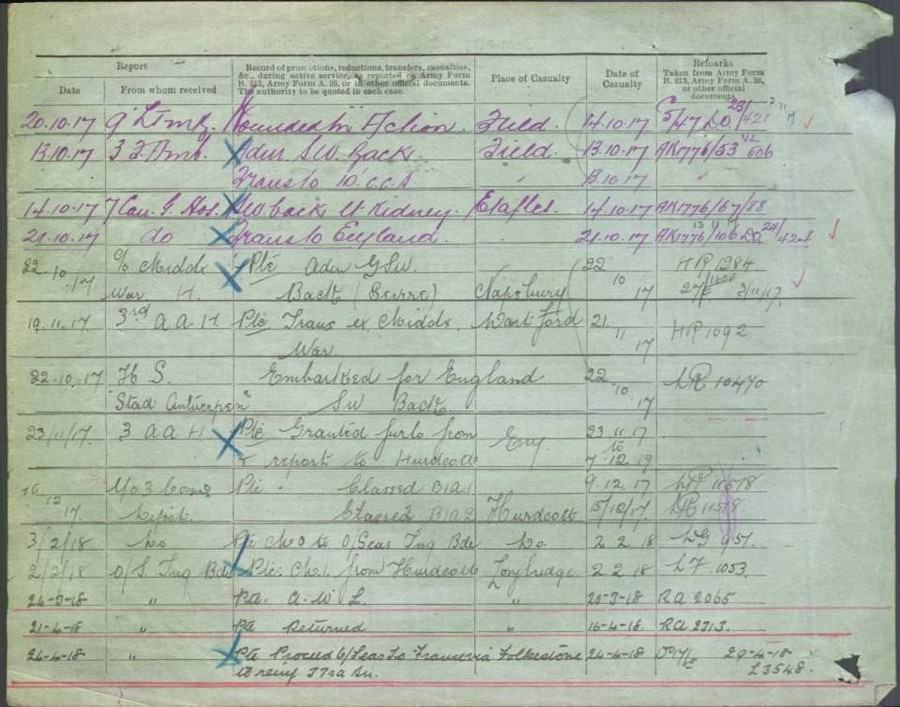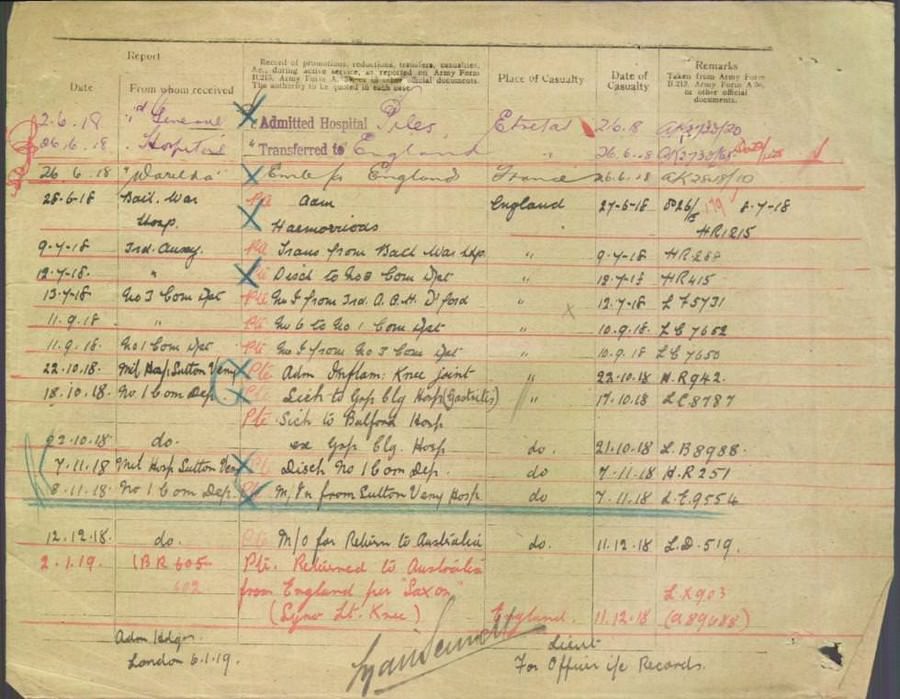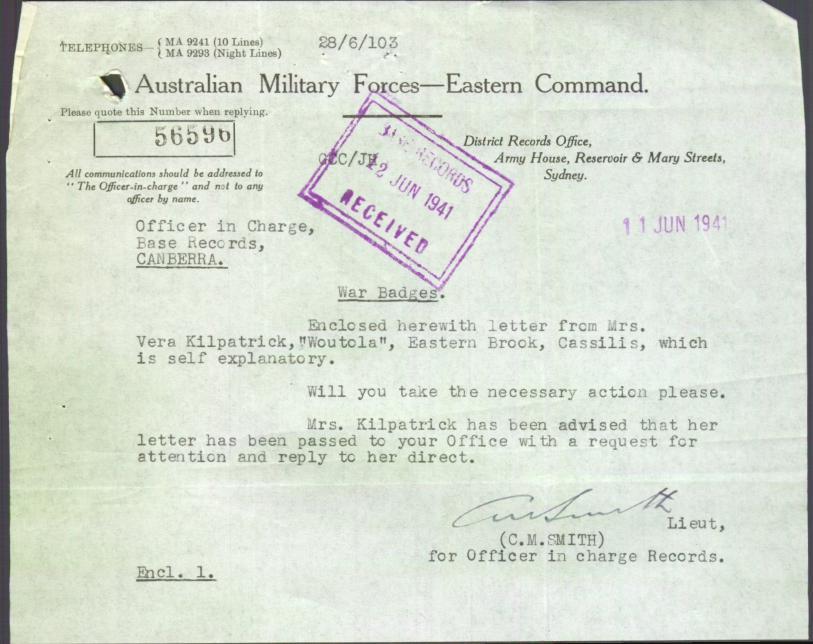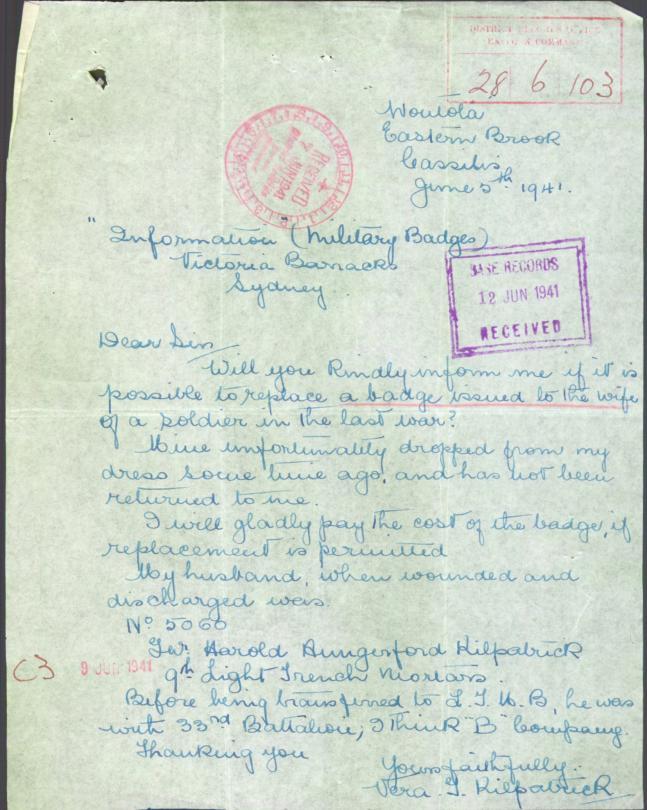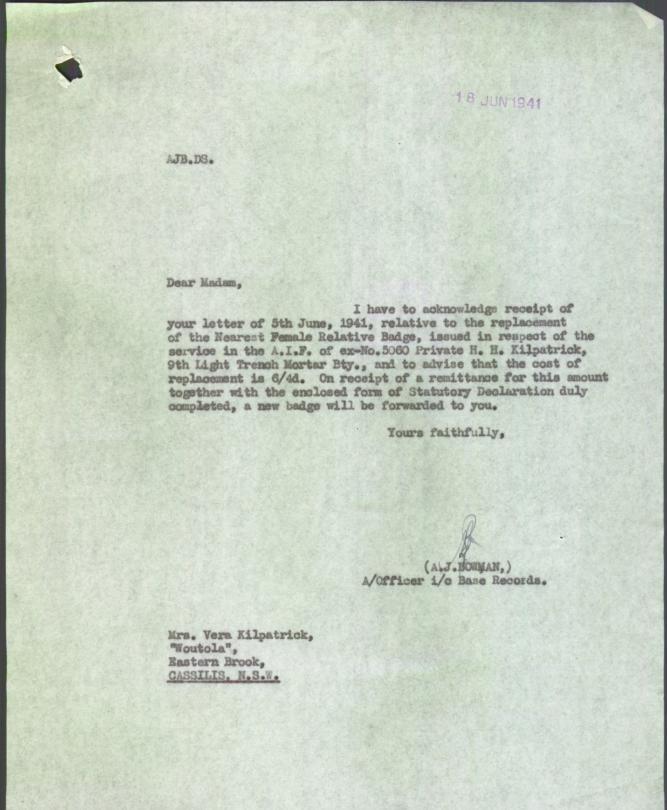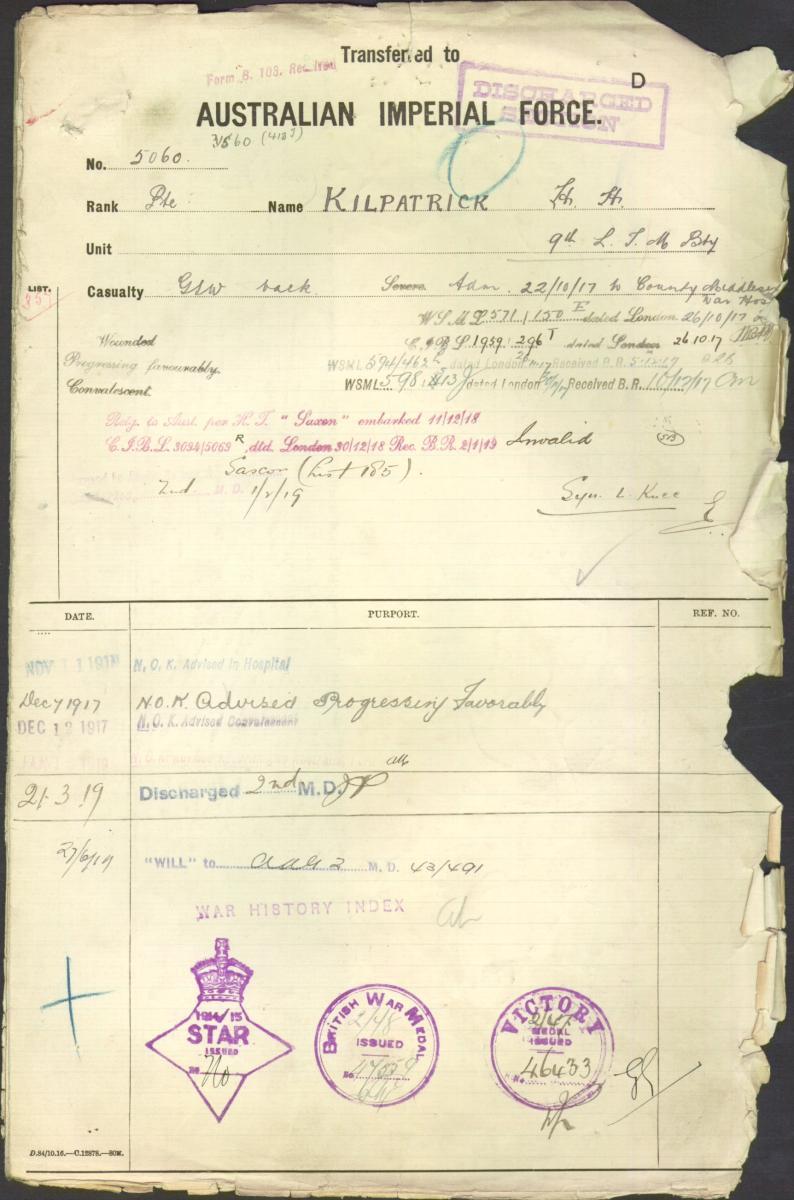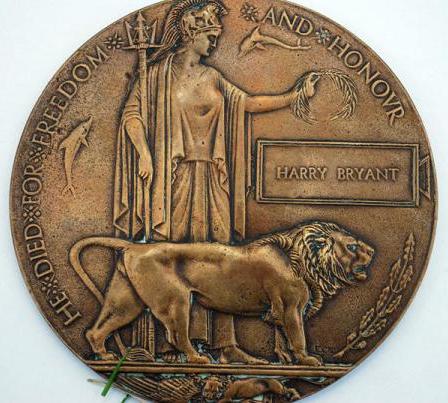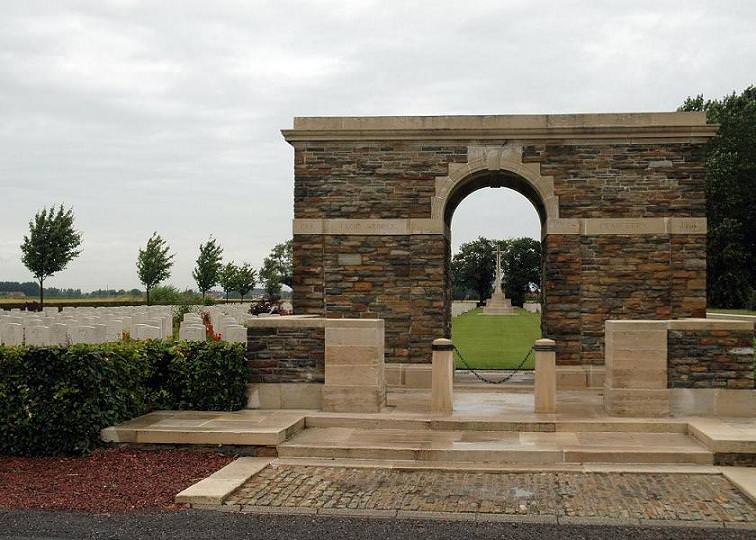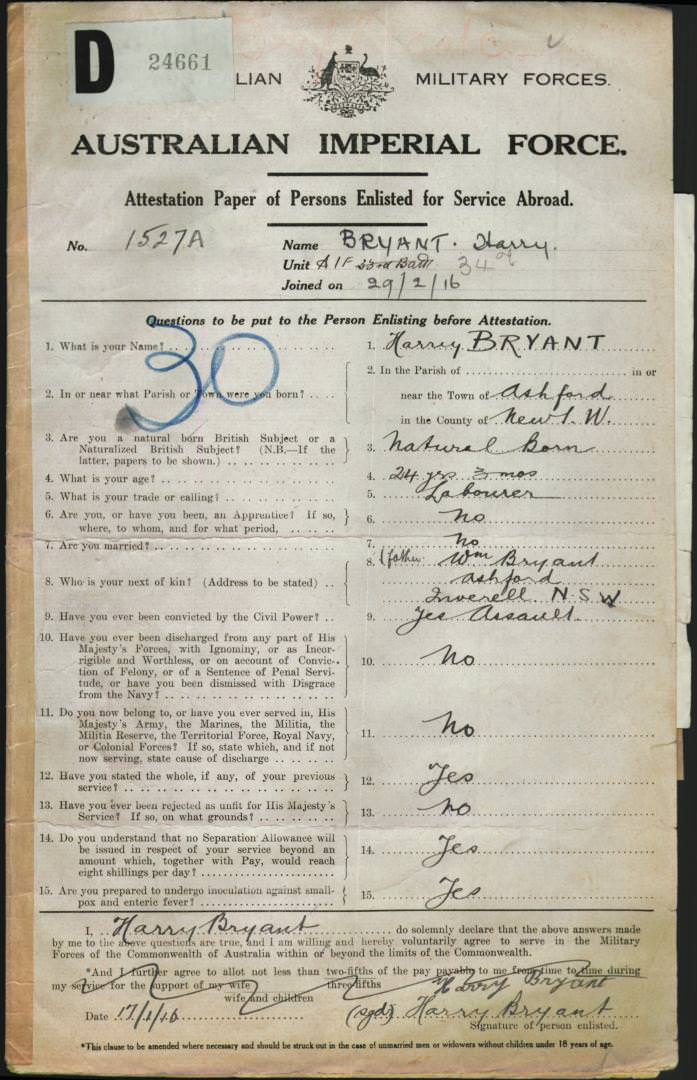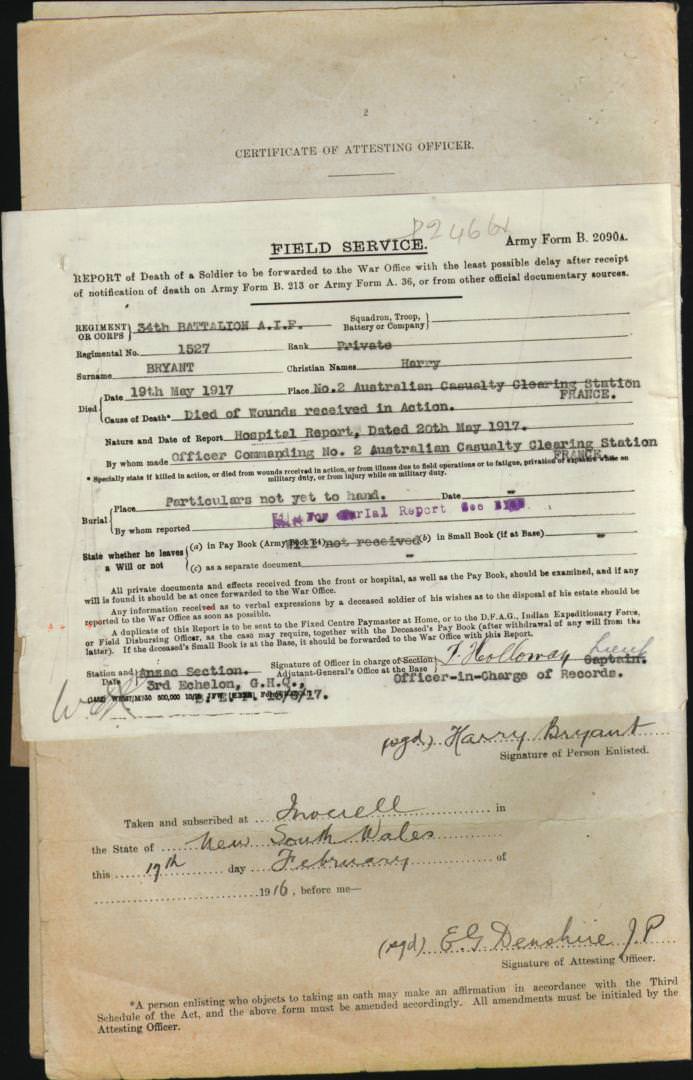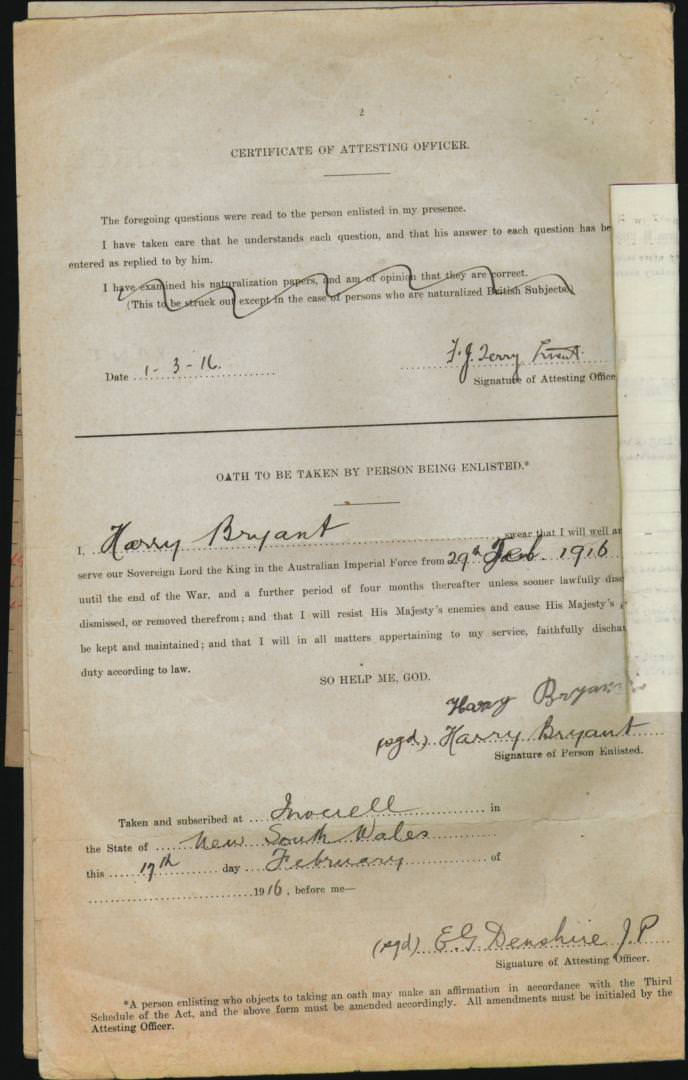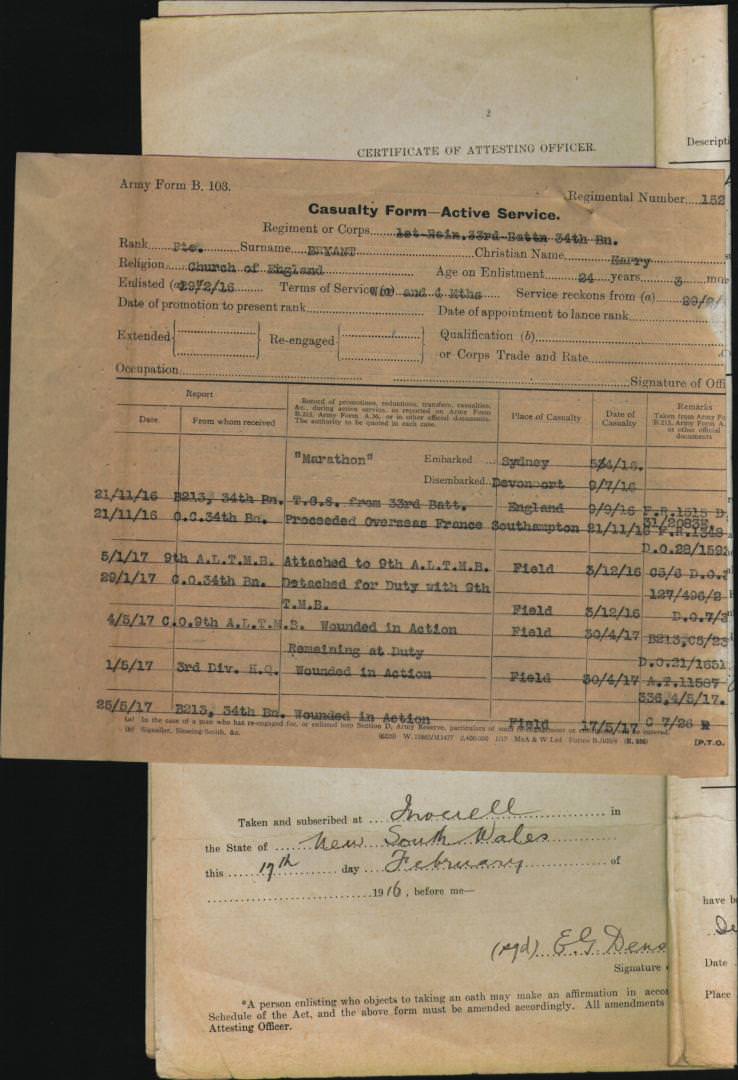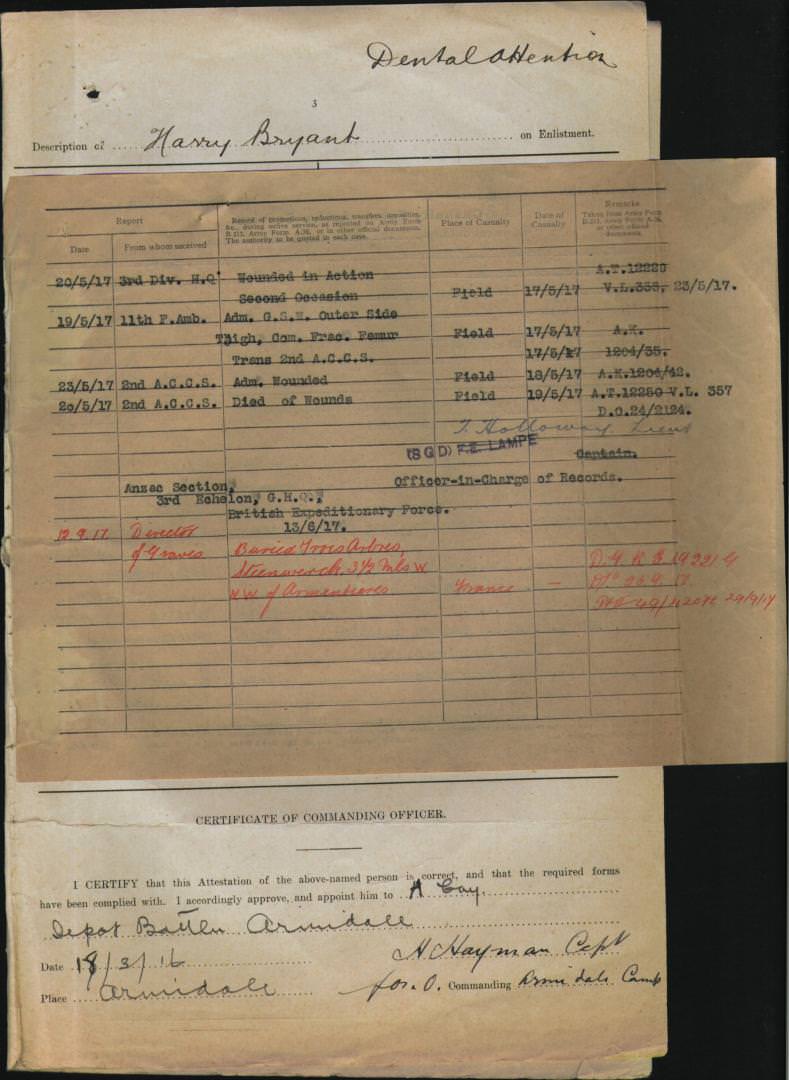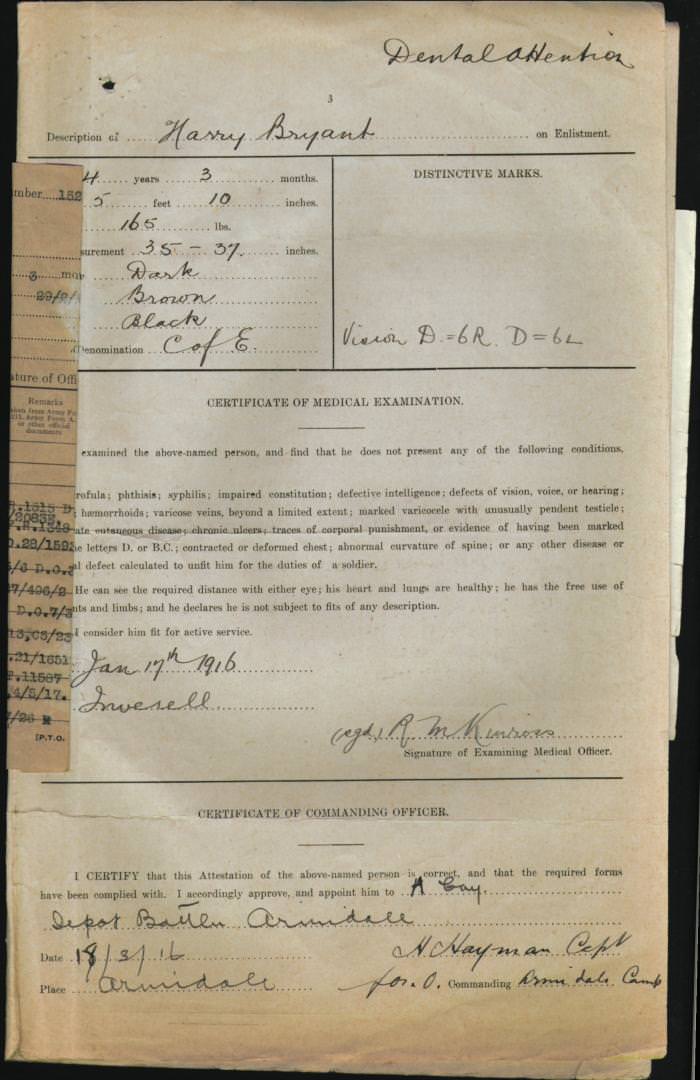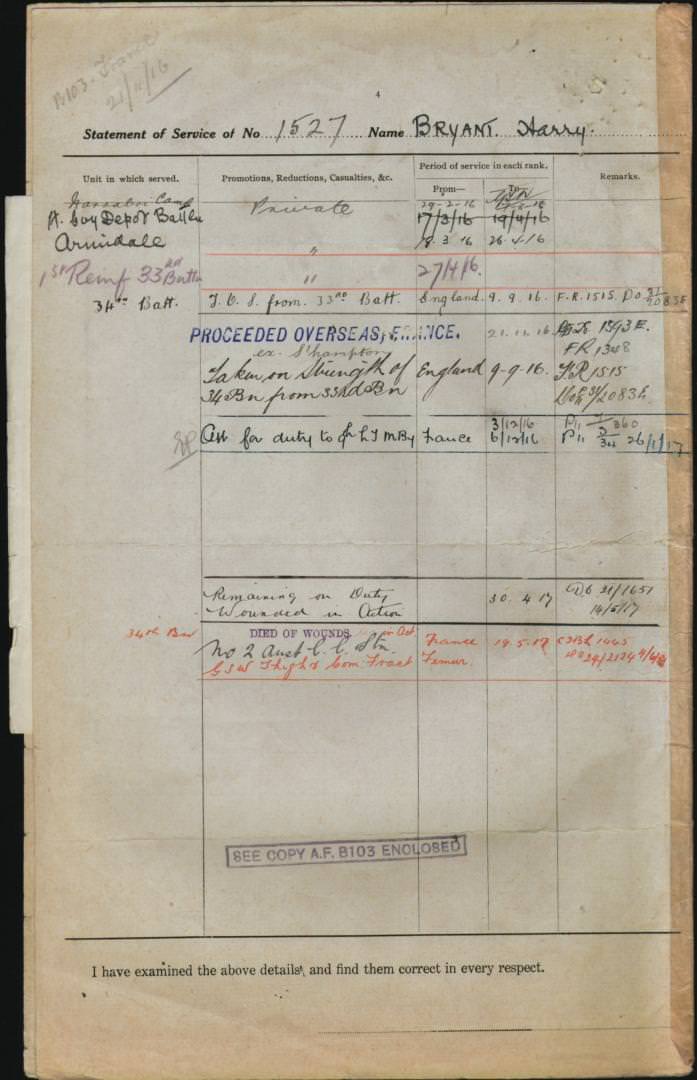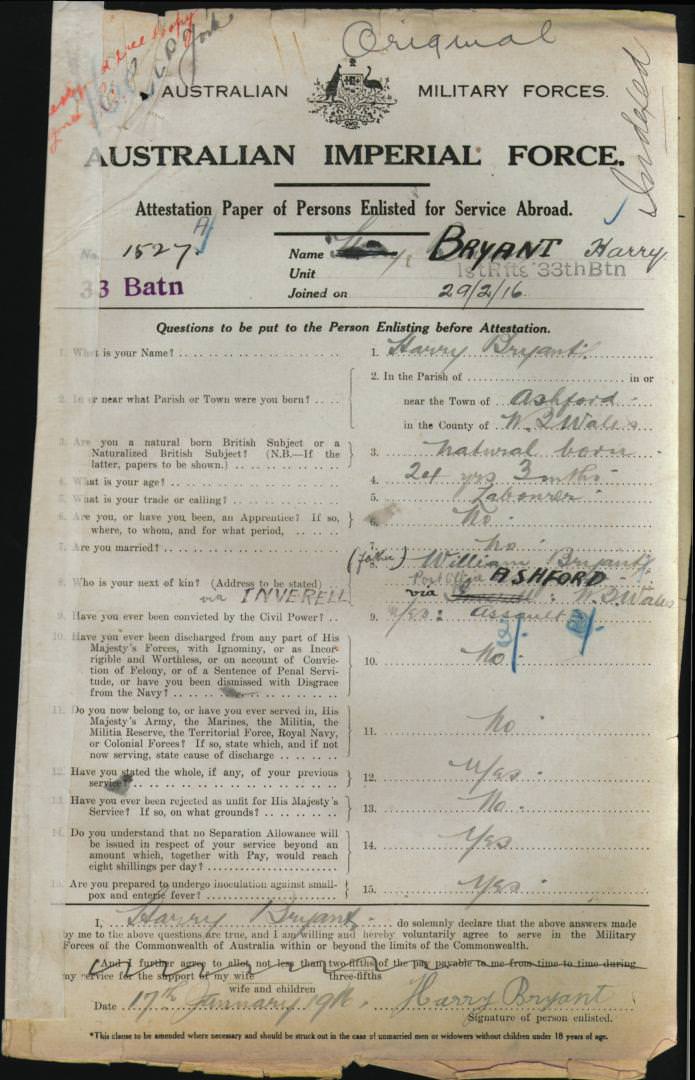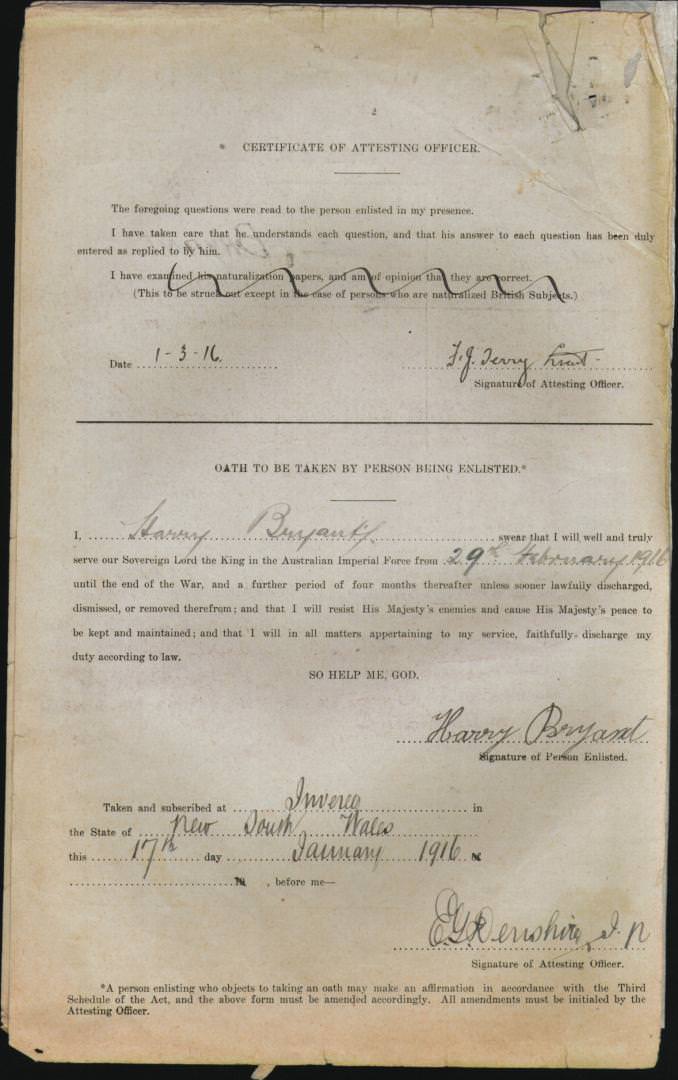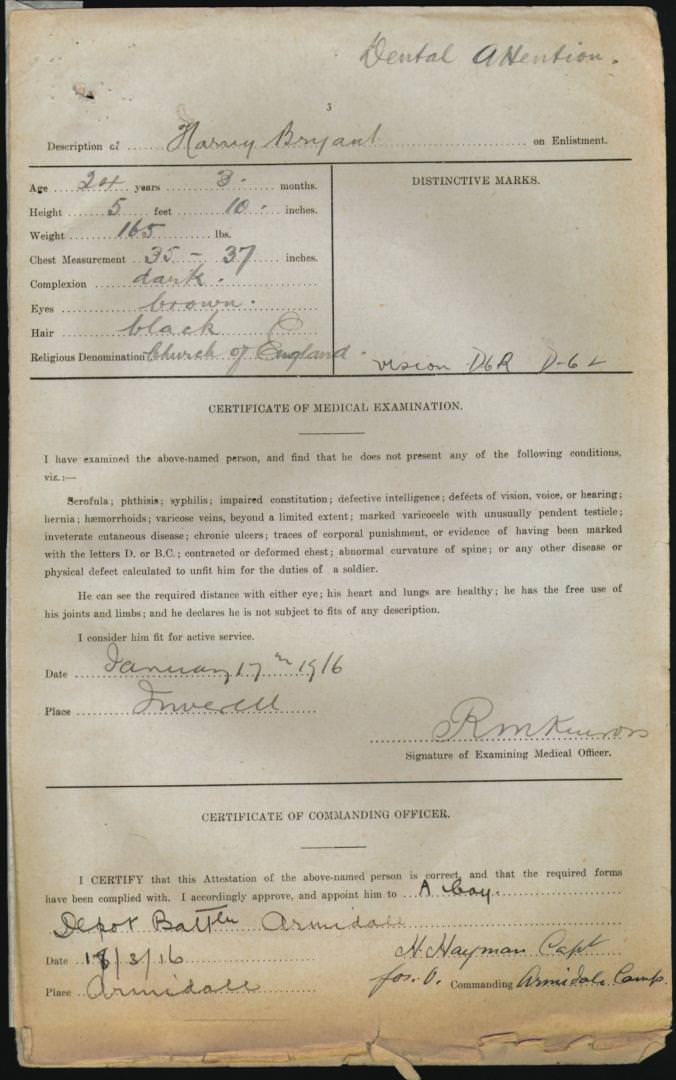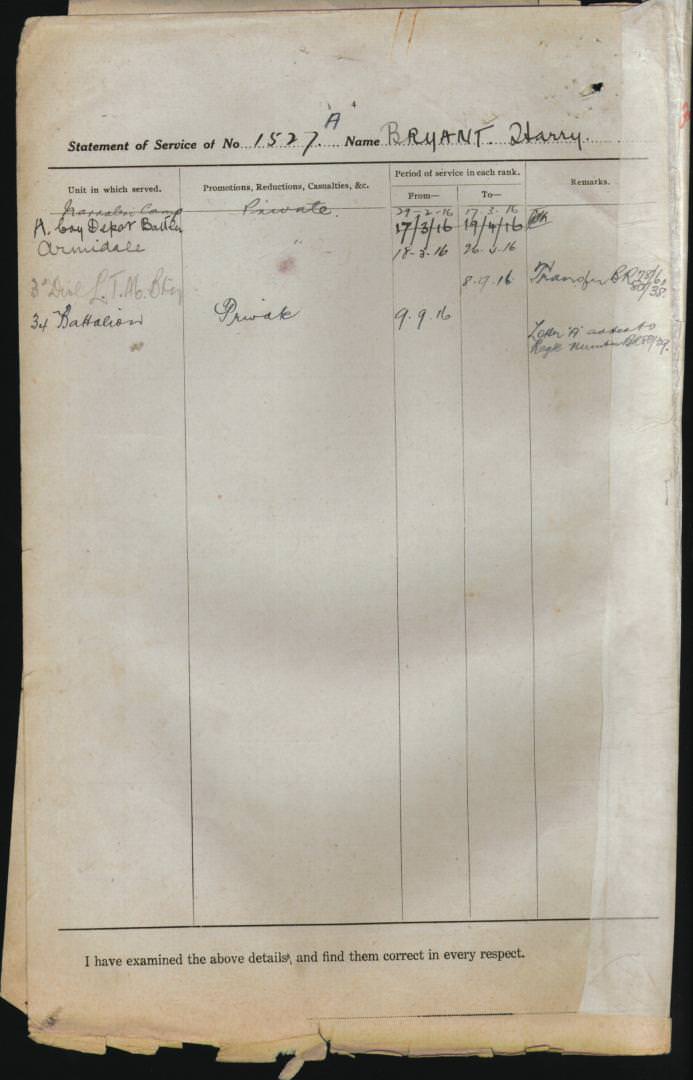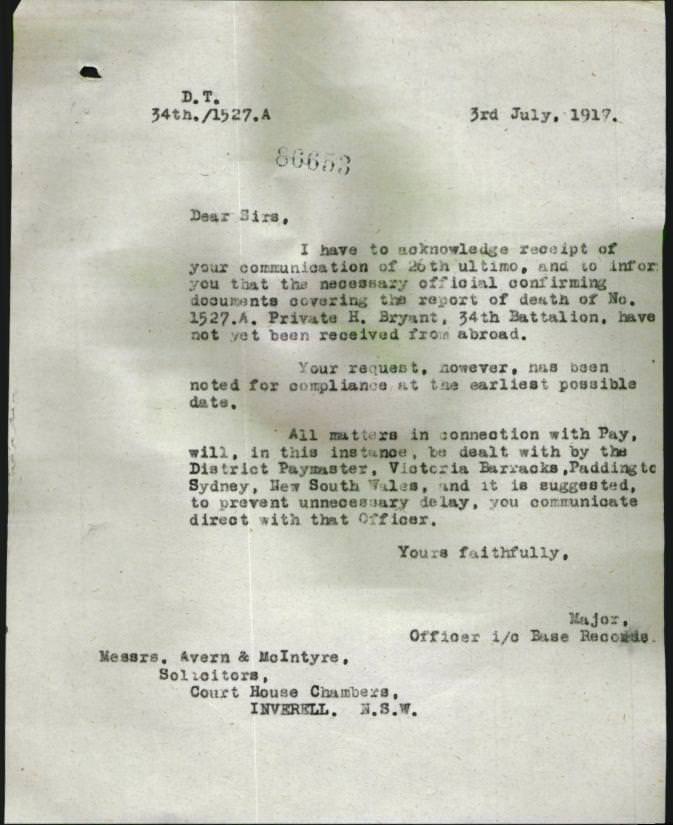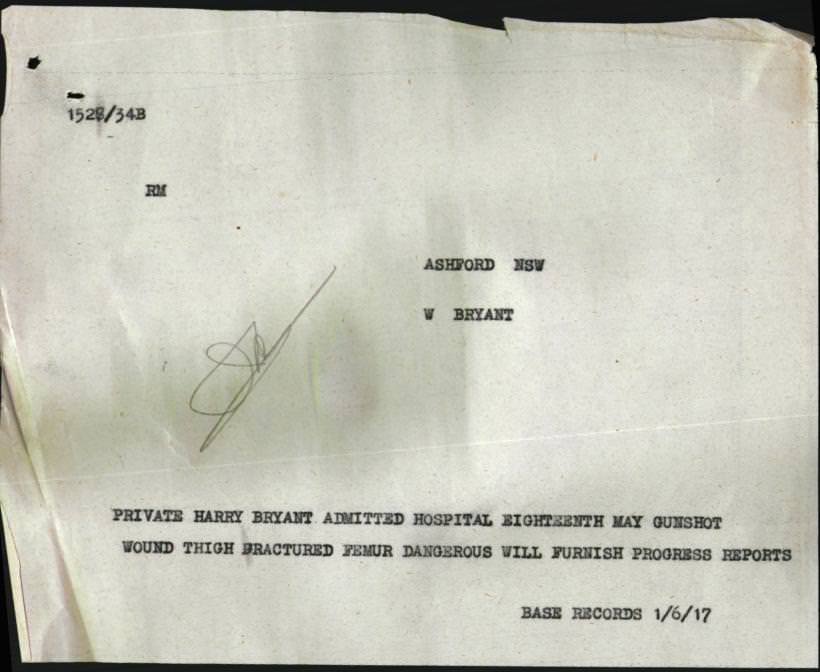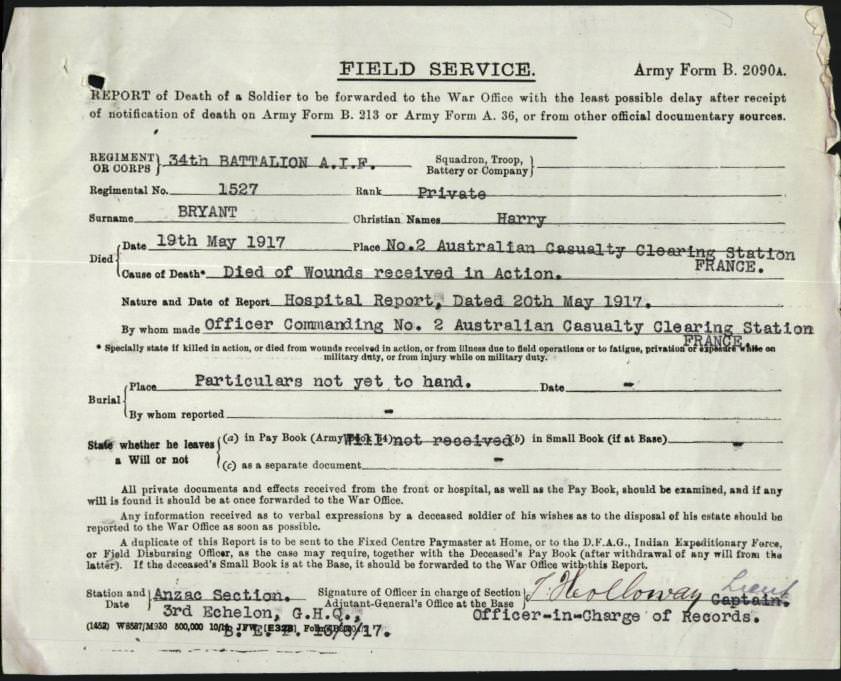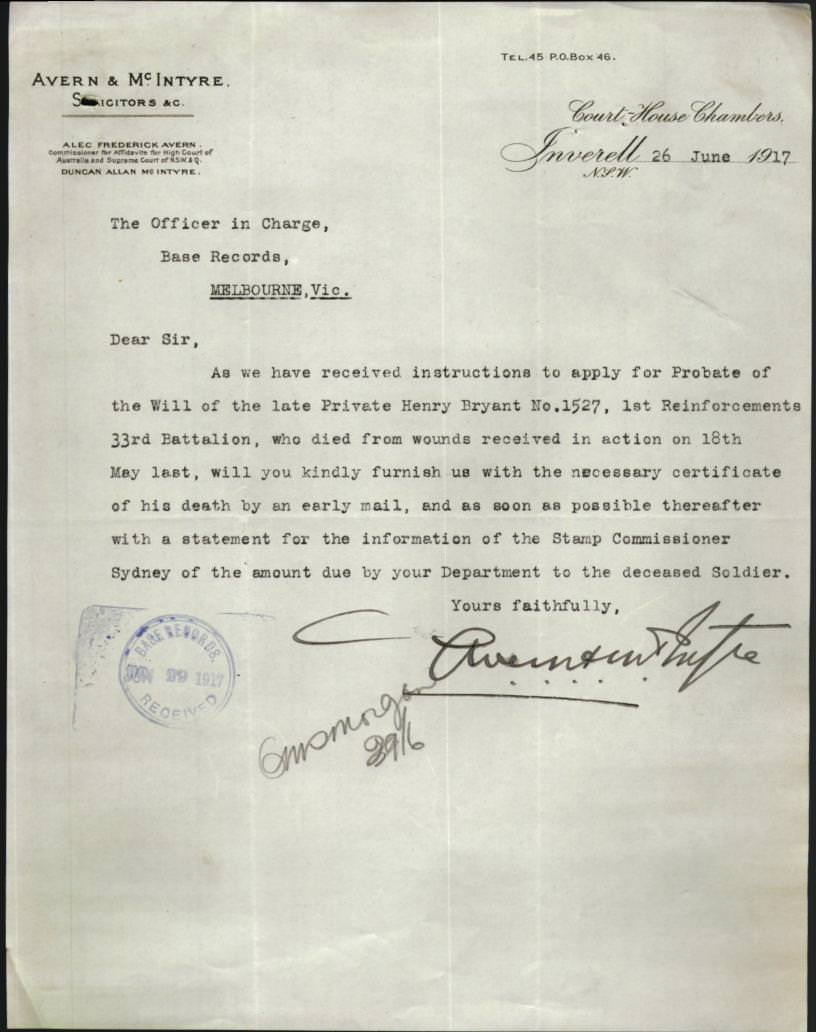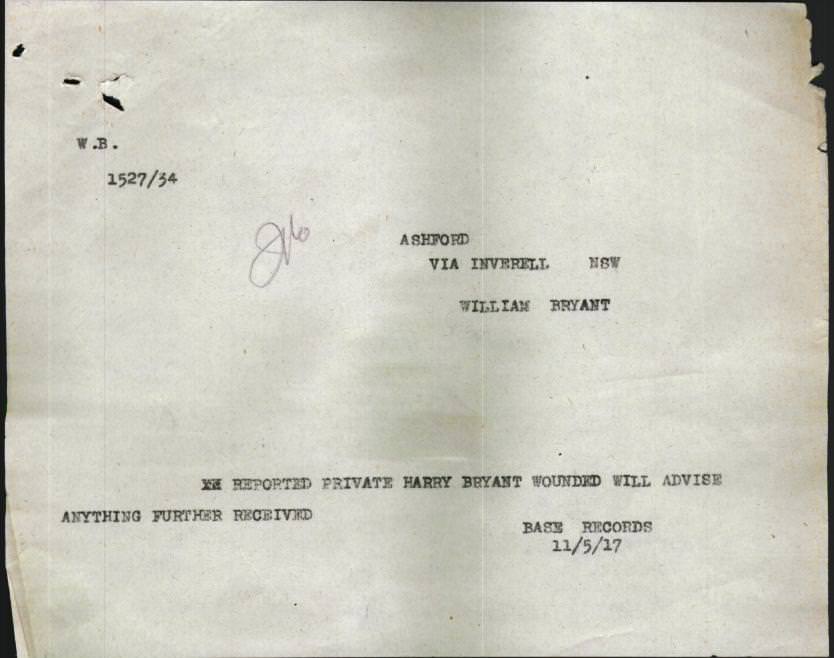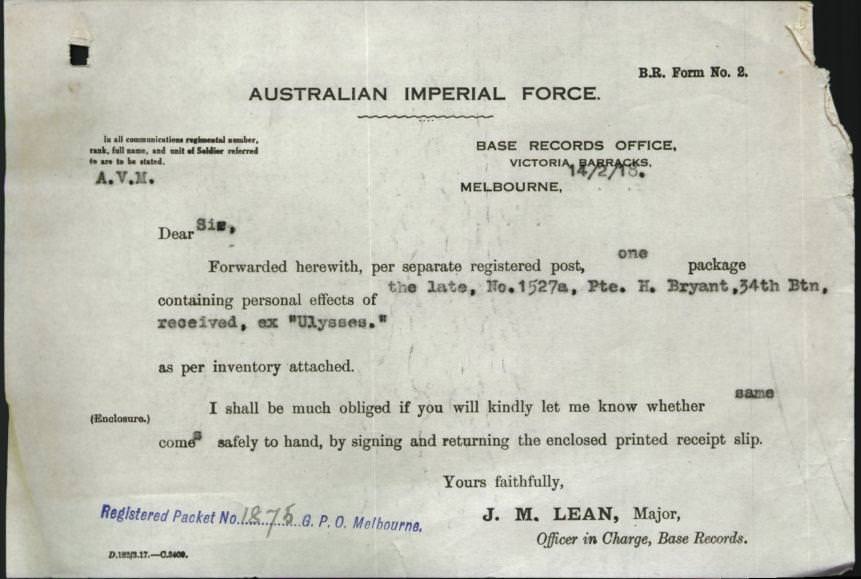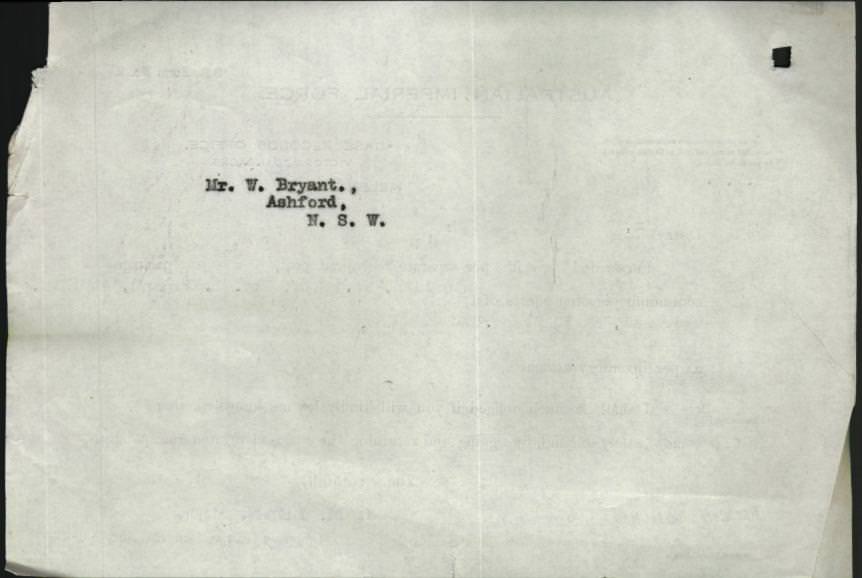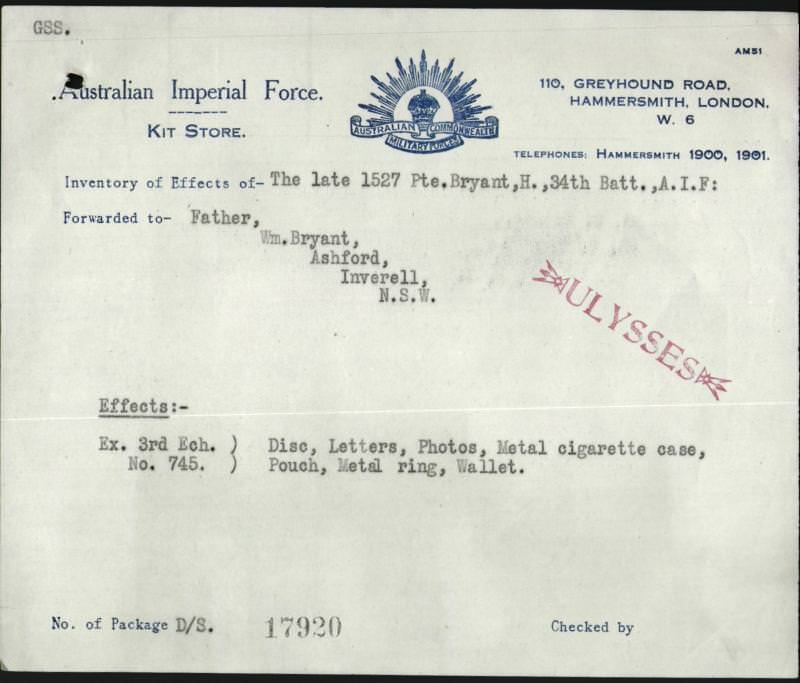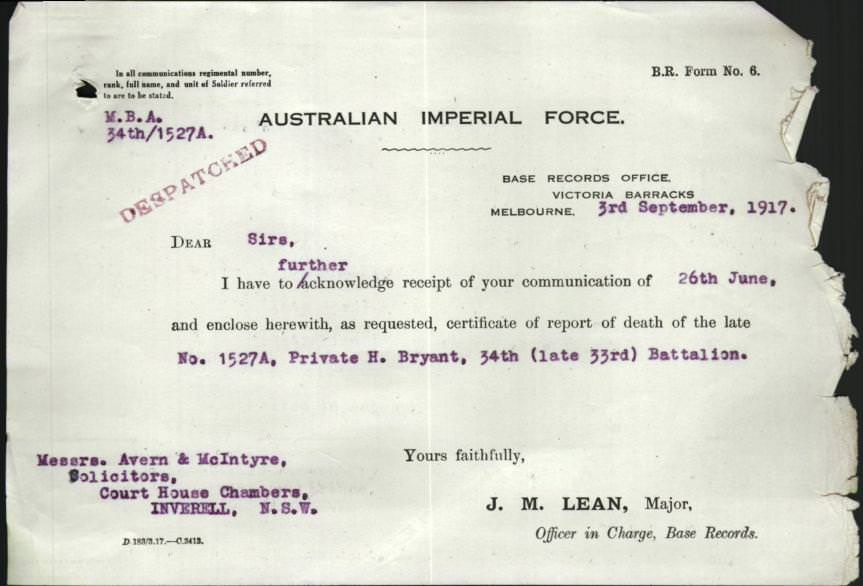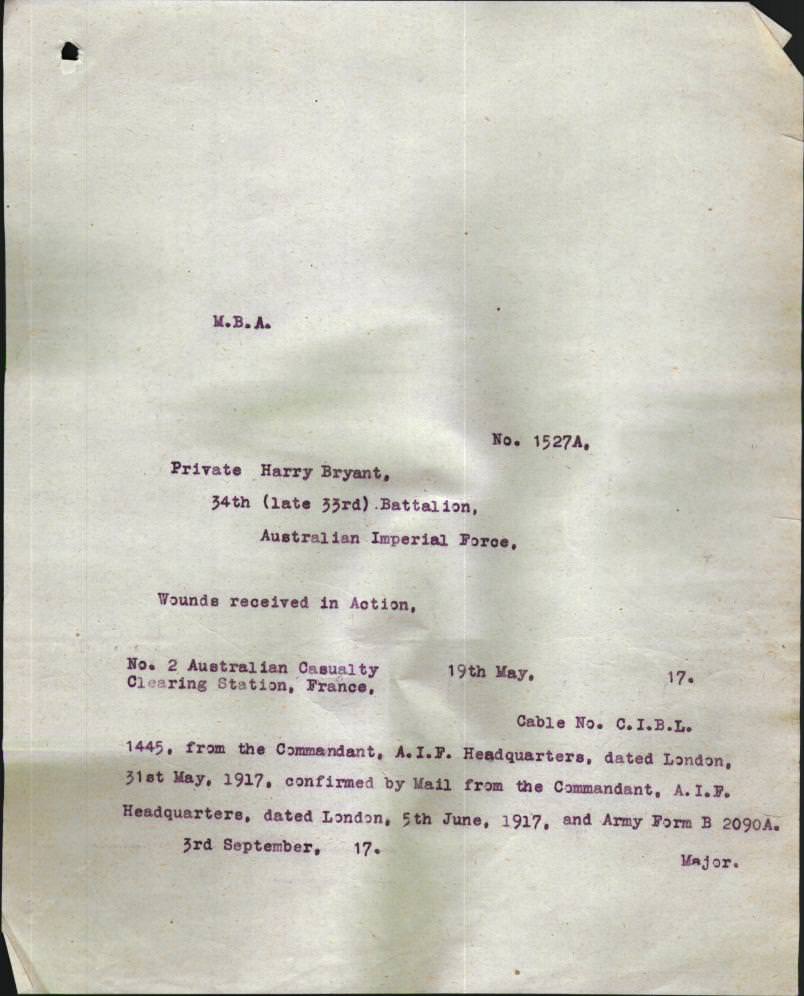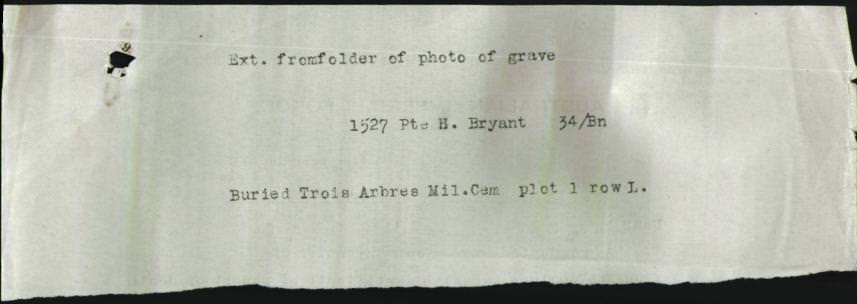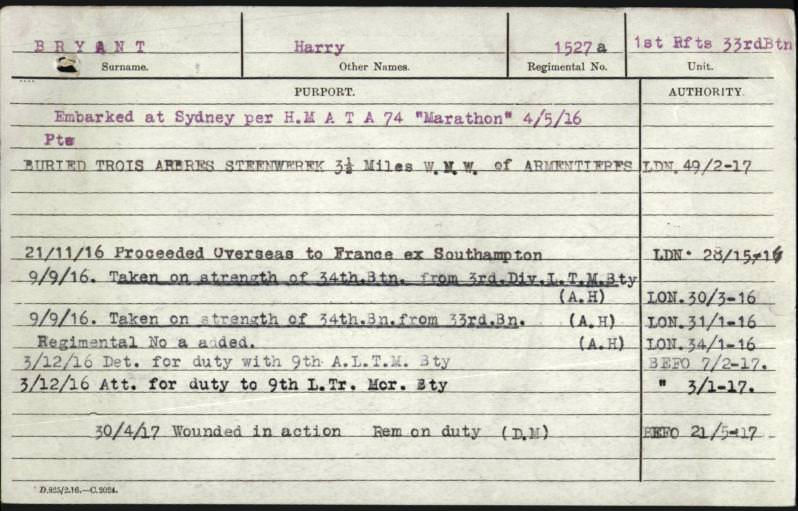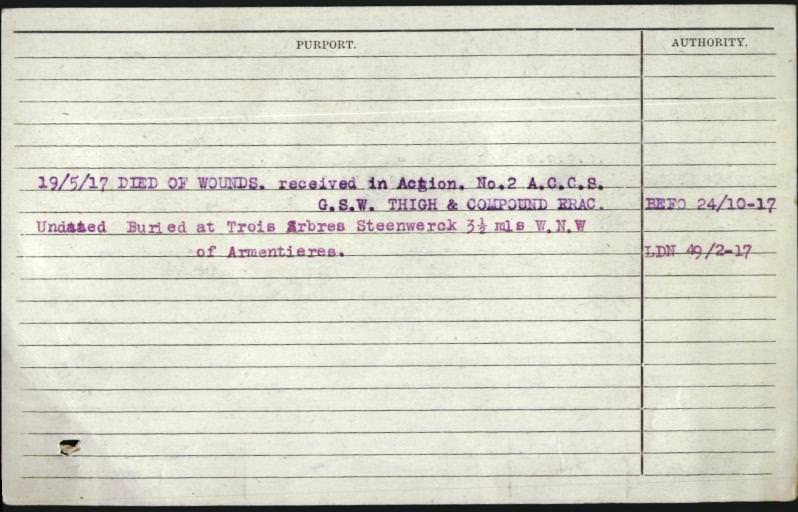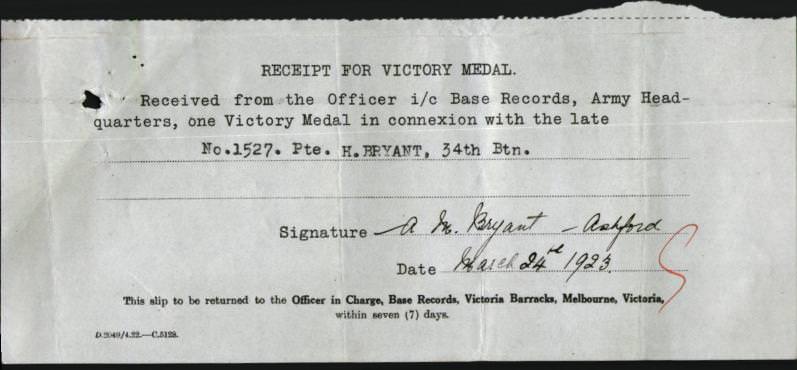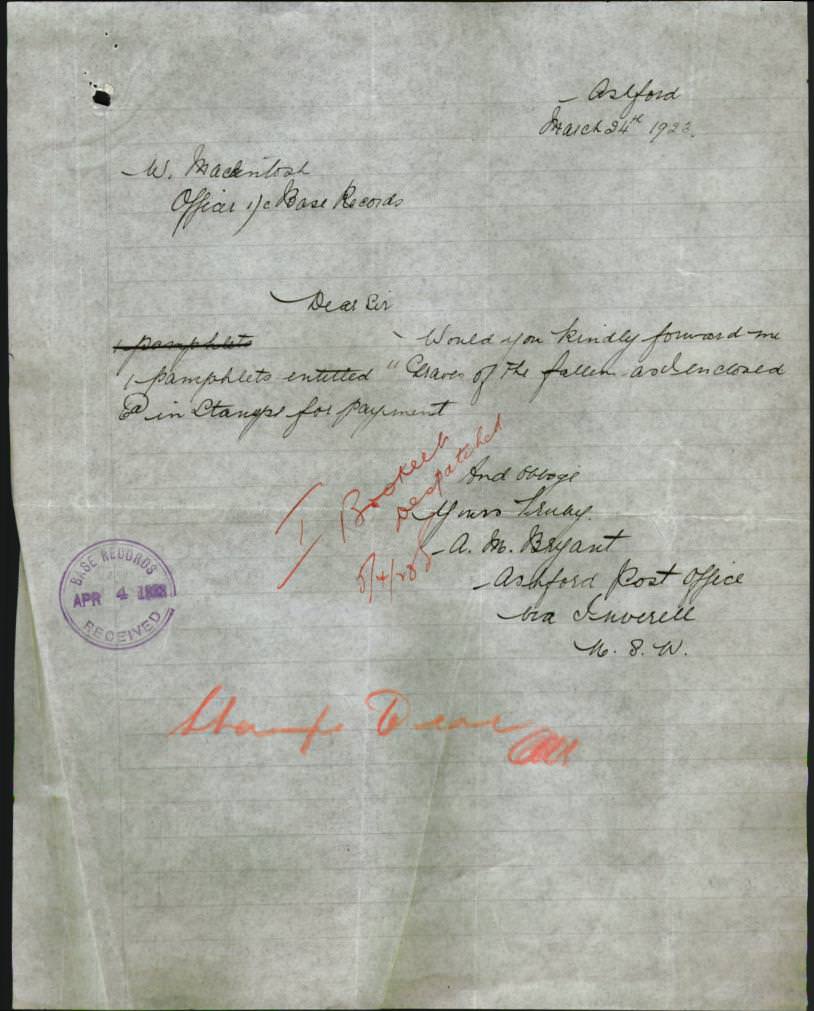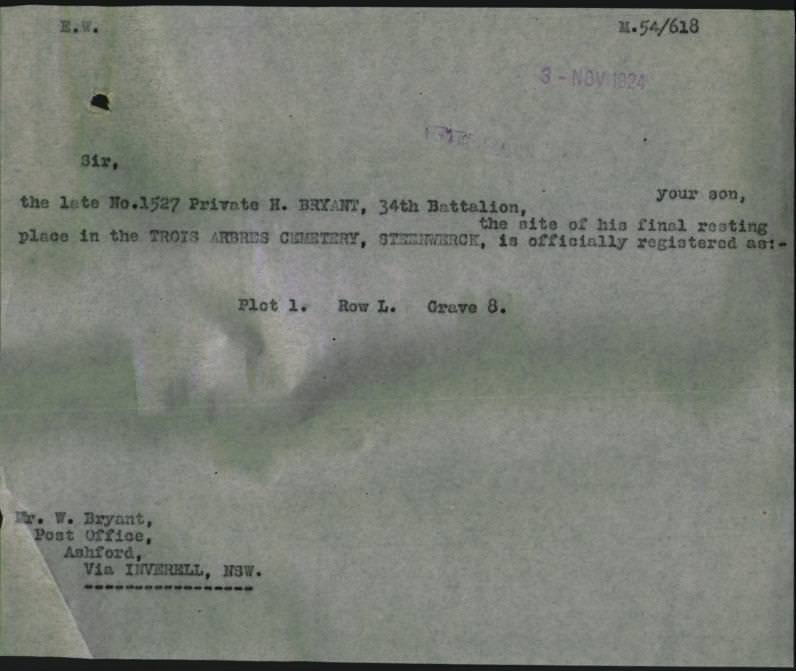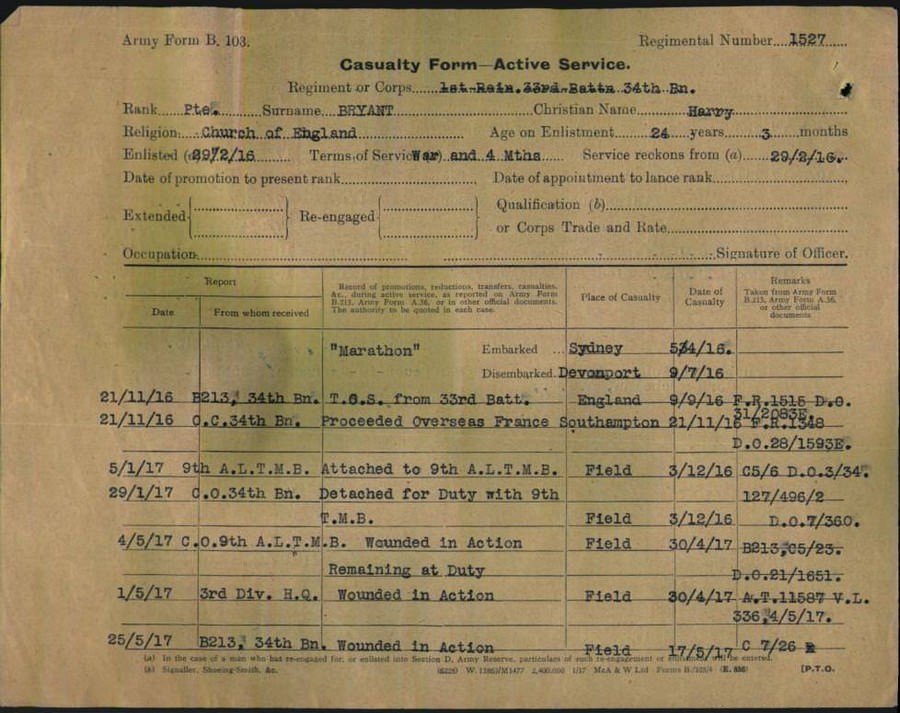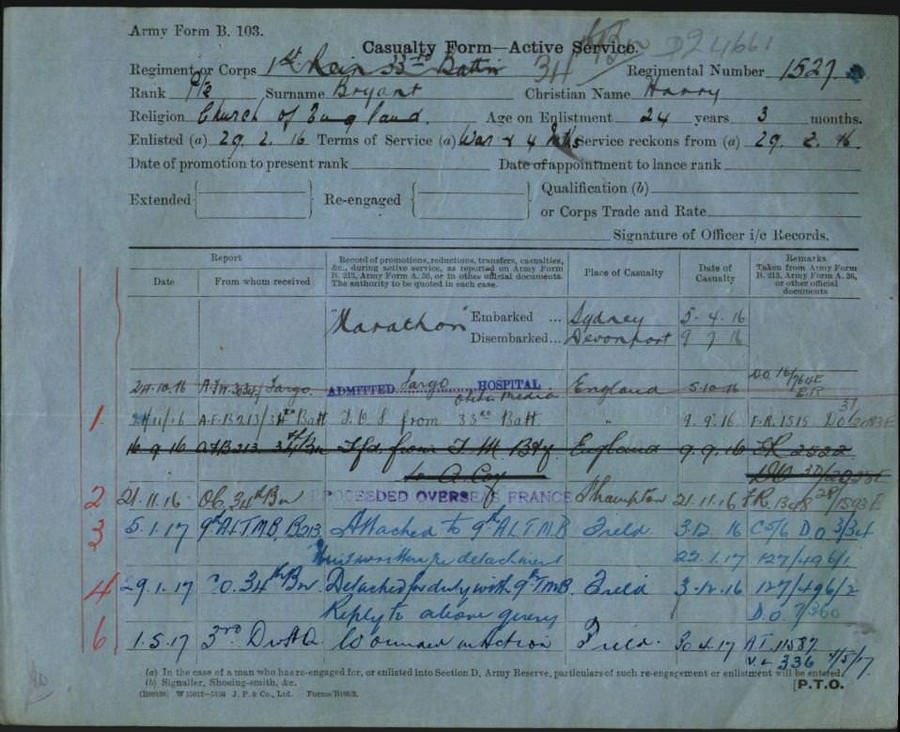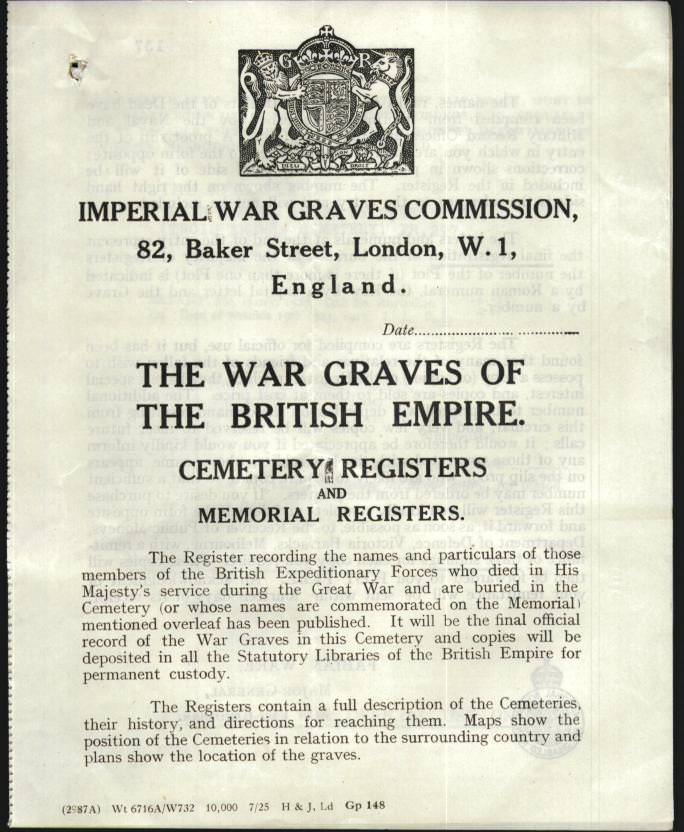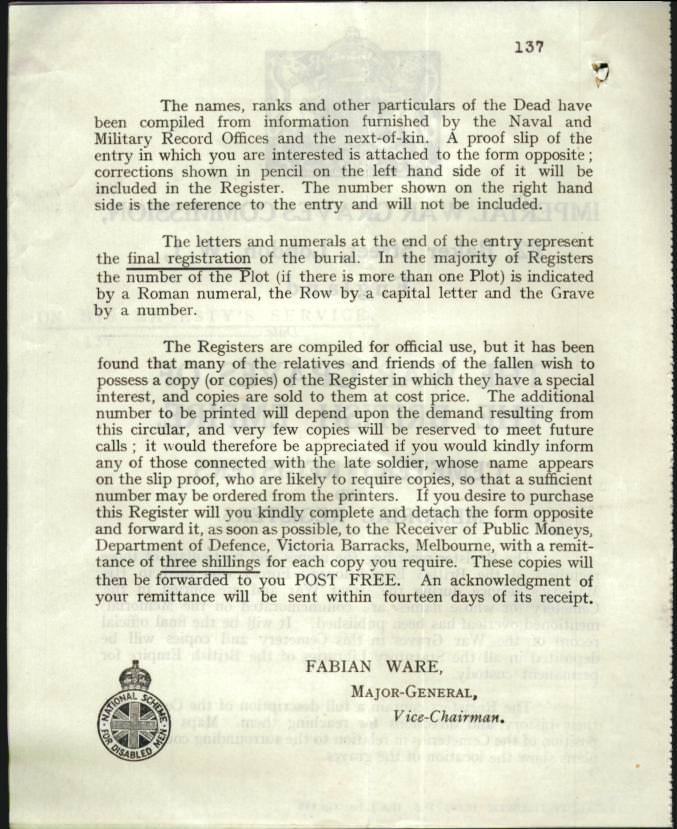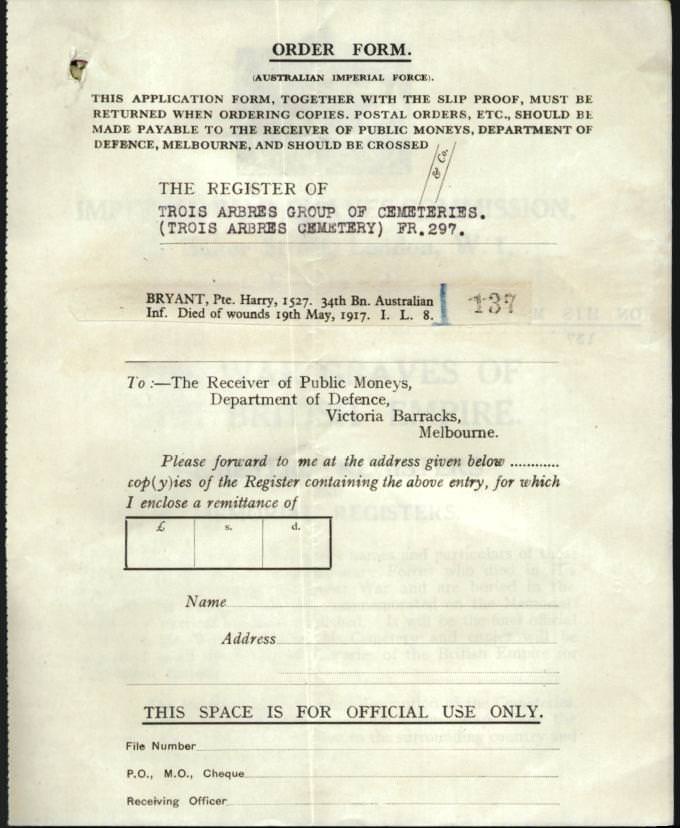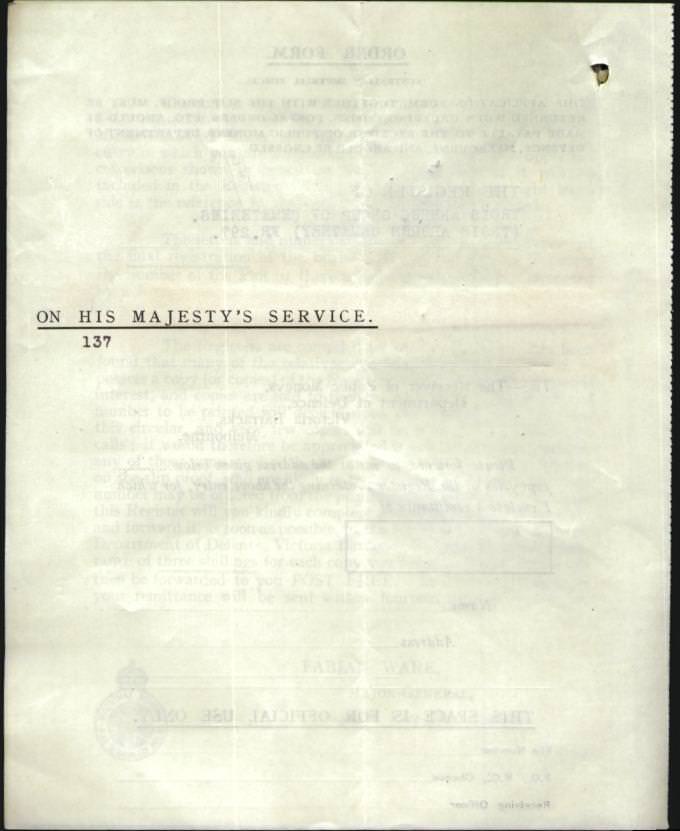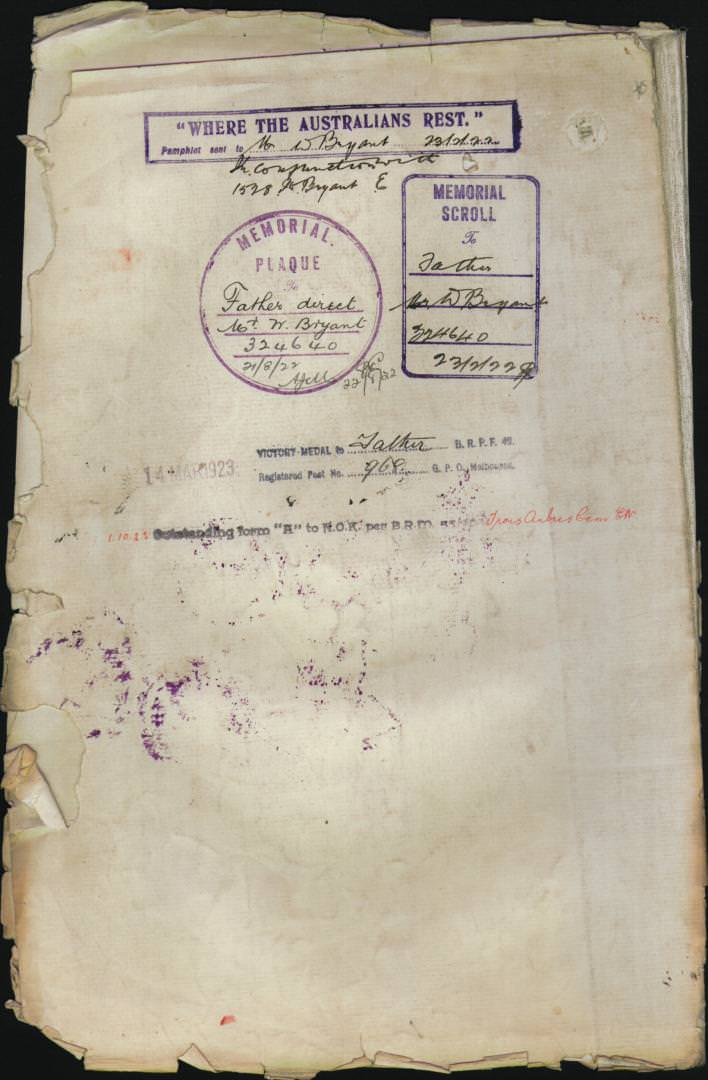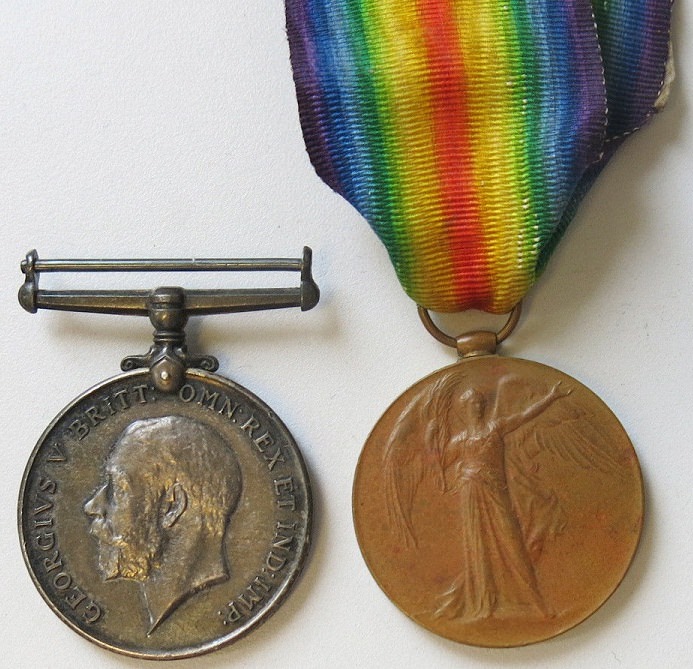
34th BATTALION - 9th LIGHT TRENCH MORTAR BATTERY A.I.F.
Private: 1285 Albert Edward "Harold" MCGRATH.
Born: 1895. Newtown via Sydney, New South Wales, Australia. Birth Cert:
Married: 9th April 1919. Kensington, England. Marriage Cert:ME:8502.
Wife: Bessie Arnold McGrath. nee: Marsden. (18..-1966) Died Maitland, N.S.W. Death Cert:35204/1966.
Died:
Father: Albert Edward McGrath.
Mother: Jessie McGrath. nee:.
INFORMATIONHarold McGrath enlisted with D Company, 34th Battalion AIF on the 4th January 1916 and was an original member of the Battalion. Harold went into Camp at the Rutherford Army Camp at West Maitland in March where he remained until May 1916.

Rutherford Army Camp West Maitland 1916.
On 1st May 1916, the Battalion left by Train from Farley Station for the Showground in Sydney, equipped with kit bags and necessary clothing, and was reviewed in Moore Park by General: Gustave Mario RAMACCOTTI. On the following morning, 2nd May 1916 the men embarked on the transport HMAT A20 "HORORATA" and sailed at 4:00 pm".

H.M.A.T. A20 "HORORATA
"The voyage to England was without any unusual incidents and a good passage throughout. The first port of call was Albany, where three days were spent. Columbo was reached on Empire Day, 24th May. Here two days were taken up coaling and taking on provisions, etc. During the stay the Battalion carried out a route march through the town. Suez was reached on 8th June, where a party of Light Horse and some details were disembarked. Arriving at Port Said on 9th, the ship coaled and proceeded to Alexandria which was reached on 11th June 1916.
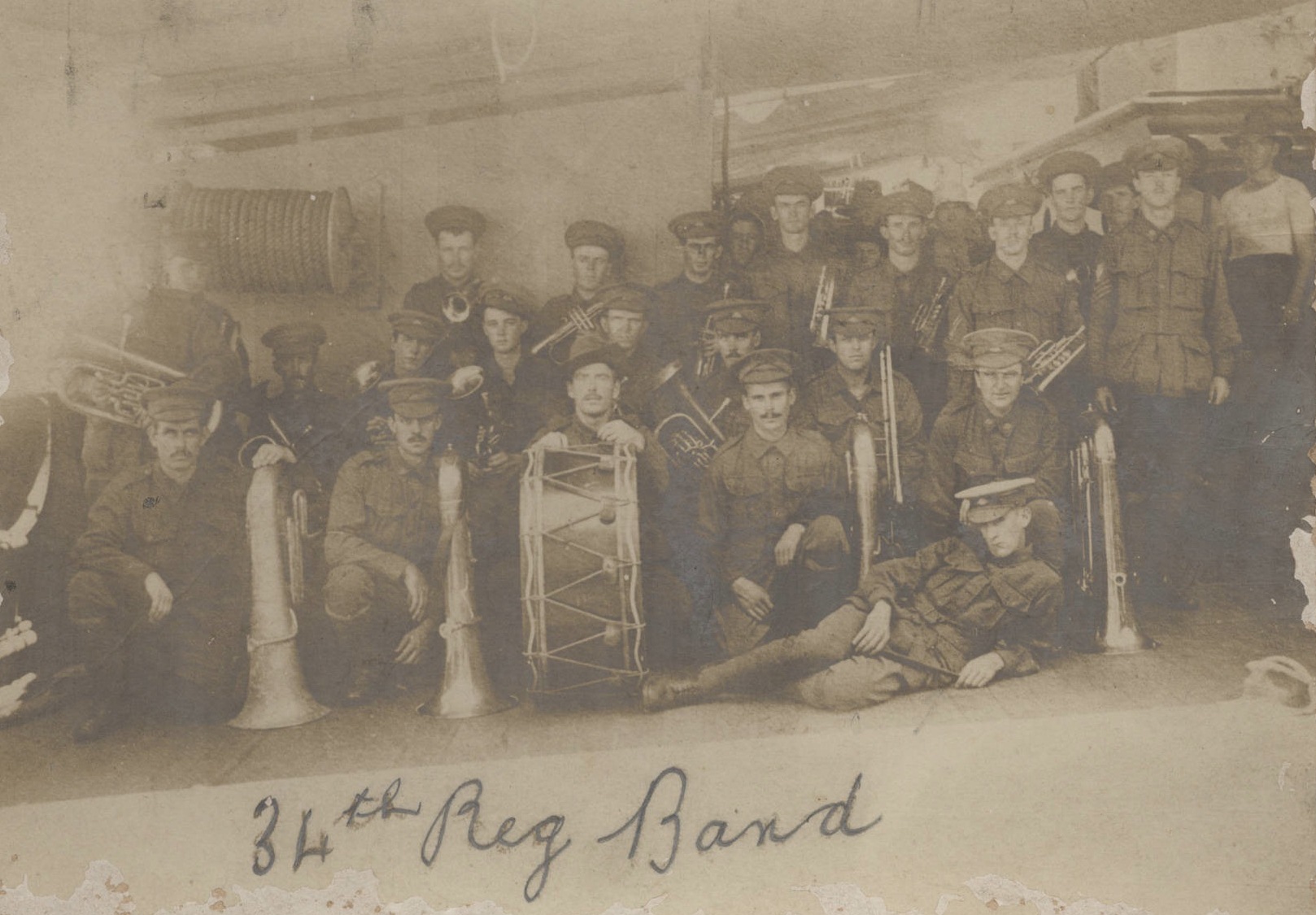
Here the Battalion transferred to S.S."Aragon", E867. Some Australian Details were on board, also a number of Tommie's going to England on Furlough. Devonport was reached on the 23rd June, the Battalion disembarked at Plymouth at 1:00 pm and en trained during the afternoon for Amesbury, arriving at midnight and marching to hutments at No: 1 Camp, Larkhill. Here the Battalion settled down to hard training, which included Route Marching, Trench Digging, Bomb Practice, Musketry and general Camp Routine. Later the Battalion moved to the No: 25 Camp and finished off their training, which included six days' battle practice and field work at the Bastard Trenches.
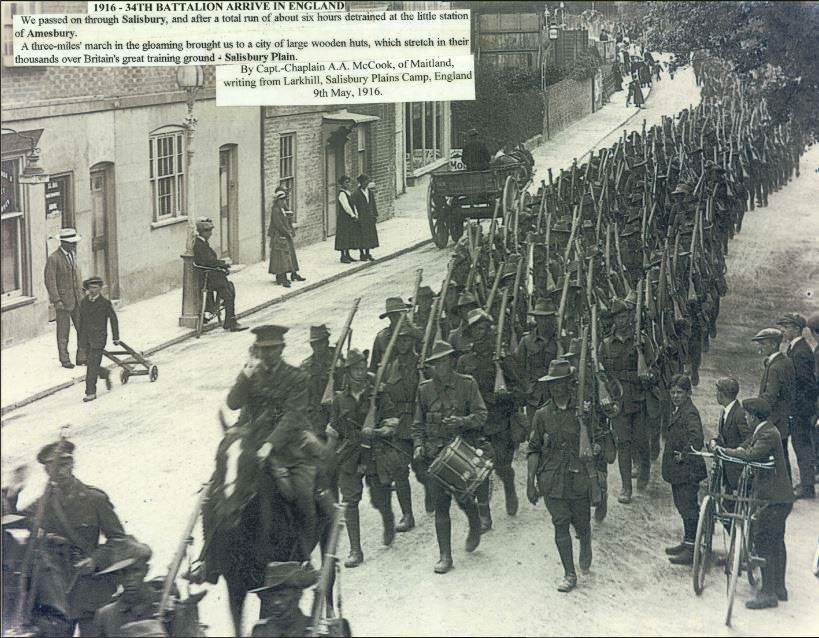
34th Battalion marching through Amesbury
Four days' disembarkation leave was given from 6th to 10th July and later King's Leave from November 5th to 9th. Whilst here the Official Colours were issued. Purple over Green (Oval), these replacing the Colours presented to the Battalion (Old Gold on Shoulder Straps) by the Ladies of West Maitland. A Signal Section was formed at Lark hill under Lieutenant: Harold Henry McMINN. The weather in England was mostly fine until the latter part of training, when a good deal of rain and snow caused inconvenience. In October the 34th Battalion was reviewed at a Divisional Parade by His Majesty King George V at Bulford.

The 34th Battalion left Lark hill on the 21st November and en trained at Amesbury for Southampton, embarking on the S.S "Arundel". The transport section left by S.S. "Princess Victoria". The Battalion arrived at Le Harve, France on the 22nd November 1916. Disembarkation commenced at 8:00 am and the Battalion marched to No;1 camp on the Hill, arriving at 2:00 pm. The men carried heavy loads, in some cases amounting to miniature Q.M.' Stores. The march over cobblestones was very tiring, notwithstanding the many route marches which had been carried out at Larkhill. However, after bathing their feet and receiving treatment, as well partaking of a good meal, some spent a comfortable night.
The following morning the Battalion moved to Le Harve Railway Station, leaving D Company behind. On arrival at the Station en training commenced at 8:00 am and the train left at 11:15 am. The journey was slow and occupied until 4:30 pm on the 24th. On arrival at Bailleul the men de trained and marched to Outtersteene. D Company arrived at 4:00 pm the following day. The Battalion rested here in billets for two days previous to taking over garrison duties in the Line at Armenties. The Commanding Officer Lieutenant Colonel. Malcolm St John LAMB. with the Adjutant, Company Commanders, N.C.O's and Specialists went into the Line to inspect Trenches, Stores, Plans and to arrange for the taking over this Section of the line on the following day.
6th June 1917.
BATTLE OF MESSINES
(1) At 10 pm on the 6th June 1917, the Battalion left its billets fully equipped for the assembly Trenches. The order of march being "D", "A", "C" and "B" Companies. All went well until just before reaching Gunners Farm, where the enemy was putting a number of Gas Shells over and Masks had to be put on. Ploegsteert Wood and the back area were receiving particular attention. All Companies were greatly delayed of the amount of Gas in the Wood, which resulted in a number of men being gassed on the way up and many others were completely exhausted. A number of men lost there way in the darkness and smoke. Many could not see at all and had to be led back by there comrades. I many cases it was the blind leading the blind. After a grueling March, the first arrivals reached the Assembly Points 30 minutes before Zero Hour, while the last company arrived only 10 minutes before Zero.
On the 7th June, seven seconds before Zero Hour, which was 3.10 am, four Miles on our front were fired. There was a violent swaying as if an earthquake had taken place and the men in many instances were thrown together. The sky was brilliantly illuminated by the explosives and terrific Artillery fire, the sound of which could not be heard over the intense Machine Gun Barrage. The men left the Trenches immediately and there were a number of casualties on the parapet owing to the heavy enemy Barrage. The supports were also being shelled and the Reserve Company ("D") suffered considerable losses. The weather was hot and sultry and every one felt the tiring march.
The Battalion passed through the 35th Battalion in the vicinity of the enemy's original Front Line, near Ulsters Switch. The enemy fire had been very severe up to this point and many men were lying here. A halt in our Barrage gave the Company Commanders an opportunity of Checking their Compass Bearings, defining their limits, and getting into position for the next advance. At the left of the Barrage a fine assault in complete waves was made. The men gained their objective in fine style behind a perfect Barrage and commenced consolidating their position. The mopping up of the Trench System was soon accomplished and many of the enemy were killed in their Dugouts. By 5.30 am fair cover had been obtained on the Consolidation Line. At 6.30 am Enemy Machine Guns were located in a rebout in "Uncertain Trench" and heavy Artillery was brought to bear on them with good results. By 7.30 am the Black Line was down to two thirds of its depth and linking up by Companies and Platoons were in progress. The enemy was seen moving along "Uncertain Trench" and also reports were received from the 33rd Battalion that the enemy was massing 1,000 yards in front. Reports of enemy movement continued throughout the early part of the morning, but Artillery co-operation helped to disperse the tendency and during the day no organised counter attack was attempted.
At 8.30 am the Line was well dug along the Front and affording excellent protection for the men. By 9.30 am only one gap remained between "A" and "B" Companies in the full length of the consolidation of the "Black Line" to the River La Douve. The Trenches being now well down, widening and sandbagging were now in progress and at 11.30 am showed very plainly in an Arial Photo as a good defensive Trench. There were repeated enquiries for water from the Front Line. Carrying Parties were suffering heavy casualties and were completely knocked up with the long distance.
At 1.40 pm Captain: Arthur Sidney WHITLOCK with "D" Company advanced to the Green Line, without Artillery support, owing to an alteration in the Zero Hour not reaching him. At 2.45 pm he reported by Runner that, having waited 30 minutes and no Artillery Barrage as arranged have been put down, he had advanced to the Green Line and was consolidating. by 7.30 pm all Companies reported that their positions were well consolidated. Just before midnight Captain: Arthur Sidney WHITLOCK was killed between the Green and Black Lines, and Captain: Robert Joseph STEWART took command of "D" Company. Patrols under the Scout Officers were sent out during the night and encountered enemy Patrols which were dispersed. A number of enemy patrols were also killed by our Machine Gun and Lewis Gun fire earlier in the night. At 5.00 am on the 8th June an enemy Plane over, flying low and inspecting our new position.
Our casualties to date had been 8 Officers and 236 other ranks. Captain: Arthur Sidney WHITLOCK and Lieutenant: 584 Leslie William Roy WARNER K.I.A. Lieutenant's Lieutenant: William Walter MATTHEWS Lieutenant: Hector Reginald McLEOD, Lieutenant: Bruce Gray McKENZIE, Lieutenant: Benjamin Greenup BRODIE, Lieutenant: Thomas Clifton PITTAWAY and Lieutenant: Frederick Winn WALKER wounded.
During the morning the enemy put over a heavy Barrage of 7.7's and 4.5's. Captain: Robert Joseph STEWART sent a message by pigeon that our own Heavies were dropping a few Shells short and doing some damage to our own Trenches and causing a few casualties. Several messages were sent back but it was some time before the matter was rectified. At midday enemy Machine Gun Fire from the vicinity of Potterie Farm, about 300 yards from our Front, was very troublesome. At 4.00 pm our Artillery opened up a heavy bombardment which continued for four hours. This was replied to by the enemy at 8.30 pm and was particularly heavy north of La Douve. Ten minutes after this opened all communication lines were cut and messages were sent on the Power Buzzer. By 10.40 pm everything had become normal and the night was fairly quiet.
On 9th June 1917, Lieutenant: Clarence Smith JEFFRIES. with a Patrol of 50 Other Ranks left our Trenches at 4.00 pm with the object of reconnoitering Potterie Farm. This Patrol came under heavy Machine Gun fire and on returning reported the position was fairly strongly held. Lieutenant: Clarence Smith JEFFRIES. was wounded, 2 Other Ranks killed and 3 wounded.
On the night of 12th June the Battalion moved out to Vauxhall Camp and here reinforced by reserve men from Morbecque. The whole operation had been most successful, in spite of the difficult approach March, caused by the wearing of Gas Masks and the darkness of the night. About 3.30 am an unusual occurrence happened when one of our Planes, flying low for observation, was struck by one of our Shells and was cut in halves. During the whole period rations were taken up as usual, the limbers and Carriers being constantly under heavy fire. Many brave deeds were performed and a number of Officers and men were recommended for decorations which were in many cases awarded later. Total casualties were 10 Officers and 399 Other Ranks.
On 14th June the Battalion moved to billets near Vieux Berquin for rest and training. The next day the Corps Commander, Lieutenant General: Sir Alexander John GODLEY inspected the Battalion at Doulieu. Captain: Charles Edwin Woodrow BEAN Australian War Correspondent, was also present. The following day General: Herbert Charles Onslow PLUMER, Army Commander, interviewed the Officers and addressed them. The weather was fine and the men had a good time bathing, writing letters and resting, while reorganization and training was carried out.
On the 21st June the Battalion moved back to Vauxhall Camp and the following day went into tents at Neuve Eglise and relieved 1st Wiltshire Regiment. Training, sports and other competitions were carried out. The weather was fine and enemy planes were very busy strafing our Observation Balloons and the Artillery on several occasions shelling Neuve Eglise. Whilst Here the DUKE of CONNAUGHT held an inspection at Bailleul, the Battalion being represented by Captain: Robert Joseph STEWART Company Sergeant Major: 225 Thomas Brown NORMAN. and 3 Other Ranks.
On 27th June a Sports Day was held and the enemy livened up the proceedings by setting fire to four of our balloons at the one time. During the evening the Cooee's gave a concert. At 9.00 pm the same evening the Battalion marched to the rear of Middle Farm and relieved the 36th Battalion in reserve. From here the Battalion supplied Working Parties during the night time. The enemy shelled continuously and there were a number of casualties. The Transport had a very difficult time taking up the Rations along the track which was being continuously shelled, especially in the gully near Railway Line.
On the 1st July about 4.30 am the Transport came under heavy shell fire and Sergeant: 1482 Timothy "Tim" Daniel MALONE who was in charge, called a halt for a time. When things appeared a little quieter he decided to make a dash for the Ration Dump. When about 300 yards from it a heavy shell struck the Transport, killing Sergeant: 1482 Timothy "Tim" Daniel MALONE and a store man and wounding three others. The Limber was upset into a hole and the Mules killed. The wounded having been taken back, the Rations were delivered to the Battalion, good work being done by Private: A J TAYLOR. The weather was fine but the ground was a mass of Shell Holes. Continual trouble was experienced in transporting Rations, as the enemy appeared to have good observation and always seemed to open fire on any movement. Carrying Parties had long trips to make and heavy loads to carry and were under constant Shell fire. Tracks were charged but conditions did not improve and numerous casualties were sustained nightly. Lieutenant: Henry Cecil Llewellyn BENNETT. who had charge of the Carrying Parties, did good work under trying circumstances and by his coolness set the men a fine example.
On the night of 3rd July the Battalion relieved the 33rd Battalion at Middle Farm. Lieutenant: Harold Wydham LILJA joined here with a number of reinforcements. The enemy was raining Shells on this position, but it was very noticeable that a large representation were "duds", as many 15 in succession. The Battalion was relieved by the 36th Battalion on 6th July, and on 7th July during the afternoon Lieutenant General: Sir Alexander John GODLEY held a review at Hillside Camp. Captain: Robert Joseph STEWART and Captain: Herbert Henry PERCY were decorated with the Military Cross, While 1 Distinguished Conduct Medal and 11 Military Medals were presented to Other Ranks.
Hector was Wounded in Action on the 3rd July 1917 when he received a Gun Shot wound to the Face and received a Fractured Lower Jaw and was invalided to England where he was admitted to Hospital for further treatment. After he was discharged from Hospital, Hector proceeded overseas again for France on the 17th October and was Taken on in Strength with the 9th Light Trench Mortar Battery on the 29th October 1917.
4th-5th April 1918.
The First VILLERS-BRETONNEUX
The Strength of the 9th Infantry Brigade was about 2,250 but their casualties during the 2 days of fighting numbered 30 Officers and 635 men either killed in action or missing.
9th Infantry Brigade Casualties.4th-5th April 1918
| 33rd Battalion. AIF |
3 Officers |
82 Other ranks |
| 34th Battalion. AIF |
5 Officers |
120 Other ranks |
| 35th Battalion. AIF |
9 Officers |
282 Other ranks (including 44 missing) |
| 36th Battalion. AIF |
12 Officers |
133 Other ranks (including 1 missing) |
| 9th Machine Gun Company. AIF |
1 Officer |
18 Other ranks (including 4 missing) |
Hector was Wounded in Action; 2nd occasion on the 18th April at Villers Bretonneux where he was effected by Gas Poisoning and was evacuated to England where spend the remainder of the and returned to Australia on the 23rd July 1919.
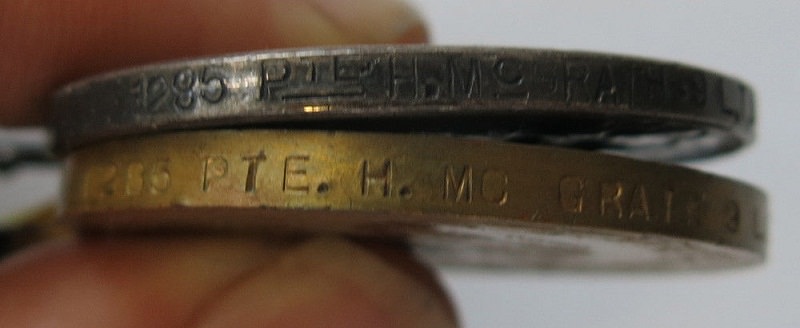
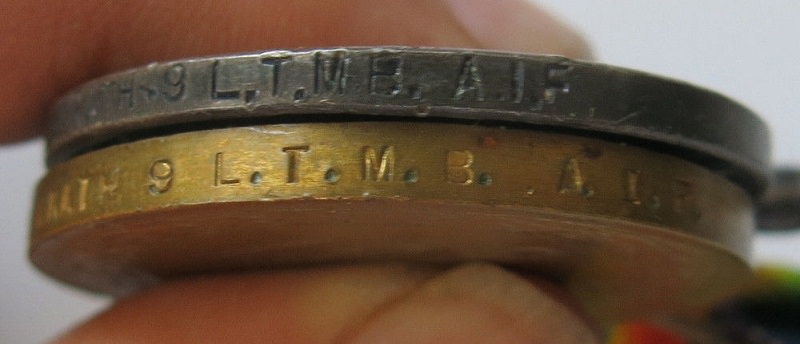
Australia WWI Medal Pair 1285 PTE H. McGRATH. 9 L.T.M.B. A.I.F. inscribed: "1285 PTE H. McGRATH. 9 L.T.M.B. A.I.F."
Family Information
Harold was a single 24 year old Coal Miner from Main Road, Abermain upon enlistment. Eveline McGrath born 1896 at Waterloo, N.S.W. Birth Cert:1926/1896. Albert Edward "Harold" McGrath born 1895 at Newtown, N.S.W. Birth Cert:. Dorothy P McGrath born 1899 at St Peters, N.S.W. Birth Cert:7133/1899.
Military Records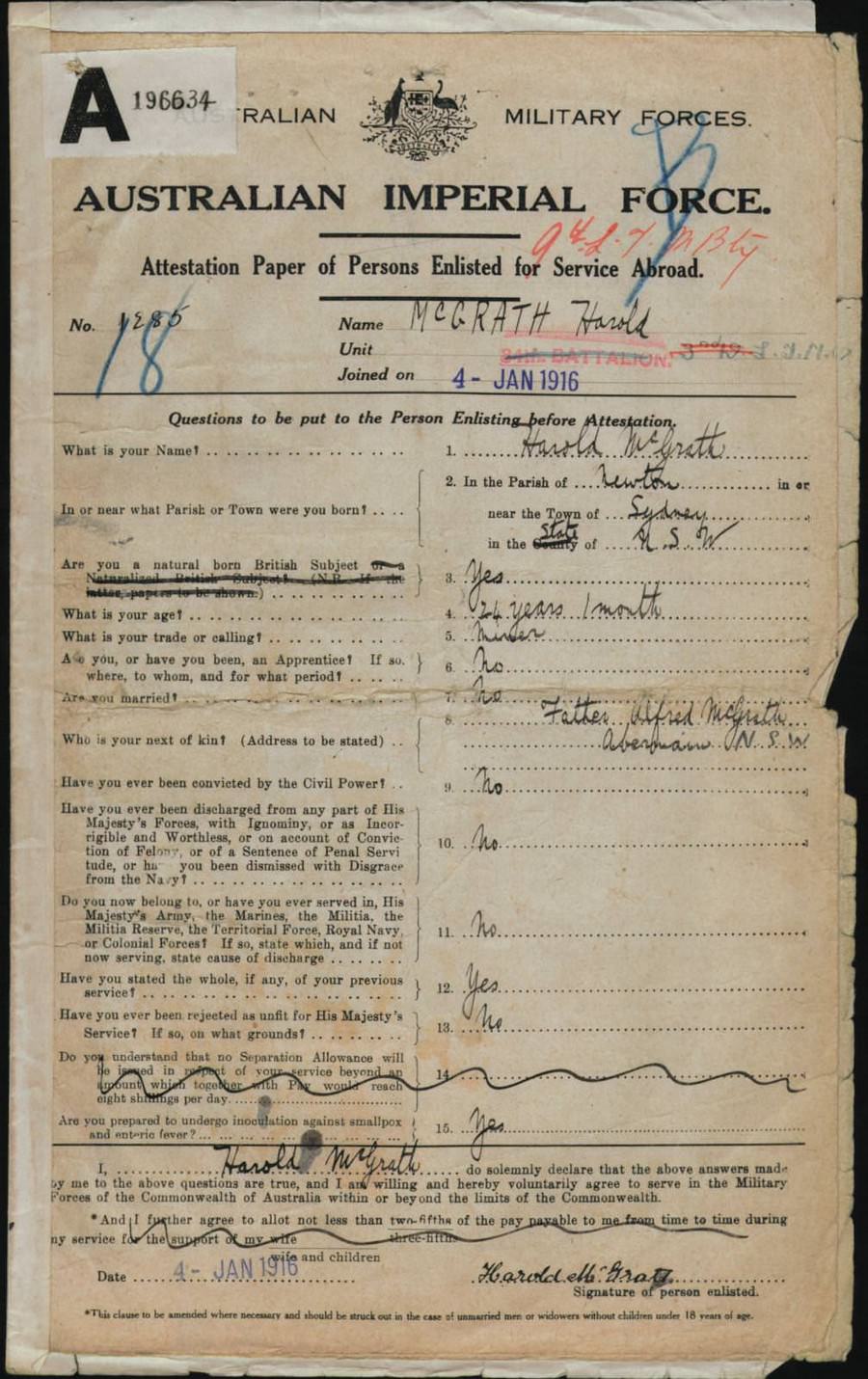

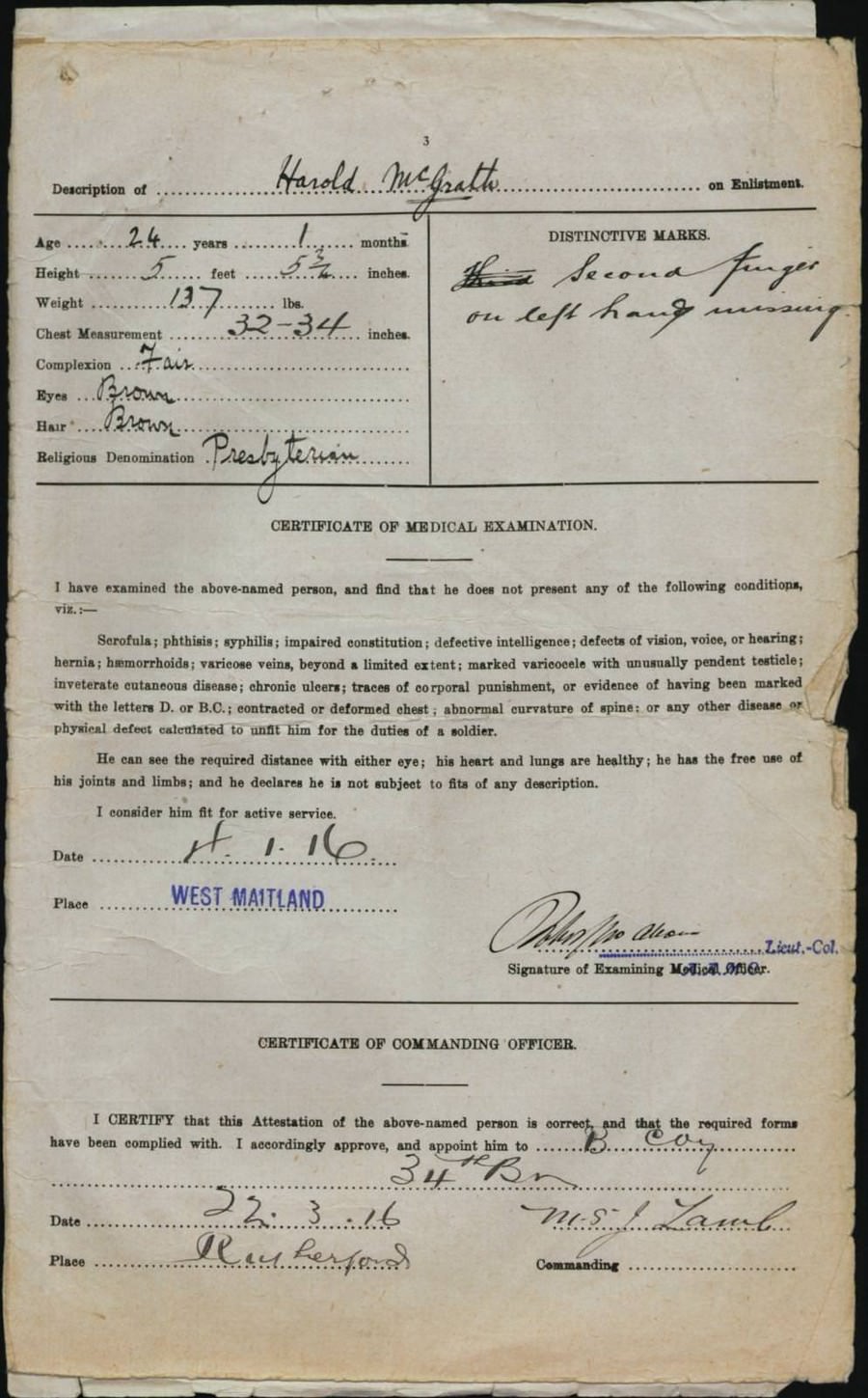

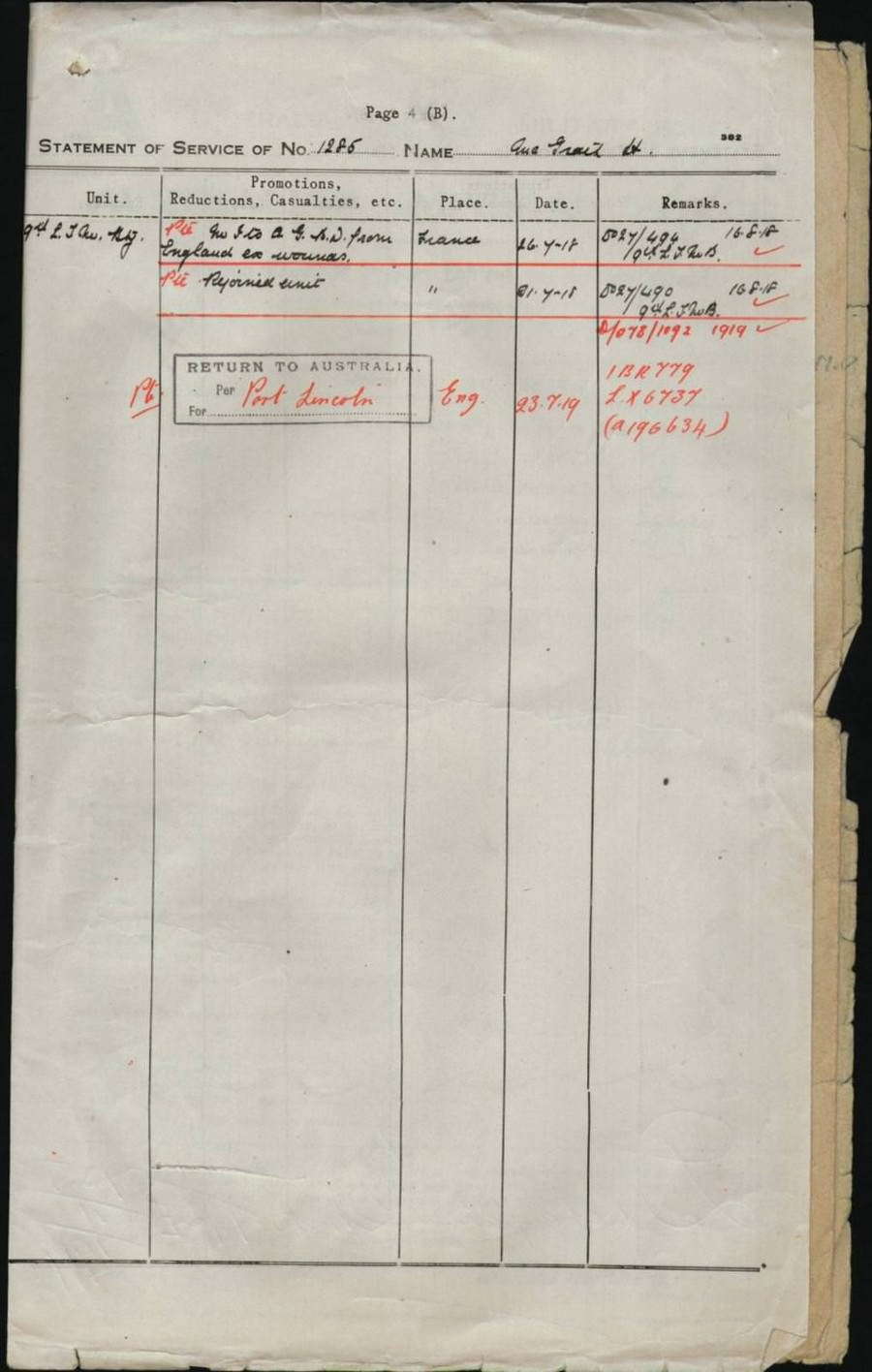


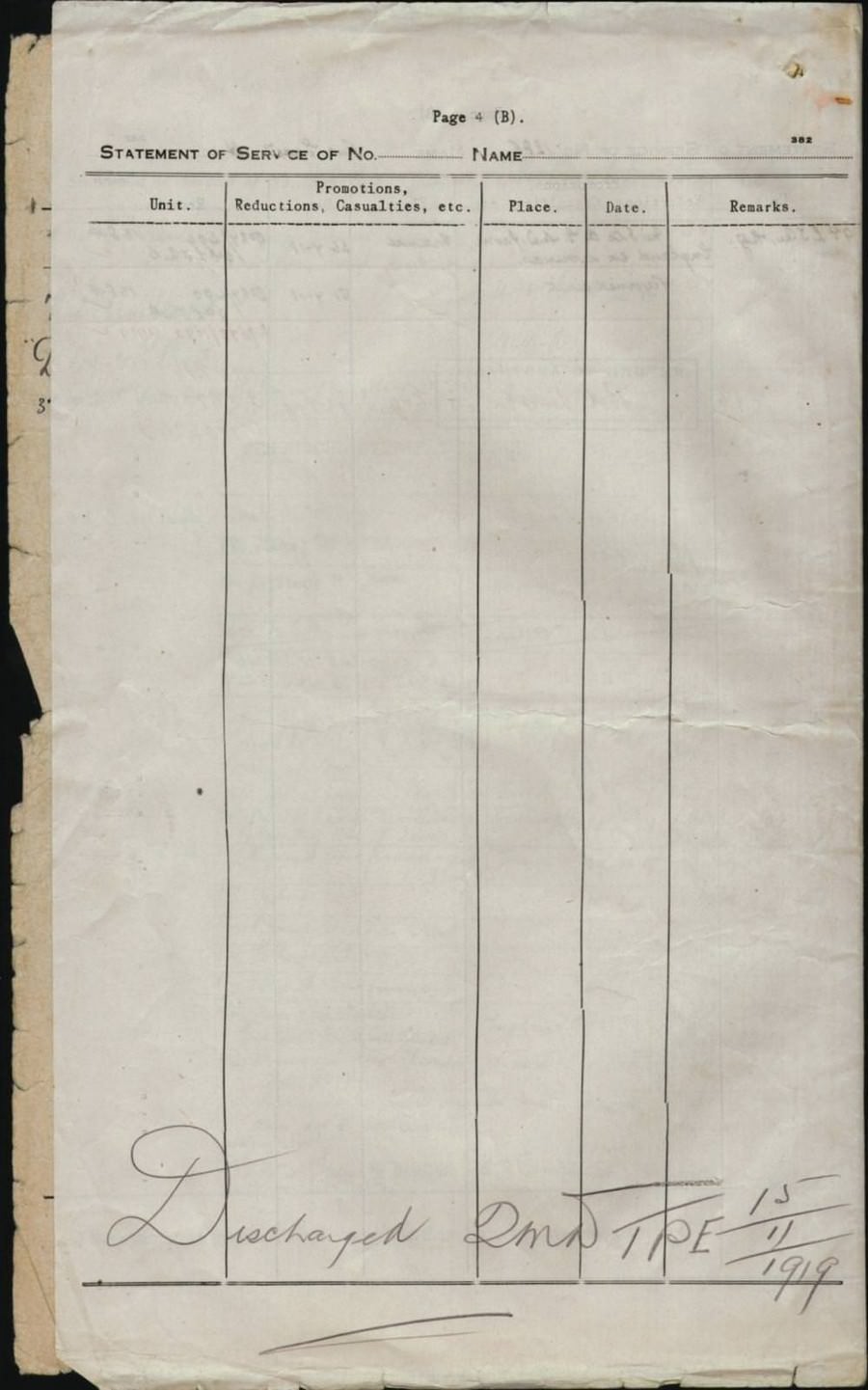
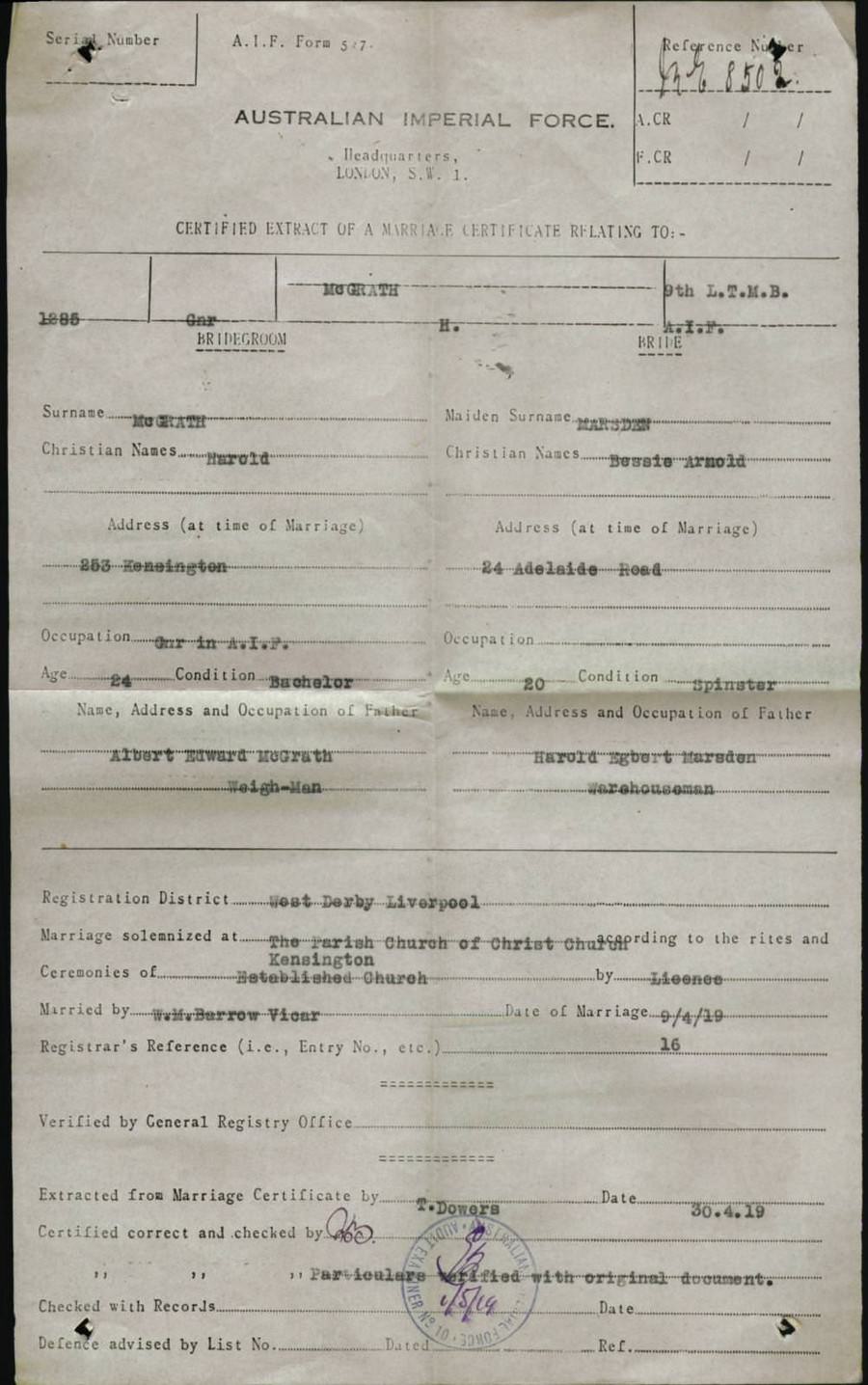

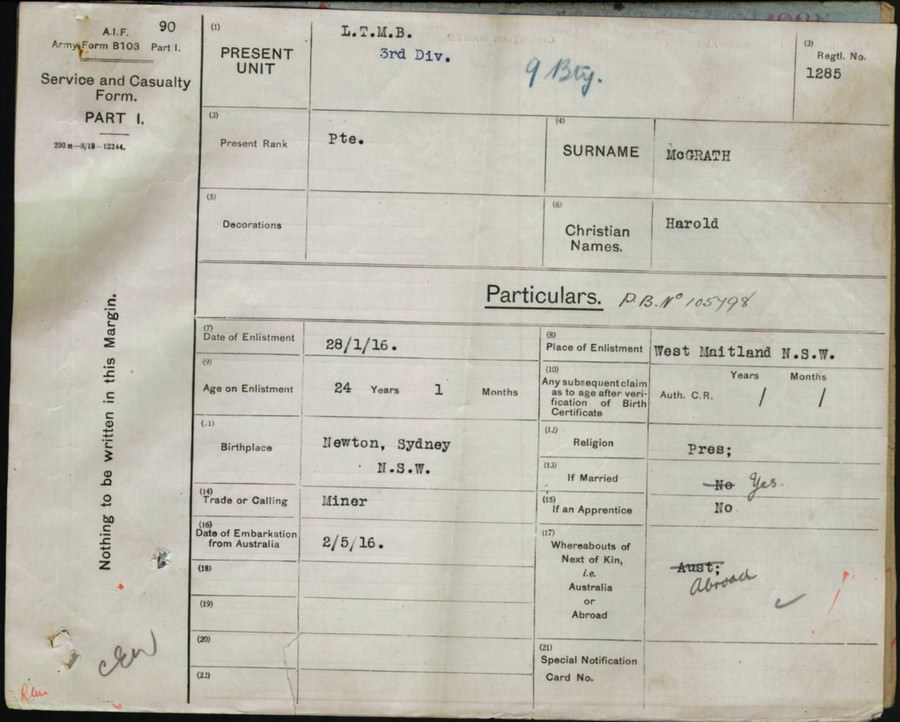
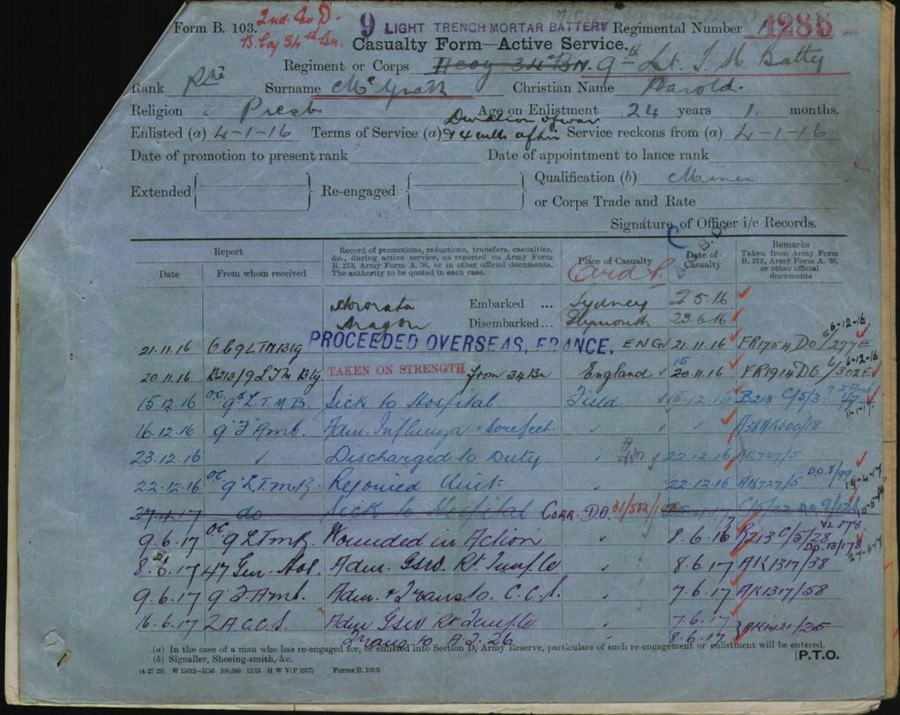

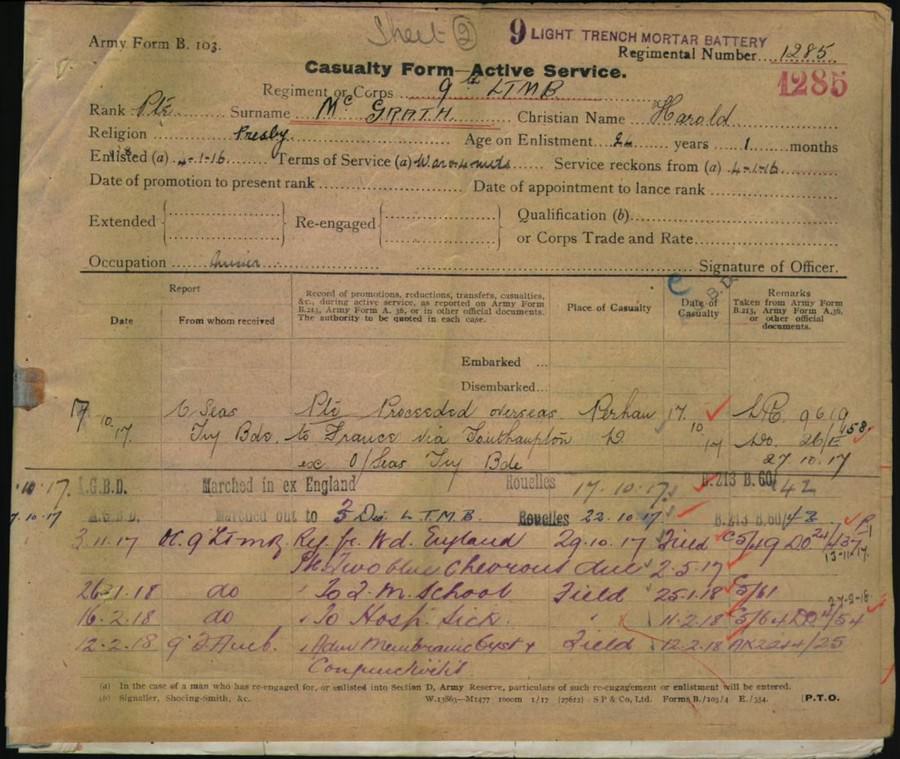
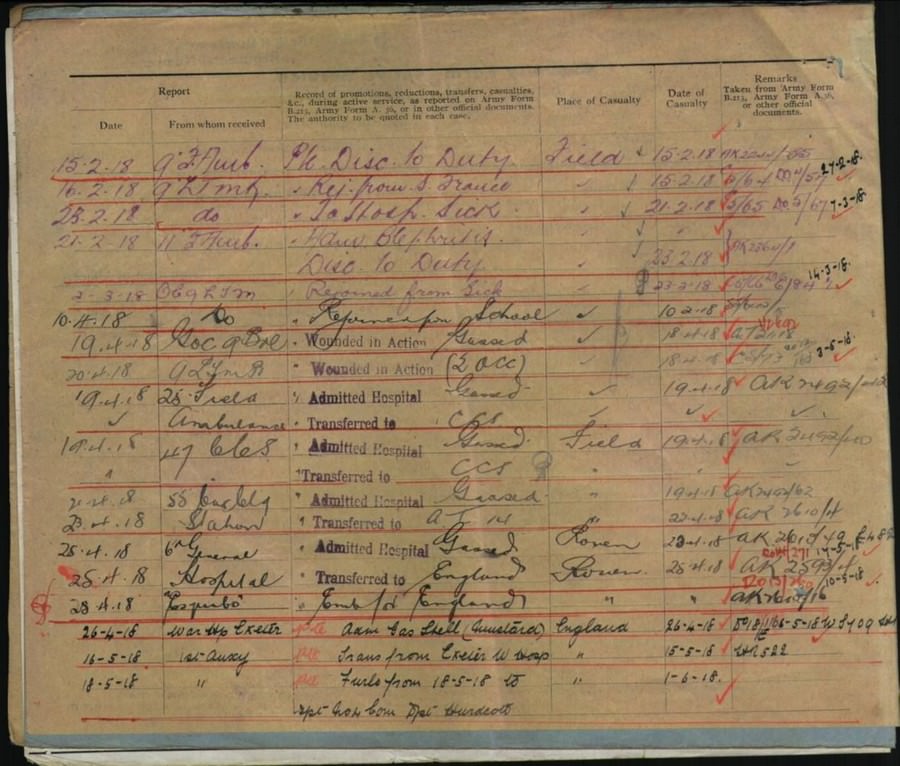

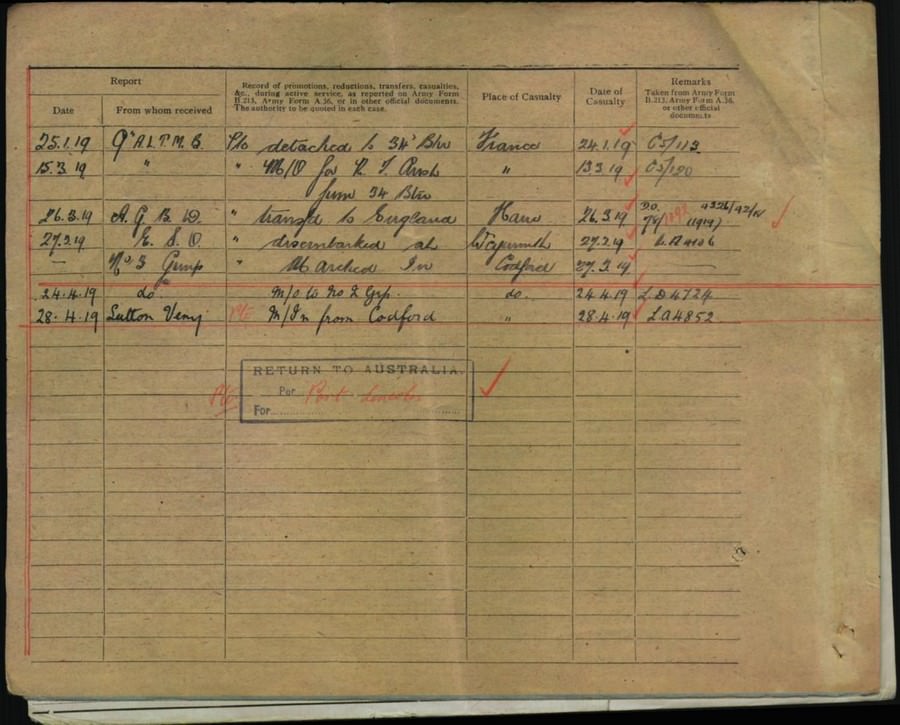
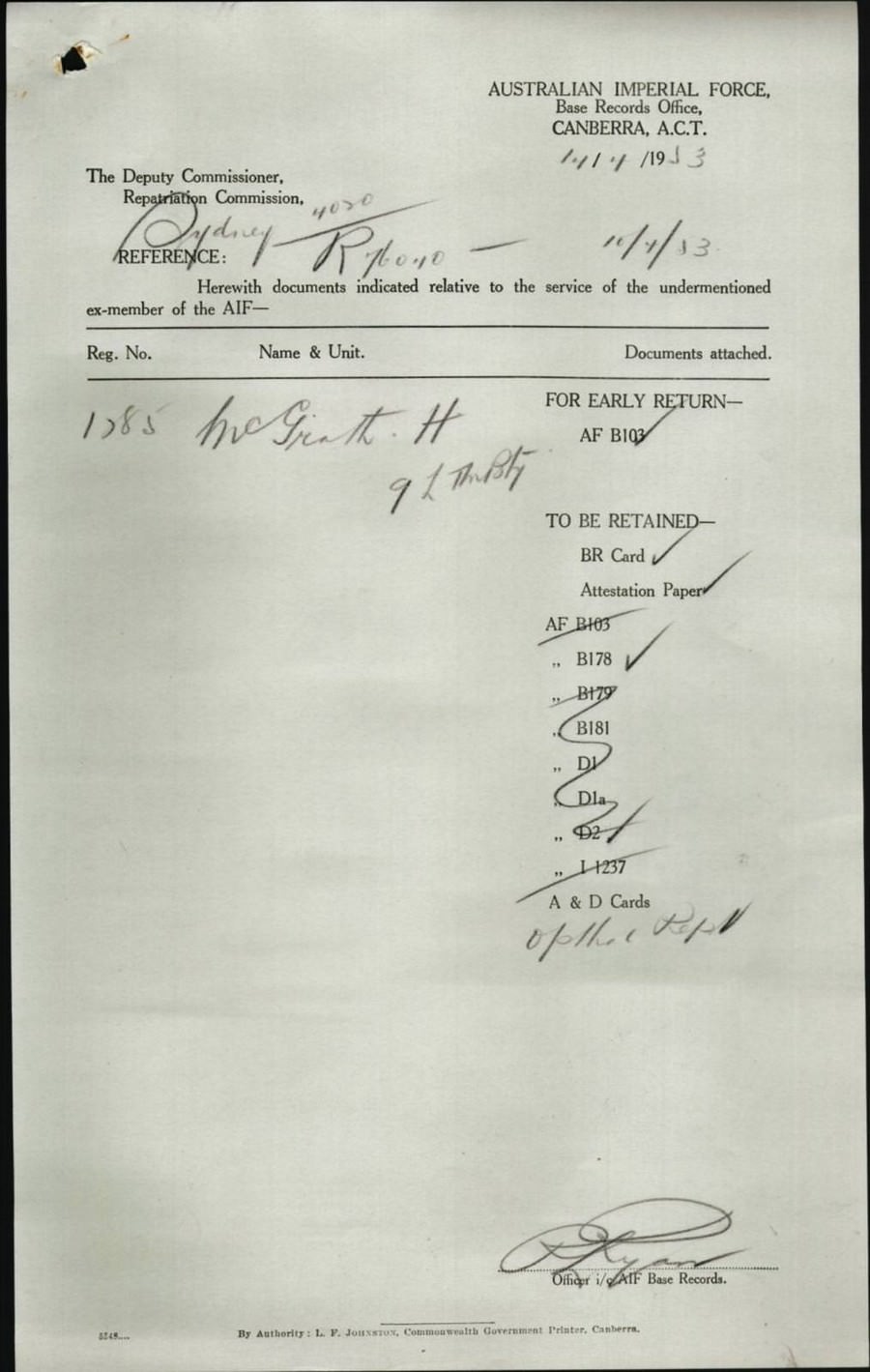

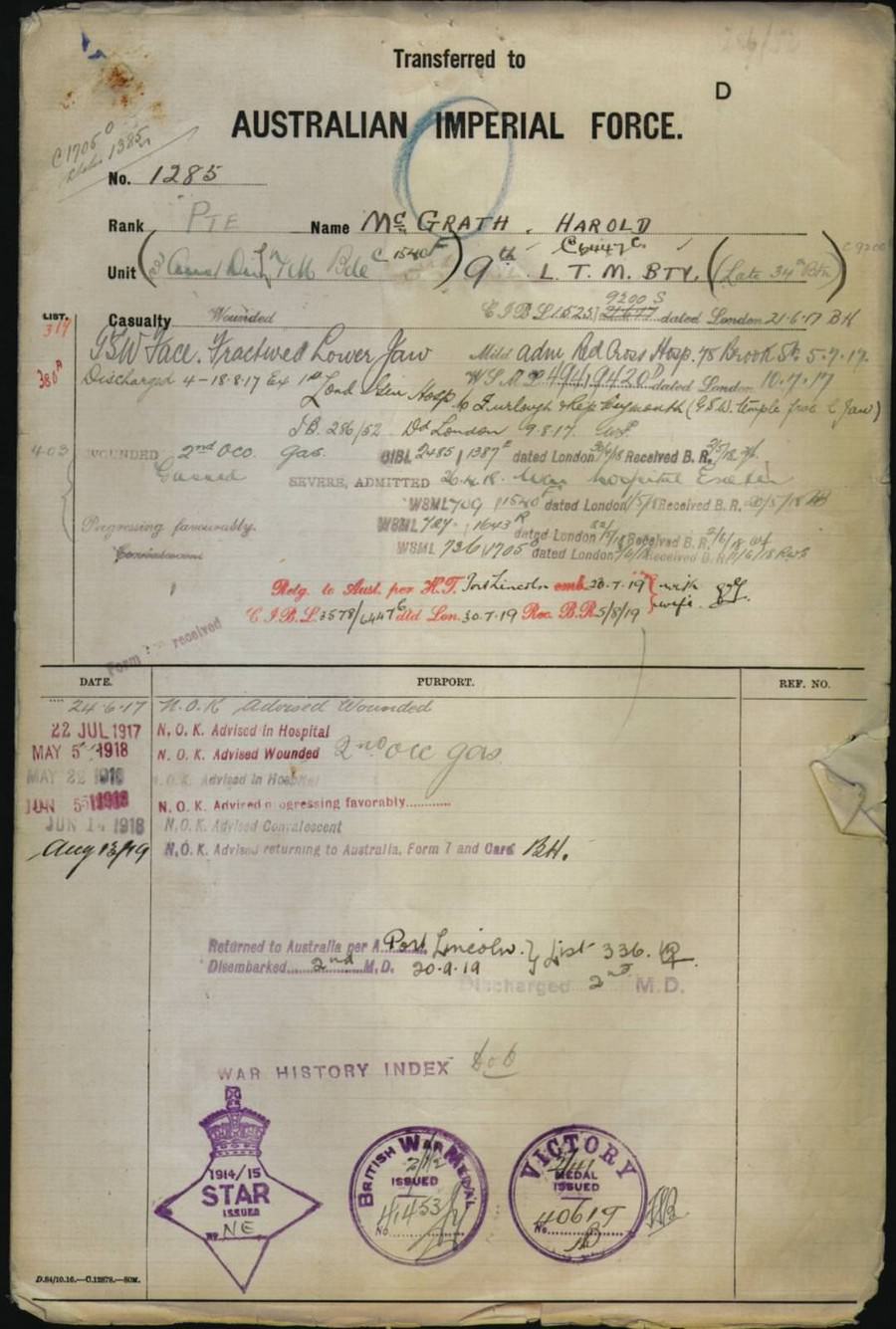 © Commonwealth of Australia (National Archives of Australia)
© Commonwealth of Australia (National Archives of Australia)
Under Construction; 13/10/2015.


